THE ADVENTURE BEGAN IN 1968 WITH AN AUTO SHOP TEACHER AT WESTERN HIGH SCHOOL IN ORANGE COUNTY, CALIFORNIA. THE TEACHER’S NAME WAS JOHN CESAREO, BUT HIS STUDENTS CALLED HIM “MR. C.” HE HAD A STRONG DESIRE TO GET HIS STUDENTS AWAY FROM STREET RACING, SO HE FOUNDED A PROGRAM SPONSORED BY FORD MOTOR COMPANY CALLED THE HIGH SCHOOL SCHOLARSHIP DRAGS (HSSD). THE RACES WERE HELD AT NEARBY ORANGE COUNTY INTERNATIONAL RACEWAY (OCIR). MR. C THOUGHT THAT SINCE OTHER HIGH SCHOOLS HAD FOOTBALL, BASKETBALL AND BASEBALL LEAGUES, WHY NOT A DRAG RACING LEAGUE. HE WAS ON TO SOMETHING, AND MANY SOCAL HIGH SCHOOLS PARTICIPATED IN THE HSSD.
“ IT HAD BEEN SITTING IN A CARPORT IN EL CAJON, CALIFORNIA, FOR 22 YEARS.MR. C BOUGHT THE CAR AND PROCEEDED TO DO A COMPLETE FRAME-OFF RESTORATION TO RETURN PIONEER I BACK TO ITS ORIGINAL RACING STATE, WITH A FEW UPGRADES. “
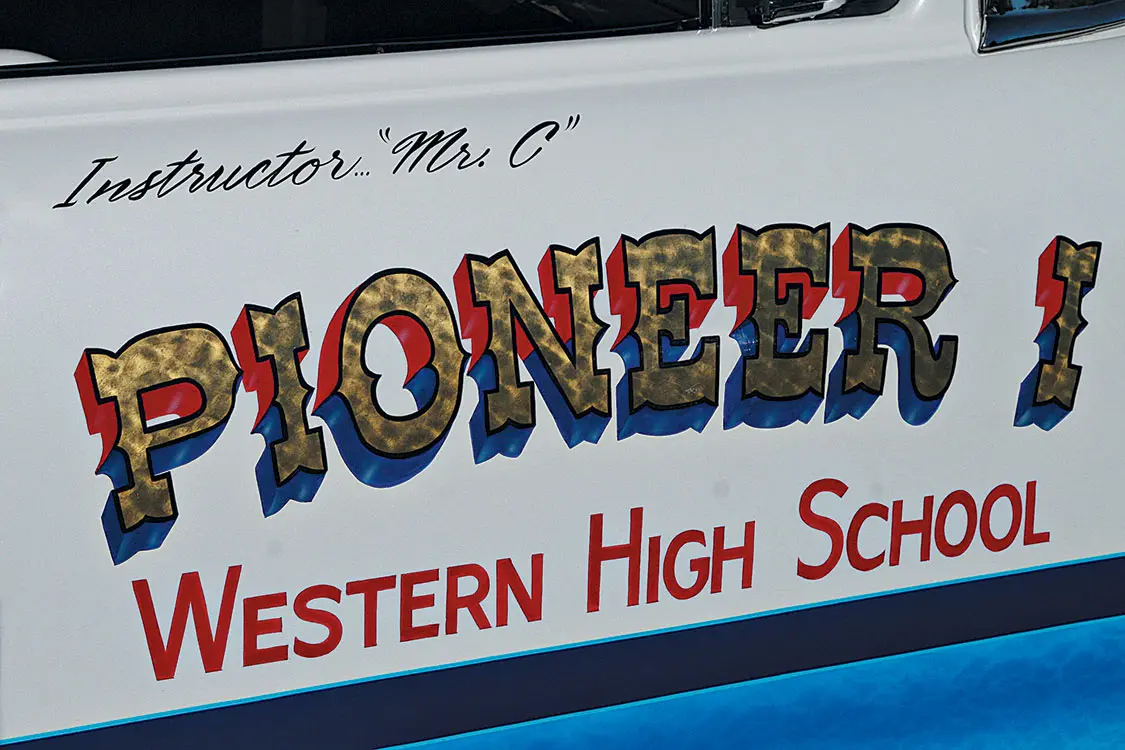
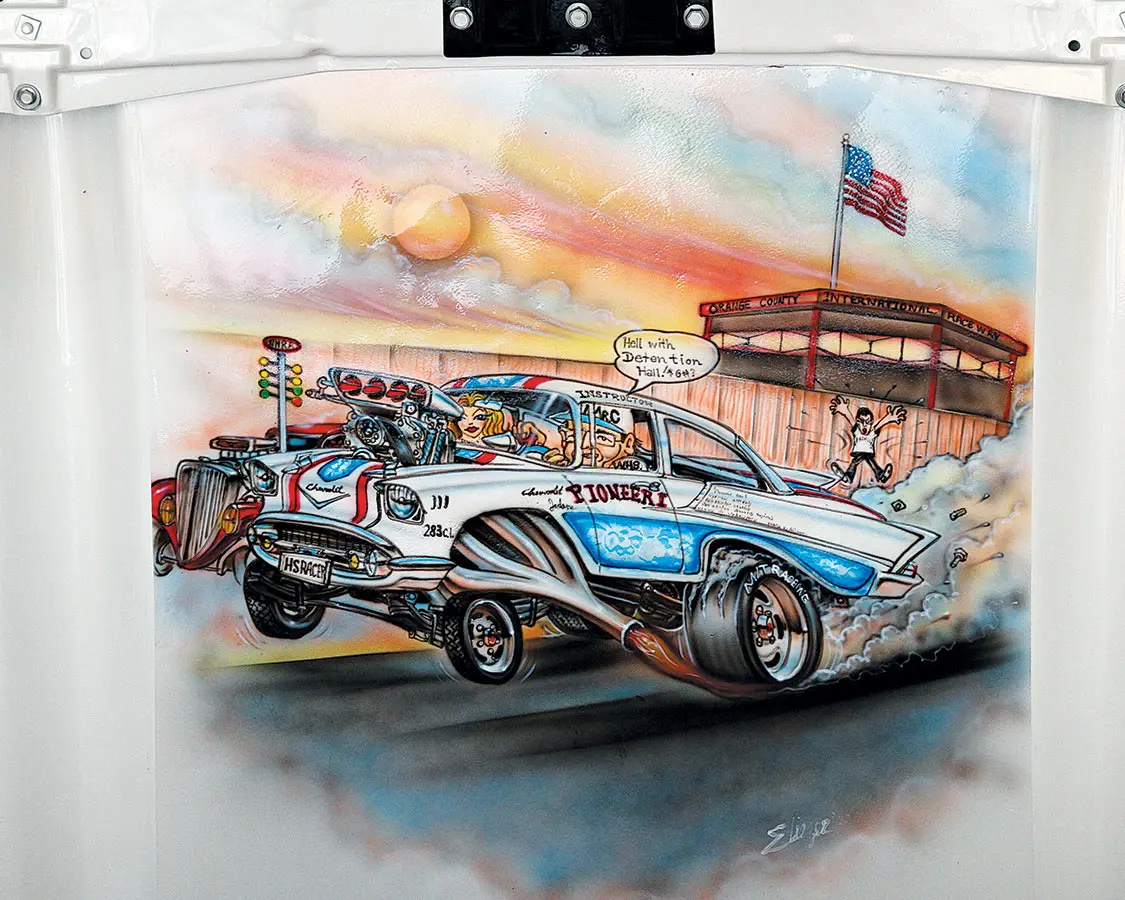
Mr. C’s classroom competition vehicle was a ’57 Chevy two-door 150 discovered in the weeds behind Jon’s Radiator Shop. It was purchased for $1, but neither the engine nor the drivetrain was included. There was one other drawback: The car couldn’t be moved until a new litter of puppies that had been born in the trunk could be relocated.
Once the project car finally found its way to Western High School’s auto shop, the students formed an auto club. The auto shop club members completely rebuilt the car with used parts scavenged from seven ’57 donor cars. The club raised money for the project by slurry-sealing driveways, painting house numbers on curbs and scrapping donated cars. The engine was basically a stock Chevy 283-ci V-8 that produced 270 hp with dual four barrels and a high-performance GM cam, a Chevy three-speed transmission and a 1957 Chevy rearend stuffed with 4.11 gears. Rear wheel hop was kept to a minimum with the installation of a pair of slapper traction bars.
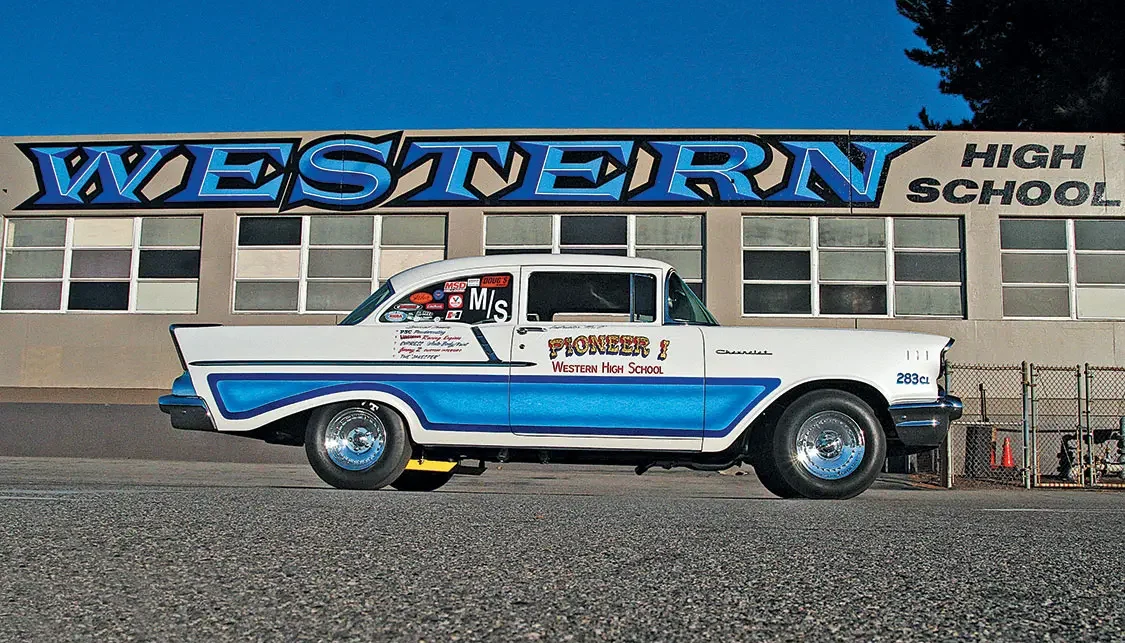
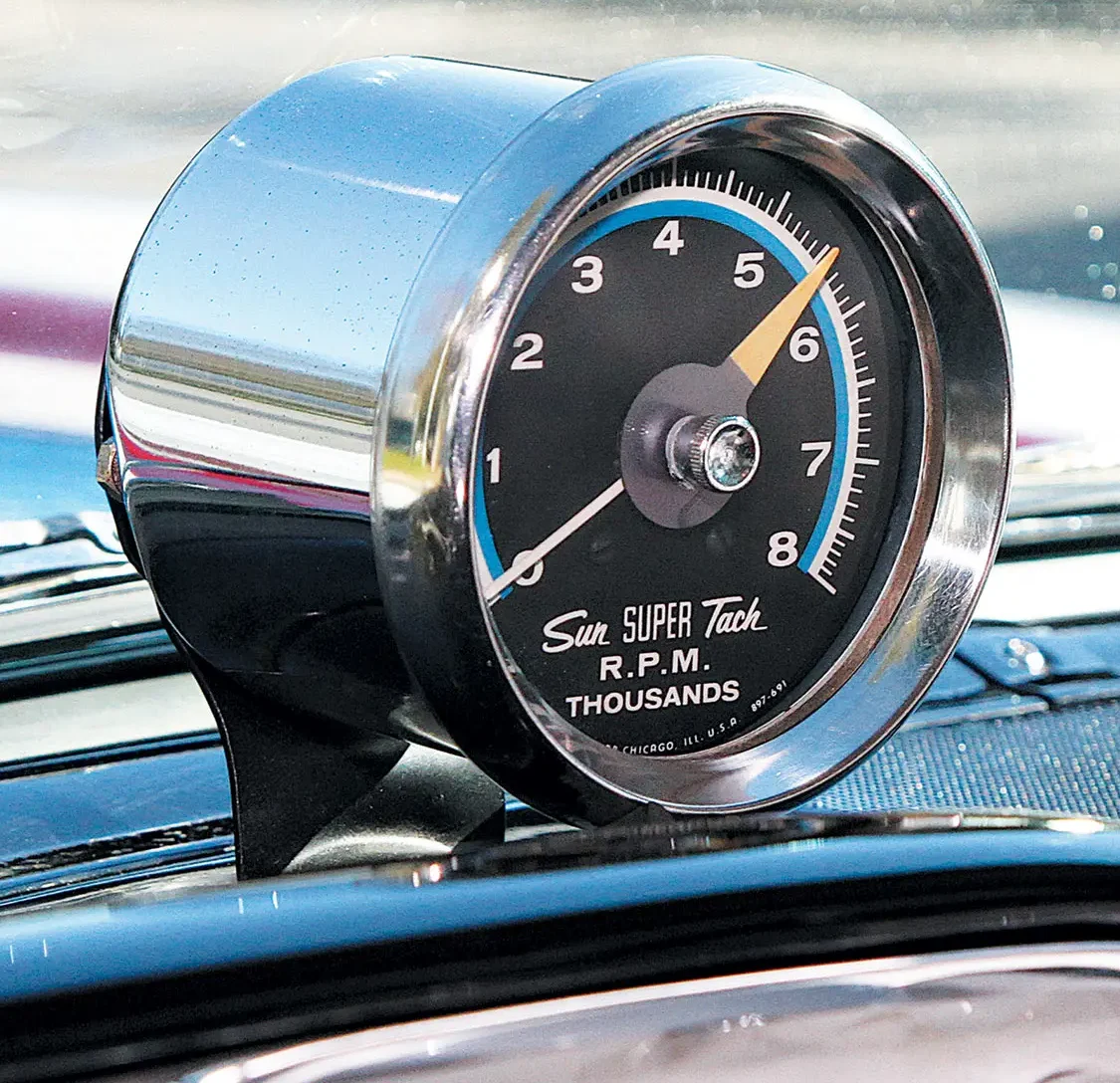
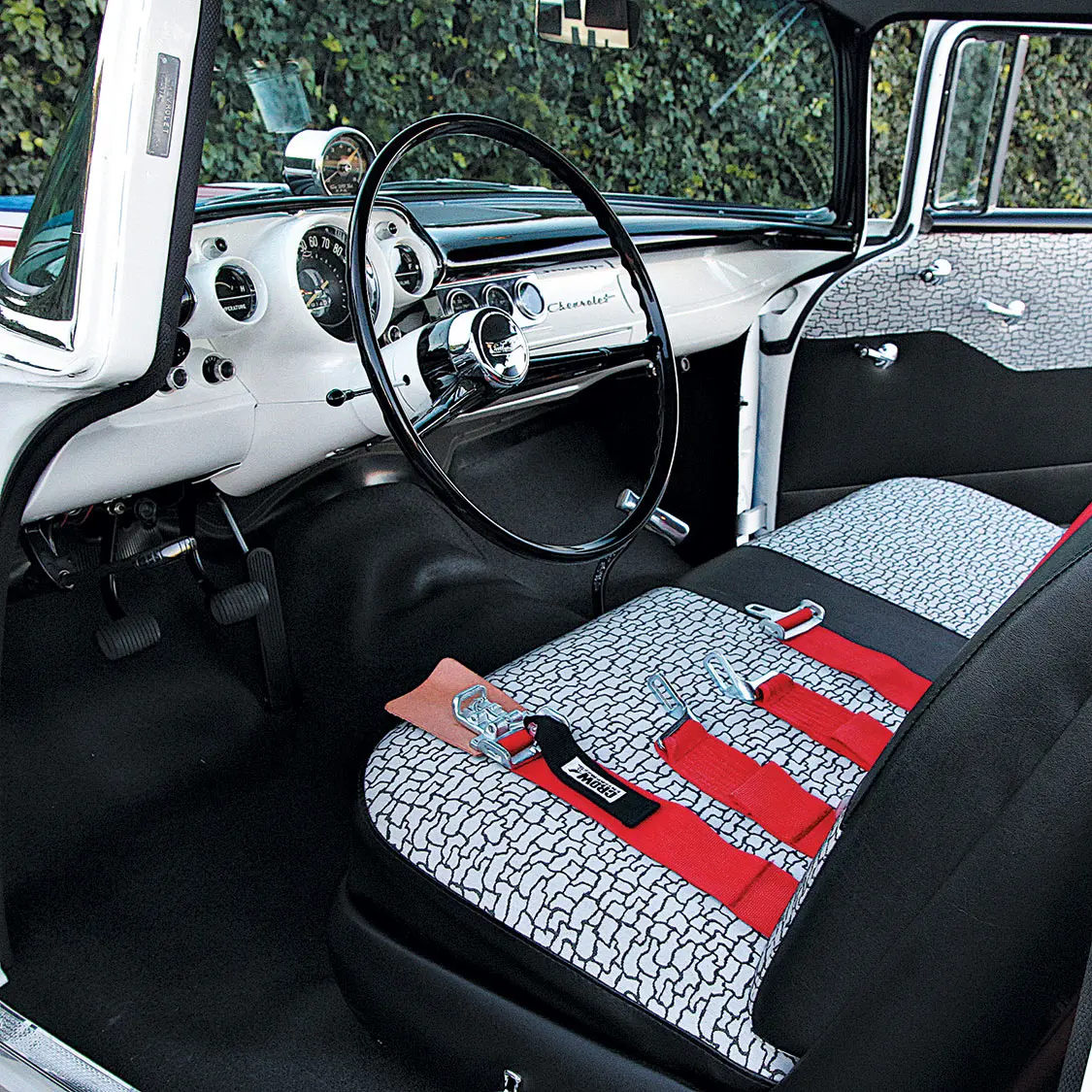
Western High School students are called Pioneers, hence the race car was christened Pioneer I, and in 1970, it competed with student driver Bill Allen at the helm in the first and second High School Scholarship Drags at OCIR. It also ran in the 1970 NHRA Winternationals at Pomona, California. On the track it wasn’t very competitive, but the finished quality and patriotic candy apple red, pearl white and blue did attract a lot of attention. The resulting media coverage caught the interest of other shop teachers around the country and the team received support from local businesses.
Once the school district realized the car was actually being raced, they killed the racing part of the program, but Bill Allen bought the car and continued to race it at NHRA events.
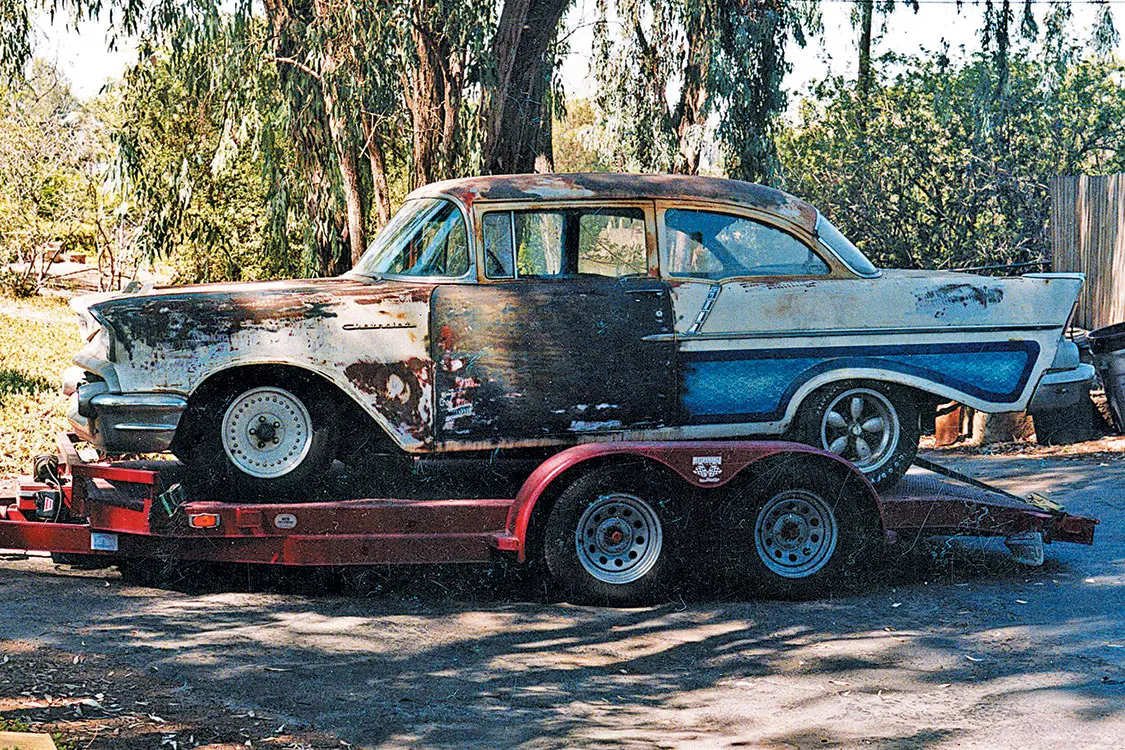
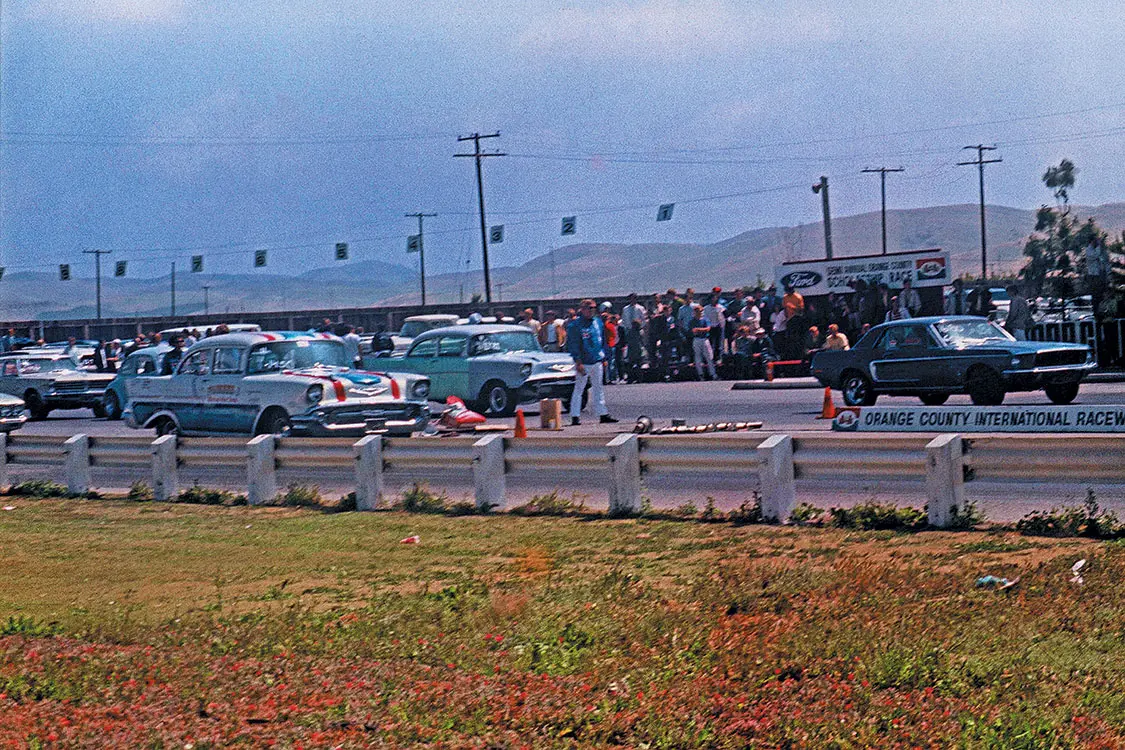
Jump to 2003 and the original ’57 Chevy project has found its way back to Mr. C. A nostalgia race car buff put him in touch with Pioneer I’s thencurrent owner. It’d been sitting in a carport in El Cajon, California, for 22 years. Mr. C bought the car and proceeded to do a complete frame-off restoration to return Pioneer I back to its original racing state, with a few upgrades. The Chevy engine was delivered to Vangordon Racing Engines in Upland, California, where Jim Vangordon disassembled, cleaned, machined, blueprinted, balanced and assembled the engine. After the body was removed from the frame, the frame was trailered to PSC Powdercoating in Chino, California, where it and assorted other parts received a variety of powder-coated colors and finishes. In fact, the owner of PSC Powdercoating was an ex-student of Mr. C’s. The ragged body was handed over to Tom Rodriguez at Cypress Auto Body in Cypress, California, where Tom and his crew did some minor body repair, and then primered and block sanded the surfaces straight and smooth. Tom applied 2002 Infinity White Pearl paint and buried it with multiple coats of clear.
“…MR. C HAS BEEN DISPLAYING IT AT CAR SHOWS AROUND CALIFORNIA WHERE IT’S RECEIVED NUMEROUS AWARDS…”
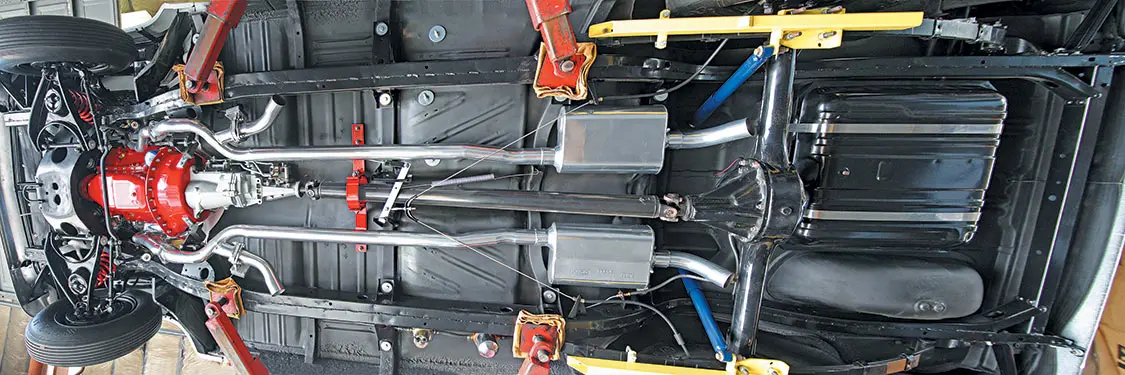
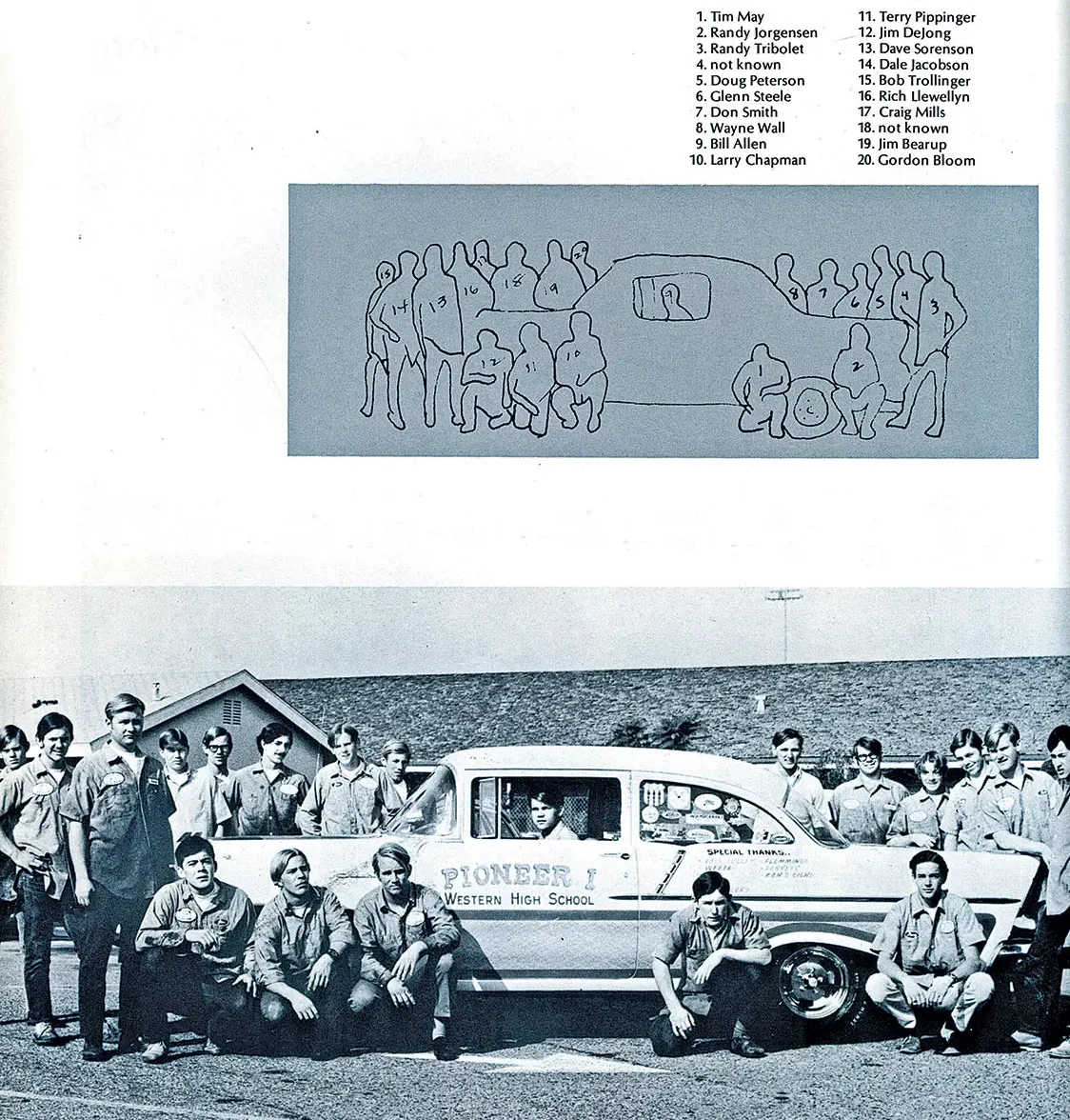
Then the ’57 Chevy’s pearl white blank canvas was given its original paint scheme by Danny D Valdez, famed painter and pinstriper from Baldwin Park, California. Danny D laid down the timeless light blue-laced graphic panel with royal blue borders on the front fenders, doors, rear quarter panels, hood, roof and trunk lid. Broad candy apple red stripes were painted on the hood, roof and trunk lid. Larry Fator at Quicksilver gave the ’57 its reclaimed identity by laying out and gold leafing “PIONEER I” before adding red and blue drop shadows. He also added “Special Thanks” panels under the rear side windows of the rear quarter panels. The ’57 150 interior was refurbished by Jimmy Z Custom Interiors in Cayucos, California. At Jimmy Z’s the interior was rebuilt and the original factory bench seat and door panels were recovered with OEM two-tone seat covers. A black headliner and OEM rubber mat floor covering were also added. A timeless chrome Sun super tach was mounted on the dash to indicate and synchronize precise engine rpms and shift points. A set of vintage Centerline polished aluminum wheels was fitted with Mickey Thompson M/T ET Drag bias ply slicks in the rear and Mickey Thompson ET Drag bias ply tires up front.
Ever since Pioneer I has been restored to its original trim, Mr. C has been displaying it at car shows around California where it’s received numerous awards and is always a big hit with show-goers.
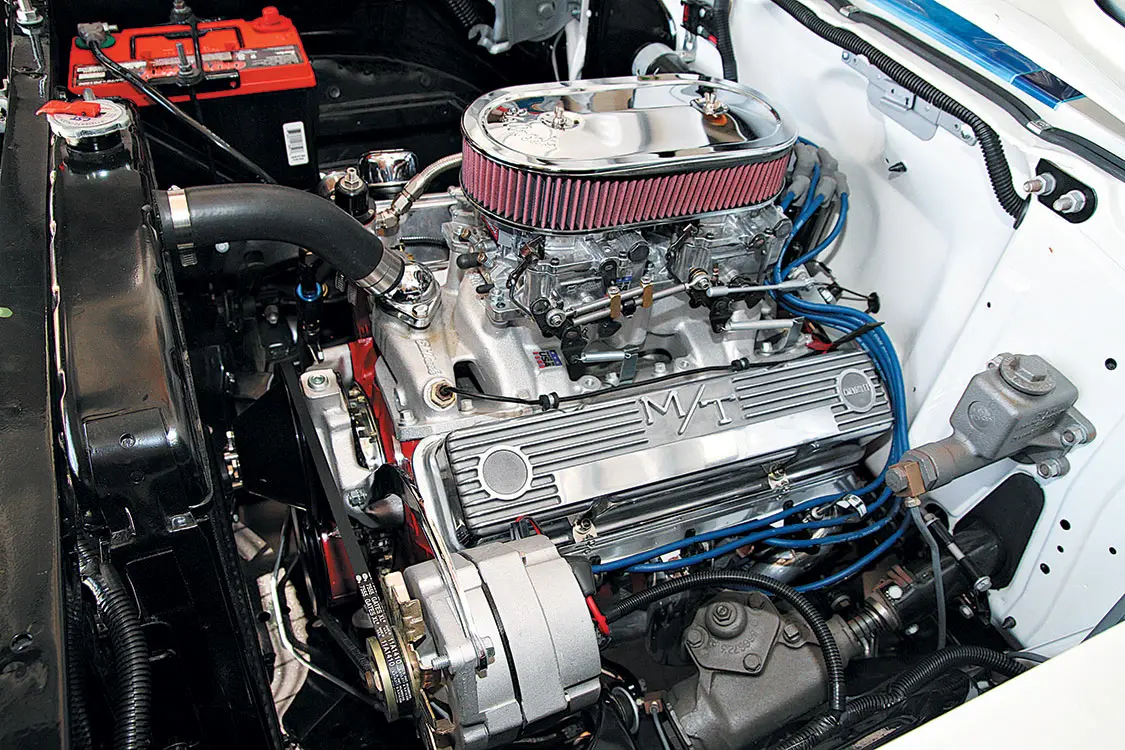
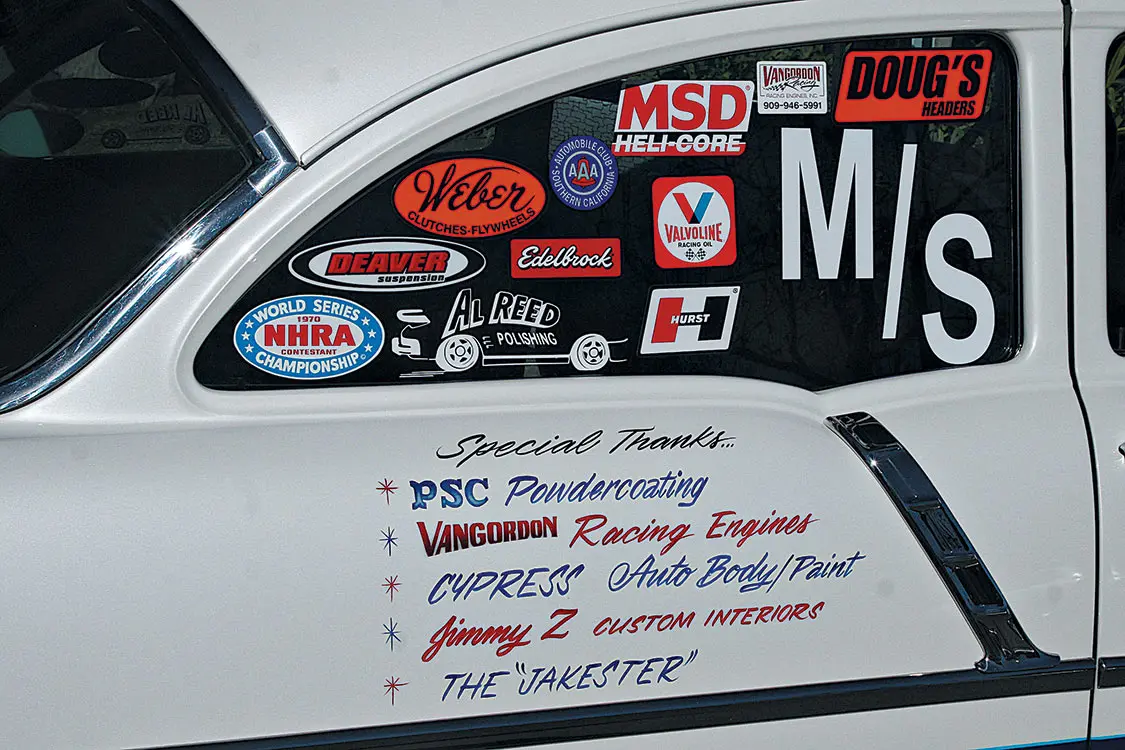
I’ve often made the joke that stepladders are like real ladders, they just love you half as much. Stepfathers are in fact sometimes much better than real fathers in that they give their all to love and guide their stepchildren. Michael Hardwick of Manito, Illinois, can vouch for that statement as his stepfather Dave Ward was his role model as he grew up. Dave had been in the United States Navy for 20 years and brought a wealth of knowledge and experience in every realm of his day-to-day life. One of the many things Dave loved was his classic truck.
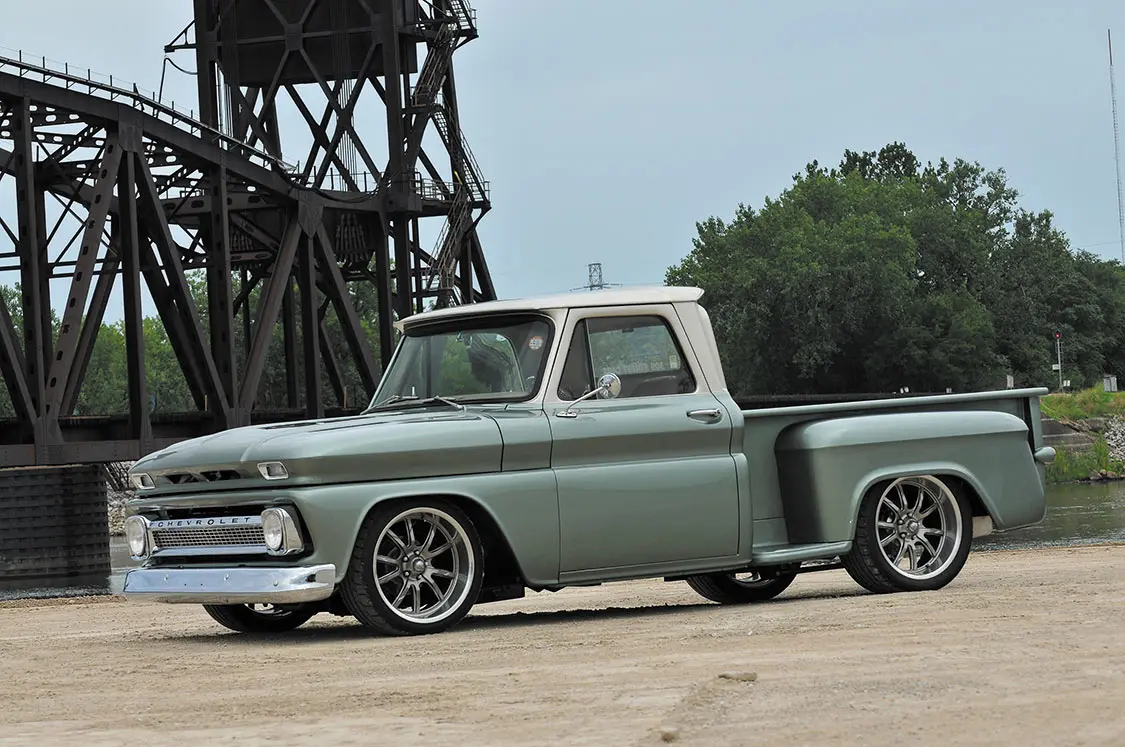
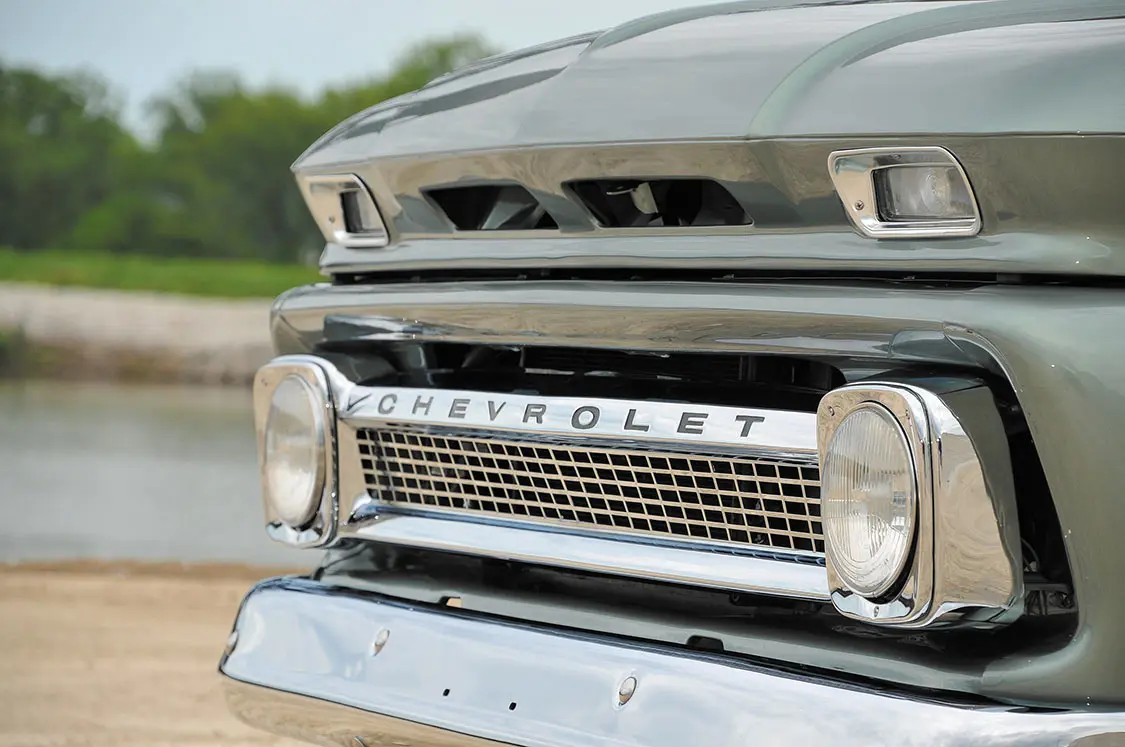
“He bought the ’66 back in the early 70’s,” Michael tells the 10 Builder’s Guide. “It was his living and his passion.”
Originally the ’66 was a service station truck but then became a delivery truck for his trucking company. The C10 even made some trips to Canada, so it was showing a bit of wear and tear. Dave had made a few attempts to restore the now classic but found that after a couple health issues it was best to pass it along to Michael for the restoring process. After a couple of conversations with his stepfather, Michael decided he was going to shorten the stock longbed and make it a stepside. After cutting and welding, Michael found the frame was in bad shape, so instead of doing extensive repair work, he went to see the guys at the Roadster Shop in Northern Illinois.
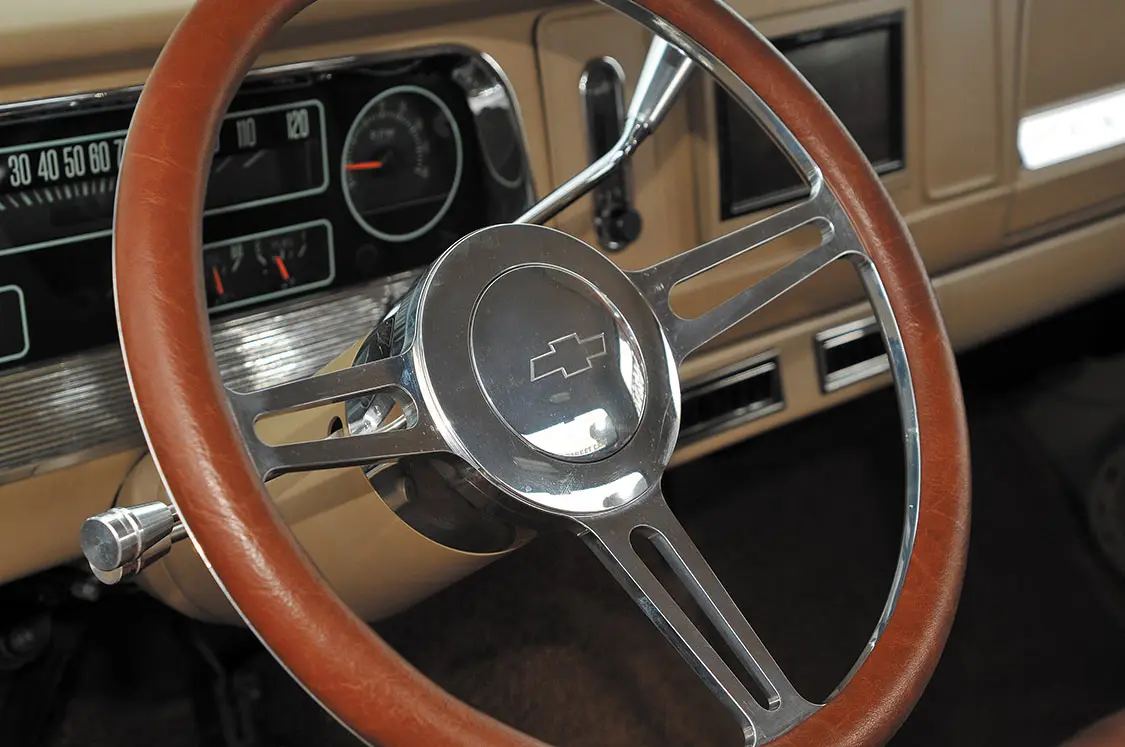
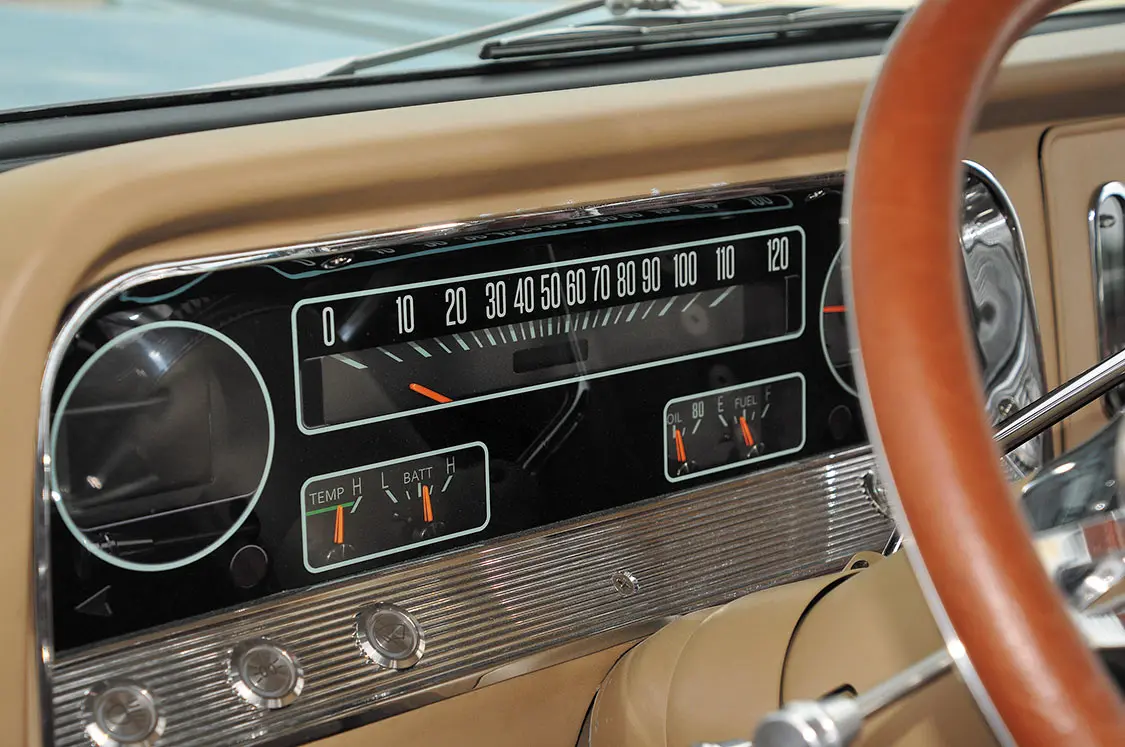
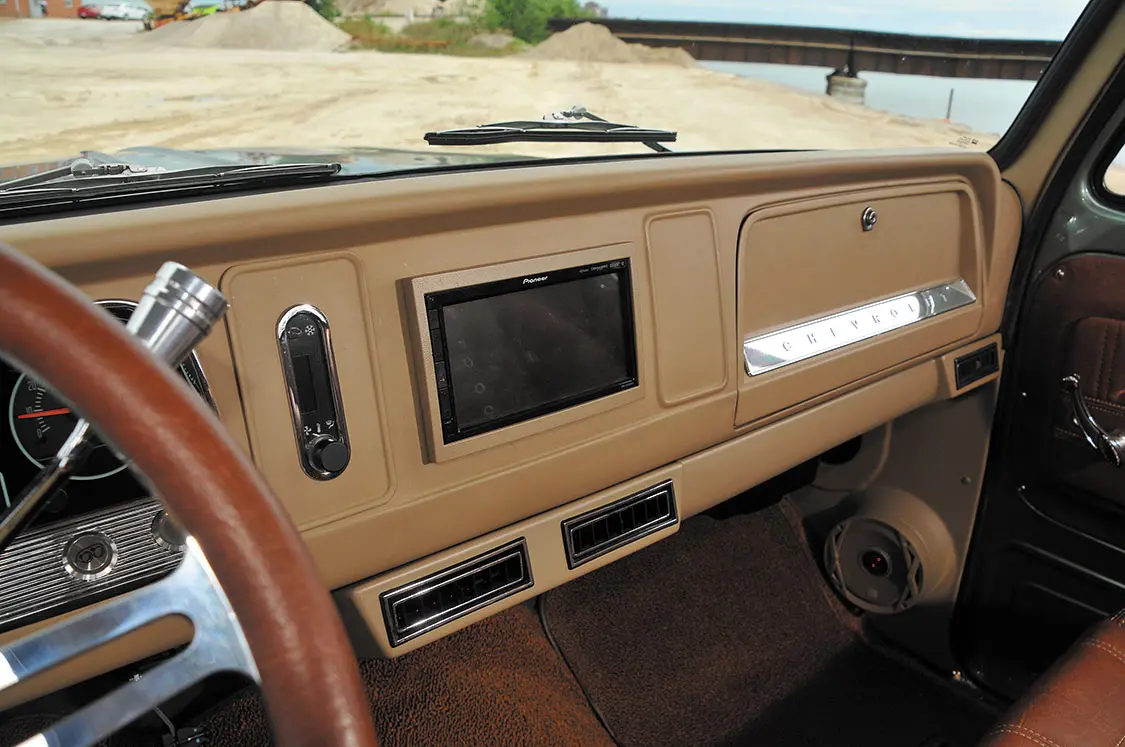
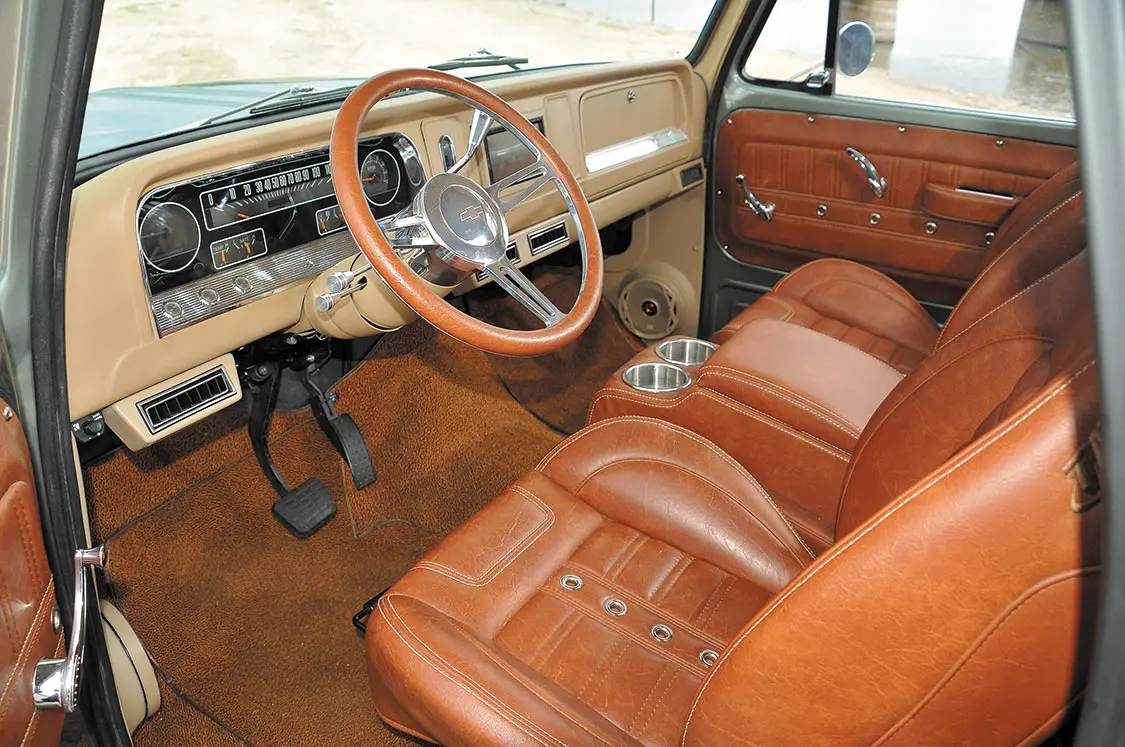
They showed Michael the process and some of the builds they had done with their chassis, and he decided at that time it was the much better route to buy the complete chassis. Although Michael still had to cut about 12 inches out of the frame just behind the cab, it worked out brilliantly. With the bodywork coming along, Michael wanted to add some immediate giddy-up into the Chevrolet, so he found a 2005 Chevy Van and pulled the motor and transmission. His two sons, Michael Jr. and Matthew, assisted in the process of rebuilding and then decided what other modifications to do. His younger son had the LSA Supercharger from a project he had been working on and decided to add it to the C10. Automotive Machine in Pekin did the machine work to prep the block and crank. The transmission was built by Ron Brooks of Brooks Automotive in Tremont, Illinois.
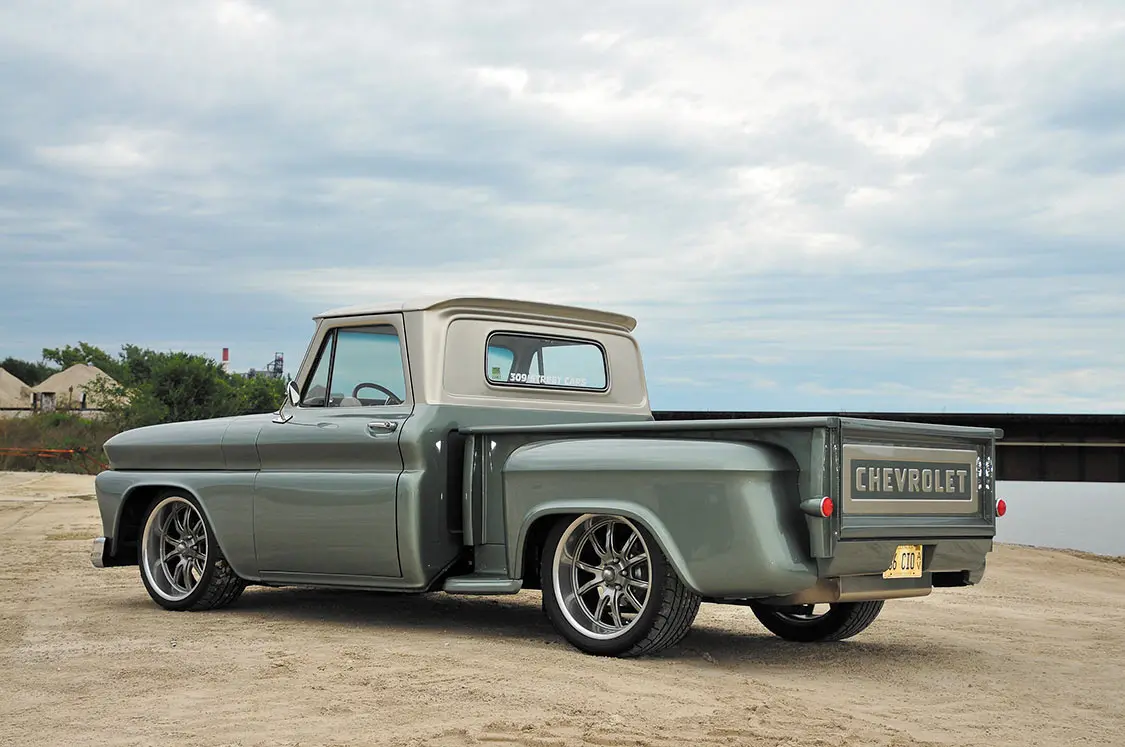
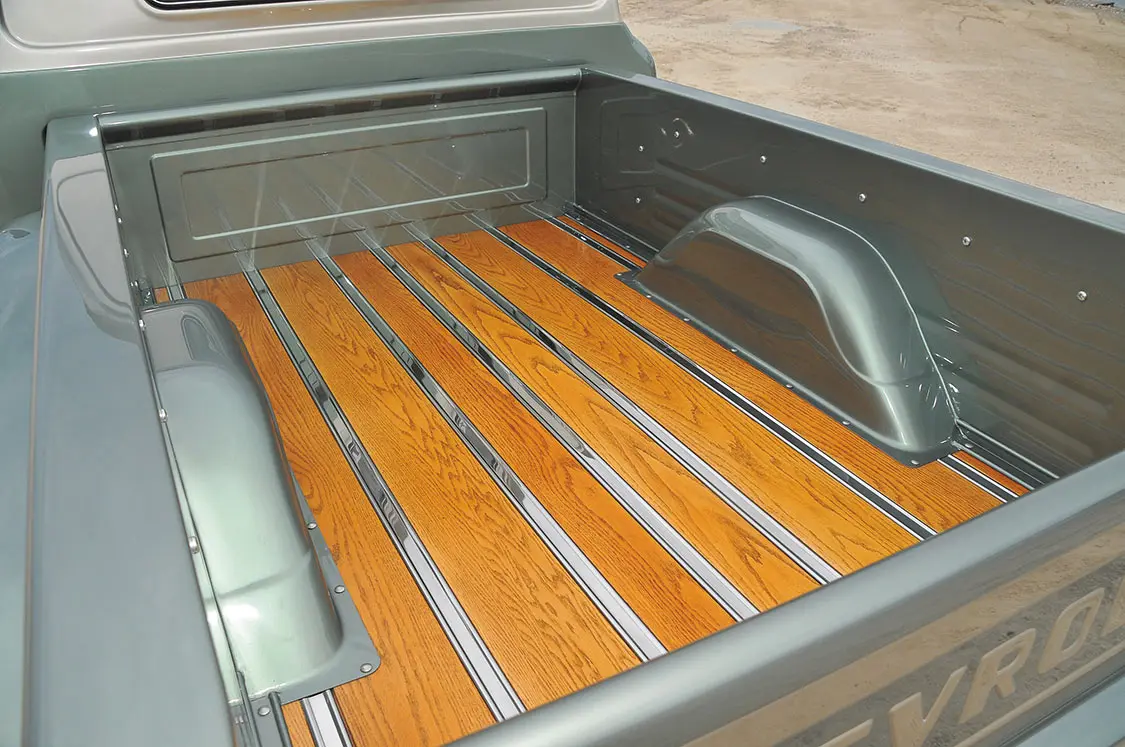
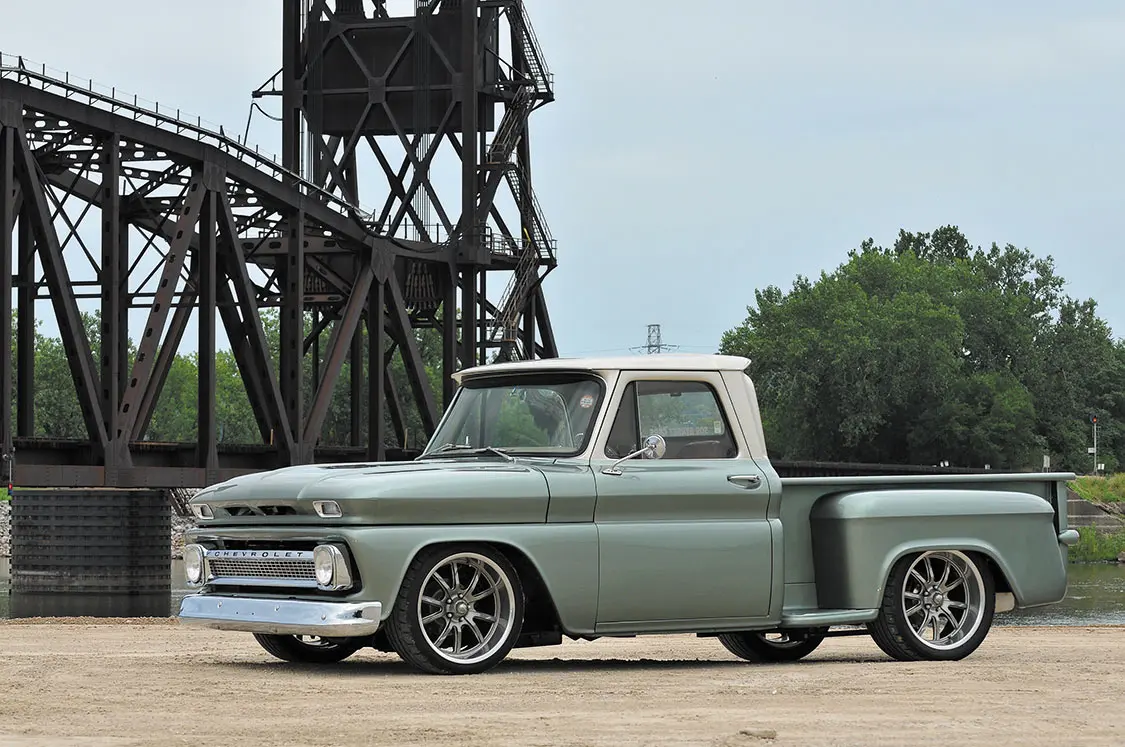
With the motor now prepared for the Illinois roads, Michael turned his attention to the bed of the truck. He bought a complete bed from LMC and had it welded instead of the normal bolt-on process. He added a rollpan and 1937 Ford taillights. Michael had mocked up the hidden latches and the bed floor, and Joseph Thomas did all the masterful welding. Inner wheel tubs were installed, and he filled in the stake pockets and bed rails for Michael. Michael was able to find some red oak to mount into the bed.
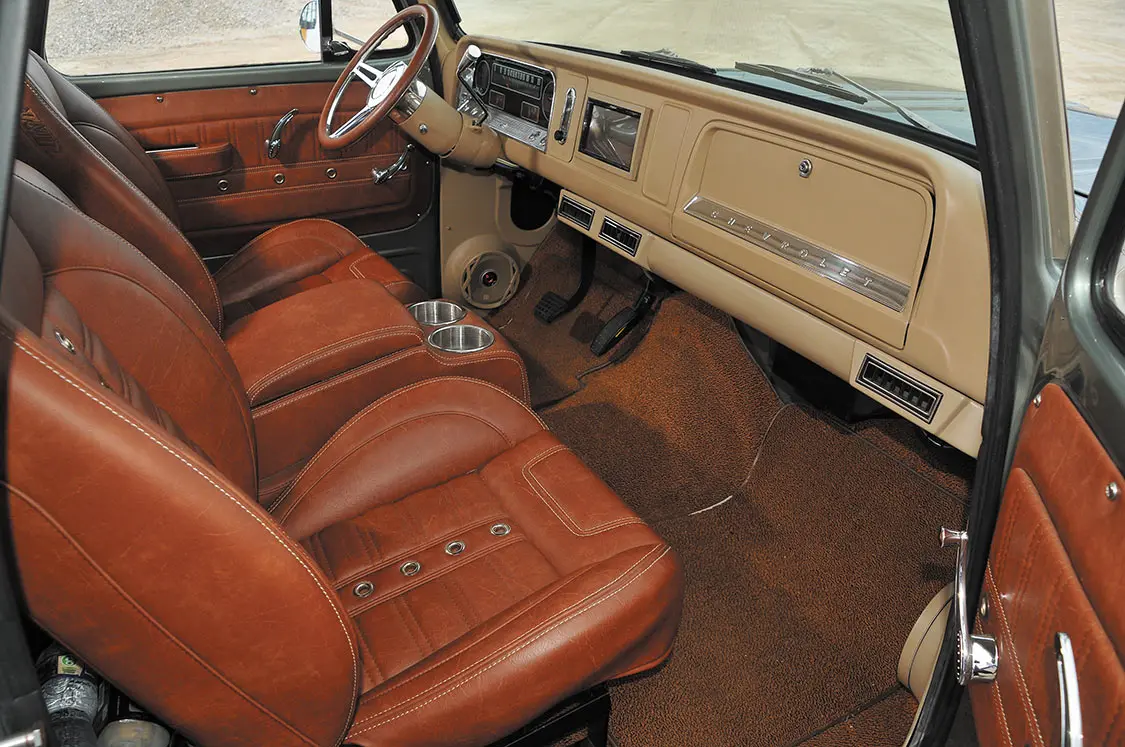
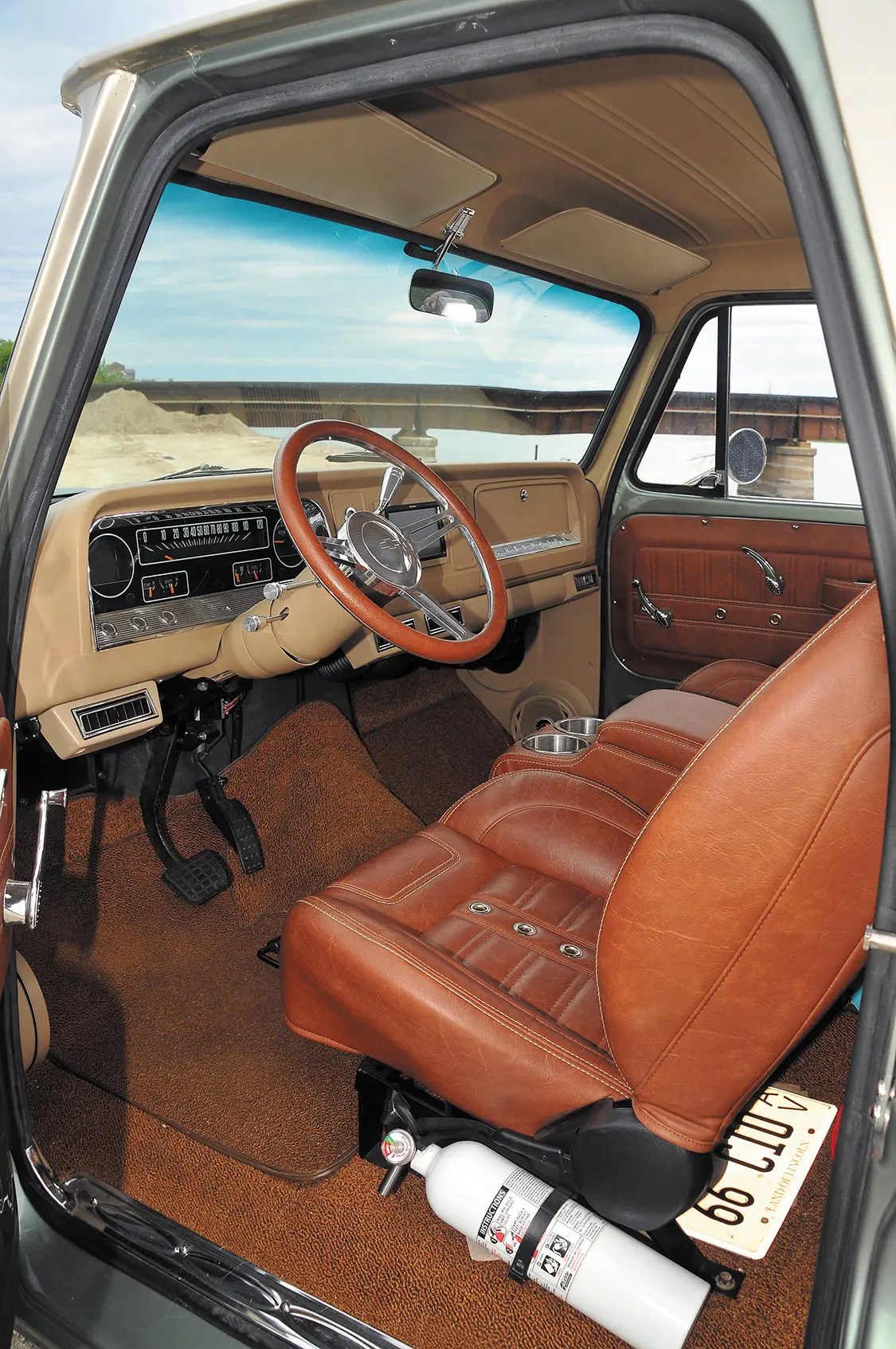
During this process, the most unfortunate thing happened: Michael’s stepfather passed away. Michael went to his mother, Patricia, and they discussed how he would have liked to see the truck finished. One of the things that stood out was the paint. Although the original color was fire engine red, Michael’s mom assured him that he would have loved a complete color change. The Mica Green with the Champagne-colored top seemed to give the classic Chevy just a bit more nostalgia.
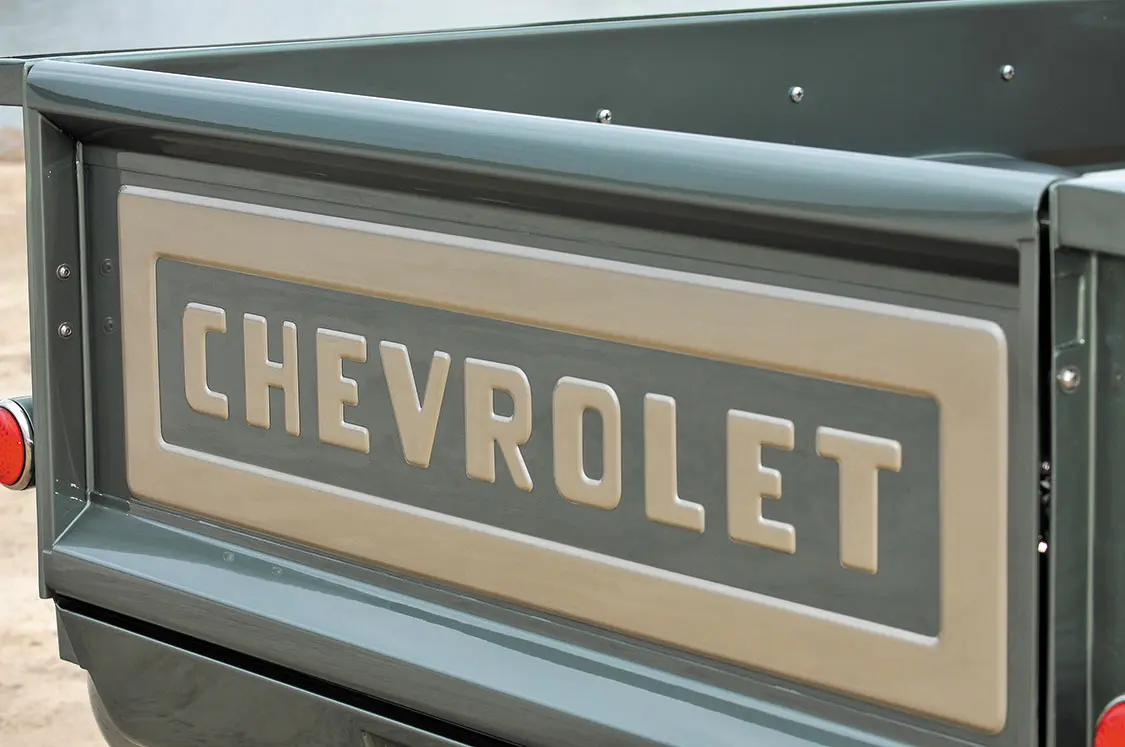
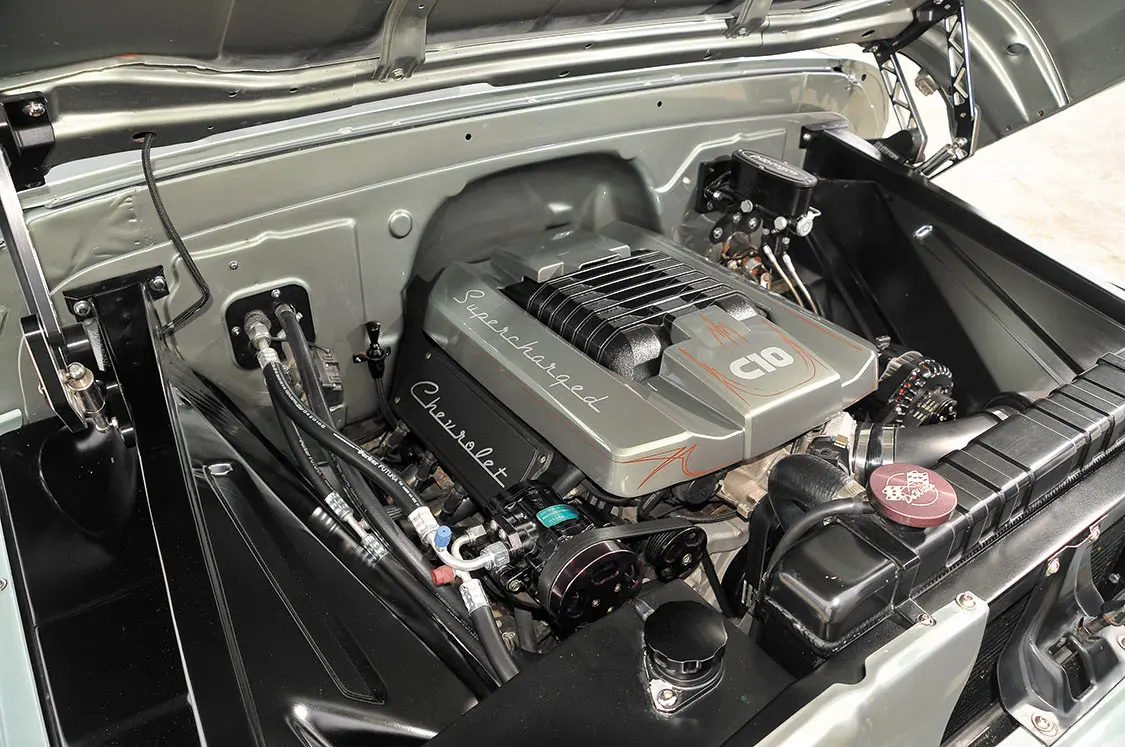
Michael and his two sons tackled the entire interior, including all the sounds by cutting the dash for a Pioneer head unit and A/C controls and custom kick panels for the JBL speakers. Behind the seat is a 12-inch Kicker subwoofer with an amplifier. The seats, console, and door panels are all from TMI Interior. The paint is sandstone with a soft touch finish. In front of the newly placed Billet Specialties steering wheel are Dakota Digital RTX gauges. The Vintage Air unit and the iDidIt steering column make the most out of the small interior. Power windows and locks were added for comfort and ease.
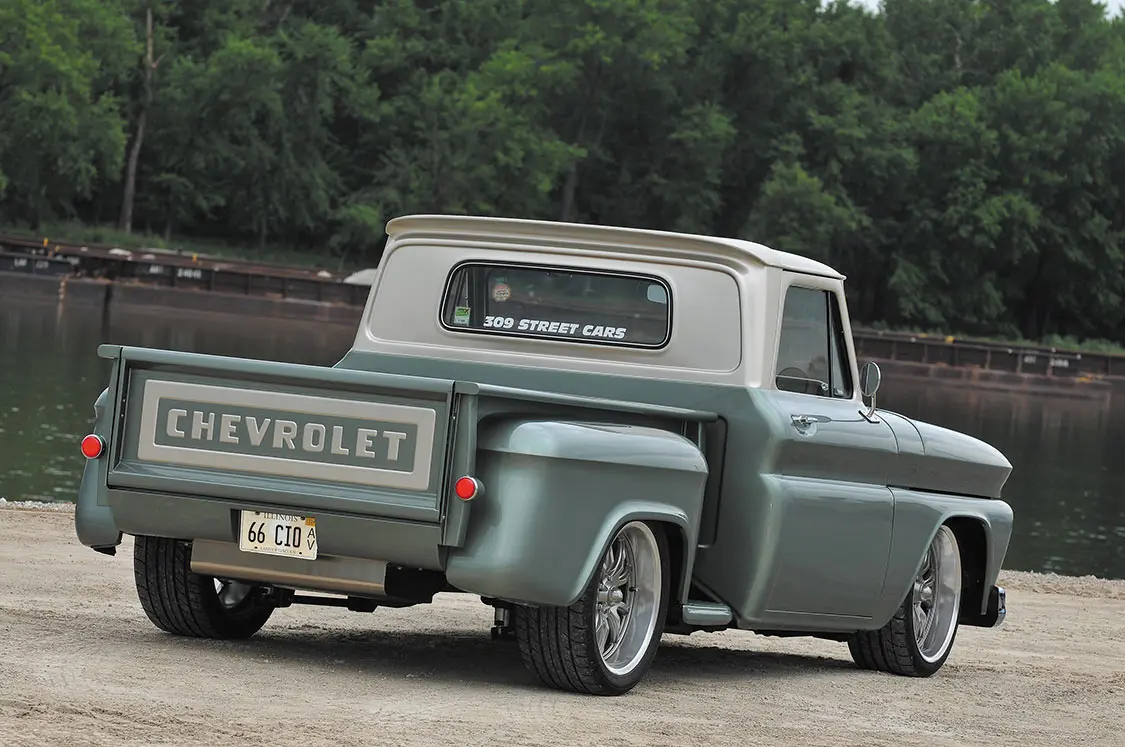
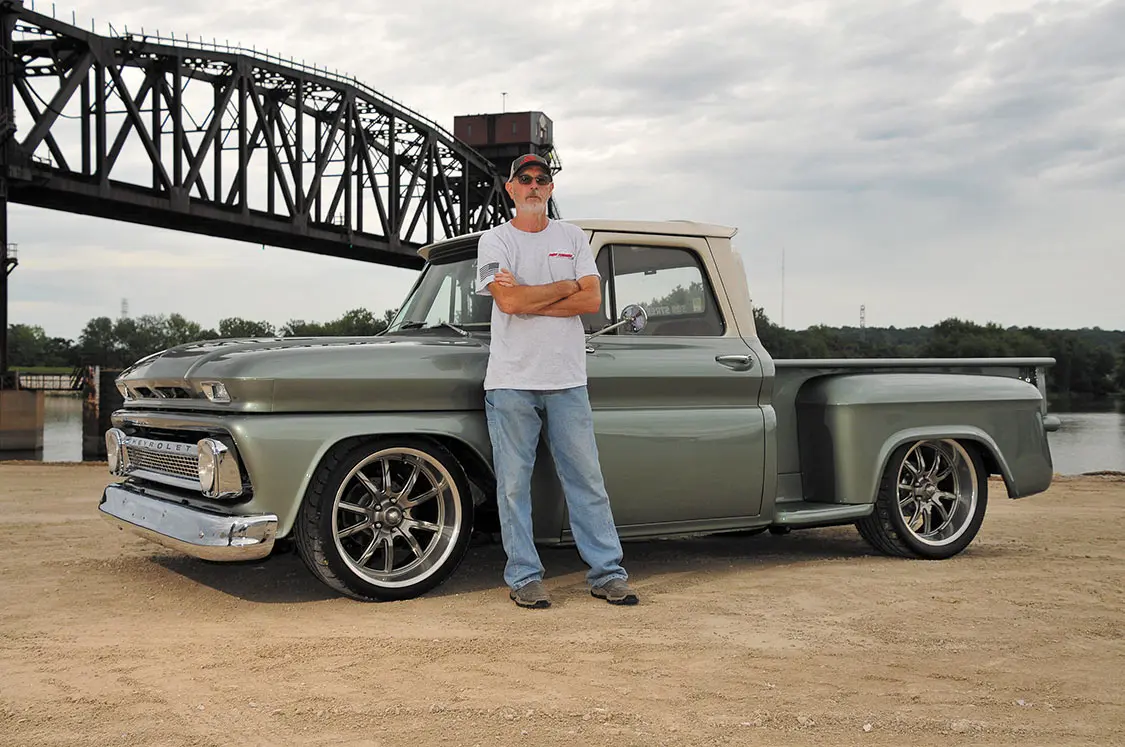
Michael first wishes to thank his stepfather Dave and his mother Patricia for trusting him with something of this magnitude that was such a part of his life. He wishes to thank his sons Michael Jr. and Matthew for all their time, dedication, and knowledge. A special thanks to his wife Connie for not complaining about how much time and money was going into this passion project. Thanks to Joe Thomas at Pekin Alignment and Autobody, Ryan Skaggs at Ryan’s Muffler in Peoria, Illinois, Matt Bell at Redline Automotive in Bloomington, Craig at Brian Tooley’s Racing for the engine parts, Casey Wegner from Wegner Motorsports, Manney and Calvin at Automotive Machine in Pekin and Jacob Porter at TMI Interiors.
OWNER
CHASSIS
DRIVETRAIN
BODY/PAINT
INTERIOR
WHEELS & TIRES:
As interesting as the trucks themselves, the stories connected with the build often reveal a fascinating, behind-the-scenes view of the process. Sometimes the job is quick and easy, other times the results are unexpected. From Sanderson, Florida, Marshall Rowen shared the unique back story of his trophy-winning 1972 Chevy C10, an amazing case of a decades-long dream finally coming true.
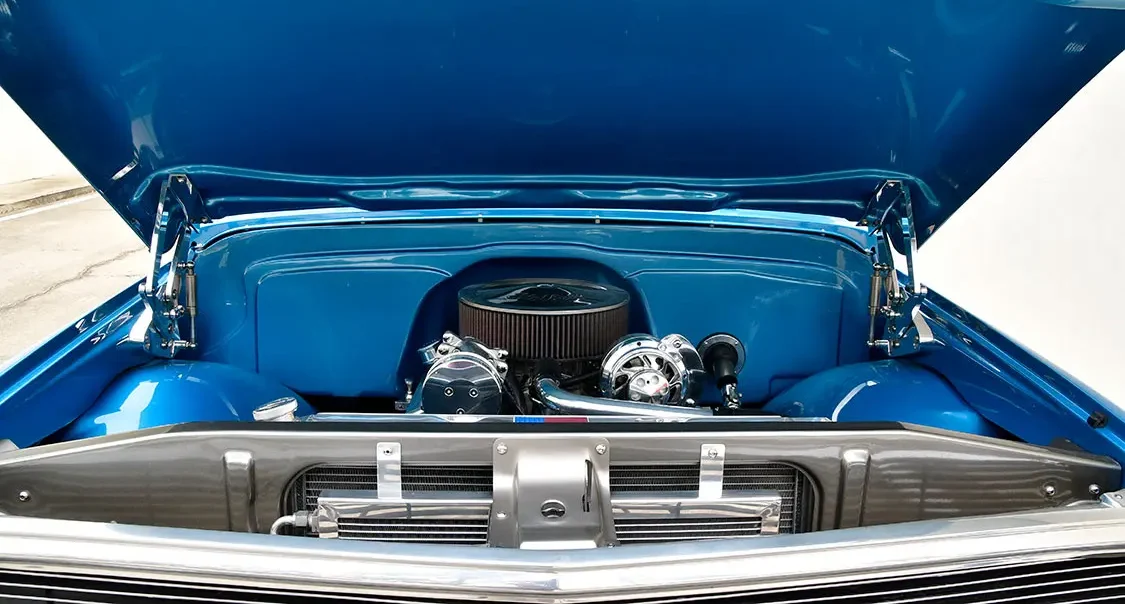
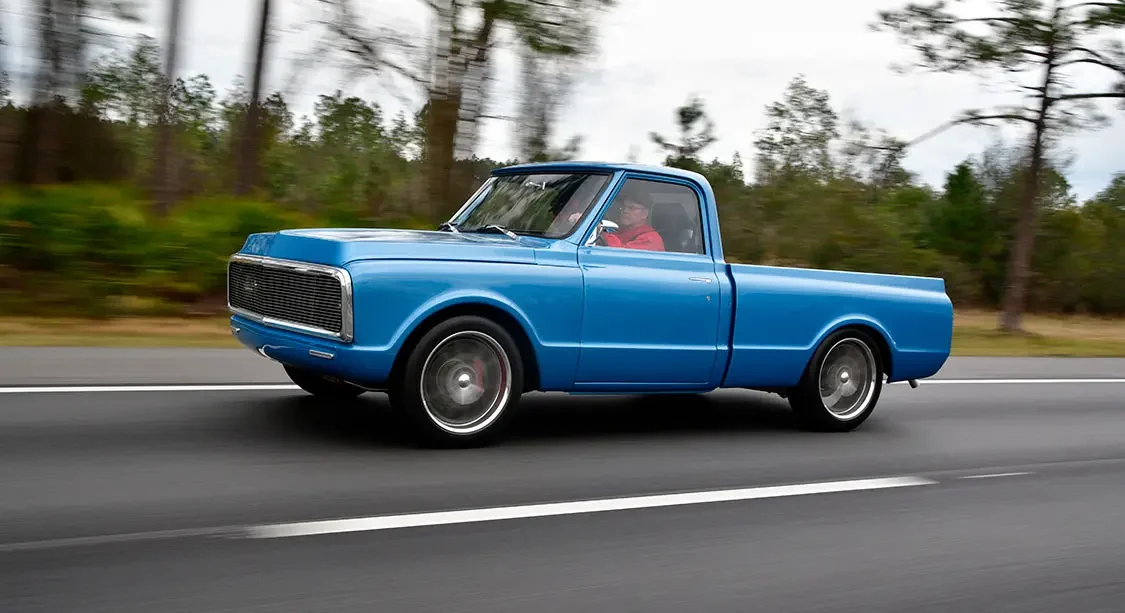
Recently retired, Marshall’s former career revolved around his home maintenance business, but he has been an automotive enthusiast since he built his first dune buggy at age 12! With his enthusiast addiction ignited at an early age, he progressed to modified race cars, automotive restoration, and lately, trucks with each getting better than the last. How this ’72 arrived however, is a story from 40 years in the past. Continuing to recall events from his youth, Marshall, now a full two years older at the tender age of 14, saw a customized 1967 Chevy II that he believed had to be the most beautiful vehicle he had ever seen. He decided that one day he would have something just like it.
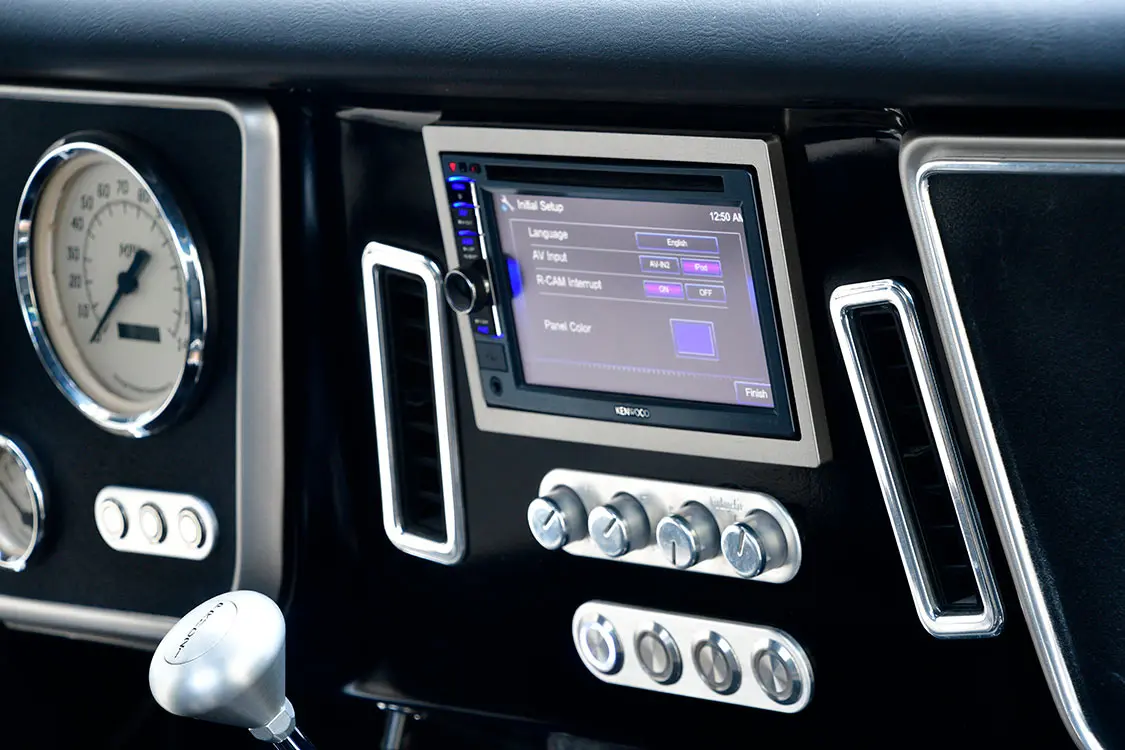
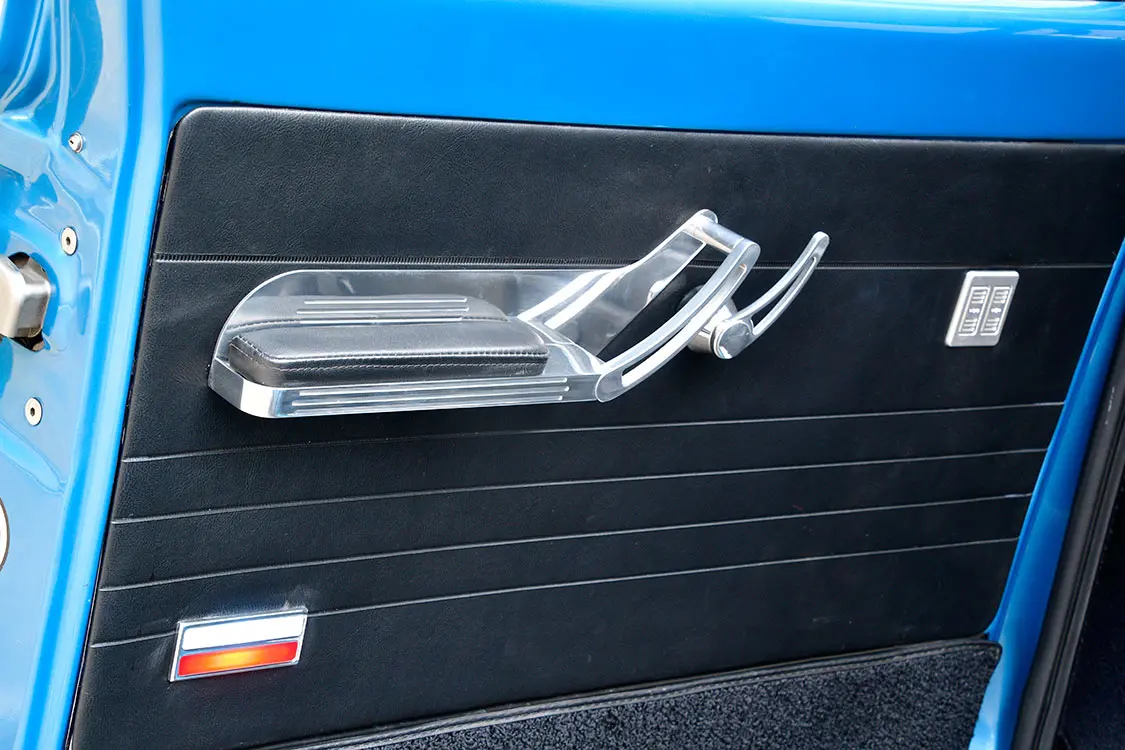
A lengthy four decades later, the dream finally began to take shape although it happened almost by accident. The ’72 Chevy C10 in the photos was initially purchased by his son, Blake. It was in bad shape, but Chevrolet got it right when they designed this era of truck, and its popularity has been on a continuous rise for decades. They are becoming increasingly rare and are sought after when restored. Unfortunately, time, money, and motivation took their toll and Blake ran out of all three. That’s when Marshall stepped in, deciding to fix it up just enough to get it sold.
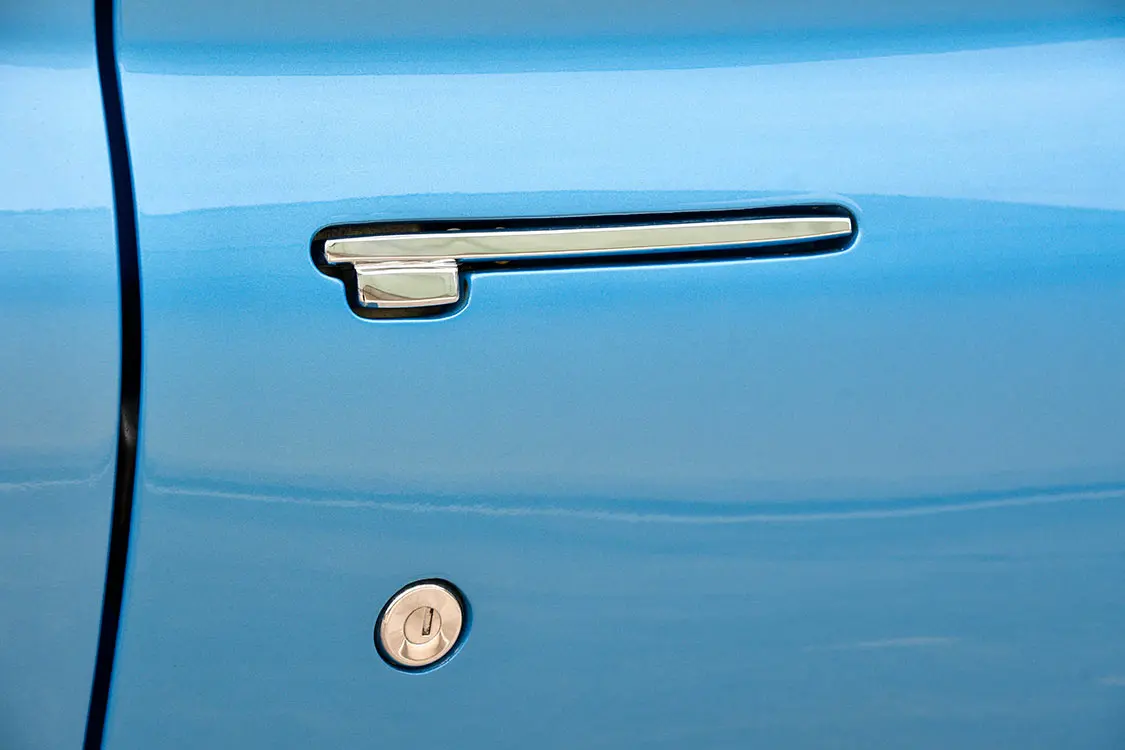
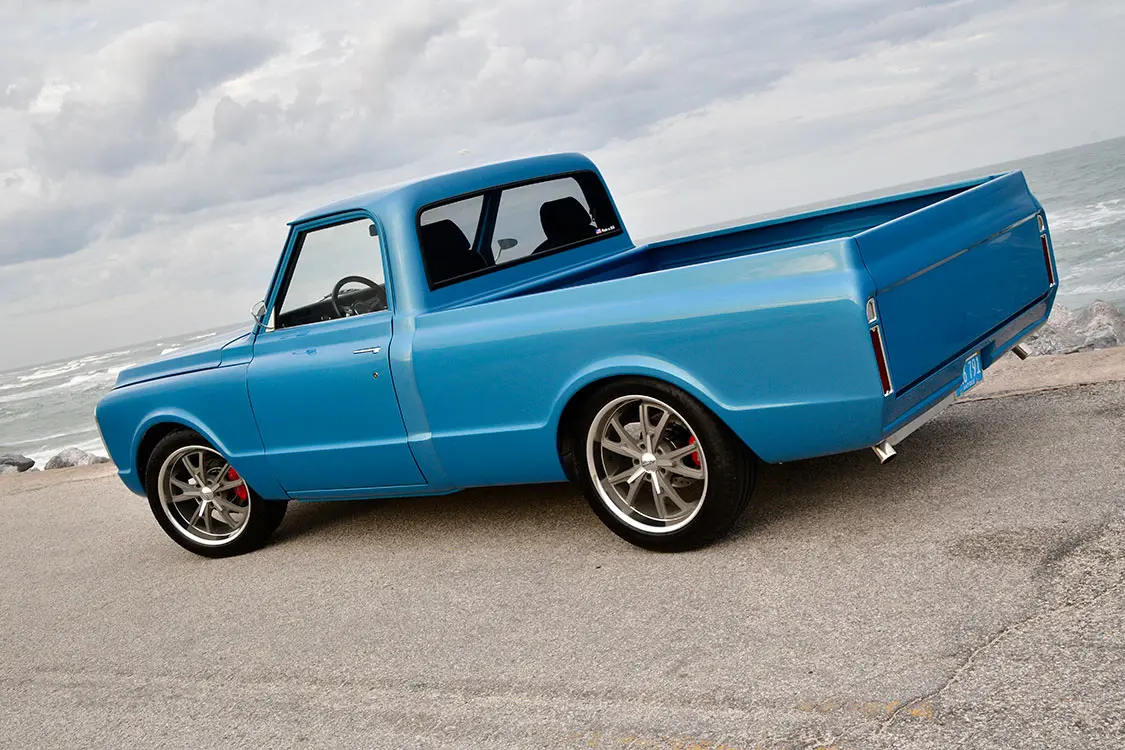
Here’s the turning point in the story. Somewhere during the rejuvenation process, an unusual item piqued Marshall’s interest. The truck badly needed replacement door handles. When he discovered the popular aftermarket Kindig-It Design “Square Style” versions, they looked so good when installed that he began to rethink his plan. In fact, the handles turned out to be the catalyst that prompted an entire frame-off restoration!
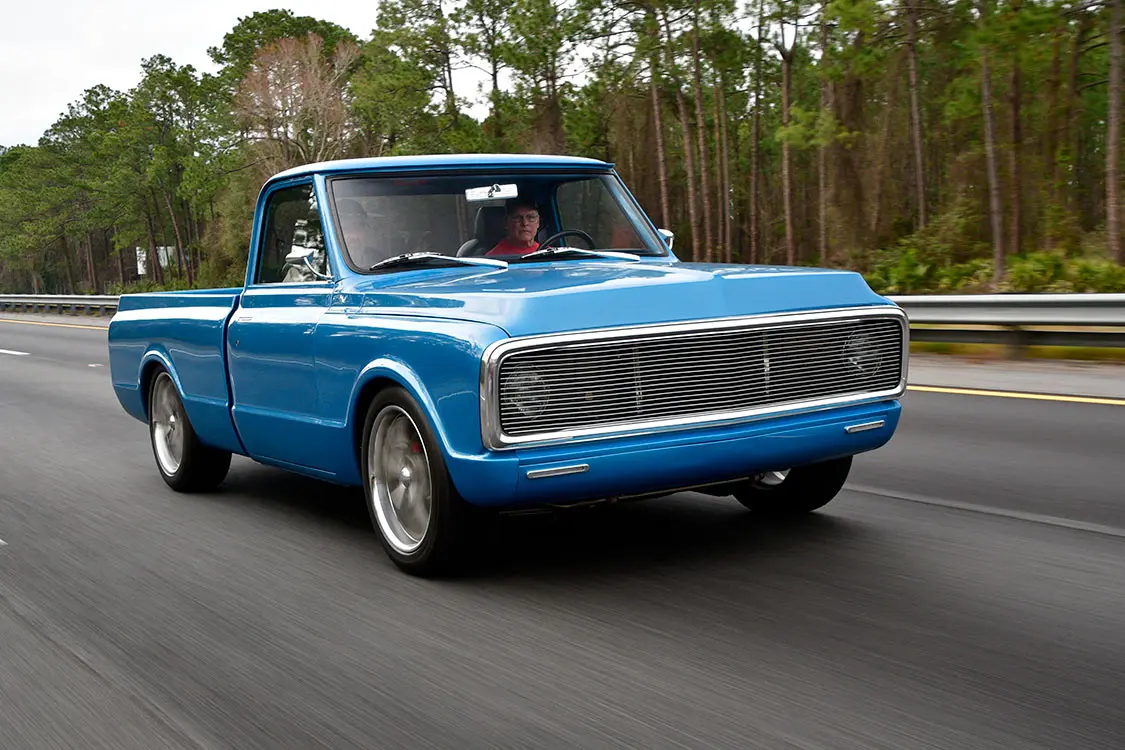
Marshall is an accomplished craftsman and now with new motivation, he decided to create something like that dream vehicle he saw as a teenager. Choosing to start with a firm foundation, the Chevy frame was boxed, and all holes were filled, tubular upper and lower control arms from Brothers Trucks were added up front, and he installed one-of-a-kind trailing arms of his own design. Western Chassis 2.5-inch drop spindles helped with the static drop profile. While everything was apart, he pressed forward, adding four-wheel Wilwood disc brakes, Ridetech coilovers, and No Limits power rack-and-pinion steering.
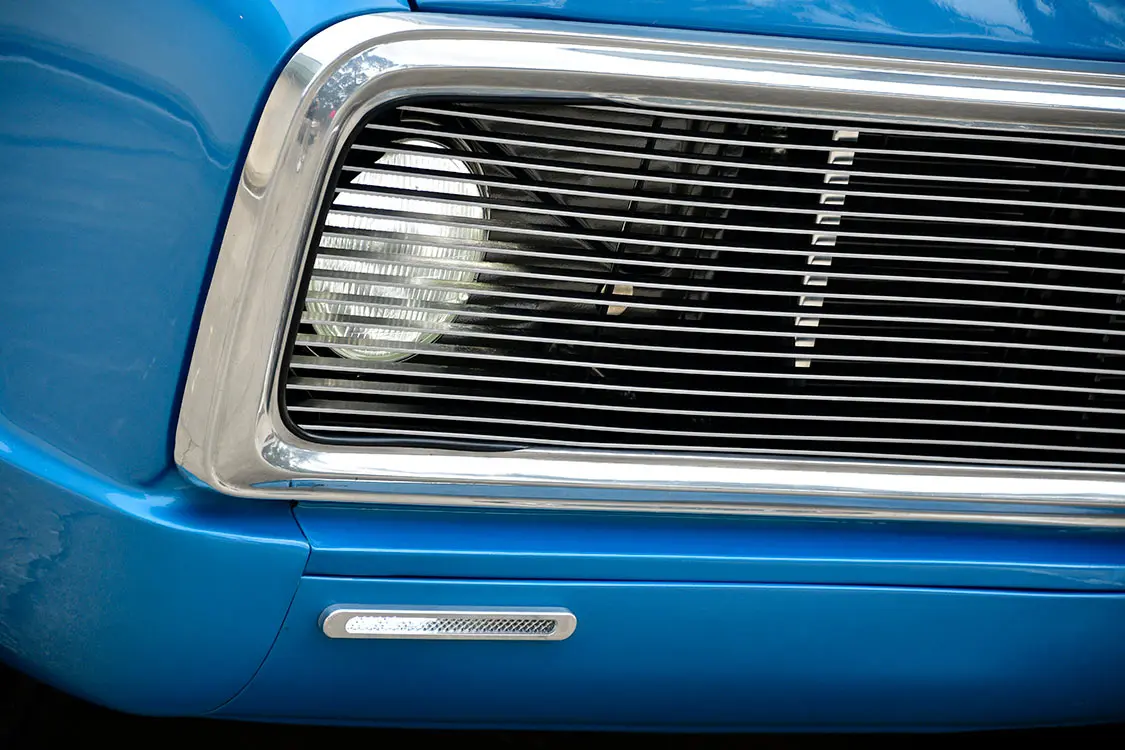

Next on the list was the engine compartment. He knew that a smooth firewall would provide a perfect backdrop for the powerful new engine but decided to take it one step further. Just for fun, he hid the Wilwood master cylinder underneath the frame for a unique look. When people notice the clean firewall and wonder aloud whether the truck has brakes, he smiles and says, “This build was inspired by Fred Flintstone!” Both the firewall and the custom inner fender panels were painted to match the exterior.

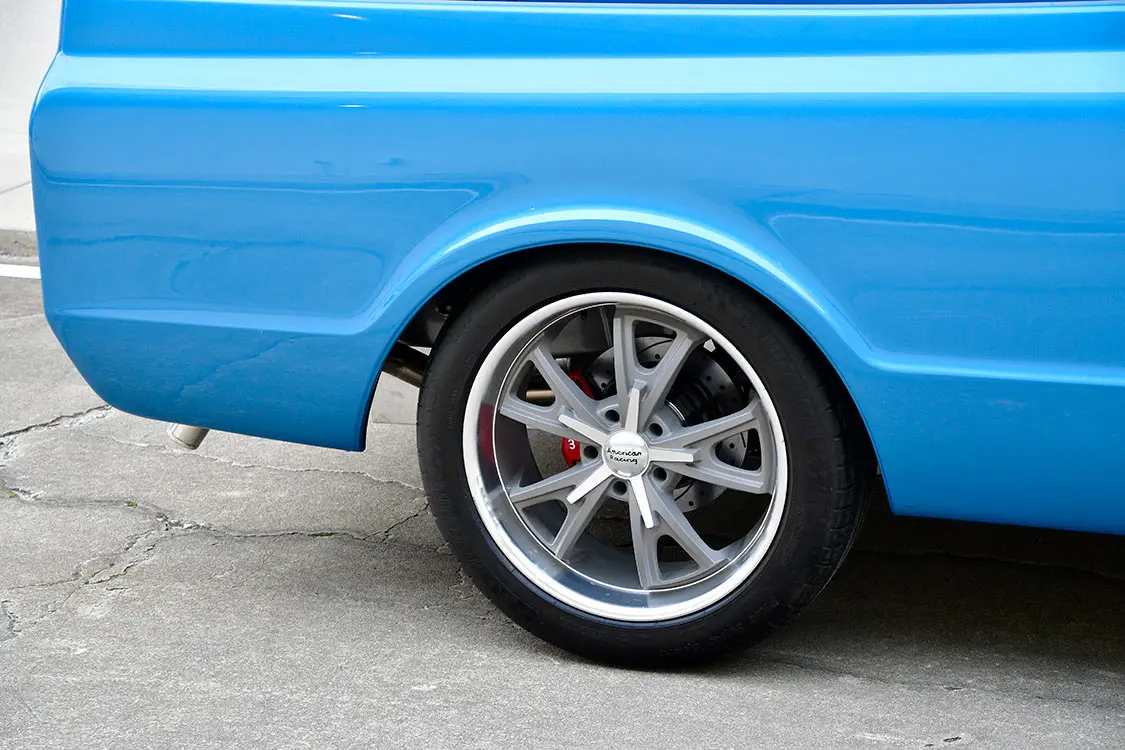
Continuing his detail-oriented approach, Marshall selected Eddie Motorsports hinges to manage the hood, intrigued with their unique mechanical flavor. The hood itself is also unique since it is as smooth on the underside as it is on top. Marshall flexed his fabrication skills by crafting a single piece of sheetmetal to cover the underside, creating a seamless look. His handiwork was distinctive enough to attract the admiration of Chip Foose himself, during the Year One show in Atlanta. Foose was so impressed with Marshall’s creativity and fabrication skills that he signed a photograph of the hood. Quite an honor!
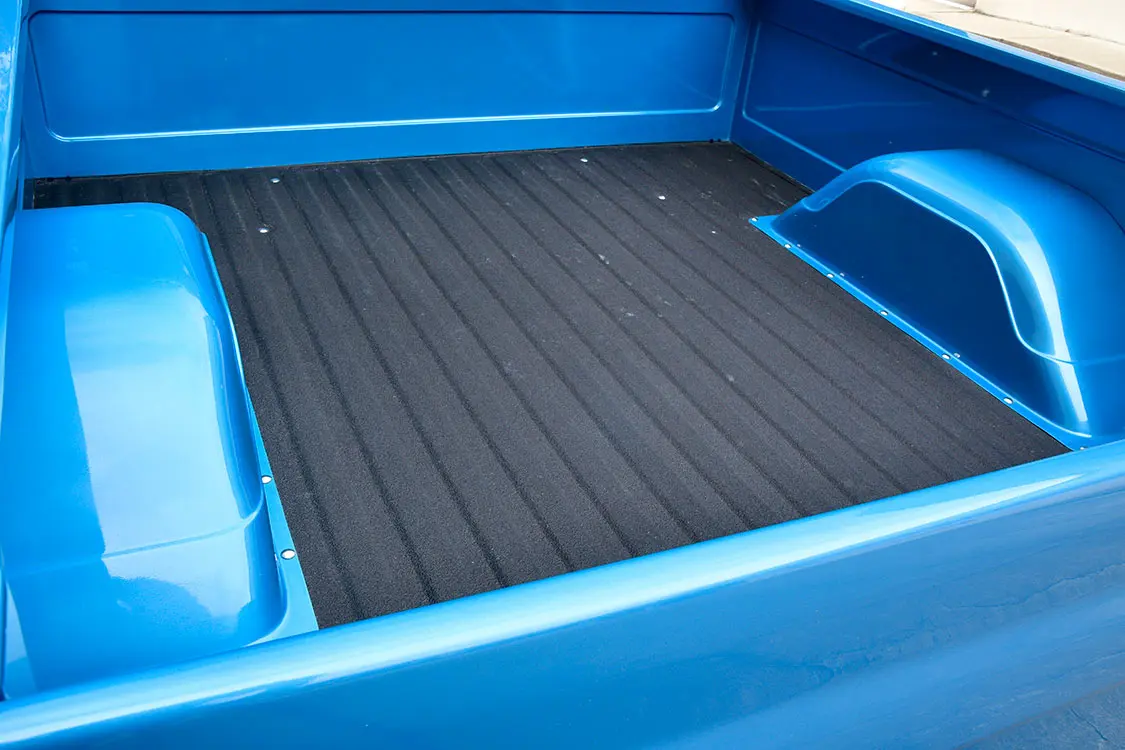
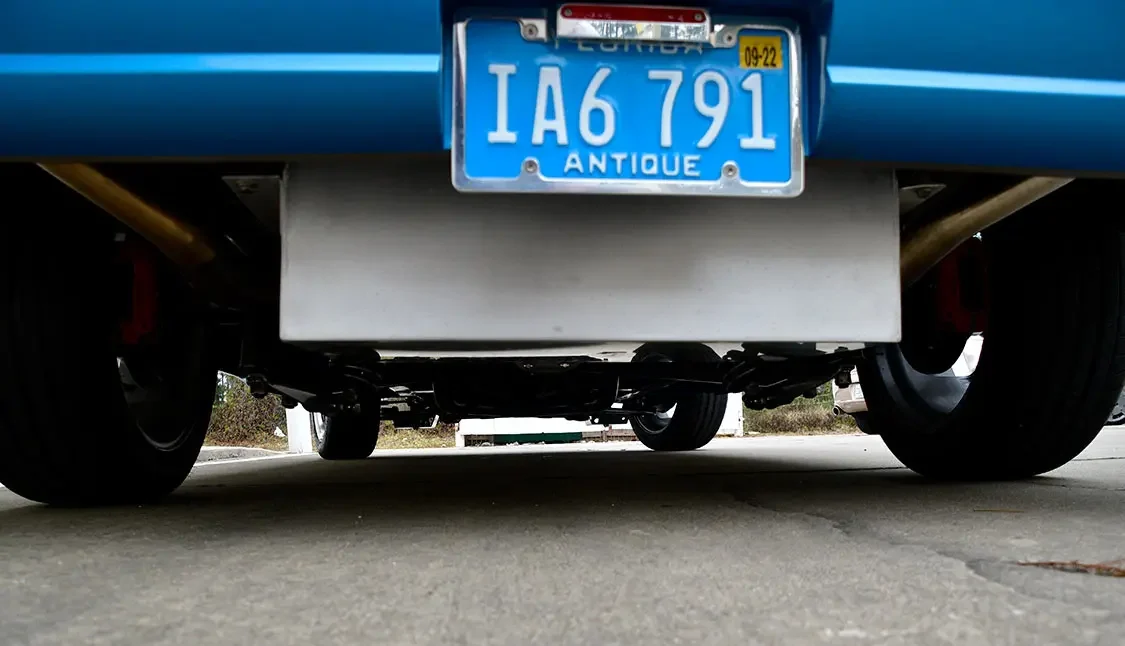
Once all the elements of the engine compartment were in place, the original 350 was eliminated and a Chevy 400 block that Marshall had been saving for a special occasion was bolted in, using motor mounts of his own design. Providing a heaping dose of louder, faster, and prettier, the built brute reads like a hot rodder’s dream sheet with Marshall orchestrating a long list of performance upgrades. Now bored to 406ci, the rotating assembly consists of an Eagle crank and H-Beam rods along with Wiseco pistons. Pro Comp aluminum heads along with an Edelbrock Performance 850 carb, intake, air cleaner, and cam come together to manage incoming air, MSD ignition lights the fire, and Hooker Competition headers scavenge what’s left through a custom Magnaflow exhaust. The combination was clearly designed for rapid transit! Adding sparkle to the mix, Billet Specialties accessories include radiator clamps, valve covers, and pulleys while the new PRC radiator and condenser ensure temps stay in the green.
Although it took about 40 years, he knows that the image of that beautiful
vehicle that started a teenager dreaming is finally in his garage.
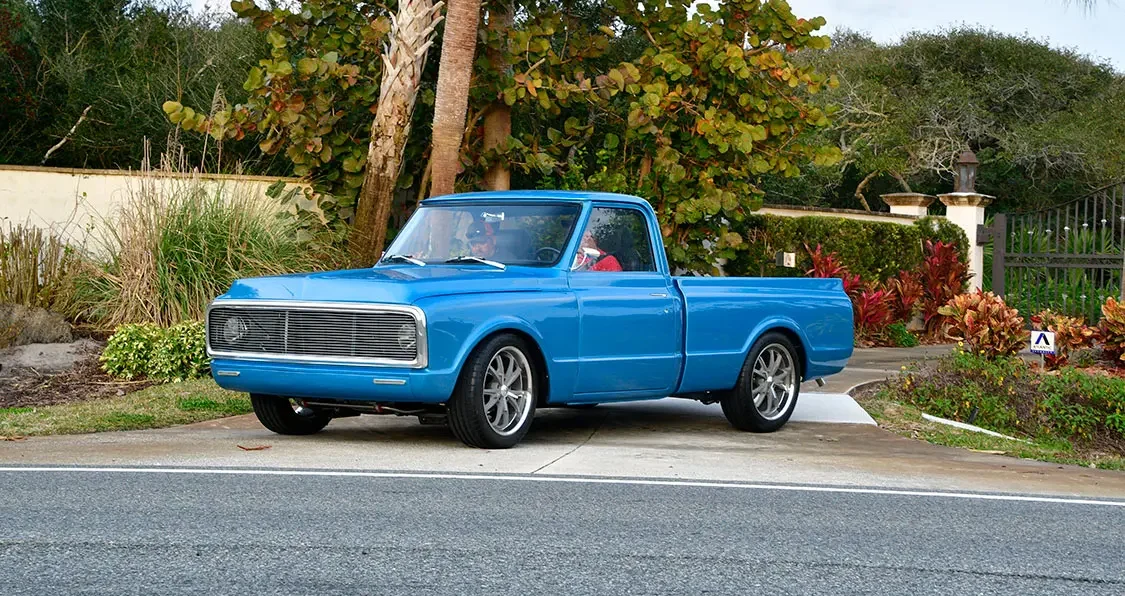
Moving outside, body modifications began by creating a beautifully smooth, bumperless frontend featuring a full width chrome grille, slim LED running lights below the hidden headlights, and a smooth roll pan. Sculpted drip rails and one-piece side windows clean up the doors while filled stake pockets, smooth tailgate, and a custom rear pan dress up the rear. LED taillights from Marques Designs shine brightly at night. The bed features custom inner fender panels but was left plain to allow a functional space for lawn chairs at car shows. The tiny touch latch door in the bed floor is the filler for the repositioned gas tank. Since it was important to see the Wilwood brakes through the wheels, the final addition was American Racing rims, 20 X 9 all around on Michelin rubber.
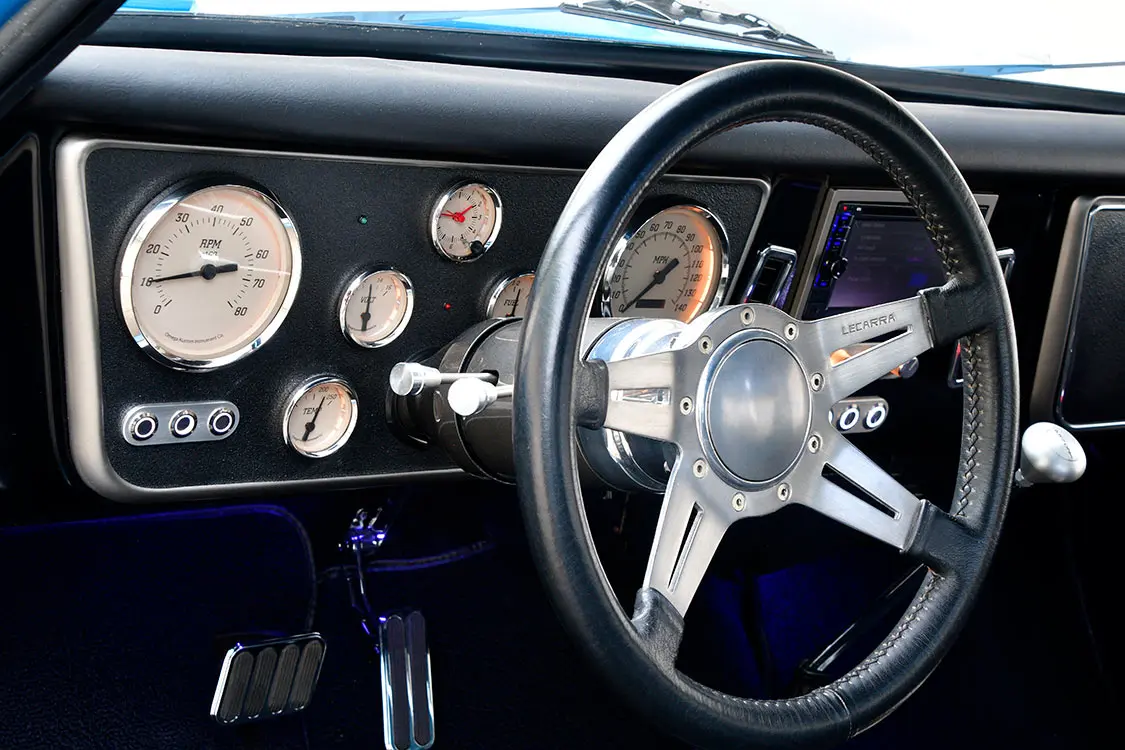

Inside, Marshall’s craftsmanship is once again on display, beginning with the custom dash that features a second steel glovebox door, now repurposed as a mirror image to the original and holding five smaller Omega Kustom analog gauges. The larger speedometer and tachometer flank the new additions. A Lecarra wheel turns on an Ididit column and a Lokar shifter controls the Turbo 350. Driver and lucky passenger enjoy the six-way power seats from a 2004 Acura TL, complete with bolsters, head rests, and lumbar support. Vintage Air keeps everyone cool during warm Florida summers. Road trips take on a new dimension thanks to the Kenwood head unit that controls speakers behind the seats and in the kick panels. Larry’s Trim Shop installed the combination arm rest and door handles, but Marshall did the rest of the leather and vinyl upholstery, even to the Brother’s Trucks headliner and seat belts. The four-year team effort saw Marshall doing the bodywork and after the gaps were set to perfection, son Blake laid down a deep layer of the ChromaBase Marina Blue final color.
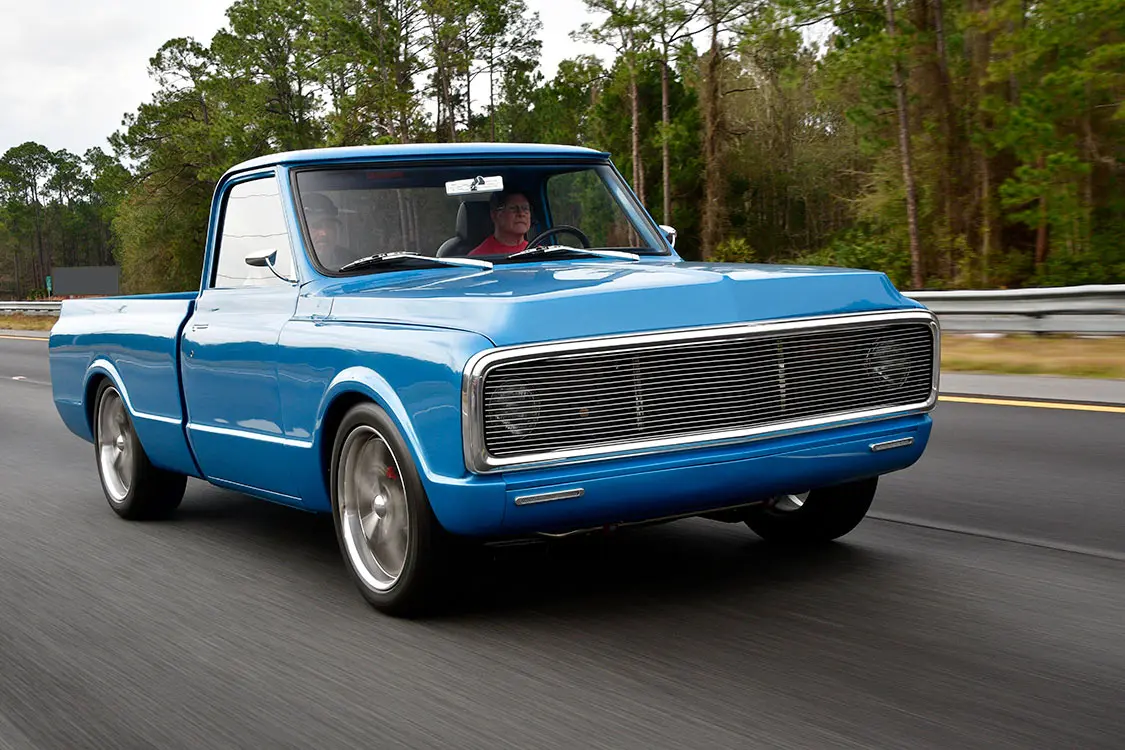
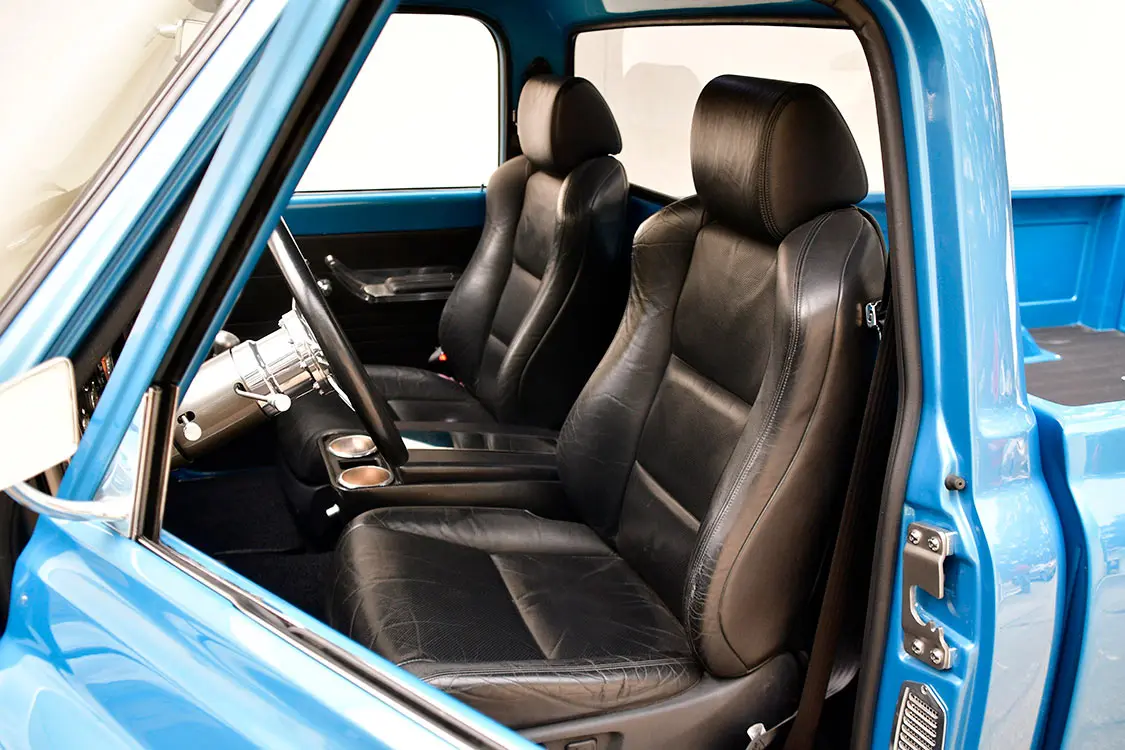
How is the finished truck to drive? At the Year One Show in Atlanta, out of 100 cars judged, Marshall was gratified to know that his talents were recognized, finishing in the top 10. Although it took about 40 years, he knows that the image of that beautiful vehicle that started a teenager dreaming is finally in his garage. Marshall sends special thanks to his wife Tanyia for her unending support and encouragement.
Marshall Rowan
This Cummins-powered Chevy C10 bodied Ford F250 chassis lifted 4×4 creation took Trevor Lima, of Diesel Performance Specialties, over three-years to build. He finished it just in time for SEMA 2018. It set him back a $150,000 to realize this dream build.
Lima has been in the industry for over six-years and created some impressive builds over that time. The last big one, before this Cummins C10 build, was a crazy six-door 2016 Excursion.
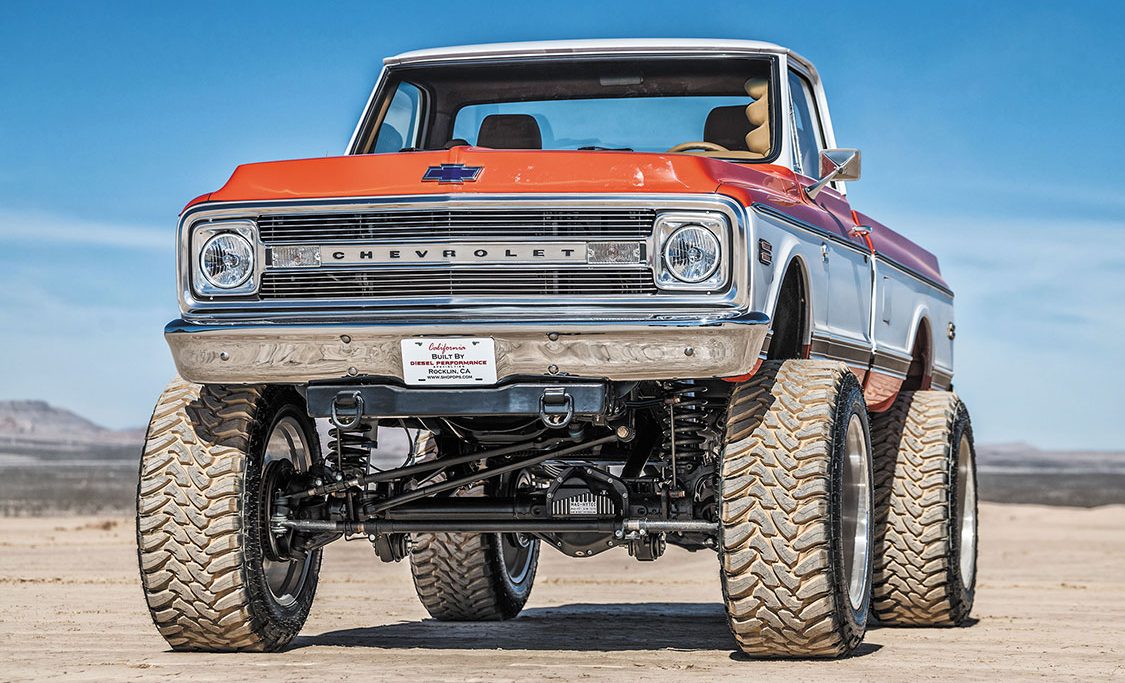
Lima built an orange 1967 Chevy C10 2WD single cab short bed alongside his Dad as a young adult in their home garage. The build was nearing completion, with body paint, powder coated frame, engine and trans already done, when his parents got a divorce, and the truck was sold. That truck turned into the famous “Tootsie,” as it’s known in C10 circles.
Between the build with his Dad and restoring a 1970 GMC 2WD in dark metallic green and white with woodgrain trim for his great uncle Pete Lima was hooked. He always wanted to make one for himself, but has always been a 4WD diesel lifted truck guy, so this creation is the culmination of those early build experiences and dreams.
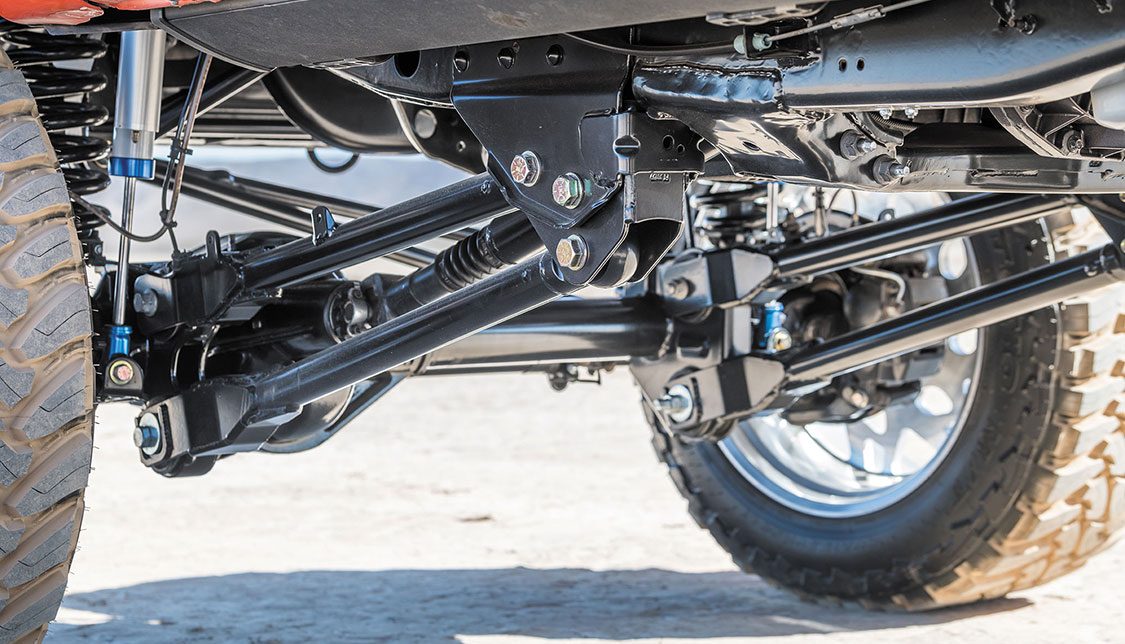
Lima decided in 2015 that it was finally time to tackle a build like this for himself, in his personal style. The idea for this build started off as a cool halfway clean daily driver, but nothing over the top. Lima wanted a lifted 4WD, and wanted a Cummins diesel stuffed under the hood. He also loved the retro classic paint look, and couldn’t resist that orange two-tone.
As Lima started on the build he ran into problem after problem trying to get the big Cummins to fit in the original 1967 Chevy frame. In the end it wasn’t wide enough or strong enough to support the big diesel. A frame swap was going to be required.
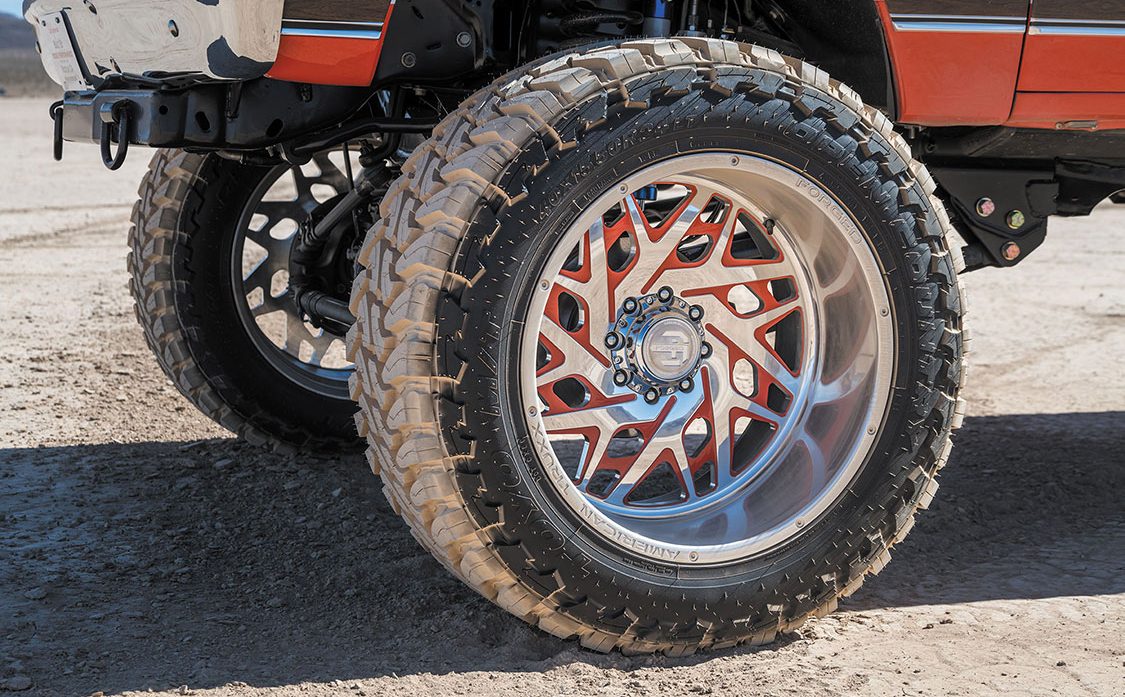
Lima says that the running gear under the Dodge frame from the same vintage as the engine he chose, 2003-2007, was “the world’s worst,” so he decided to use a Ford chassis. He found the axles, steering, suspension, etc… to be superior to a 2000’s Dodge truck.
As he started working on the truck more and more he quickly realized that he couldn’t justify not doing the build perfect. He had built a nice 1995 K3500 Silverado several years before, with a 12 Valve Cummins in it, but when he was done he knew there were a few things he should’ve done differently. Lima couldn’t stomach having that feeling again with this build.
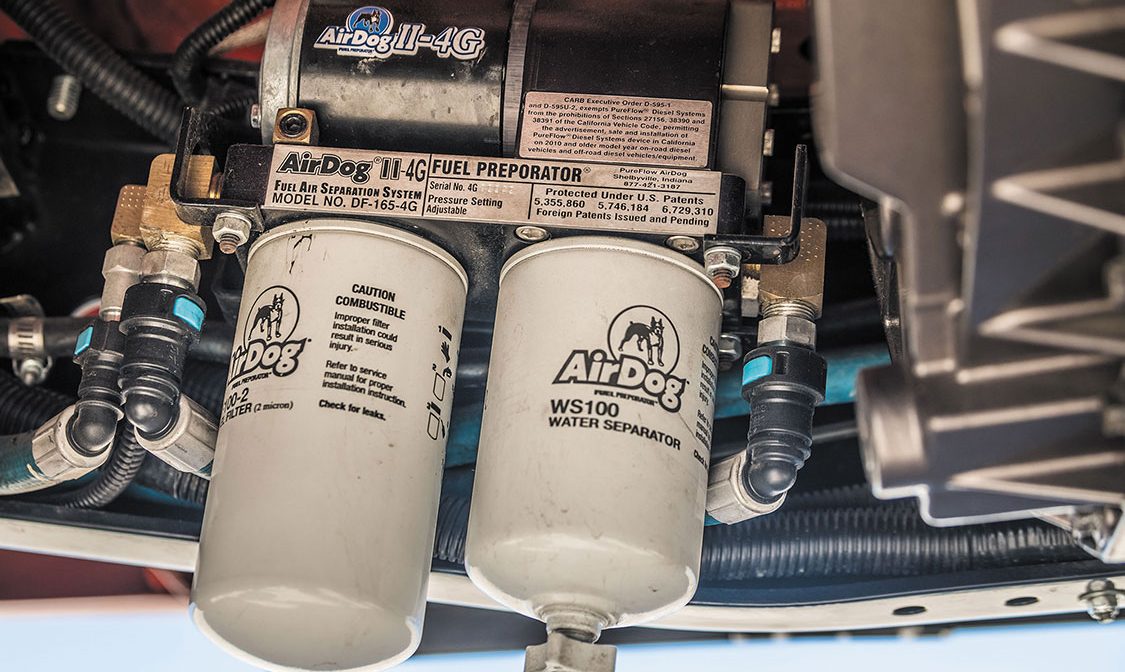
At this point the personal build budget went out the window and Lima focused on doing every aspect of this project just right, and to his personal style. He aimed to build a show truck that was an extremely capable weekend driver and was every bit as aggressive on the road as it would look.
Of course, as with most projects like this, it took much longer and cost much more than expected to build. Lima had to keep putting this personal build on the back burner as his business grew, he moved into a larger building, sold his house and the usual life events happened.
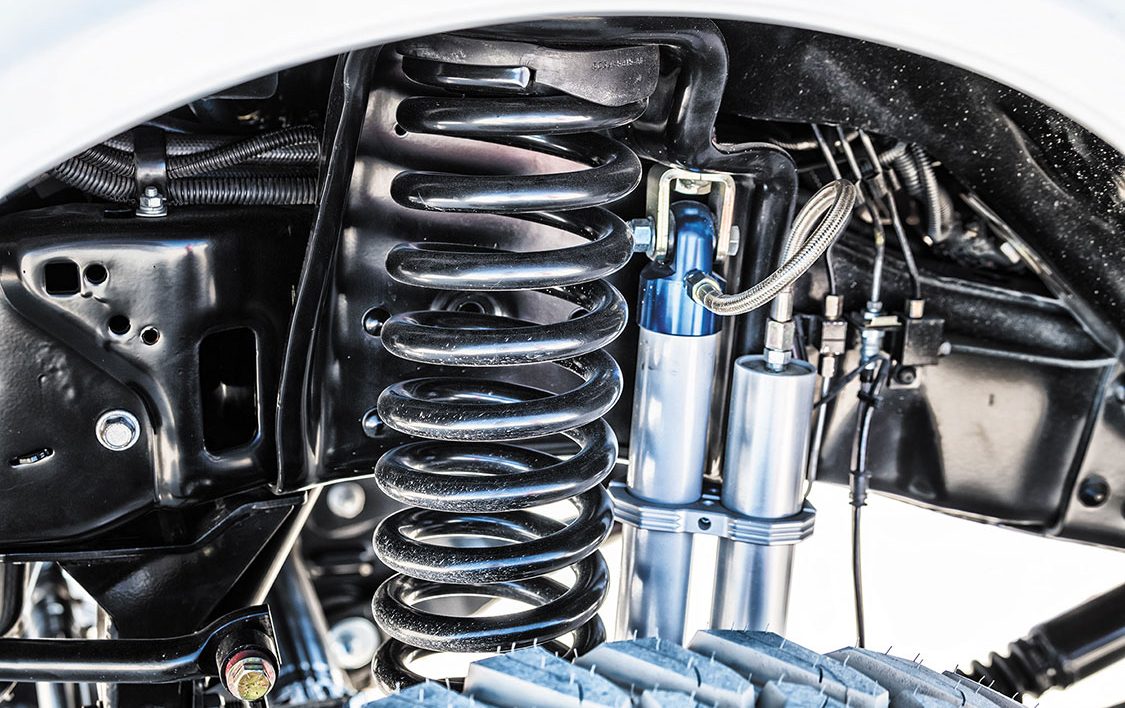
The 1969 Chevy K20 single cab body has been refurbished to better than OEM quality and updated with a billet grille. The classic Chevy body sits atop a 2010 Ford F250 chassis, which has been boxed and reinforced. A 2005 5.9L common rail Cummins has then been stuffed under the Chevy hood and between the Ford frame rails. The American truck trifecta has been achieved with this truck!
The Cummins has been bored .020 over stock, the block deburred and all new high quality internals fitted. Parts like Carillo Rods, Mahle Pistons, Hamilton cams, valves, lifters and pushrods and even a big S369 SXE Turbo with race cover and a billet wheel have been fitted. An Airdog 220 GPH, 12mm Stroker-BD Diesel Injection Pump and Exergy Injectors all add to this impressive engine package. An HP Tuner tuned by Firepunk Diesel helps the truck put down 1500 ft/lb torque and 800 HP.

Under the truck you’ll find Fabtech 8” lift springs up front and stock F250 leafs in the back, with a shackle flip. Pro Comp MX2 shocks keep the ride smooth over the rough Texas roads. The truck rolled on huge 24×14 Forged American Truxx 1909 Aries Wheels wrapped in 40×15.50 Toyo Mud-Terrains for SEMA, but normally rolls on classic 17-inch pacer wheels wrapped in 40×13.50 Toyo MTs.
A full custom interior is both modern and classic at the same time. It features seats out of a 2005 Chevy truck, OEM Dodge gauges and a full custom tan leather interior by Pacos Upholstery.
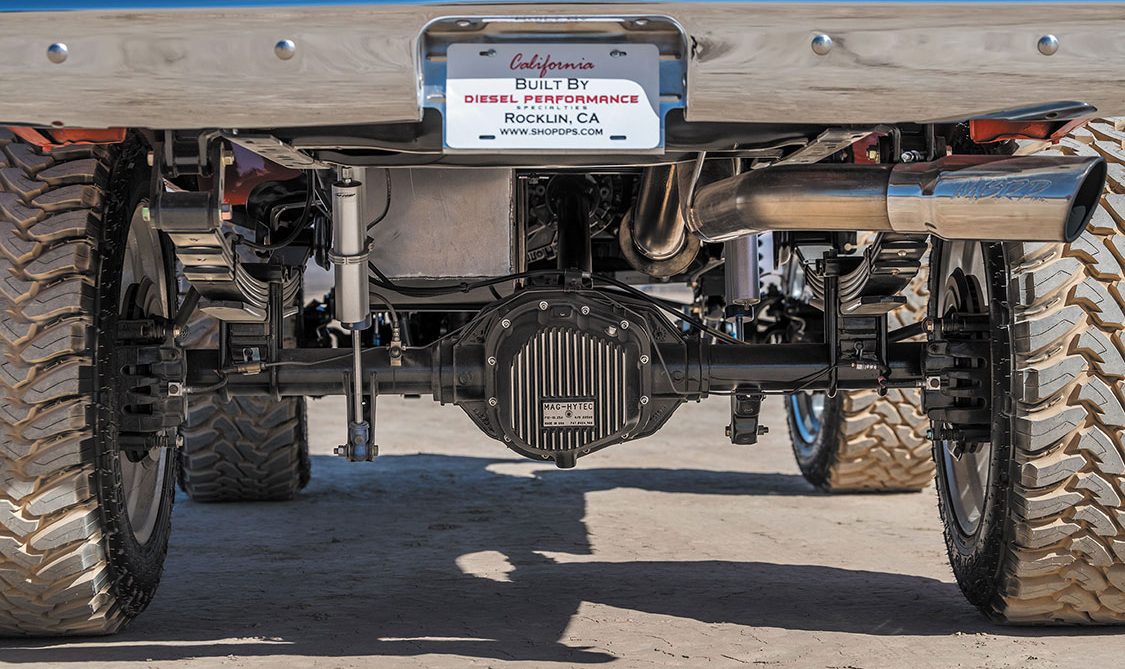
The list of upgrades on this truck is more than extensive, as Lima needed to find ways to integrate the big Cummins into the Chevy body and Ford chassis seamlessly. A Firepunk Comp Stage 2 transmission turns custom B&W Driveline driveshafts while a ATS 3-piece stainless exhaust with MBRP flow through muffler let the Cummins breath easy. Touches like a custom 35 gallon aluminum fuel tank, dual optima batteries mounted on the frame rails and Amp Research powered side steps help keep this build tidy and functional.
All in, Lima is super happy with how this build turned out and says he “doesn’t really have any plans in the future to upgrade it.” He built it the exact way he wanted, and correct the first time. He says “it has tons of power and drives like a dream. It doesn’t need anymore work in my opinion. It turns more heads than you can count when its cruising down the road or driving by on a trailer.”
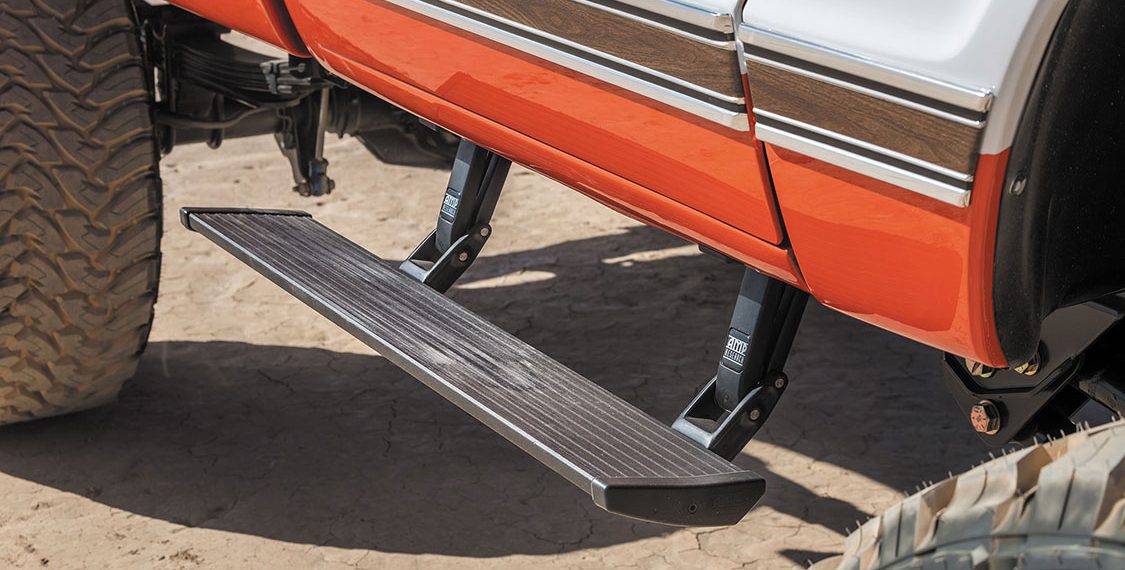
After this build started coming to life, it started gathering a ton of attention locally in California. People were stopping by Lima’s general auto repair shop to check it out. The more people came around he realized that there was an untapped niche in the diesel community where he was living. His general auto repair shop wasn’t doing great, as there were about 20 other repair shops on the same road and the competition was fierce.
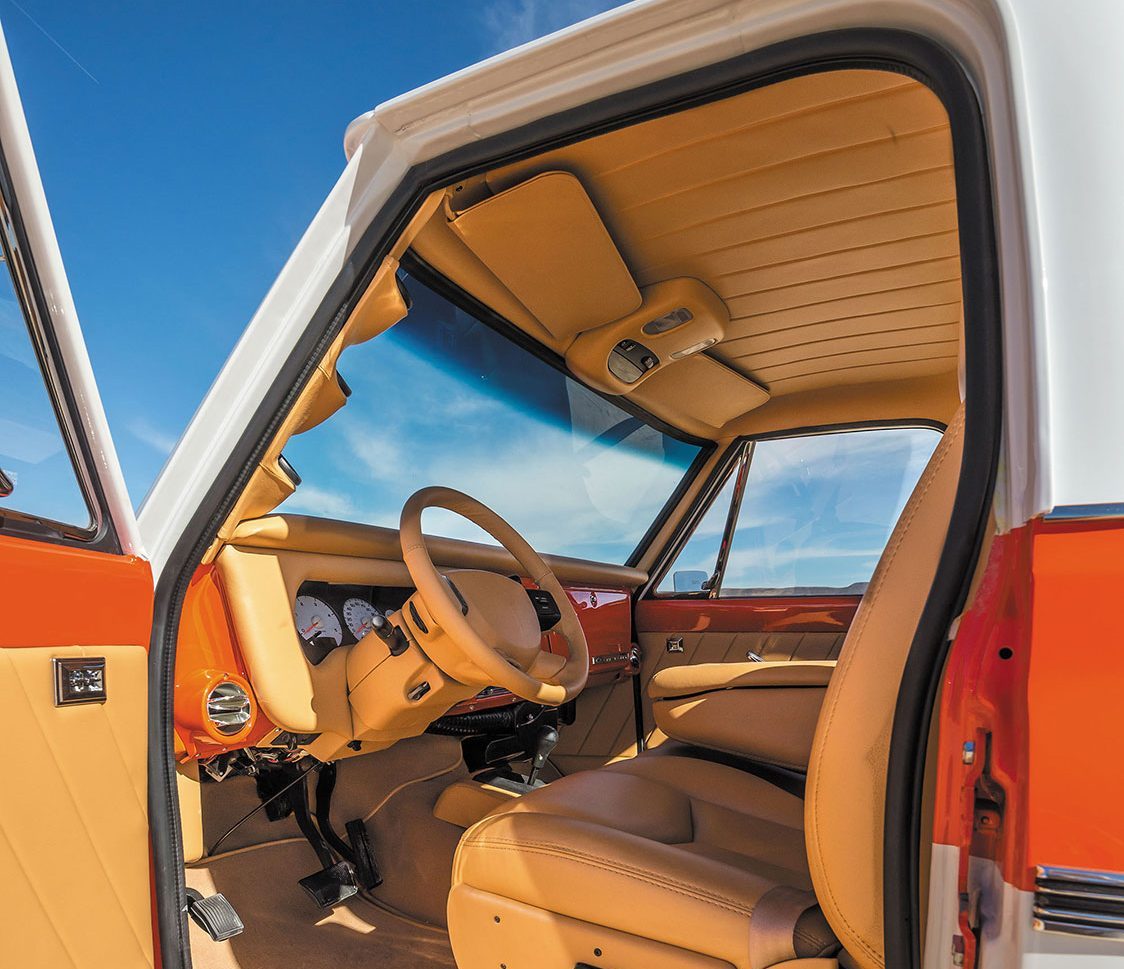
A lack of a quality diesel shop around was very evident, so he changed his shop’s name and refocused on the diesel market. Diesel Performance Specialties was born, and business was booming immediately. After only six-months he moved the business from a tiny 2,000 Sq ft shop into a huge 8,000 Sq ft space right off a major freeway. Within several months at the new location, he even took over the 8,000 sq/ft building next door. Lima had found his niche and business is good.
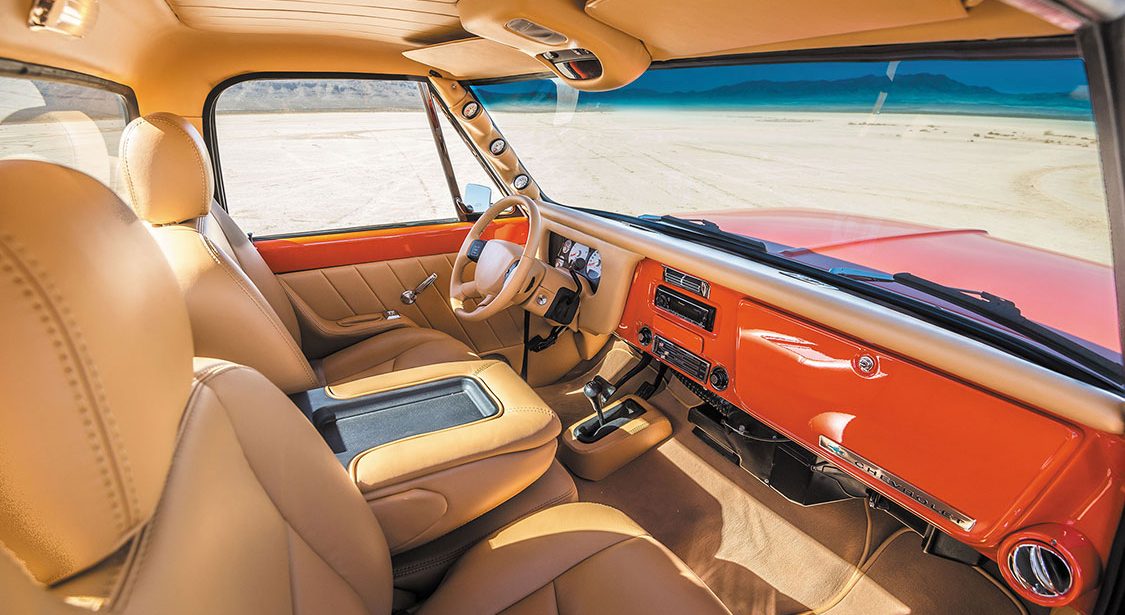
This build was winning local truck shows before the interior was even finished, even landing in a few local auto parts calendars. Lima never saw his creation as a SEMA truck, as he “figured it was too old and classic for the modern touches of the show.”
Truck Guru’s Cris Payne was looking for some SEMA trucks for the 2018 show and multiple people tagged Lima’s build on Facebook to be considered. In the end this custom diesel C10 build was upgraded with 24×14 American Truxx wheels and showcased in the company’s SEMA Show booth in 2018.
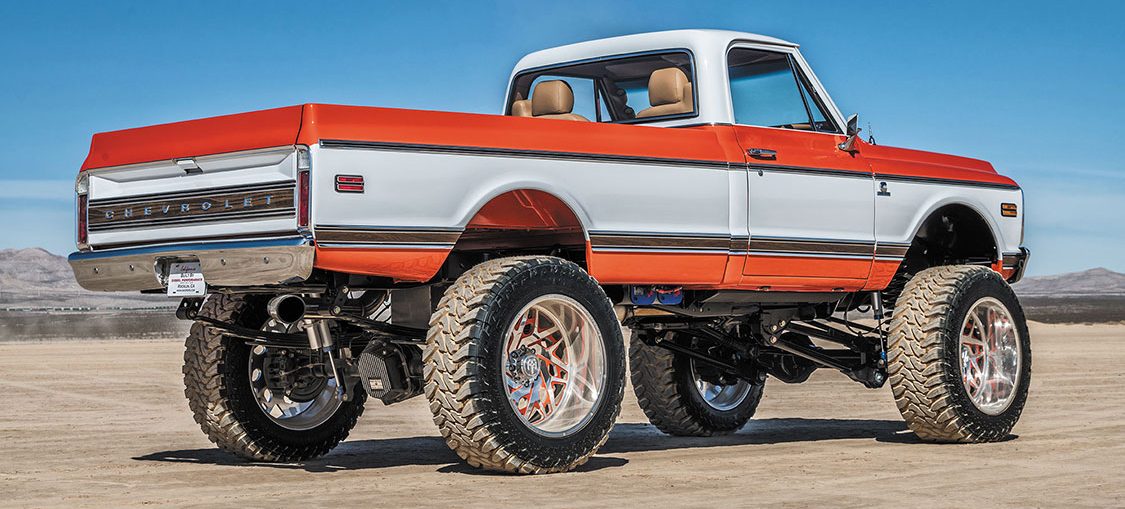
These days it’s been attending a few local shows and sitting in the shop not getting much drive time. It can currently be seen at the brand new Diesel Performance Specialties shop in Weatherford, TX.
After flying out to meet with American Truxx in Dallas before SEMA 2018, Lima fell in love with th e area and decided to move his shop to the DFW area, which opened in the summer of 2019. Lima’s Chevy C10 dream build is on display at the new facility. It even got a top 100 placing at this year’s Lonestar Throwdown, out of over 2000 trucks at the show.
Check out other custom C-10’s here!
Frame & Body: 2010 Ford F250 Frame (Boxed & Reinforced), 1969 Chevy K20 Body w/ Billet Grille & 1970 OEM Reproduction Front Bumper
Engine: 5.9L 2005 Common Rail Cummins (machined by NAPA Machine Shop & assembled by Diesel Performance Specialties) (bored .020 over, block deburred, Carillo Rods, Mahle Pistons, Assembly Balanced, Hamilton Cams, Hamilton HD Valves, Hamilton Pushrods, Hamilton Lifters, 103 lb springs, 188 Duration and 220 Lift), Mishimoto Intercooler, S369 SXE Turbo w/Race Cover & Billet Wheel (60 PSI boost), Airdog 220 GPH, 12mm Stroker-BD Diesel Injection Pump, 1/2” fuel lines, Exergy Injectors (100% over size), HP Tuners with Firepunk Diesel tune
Axels: Sterling 10.50 with 4.56 Gears, Detroit Tru-Trac Locker
Suspension: Fabtech 8” Lift Front Springs, Stock F250 Springs w/ Shackle Flip, Pro Comp MX2 Shocks
Steering: Redhead Box, 2006 Dodge Column
Wheels & Tires: 24×14 American Truxx Forged 1909 Aries Wheels wrapped in 40×15.50 Toyo MT Tires
Other: ATS 3 Piece Stainless Exhaust w/ MBRP Flow Through Muffler, Firepunk Comp Stage 2 Transmission, 1410 Ujoints, Custom Driveshafts by B&W Driveline, NP241 DHD Transfer Case, 35 Gallon Custom Aluminum Gas Tank, Dual Optima Batteries on Passenger Frame Rail Under Cab, Linex Sprayed Bed, Amp Research Running Boards, American Made Wood Grain Trim, Painted Orange/Red by Rookers Collision, Custom Tan Interior by Pacos Upholstery, Seats from 2005 Chevy Truck, Stock Dodge Gauge Cluster with Dash Bezel from 2005 Dodge, Overhead Dodge Control Panel, Power Windows & Doors, Autometer A-Pillar Guages, Pioneer & JBL Sound System
If you follow NASCAR or any other type of car racing, then you may already be familiar with the Indy 500’s longstanding tradition of introducing a different pace car just about every year to kick off the race. The official pace car of 1993 was the “new” Chevy Camaro Z28, which was selected to celebrate the launch of its fourth-generation model.
The Z28 wasn’t the only Chevrolet vehicle to be put on a pedestal this particular year. A special Indianapolis 500-edition shortbed C1500 pickup truck was also released to the public to commemorate the company’s participation in the big race. Only 1,534 of them were built and sold, and all of them sported the same very distinctive two-tone black and white paintjob adorned with multicolor logos and graphics to signify it as being part of the limited-edition run.
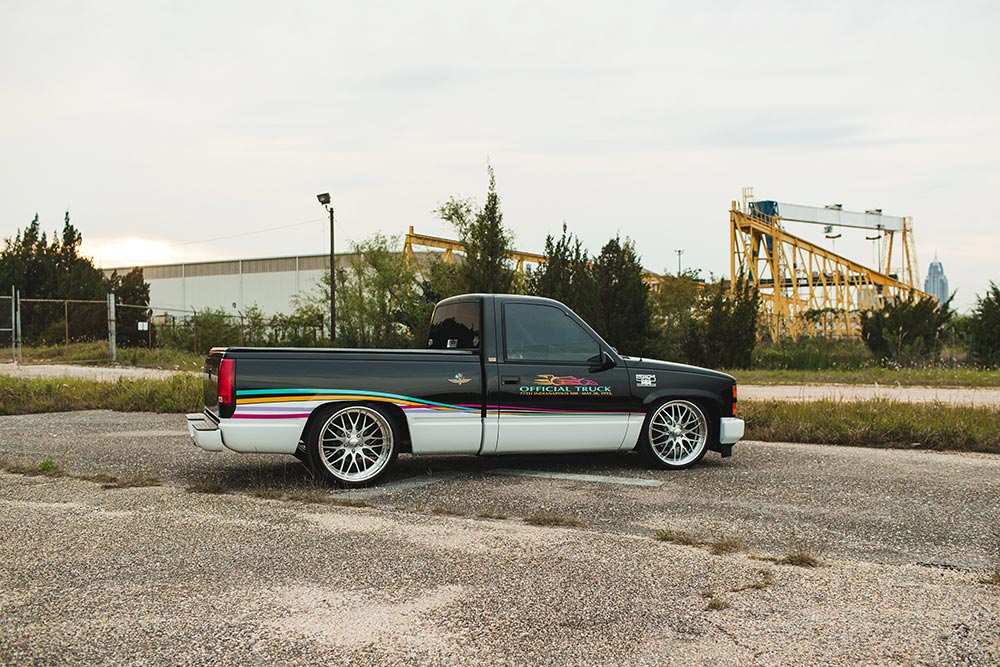
While these race-inspired Silverado pickups were hot commodities at the time of their initial release, they have since drifted into the realm of rarities. Vintage, limited-edition badged trucks tend to gain their own cult following these days, and this Indy 500 specimen is no different. Nostalgia rules the marketplace in today’s market, and nothing screams early ’90s vibes quite like colorful, striped graphics on an OBS Chevy truck body.
These trucks pop up for sale every now and then in various conditions and price points, but they still remain somewhat hard to find below market value. Ty Zito of Prairieville, Louisiana, has been a fan of the Indy 500 Chevy truck for years but has always been hesitant to pull the trigger and purchase one. These pickups are sometimes placed on the chopping block by various automotive auction houses, but every now and then, one will surface on Craigslist for a steal. Ty had always kept his eyes on sales listings of these trucks, but having the disposable funds ready to strike when one pops up, as well as it being close enough to pick up, have proved to be the make-or-break factors of scoring one.
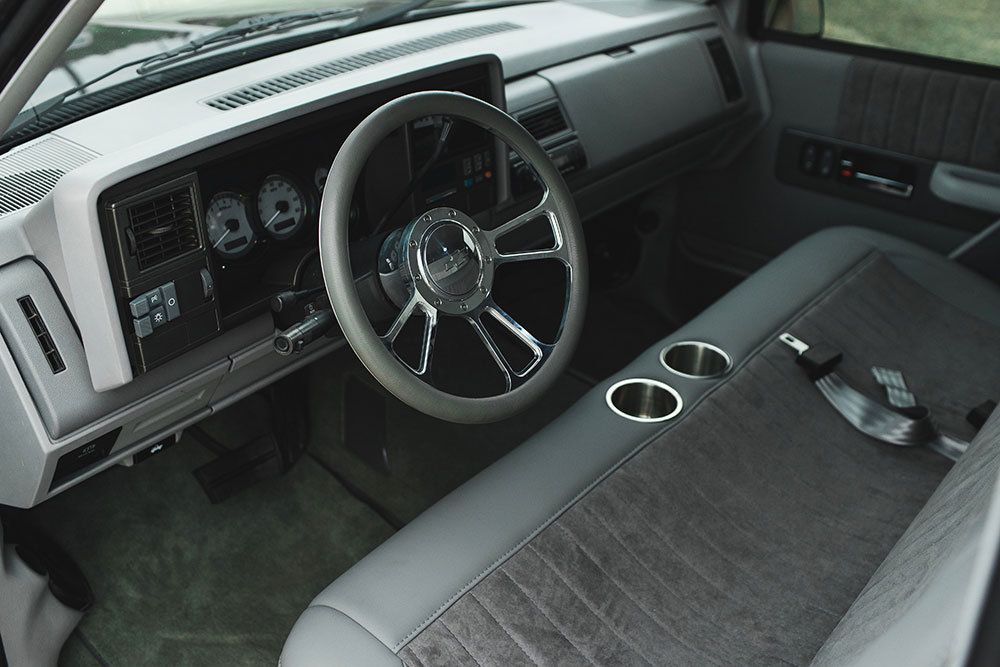
After years of searching, however, the stars aligned for Ty in Owensboro, Kentucky. An Indy truck was listed for sale at a price he was willing to pay. And while the drive was a little too far for him at that time, he lucked out when Chris Stafford of C/K Syndicate agreed to go fetch the truck on his behalf. Game on!
While the truck was in fair enough condition, it was in need of some serious TLC to bring back the luster of its glory days. Before anything was buffed or polished though, Ty first started to analyze what could be done to refresh the Chevy’s suspension.
Chris Stafford once again offered to be of service for this phase of the rebuild. He welded a notch under the bed before installing a coilover conversion kit and narrowed A-arms from Stone Fab, which would allow easy compatibility with front Aldan coilover units. A Belltech flip kit, sway bar, and Aldan adjustable shocks are responsible for dropping the rear to give the C1500 a much lower, aggressive stance for a modernized, custom appearance.
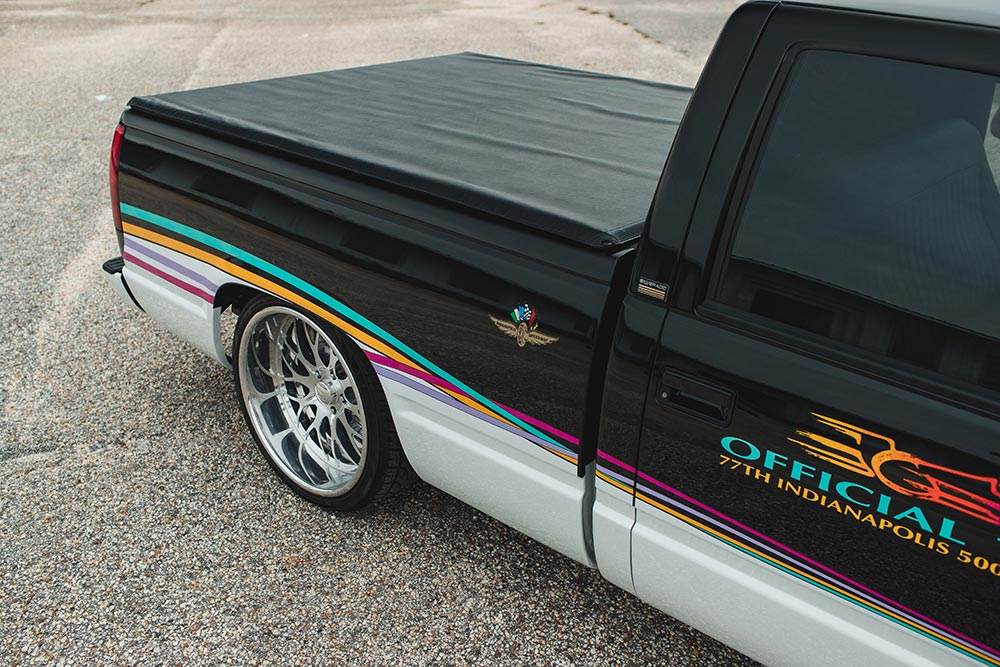
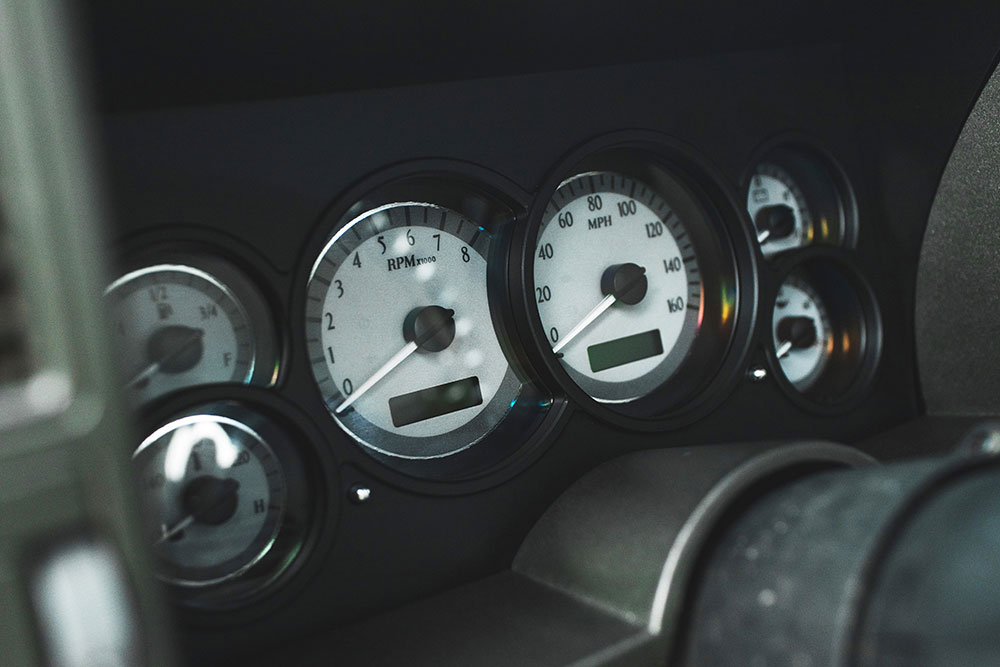
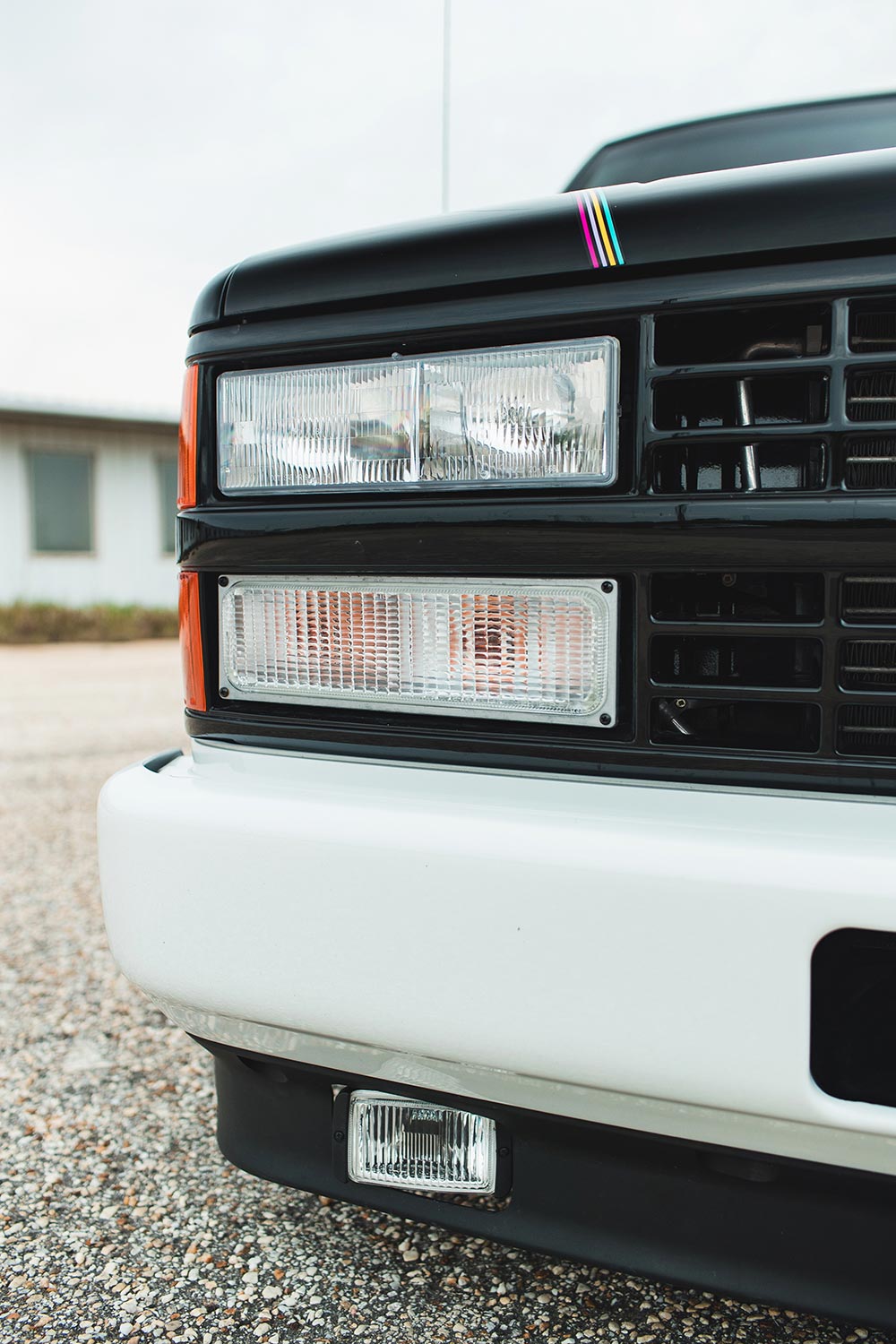
While upgrading the truck’s chassis, Chris also upgraded the front brake system with drilled and slotted rotors from Little Shop MFG. He went with the company’s rear disc brake conversion and master cylinder swap kit for all-around performance stopping power. To capitalize on the truck’s fully revamped chassis, a staggered set of Intro ID313 wheels and Lionhart tires were mixed in to give Ty’s Indy 500 pickup the updated, sporty appearance it so desperately deserved.
To keep the Chevy as original as possible where it counted the most, Ty kept the factory-equipped 350 V-8, but he had Joe Gerbitz and Mikey Stinson of 3rd Coast Customs perform a simple engine rebuild while cleaning it up cosmetically for good measure. New valve covers and an air cleaner were included in the cleanup process, and to add some extra performance gains, Brent Kelly at Exhaust Pros was asked to fabricate a custom 3-inch exhaust system. Other than that, the engine bay was kept relatively untouched, which is really all that was necessary to help preserve this historical pickup project.
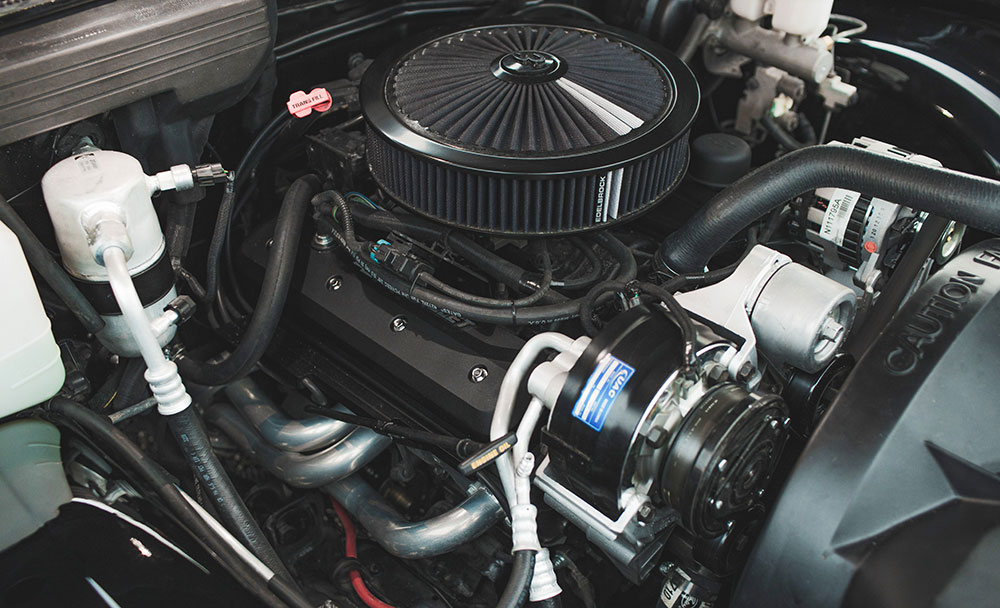
Next, T.J. Maples and Joe Gerbitz of 3rd Coast gave the Indy 500 Chevy’s original paint a welcomed refresh. They also reworked the OEM grille and bumpers and replaced the truck’s lighting housings to give the Chevy a spruced-up shine from front to back. Again, there was no need to do anything more than simply restore the truck’s OG façade as its iconic factory style is what has made it as desirable as it has been for nearly 30 years.
When it came time to address the Chevy’s interior, Ty treaded lightly as to not destroy the natural styling within the cab. While he had no reason to suffer with the dated cloth upholstery and cracked plastics that do deteriorate over the years, Ty wished to create a familiar environment that even the strictest of purists could appreciate. Since Ty’s truck was equipped with a bench seat (only 414 of the 1,534 run were outfitted with factory bucket seats), Lawrence Bergeron of LB Upholstery suggested swapping the worn out bench with a brand new one from Snowden. He covered it in gray leather and suede upholstery that closely resembled the old material’s color. The door panels were also reupholstered to match.
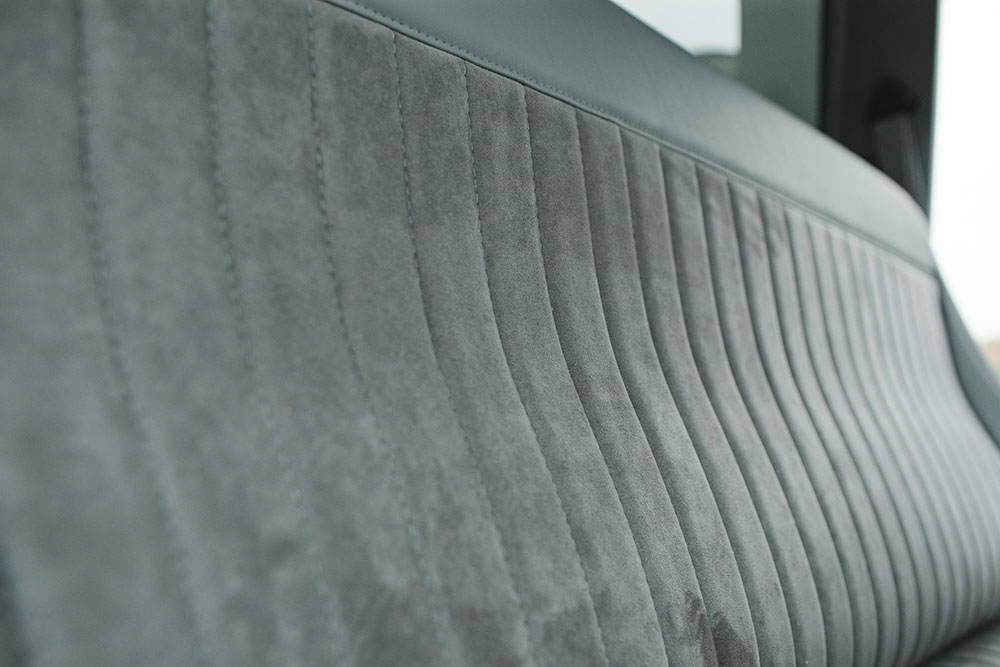
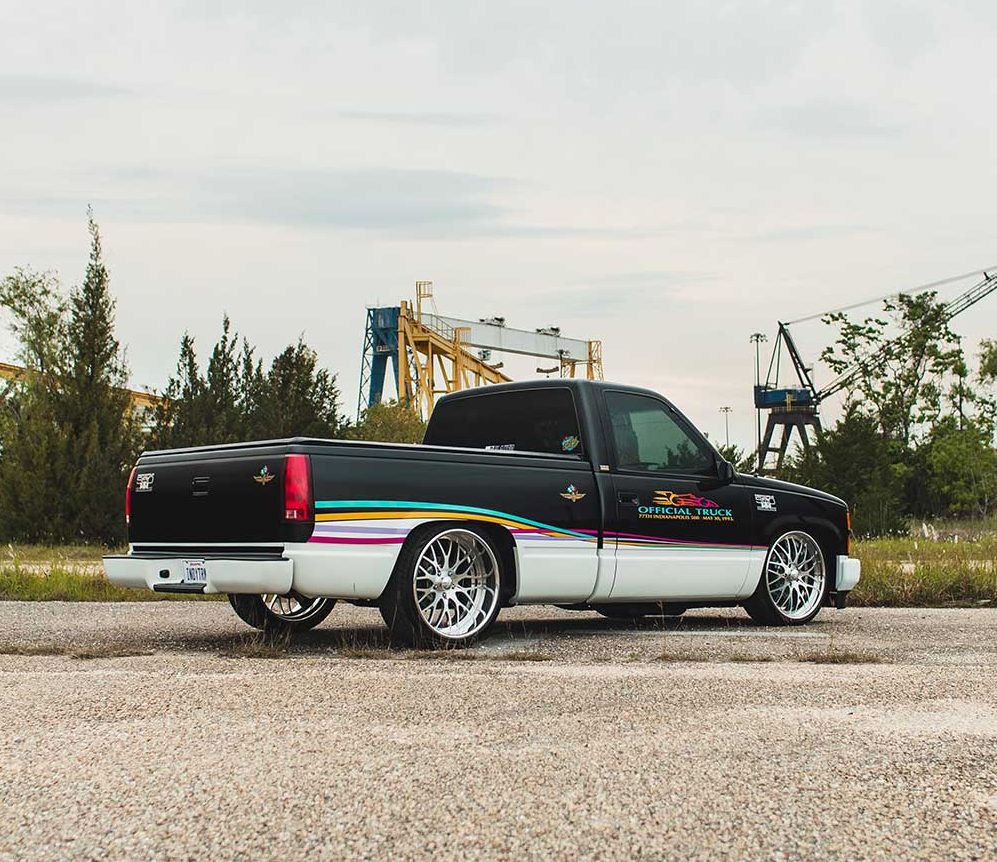
Chris Stafford clocked back in for work inside of the cab by first installing a new dash and then creating custom kick panels that house Powerbass component speakers. A Sony head unit and a combination of amps and subs were also wired up to give the single cab a robust, well-rounded sound signal. While he was at it, Chris replaced the headliner and made new visors to complete the fully renovated interior space. It now looks as factory as you can get save for the Billet Specialties steering wheel and Dakota Digital VHX gauges—but even those blend in all too well.
It’s always cool to see these Indy 500 trucks pop up at shows, and it’s even better when the right sets of hands not only expertly restore them but also go the extra mile by adding subtle custom touches to elevate their original style and performance. Ty’s Chevy maintains the classic Indy truck appearance but has gained heightened appeal with its lower, more capable suspension, premium wheels, and its clean-as-hell interior space. The rebuilt 350 and restored exterior ensure that this commemorative edition Chevy will remain on the road and stay relevant for a long time to come.
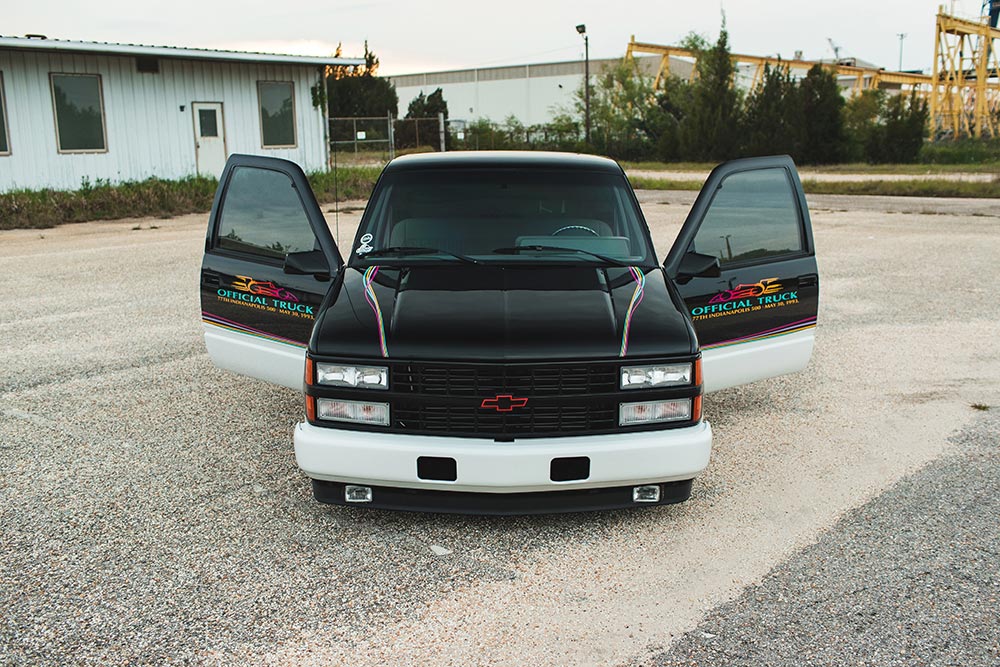
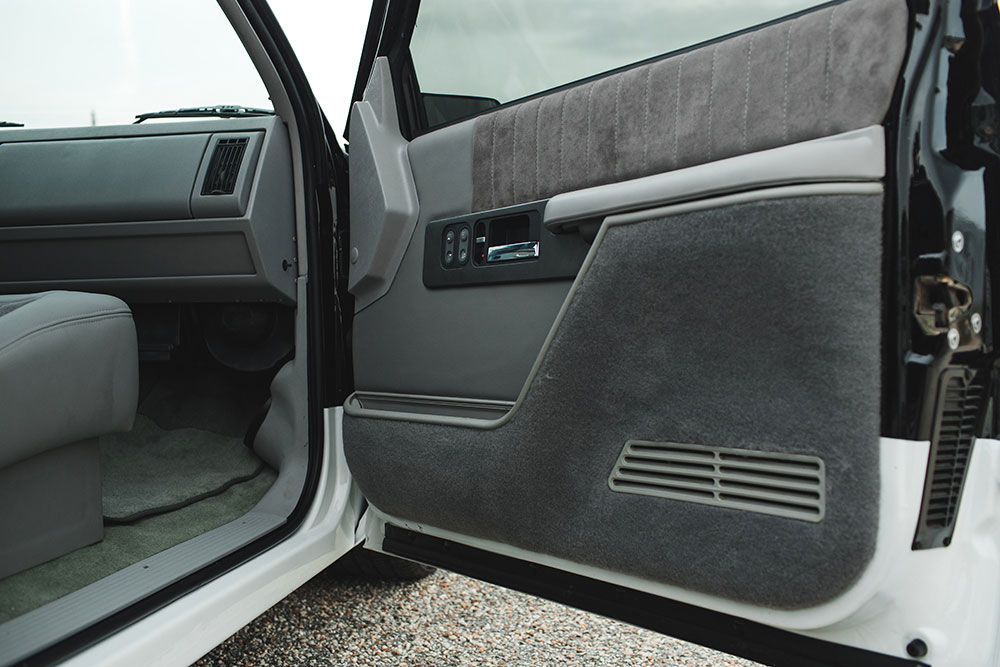
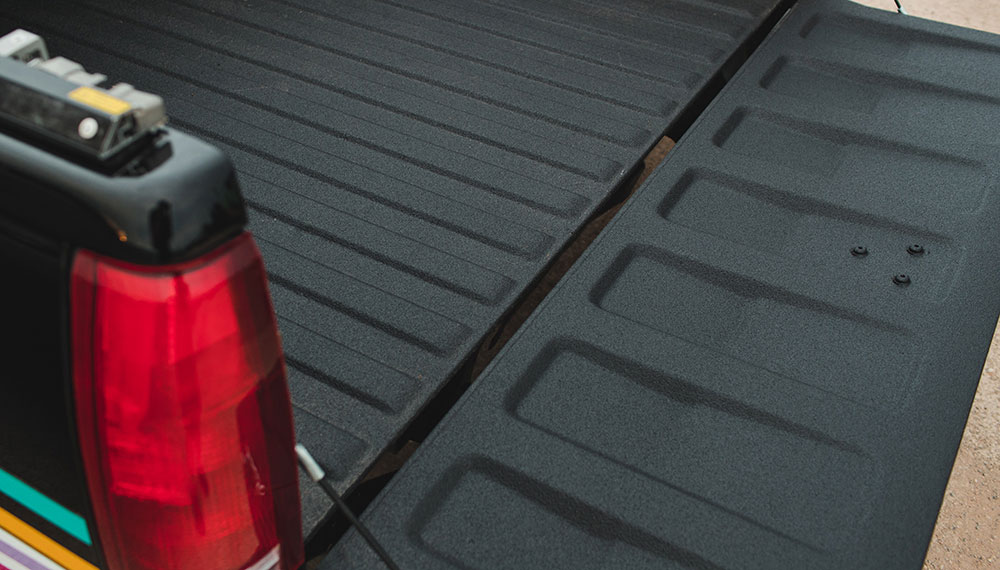

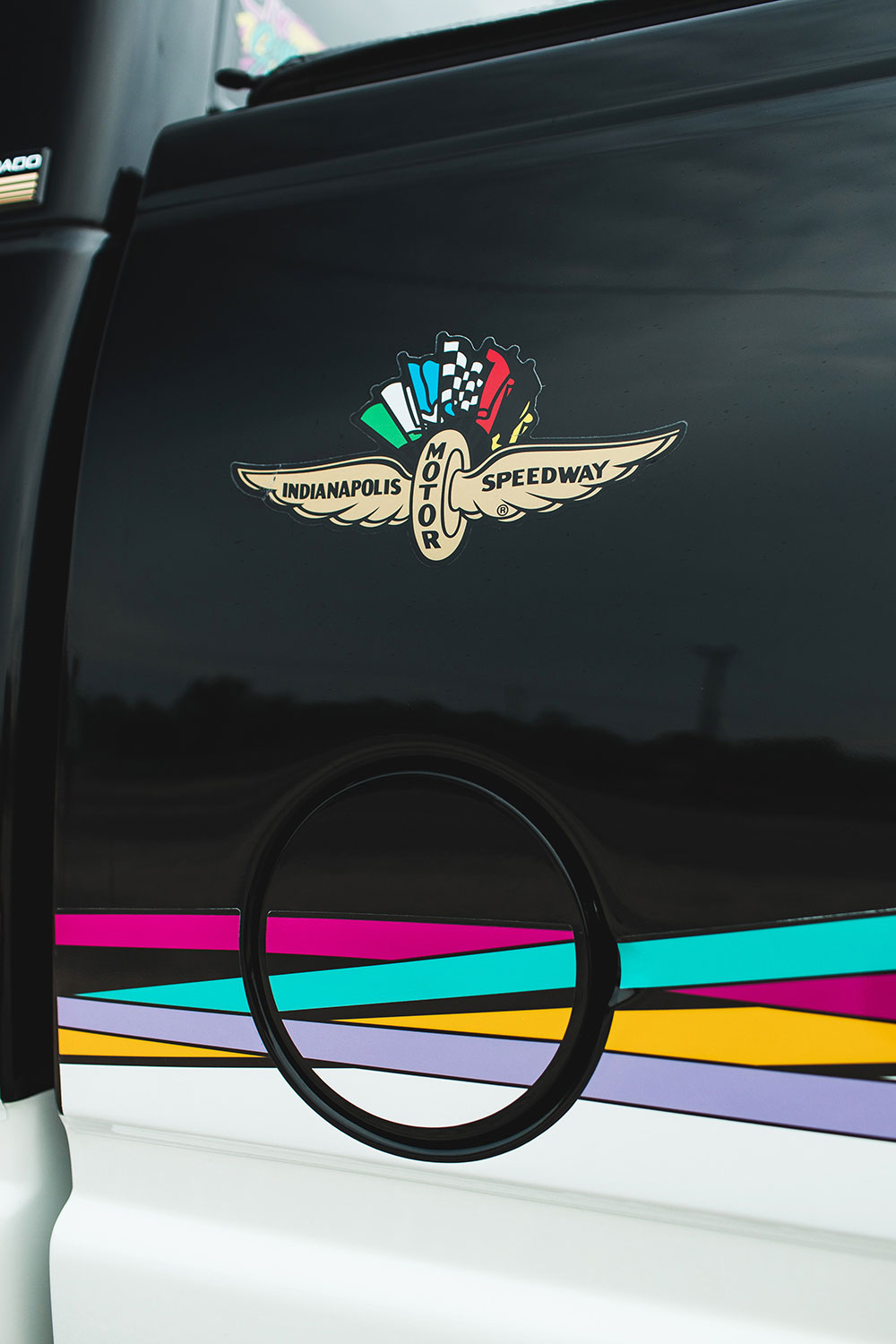
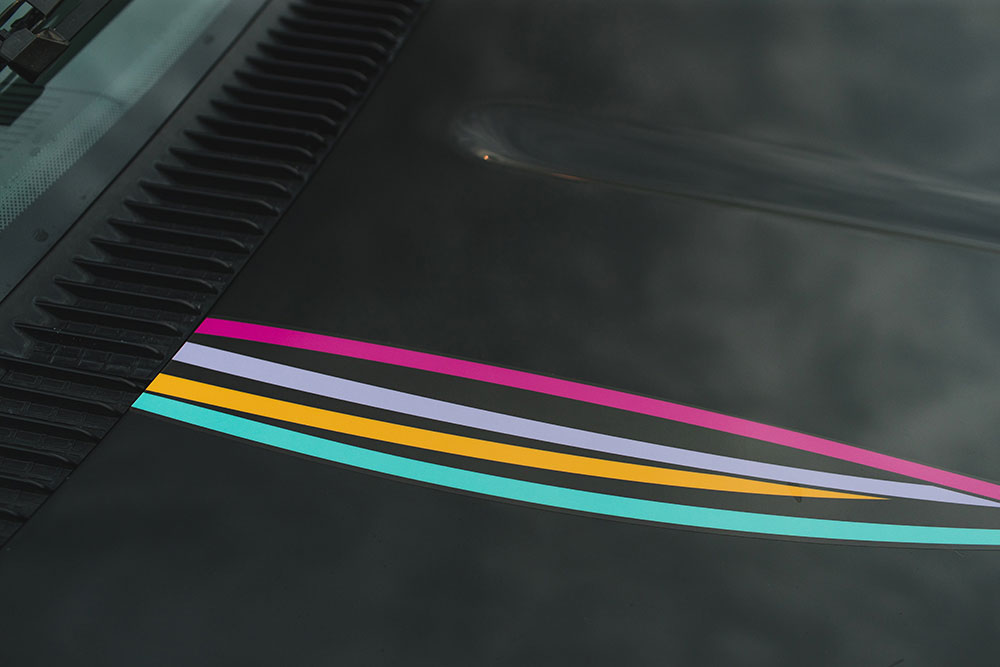
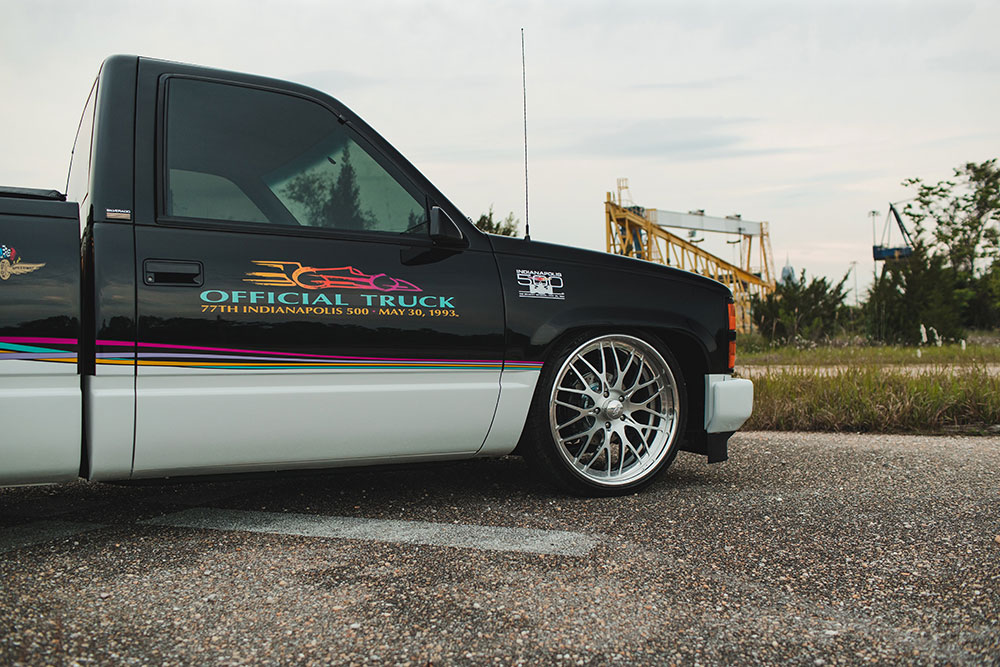
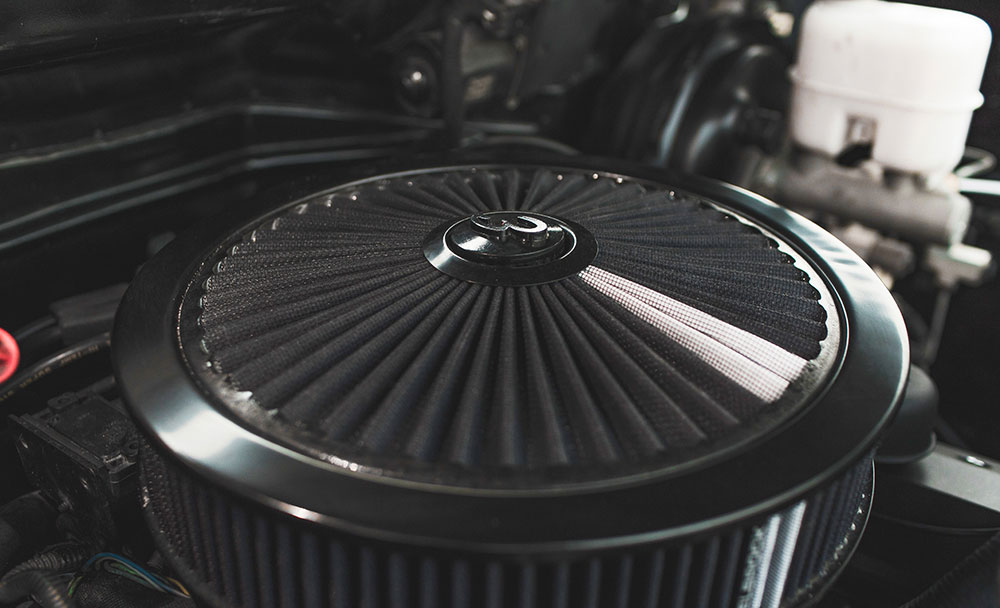
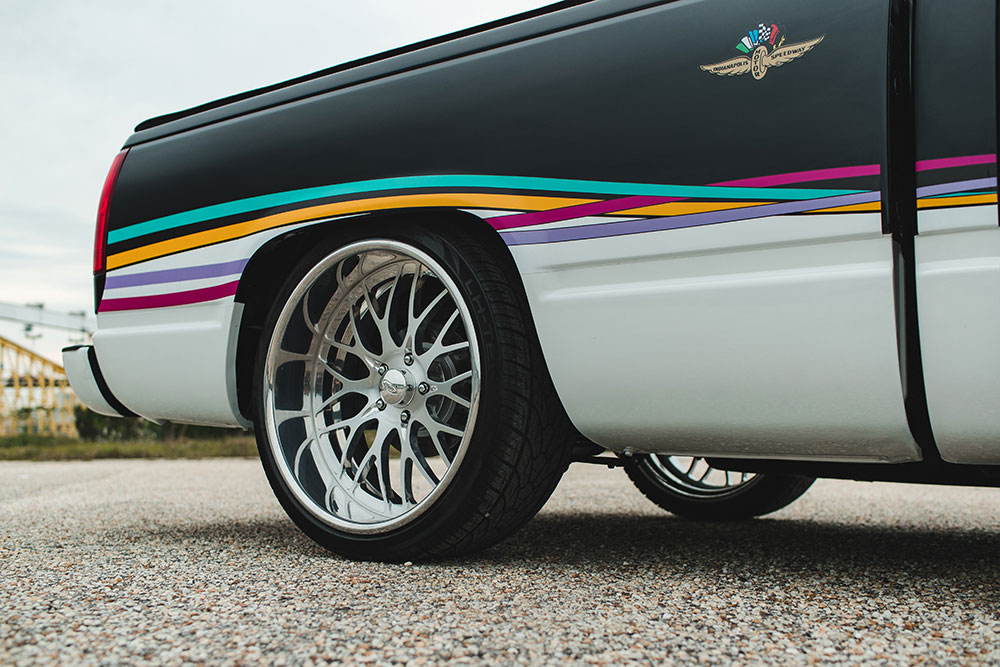
Ty Zito
1993 Chevy 1500 Indy pace truck
Relaxed Atmosphere
Prairieville, LA
1993 Chevy V-8 350ci
Engine buildup/modifications by Joe Gerbitz & Mikey Stinson
Comps Cams camshaft
Ceramic coated headers
Custom 3-inch exhaust system by Brent Kelly at Exhaust Pros, McComb, MS
Edelbrock air cleaner
New valve covers
1993 Monster 4L60 transmission by 3rd Coast Customs, Mt. Hermon, LA
Frame modification by Chris Stafford at C/K Syndicate, Tylertown, MS
Stock 1993 chassis
Weld-in notch under bed
Stone Fab coilover conversion w/ narrowed A-Arms and front sway bar
Aldan American coilovers up front, rear adjustable shocks
Belltech flip kit and rear sway bar
Rearend narrowed 3 inches by Jeremy at BH Fabrication
22-inch Intro ID313 wheels
285/35/22 Lionhart LH-TEN tires
Little Shop MFG drilled and slotted front brakes, rear disc brake conversion, NBS master cylinder swap
Summit White and Tuxedo Black by T.J. Maples & Joe Gerbitz @ 3rd Coast Customs
Slosh Tubz faux metal wheel tubs and fillers
OEM grille and bumpers restored
Classic Parts of America stock style replacement headlights
Spray-in bedliner
Shop: Lawrence Bergeron @ LB Upholstery, Kentwood, LA
Bench seat from Snowden custom seats
Gray leather and suede upholstery
New dash, dyed panels, custom kick panels and stereo install by Chris Stafford @ C/K Garage
Dakota Digital VHX gauges
Billet Specialties steering wheel
Sony head unit
Powerbass component speakers, subwoofers and amps
There’s an old joke: If God didn’t like drag racing, then the Bible wouldn’t say we should follow the straight and narrow. We’re not certain that’s necessarily true, but it sure hasn’t prevented the Robinson family team from finding success with two IHRA divisional championships along the way.
“After aging out of junior dragsters, I needed a car, and my dad had this 1955 Chevy that had been sitting since before I was born,” Matt Robinson told us about the car’s background. “He traded for it when he was 16 and drove it on the street until he went into the army. In 1975, he and my mom were married and drove away from the church in the same car. A year later, he decided to make the ’55 into his dream race car, and he raced it until 1984.
“Dad gave me the car when I turned 16, and we both worked to tear it down completely and update it,” Matt continued. “I raced it at Farmington Dragway while I was studying mechanical engineering at North Carolina State and actually won a bracket race just a few months after debuting the car.”
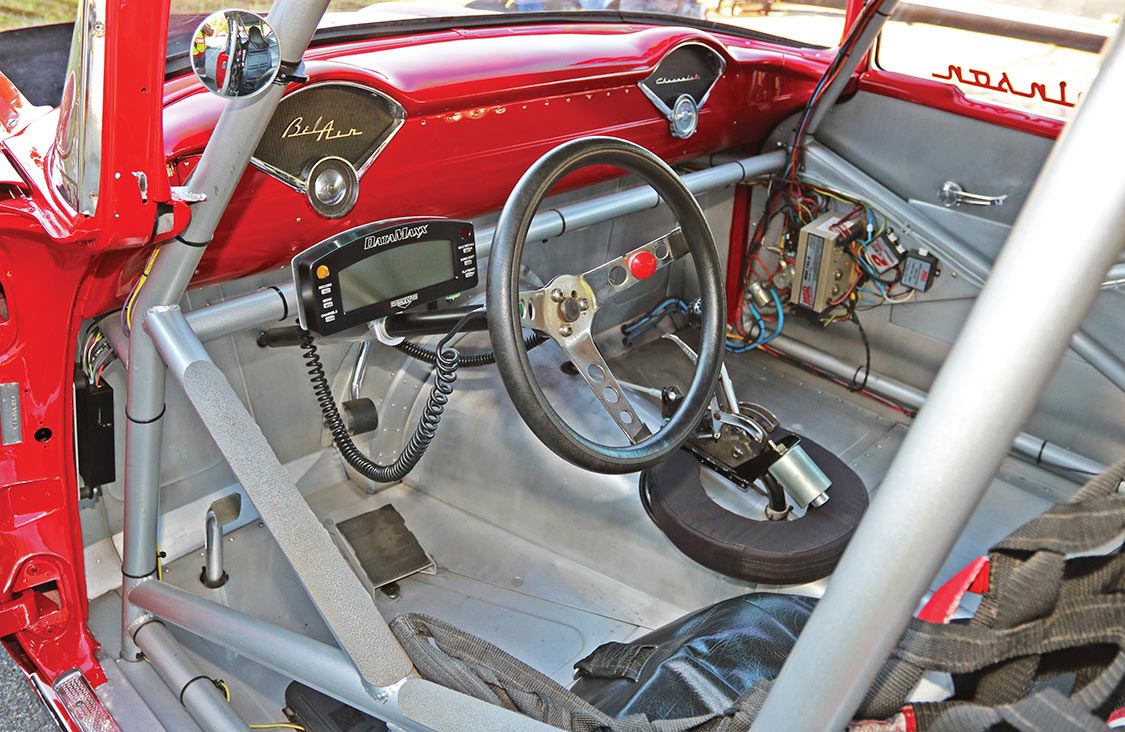
Matt and his father, Steve, relied on their hot-rodding skills to put together the 468-ci engine. Starting with a 1970 tall deck truck block, they used a GM forged crank with Eagle steel rods and Venolia 13:1 pistons with a 9-quart Milodon oil pan. The desirable factory GM 6272990 iron cylinder heads with rectangular ports, 119cc open combustion chambers and 2.19/1.88 intake/exhaust valves were bolted down with ARP hardware and then topped by a Weiand Team G single- plane aluminum intake.
A Crane flat tappet 134771 cam with 1.7 ratio rocker arms orchestrates the valvetrain, while fuel delivery is handled by a single Holley 1,050- cfm carb fed by an Aeromotive electric pump. Matt’s father, Steve, fabricated both the custom cowlinduction- fed air cleaner and the stepped Jet-Hot-coated headers to finish the job. Behind the engine is a Powerglide with a Hughes 5800 stall converter and an ATI transbrake.
Steve had already replaced the stock frame with one from a 1957 Chevy station wagon, which was a one-piece extruded California unit that was lighter and stronger than the original 1955 version. The car uses the original upper A-arms, while Jim Meyer Racing Products provided the lower tubular control arms along with a rack-and-pinion kit. Modified six-cylinder Nova springs, double-adjustable QA1 shocks and Wilwood disc brakes with 10-inch rotors were added to complete the front end.
S&W Race Cars supplied a rear back-half kit that Matt and Steve set up with Strange doubleadjustable shocks and Wilwood brakes. The Ford 9-inch rear houses 4.56 gears with a spool and Strange 35-spline axles. Hole Shot wheels were mounted on the front with Weld Pro Stars out back that mount 32.0×14-15 Goodyear Eagle D-1984 slicks.
Joe Shuller painted the car in Victory Red basecoat/clearcoat. Darryl Slaughter and Matt did the bodywork, while VFN Fiberglass provided the front end. Sam Presnell did the painted trim and graphics. Steve did the custom steel and aluminum interior and all of the original glass was replaced with Lexan.
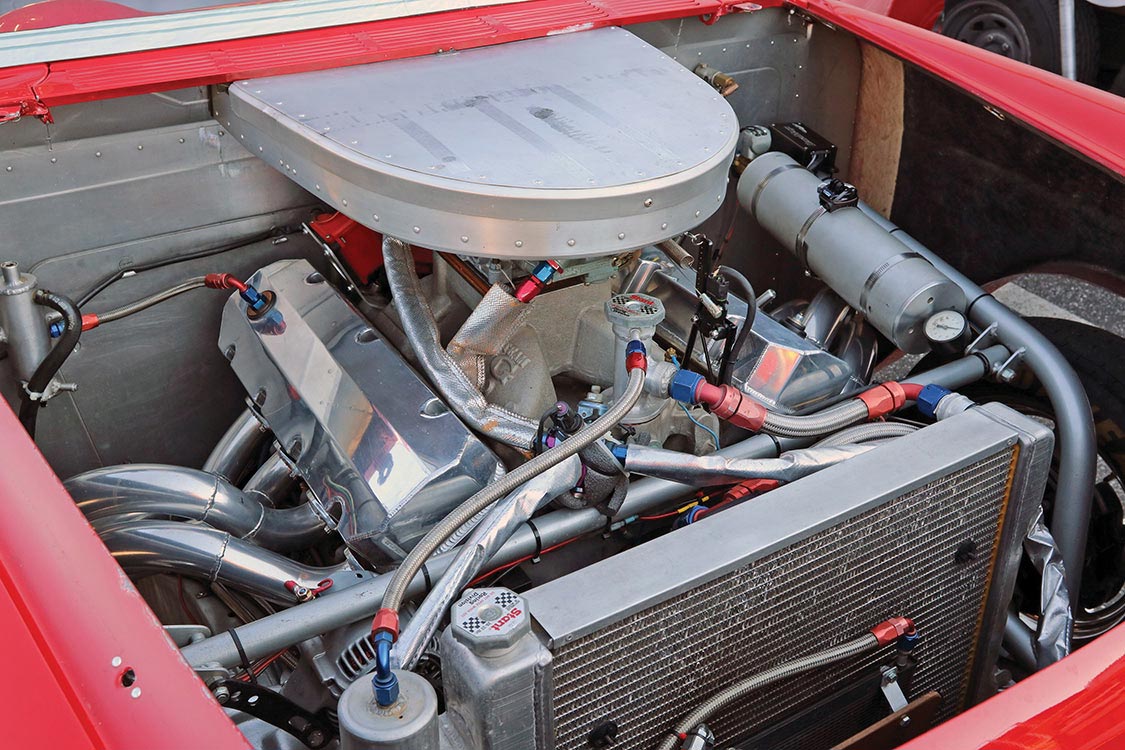
“After a few years, we decided to try IHRA Hot Rod, which is a headsup 7.00 index class on the eighth-mile,” Matt said. “I was able to win the IHRA Division 9 championship in 2010, and then again the following year. In 2012, we had another win and a runner-up finish in Division 9.
“That winter, we added a Computech DataMaxx data-logger with an LCD dash display,” Matt continued. “It has been invaluable in chasing down issues. We were just getting things sorted out this year when the engine blew, and I flipped the car during the President’s Cup at Maryland International Raceway. I thank God that I wasn’t hurt, and we were left with a race car that we could fix. I will never drive another race car without a diaper. Now we have the opportunity to rebuild, modify and improve so we have an even better race car than before.”
While Matt and his father have tasted both success and adversity with their car, the story of this racer tells of a family history that really couldn’t be replaced by anything else. Matt intends to complete a seminary degree, and Steve continues to build hot rods near Asheville, North Carolina. For both, there’s little doubt that there are still many good chapters yet to be written.
Editor’s Note: A version of this article first appeared in the June 2017 print issue of the Drive Magazine.
I’m a fan and regular viewer of PowerNation’s popular Truck Tech. Truck Tech gives viewers insight and information from the mechanic’s perspective. Their knowledge definitely helps guys like me understand and appreciate all the work that goes into these kinds of projects. They spotlight everything from simple repairs and upgrades to full-blown rebuilds. I get inspired every time I tune in.
Recently I had the opportunity to chat with one of the hosts, Lawrence “LT” Tolman and find out a little more about him, the show, and some of their upcoming projects. LT and I met up at SEMA to catch up and talk about the future of Truck Tech. Here’s a little of our conversation.
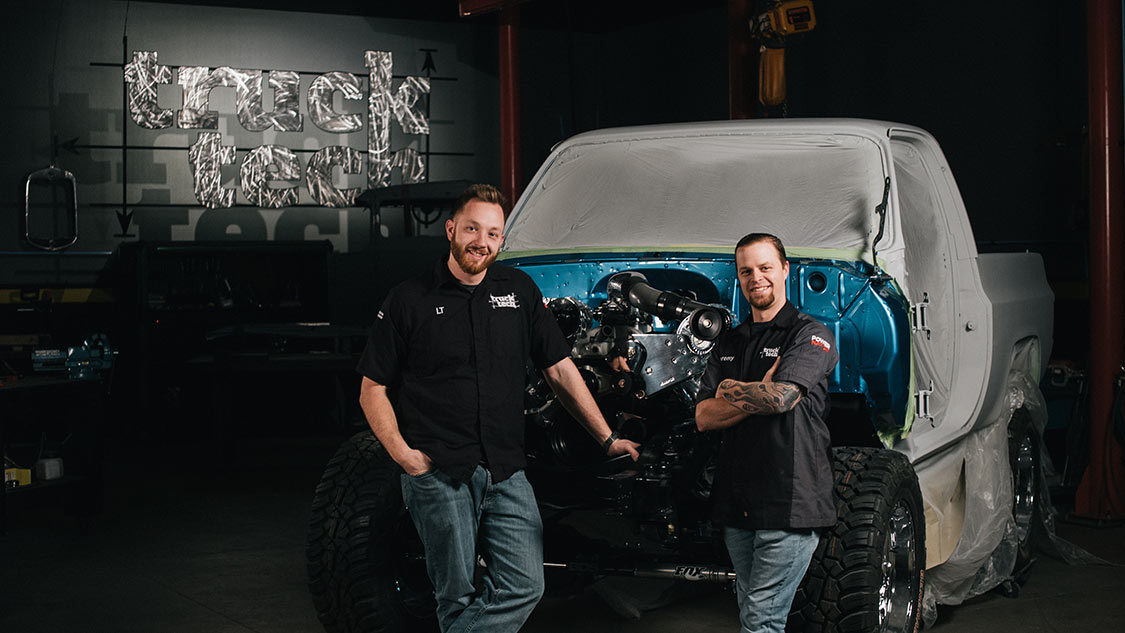

D!: LT, thanks for taking time to share your story with our readers. Let’s start with a little history on you. How did you find yourself on Truck Tech? Have you always wanted to be a TV show host?
LT: Well first of all, I never imagined I would be a TV host, nor was it even on my radar of possibilities of a career path. I grew up with a keen interest in all things mechanical, I guess I just had a knack for it, and I knew I wanted to do something with my career automotive related, I just wasn’t sure what. I always have had car and truck projects I’ve been working on, and constantly pushed myself to learn more aspects of automotive customization and repair. I bought my first truck, a ’76 Chevy C/10 when I was 13 years old.
It needed some major body repair, as I lived in the north, and the truck had rusted out. I started by learning how to take fenders off, and doors apart, and how to weld in patch panels to repair rust, and eventually how to do body work, prime and paint.
Then, I moved onto the mechanical stuff, like rebuilding the suspension, swapping in a larger engine (a 472 Cadillac V8), changing the trans, and so forth. I went to college and got a degree in Business Management with a minor in Mechanical Engineering, but always had a passion for building cars.
I’ve been a long-time viewer of the entire PowerNation TV shows, and have been a loyal viewer for many years. In late 2014 they ran a commercial saying they were looking for a new host, and you were to make a video showing some of your work, and I thought “that would be an awesome job, but there’s no way I’d ever be chosen”, so I let the opportunity pass by. But, a couple months later, they ran the same commercial again, and my wife encouraged me to apply for it, because she knew I had what it took. So the short version is, we made a video, and they must’ve liked something about it, because here I am.
D!: What’s a typical day filming Truck Tech?
LT: There is a lot that goes into filming a TV show, and it varies day to day. Part of the time is spent writing scripts, ordering parts, and planning out the show, but most of the time is actually working on the projects while filming it.
Compared to what guys do at home or in their shops, filming a television show slows work down considerably, so a project that might take the average guy 2 hours, might take us 6, because were constantly changing shots, adjusting studio lights, cutting audio lines, etc…
D!: The show is very informative. Will you share the details of your most challenging project so we get a sense of the obstacles you and Jeremy face to bring the show to life?
LT: Probably the biggest challenge of making a “how-to” television show, is choosing what is important enough to make it in the show, and what we have to skip over. Our episodes are 30 minutes, which seems like a lot, but the time goes by quickly, and there is a lot of “tech” we have to skip in order to complete the project in the allotted TV time.
Also, we have to remember our audience is a mix of amateurs and professionals, and as seasoned builders we take the basics for granted, but we always try to remember to show our viewers a good mix of basic and hard-core tech.
D!: How do you and your team get ideas for your episodes?
LT: For the most part, it’s up to my co-host Jeremy Bumpus and I to pick what we think is “cool” and our viewers would enjoy. Usually, its something that he or I have always wanted to build. For example, project “SuperMax” is something that I’ve wanted to do for a very long time, and we had the perfect opportunity on the show to build it, so we did.
As long as its something our viewers would enjoy, and we have good “tech” to show along the way, it usually makes a good project. At the end of the day, our job is to teach and encourage our viewers, and to get them out there, and try what we’re doing for themselves.
D!: You guys showcase a lot of new products. We’re always interested in the next cool thing. What’s the next cool thing you have seen?
LT: I’m really impressed with advancements in the retrofit fuel injection market. Guys can take an old-school engine like a nailhead or flathead, and put electronic ignition and “self learning” fuel injection, which will increase power, and make an old engine more usable, and not require a degree in computer science. I am also impressed with advancements in CAN bus electronic solutions, making it possible to swap engines in new cars, and maintain OE levels of functionality.
D!: You are a big fan of the diesel platform. What are your favorite things about the diesel engine?
LT: The stereotype many people think of when you say diesel is a big pickup or semi, or piece of industrial equipment that’s used for hauling, construction, farming, etc. Outside of the stereotypical “truck guy,” most folks don’t think about using a diesel powered vehicle as a daily driver, mostly because their haven’t been that many domestically available options, and a ¾ ton pickup isn’t always the best choice for people living in the city or commuting.
So I am excited to see more diesel engine options in ½ ton trucks like the Ram EcoDiesel, and Chevy just announced a diesel for their Silverado 1500. There’s the Colorado with the 2.8 diesel, plus, for car folks, there are more options like the Chevy Cruze, plus BMW, Porsche, Audi, and VW all offer diesel powered cars/SUV’s.
There are two things I love about diesel engines: its fuel efficiency and power potential. Compared to gasoline engines, diesels generally uses much less fuel to do the same amount of work, given an apples-to-apples comparison. Remember the TDI Jetta’s that would get 50-some MPG?
Aside from the stigmatic “diesel-gate” scandal, VW’s diesel compact car is a win-win, especially considering its gasoline powered counterpart would top out in the mid 30mpg range.
Secondly, my specialty is high-performance, and diesel engines can see tremendous power gains with simple changes to tuning, while still getting great fuel efficiency. For example, any of the big three’s HD trucks can be tuned to easily make 100hp over stock (and usually 200lb.ft. of torque) without changing any hard parts, plus, still remaining 100% emissions compliant.
And once you start changing things like intake and exhaust, those gains can go much higher. Comparatively, in a gasoline engine, if you see 40hp from a tune only, that’s a good day.

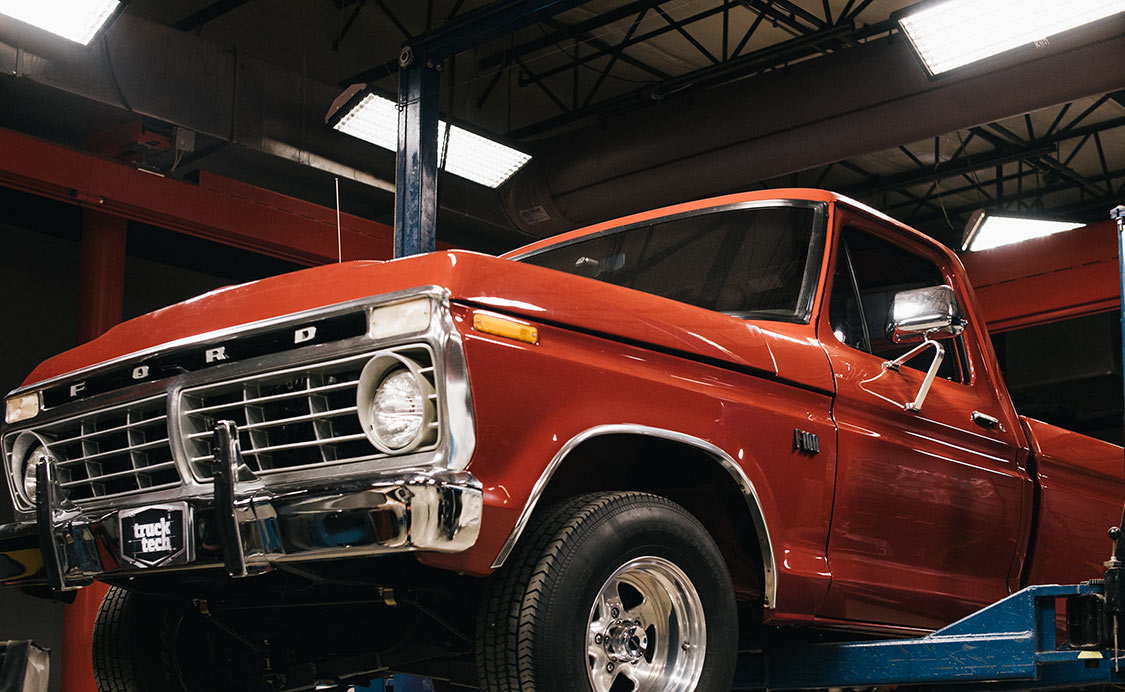
D!: What do you think the future of “old-school” hot rods will look like now that consumers have more hybrid, electric and possibly hydrogen fuel options?
LT: I don’t think the traditional hot rod or muscle will ever go away, it’s just too big a part of American car culture. There will always be gasoline powered V8 cars tearing up the back roads and sitting at car shows on Sunday mornings. Detroit continues to pump out red blooded American muscle cars like the Hellcat, CTS-V, ZR1, and GT350/500 Mustangs.
And these days 700hp off the show-room floor is commonplace. Plus, even the sport compact segment is growing at rapid rates, with new entries like the Focus RS and Civic Type R. And while many don’t consider those to be “hot rods”, to the younger generation, these are the modern muscle cars.
But what I’m excited to about is watching the “high-tech” hot rod market evolve. Exotics and “hyper cars” have been offering hybrid performance cars for some time now, which use a combination of electric and gasoline power to produce phenomenal performance figures, so its only a matter of time before someone starts to adapt that technology into an older vehicle.
And just like you can swap a gas engine for a larger more powerful one, I can’t wait to see someone take a car like the Tesla (which already has incredible performance) and swap in a much more powerful (or additional) electric motor. Hot rodding will never die, the methods just will just to adapt and evolve.
D!: You’re a family man and father. What do you daily-drive?
LT: Well I’ve always been a truck guy. And though I’ve owned a couple muscle cars here-and-there, it seems like I drive trucks more than anything, and just about every one of ‘em has been a Chevy. Right now, I drive a LMM Duramax-powered ‘08 Silverado 2500HD crew cab. For my needs, it’s a do-all, best of all worlds vehicle.
There’s a ton of room in the back for booster seats, it’s roomy and comfortable on longer trips, it’s efficient for its size, and I can haul or tow anything I want. But most importantly for me, is the performance potential.
Right now, it is pretty close to stock, but doubling the power of a Duramax is super easy. So, I hope one day to build the bottom end, upgrade the fuel system, add compound turbos, and have an 8-900hp daily-driven diesel pickup, that can still be efficient, reliable, and haul a trailer.
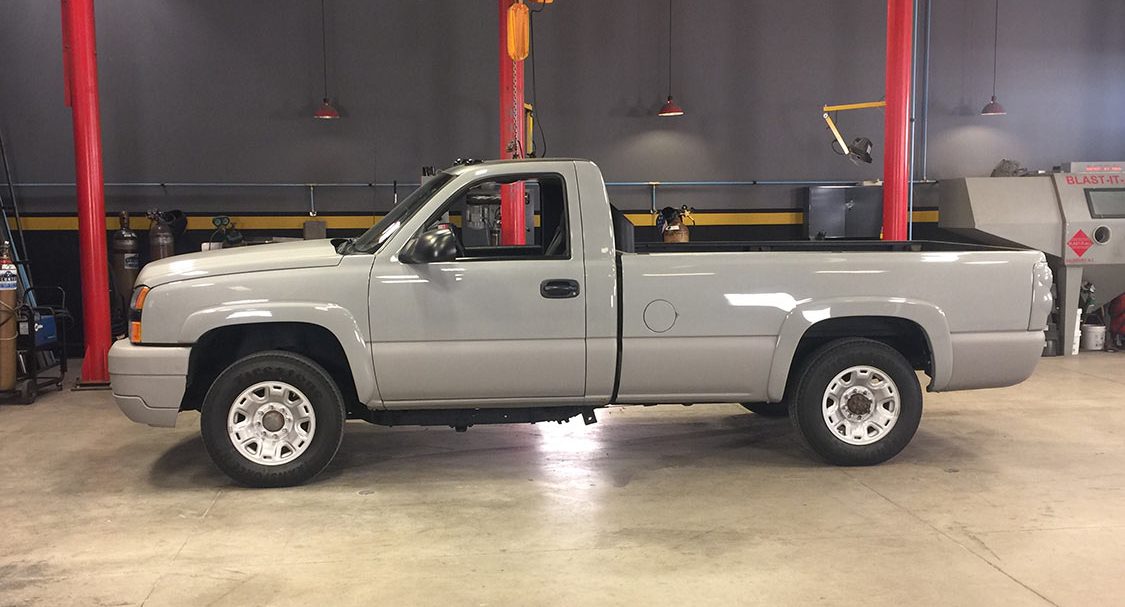
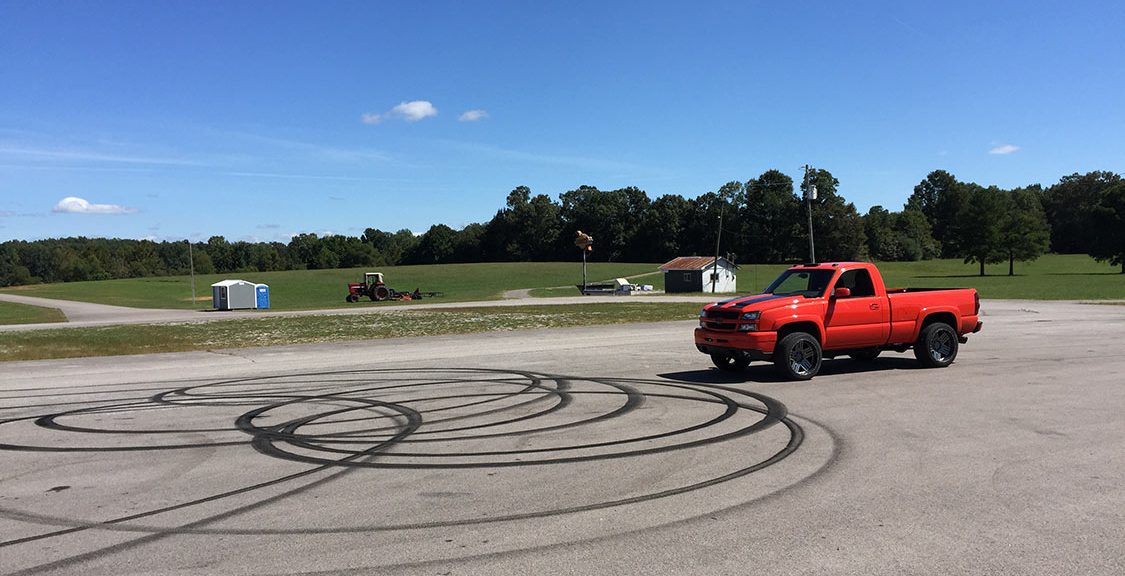
D!: What’s your dream car?
LT: Easy. It’s a Koenigsegg One:1, a Swedish Megacar that achieves the “golden ratio” of one horsepower per kilogram of weight.
However: While exotic cars are cool and all, Ill probably never own one, and if I did, I’d probably be too afraid to drive it, for fear of someone parking too close, rock chips, speed bumps, other motorists, etc… For me, a dream car is one you make your own. I’d rather take simpler car, upgrade the power, looks, handling, interior, and be able to enjoy it every day. And don’t forget, a car you customize to your tastes will also be a one-of-one.
D!: What’s the worst car you ever owned and why?
LT: I’ve had pretty good luck with cars, mostly because I can spot potential problems before buying, and I can make any repairs needed. So, I guess I’ve never had a bad “lemon” type car. But the worst, rather, most embarrassing car I’ve owned, would be a mid-90s Pontiac Bonneville I bought in college for $300. I drove it for a few months, fixed a few problems, and soon traded it for (you guessed it) a Chevy Truck.
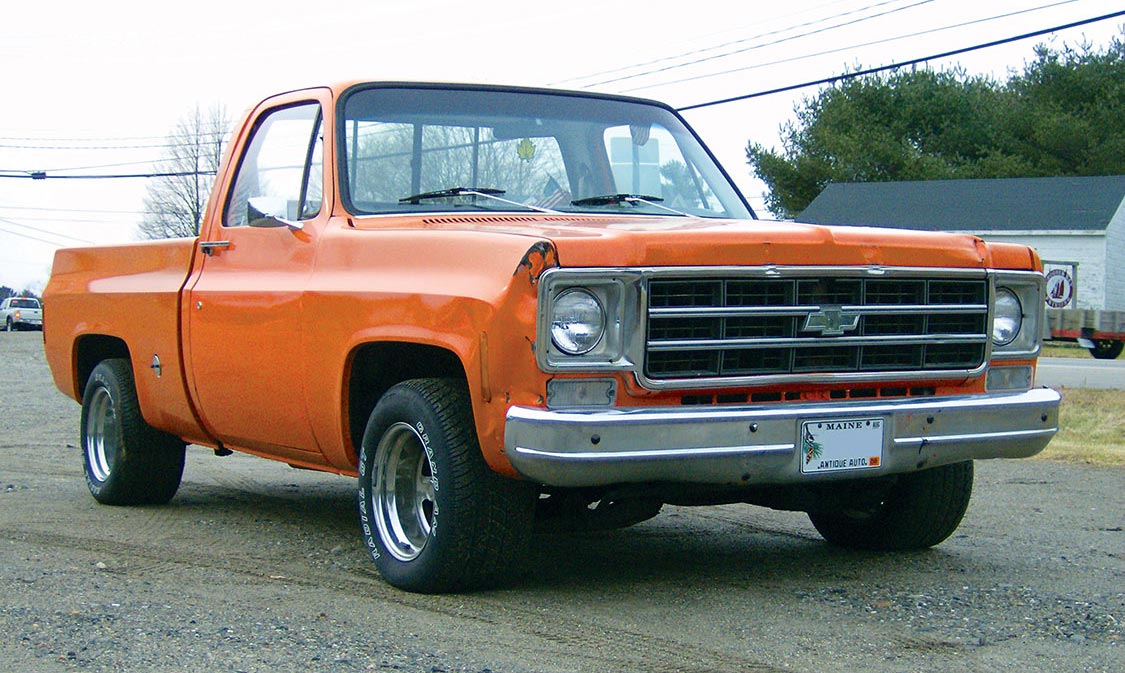

D!: Any advice for our readers that are considering careers in automotive repair and restoration?
LT: You’ve heard the saying “do what you love, and you won’t work a day in your life”. So, I say, If you enjoy working with your hands, do it! The country is in need of skilled technicians in the automotive industry, and really, in all skilled trades. While many kids are taking the traditional career path, there is nothing wrong with learning a skilled trade, and going to work. In some cases, its easier and quicker to find a job, and sometimes starting salaries in the trades can pay more than traditional 4 year college degree jobs.
D!: What do you and Jeremy have in store for your viewers this season?
LT: Right now, we have a cool range of project vehicles were building, in several styles, ranging from a 1930 Ford Model A traditional street rod, a late 80s K5 blazer in a show-truck flavor, a ’74 F-100 corner carver, and we also have some new exciting projects we can’t yet talk about, but stay tuned!
D!: For sure. Thanks, LT.
Be sure to check out Truck Tech and the whole PowerNation family of shows Sunday mornings on the Paramount Network, and powernationtv.com
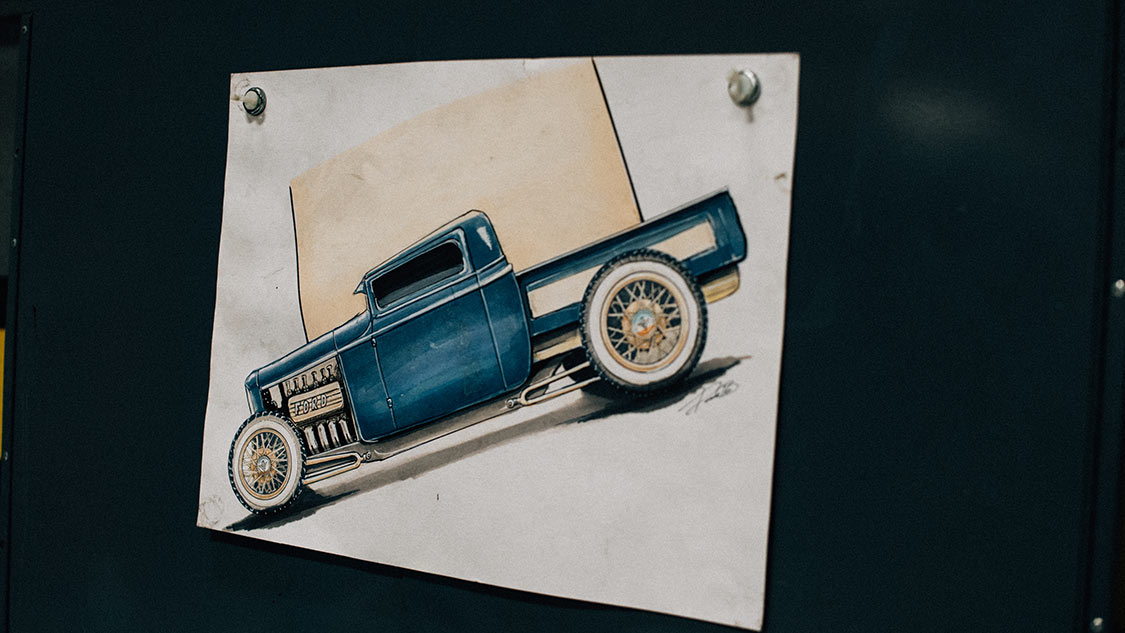
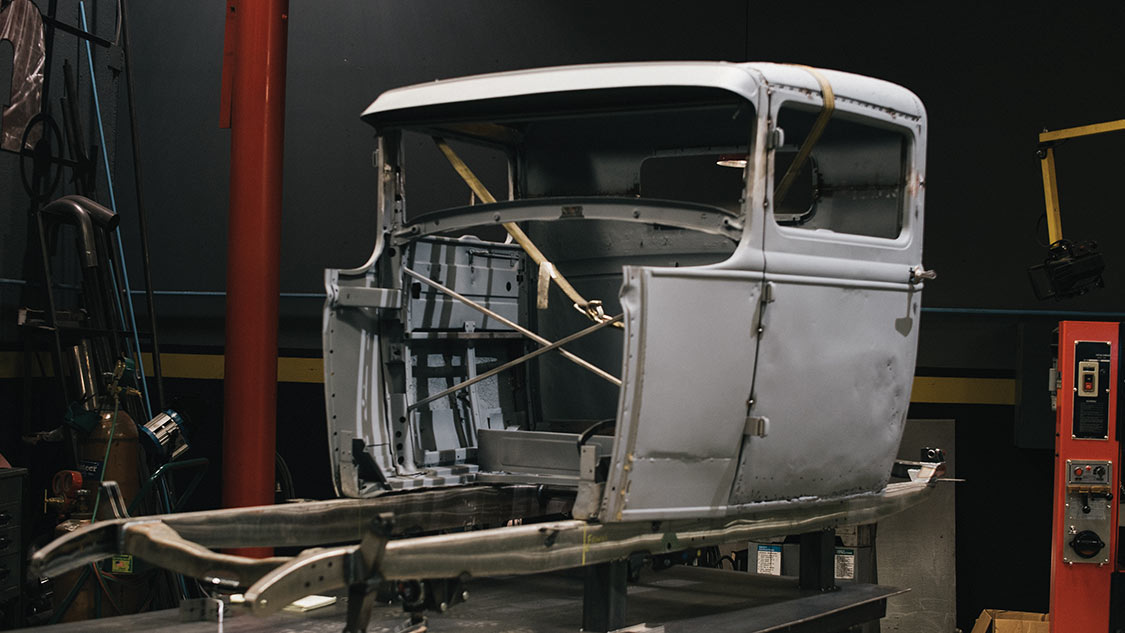
Editor’s Note: A version of this article first appeared in the April 2018 print issue of the Drive Magazine.
John and Janell Quigley live in Huntington Beach, California. When John is not making his daily stops at industrial and automotive shops in his Cornwell Tools truck, he can be seen cruisin’ nearby Pacific Coast Highway in his ’56 Chevy Bel Air 4-door. That’s right a four-door.
The norm for hot rods, customs, classics and muscle cars has been a 2-door models. Four-doors have been stereotyped as a family or old folks car. But, if a 4-door is built with the same intentions as a cool 2-door, it can be cool too. And that’s what John set out to do. Let’s see how he accomplished his mission.
Ever since he was a little kid, cars were John’s passion, and for practically all his life he’s been part of the custom car scene. Given his love of cars, over the years, he has built a number of very cool custom rides out of his garage. His latest creation is this ’56 Chevy Bel Air 4-door sedan. This car has an eye-catching two-tone Crocus Yellow and Black paint scheme.
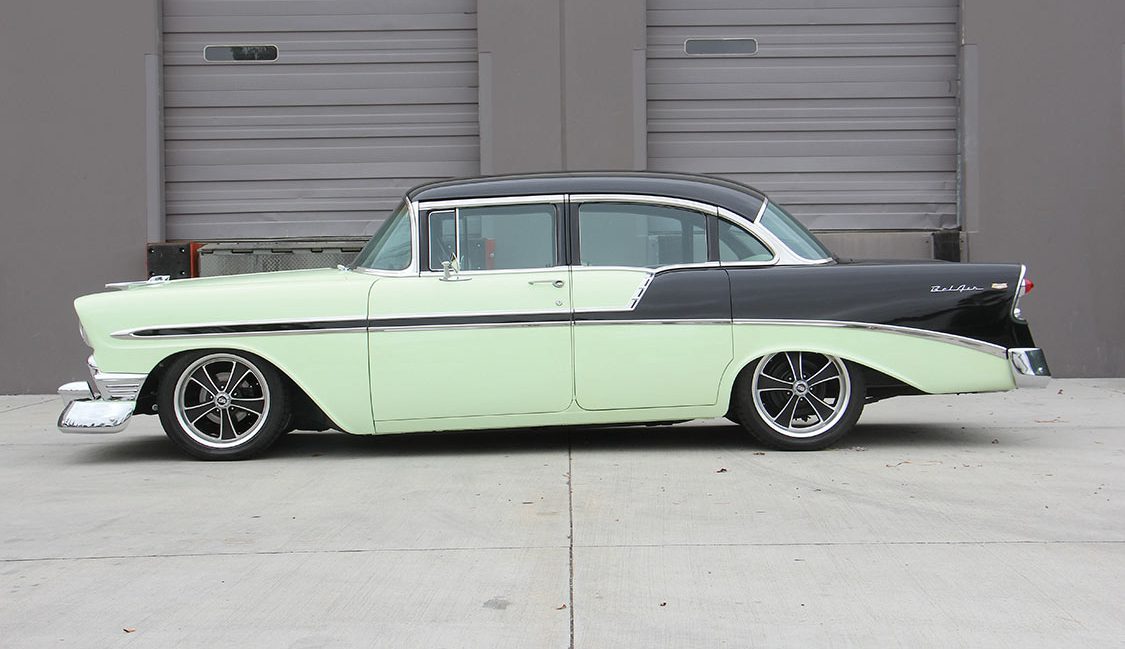
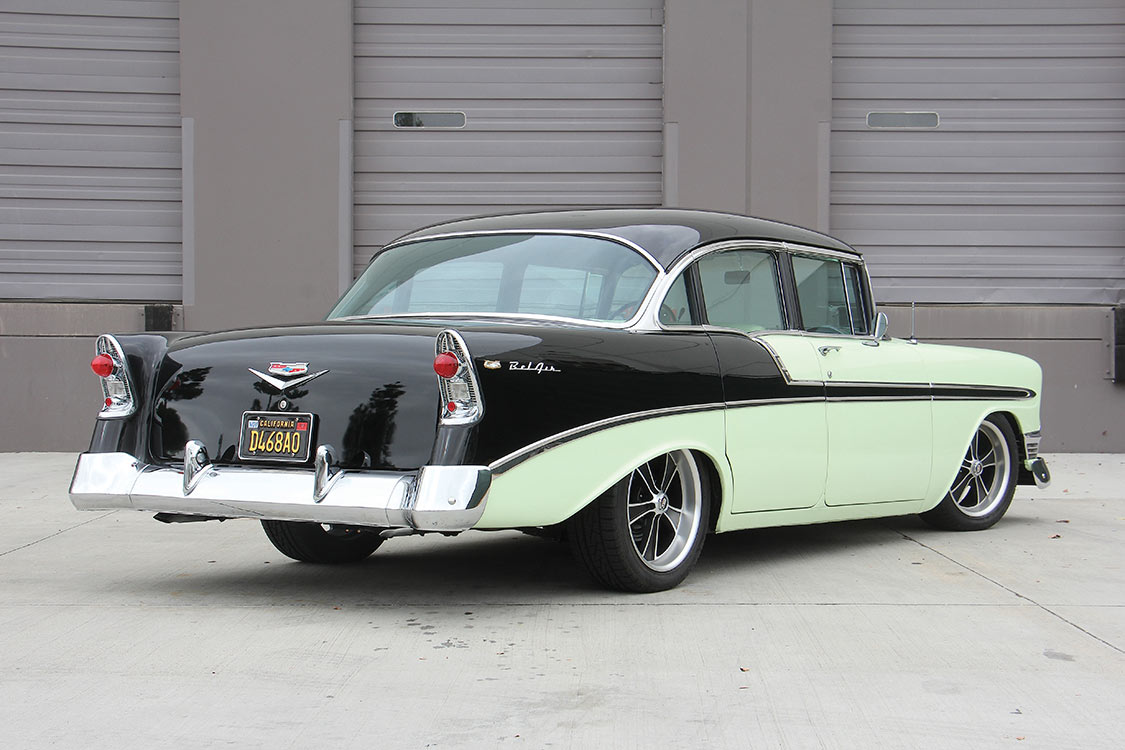
Here is the short version of the car’s timeline. In 1956, this car was bought new from Capital Chevrolet in Salt Lake City, Utah. For the next 20 years, it was driven very little around Salt Lake City.
In 1976, the car was taken away from the elderly gentleman by his daughter. He was bumping into too many objects, becoming a danger to himself and others. It was parked in the family barn with 86,000 original miles on the odometer. In 2010 a potential buyer discovered it stashed away in the barn.
He purchased this treasure from the original owner’s daughter. The buyer intended to restore the Bel Air. He rebuilt the factory 265 ci V8 engine and refurbished the drum brakes to get it road worthy. After losing his ambition, the car was put on e-Bay. That’s when John found it, noticing it was in very good condition. He was able to see beyond the ugly ‘70s Earl Schieb green paint job.
Always being one to build weird stuff, John thought to himself how he could make this ’56 Bel Air 4-door cool? After pondering, a vision came to him, John made a bid of $5,500.00 on e-bay. His bid was unchallenged and the 4-door was his. After taking delivery, John drove it around the block a couple of times and it performed to his satisfaction. It was then parked inside his two-car garage.
Starting the very next day, the challenge of making this 4-door cool ride was on. John took four-years creating this unique custom build. He began by carefully disassembling, bagging, labeling, and sorting parts and pieces. All of the body and window stainless molding was straightened, massaged and then polished by John.
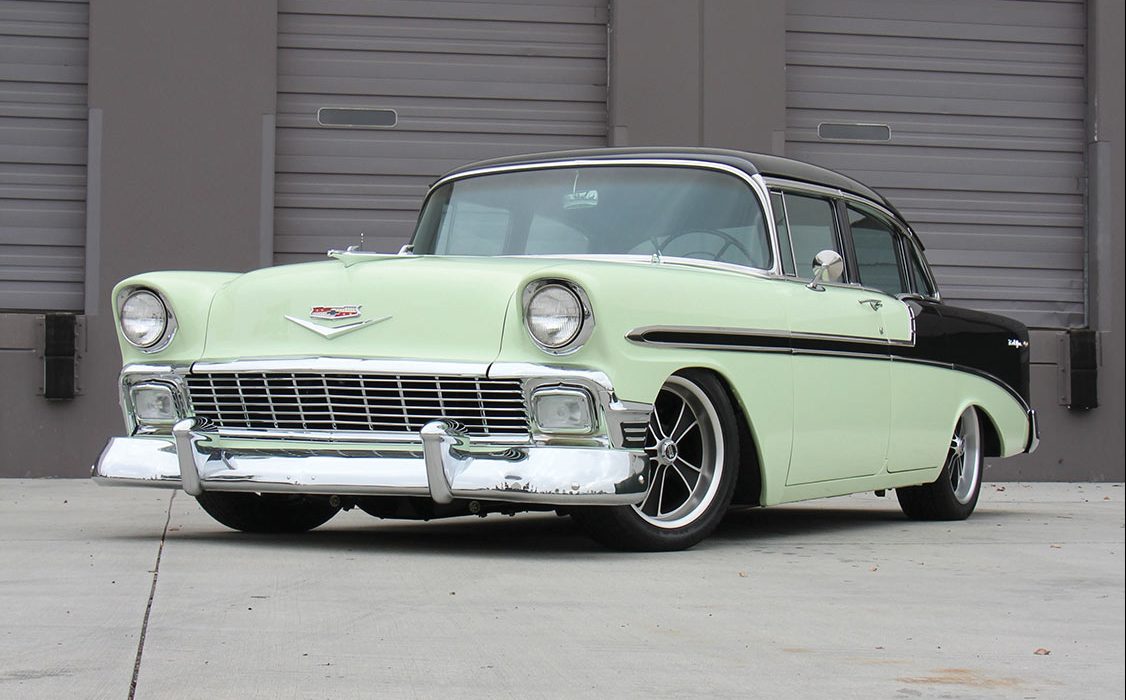
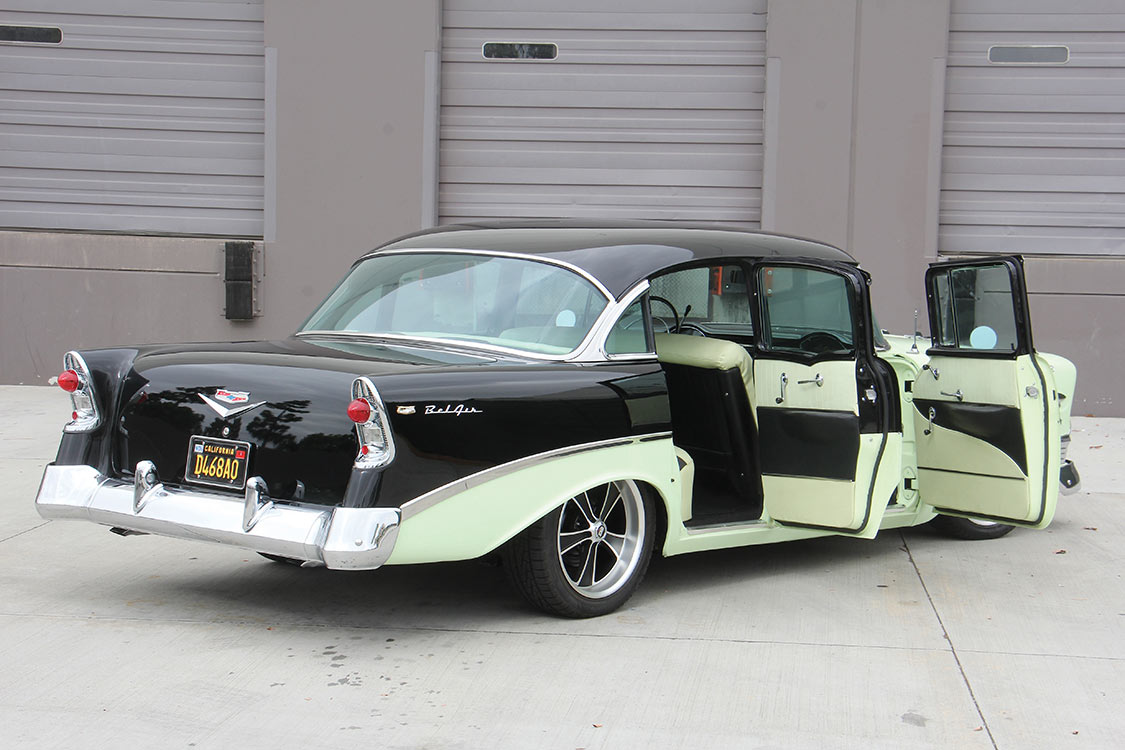
To achieve the proper ride height up front, two pairs of Global-West upper and lower control arms were bolted to the front suspension pickup points. A pair of two-inch drop spindles were sandwiched between the control arms.
To achieve an even lower stance up front, John purchased a pair of CPP two-inch lowering springs that were even cut two-inches more making the nose have a six-inch drop. To dampen and control the front shock frequencies a pair of KYB gas filled shocks were installed.
A pair of American Brake & Steering (ABS) Performance front disc brakes with 11-inch rotors and dual piston calipers were installed. To distribute the proper braking performance both front and rear, an ABS master cylinder and power booster were installed and plumbed by John.
The Bel Air’s rear suspension was altered by installing a pair of Car Shop two-inch lowering leaf springs. With still to much of a rake, a pair of Speedway Motors three-inch and one-inch lowering blocks were installed under the rear axle housing to achieve a slight forward raked stance. Just like in the front, a pair of KYB gas filled shocks dampened the rear suspension contributing to the Bel Air’s superior ride quality. A pair of completely rebuilt standard factory drum brakes supplied ample braking in the rear. Just as important as the stance was the wheel and tire combination.
Up front John added a pair of Rev 106 Classics, black with machined aluminum face wheels 17×7 with 4.0 backspacing consumed in a pair of Sumitomo HTR A/S P02 215/50R-17. Out back a pair of matching Rev 106 Classic wheels, black with machined aluminum face wheels 18×8 with 4.5 backspacing were installed. The wheels were wrapped in Sumitomo HTR Z255/40R-18 rubber.
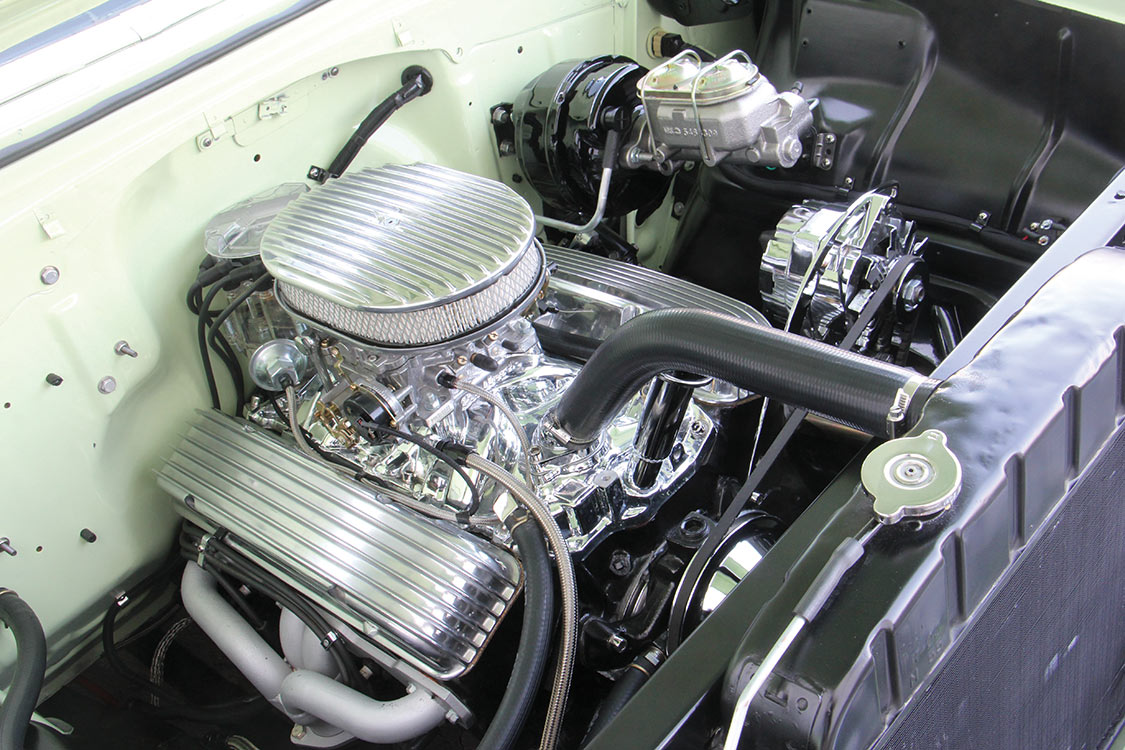

Under the hood, we discovered the original Chevy 265 ci engine that had been machined .30 over and equipped with quality performance internal components. To achieve better air/fuel mixture, an Edelbrock 1403 Performer 500 cfm 4-barrel square-bore, dual plane, Endura Shine Carburetor, was fitted with a Speedway Motors 12-inch oval, finned, polished, aluminum “Classic Nostalgia” air cleaner and paper, pleated filter. They were bolted atop an Edelbrock 27034 polished aluminum Intake Manifold with a chrome oil filler neck and filter breather cap.
Engine cooling was maintained by a GM water pump, the original GM radiator was boiled out, then relocated in front of the factory core support to achieve additional room. The ’56 factory core support was offered in two locations, one for the V8 and the other for the longer in-line six-cylinder. This allowed more room for the Spal electric fan.
The engine fuel and vacuum lines were braided stainless with quick release connectors. To deliver a constant electrical charge a GM 110 amp chrome alternator was used. The engines hot spark was created by an MSD Blaster ignition coil. An MSD HEI distributor delivered spark through a set of MSD 8.8mm black ignition wires.
To clean up the fire wall, the Optima Yellow Top battery was located and secured in the trunk. John was responsible for the immaculate electrical wiring, solid fuel lines and brake line plumbing. The factory pulleys were sent out and chromed, along with the timing chain cover. A pair of Cal Customs polished aluminum finned valve covers were purchased at the local Long Beach Swap Meet then stored in John’s garage rafters for 12 years before being pulled down and installed to finished off the engine.
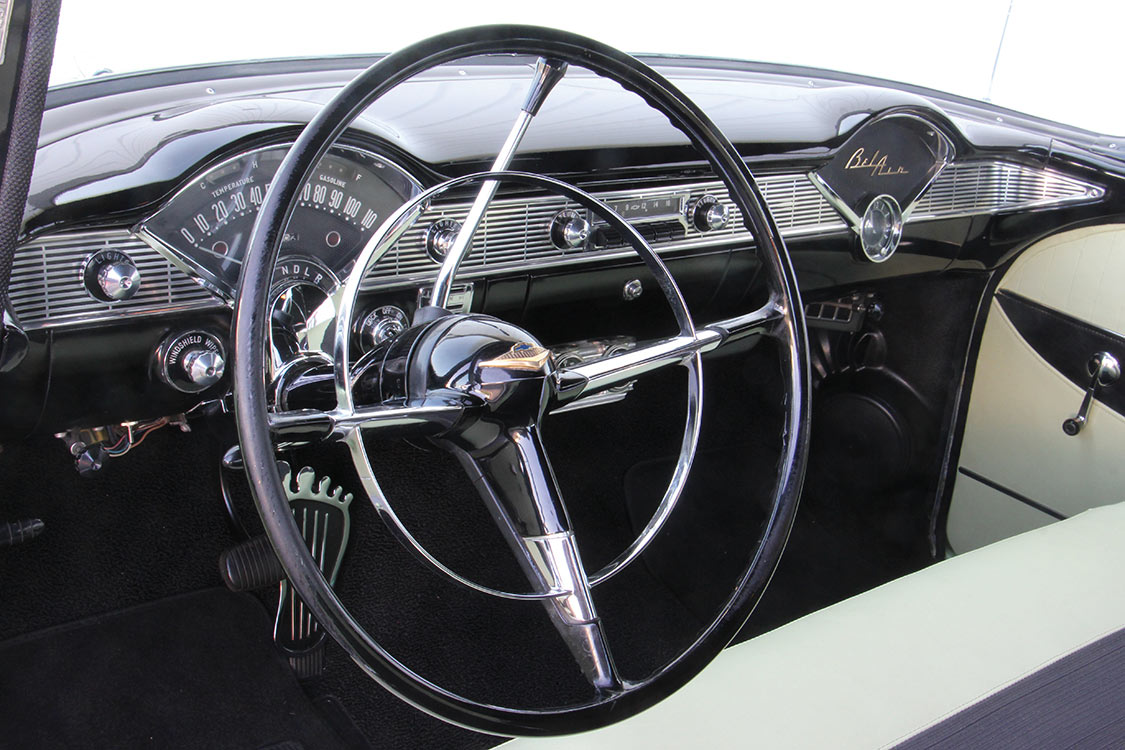
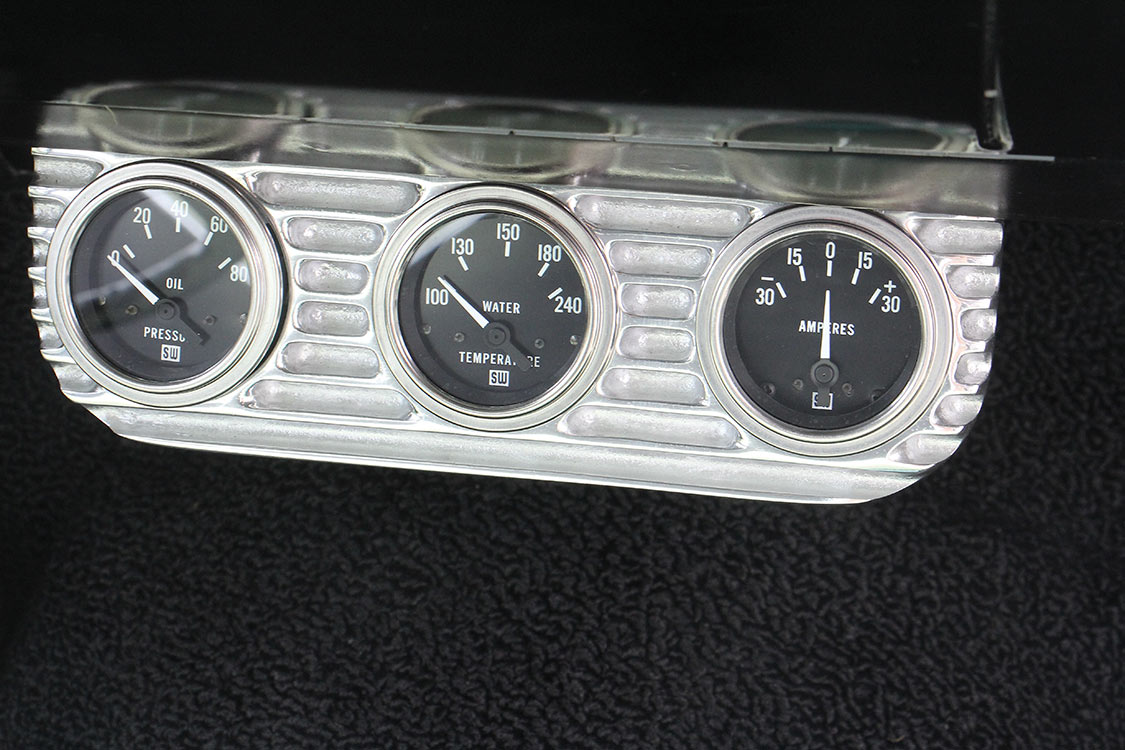
A pair of generic 2 1/2-inch diameter block hugger headers collected into the custom 2 1/2-inch diameter X-pipe exhaust flowed into a pair of Magnaflow off-set mufflers. A GM 700R4 4-speed automatic transmission was cooled by a frame mounted GM transmission cooler. The original ’56 driveshaft was removed and sent out to be shortened and balanced by O.C. Driveline in Placentia, California.
The stunning exterior two-tone colors were actually offered as the factory colors back in 1956. They were replicated again by Isaac Rosa and his crew at RC Empire Auto Body in Orange, California. When John purchased the car, the body was in good shape. Isaac did some minor body work before laying a couple of coats of sanding primer.
The car was then block sanded to ensure the entire surface was straight and smooth. To camouflage the four-door appearance, John shaved the back door handles. This gave an illusion that the back doors didn’t exist. Pro-Spray water base Crocus Yellow and Pro-Spray water base Black were used to achieve the factory two-tone paint scheme.
The front grille, turn indicators, headlights rings, bezels, hood ornament and badging were purchased from Danchuk Manufacturing. The original front bumper was traded at the local Long Beach Swap Meet for a re furbished chromed one. John’s determination to salvage the original rear bumper took hours of elbow grease and polishing to achieve its show-quality appearance. John also restored the original stainless body and window moldings. Fortunately all of the original glass was in immaculate condition.
As we opened the four doors of the Bel Air, we noticed the GM ’56 original interior with cloth/vinyl, black/yellow, two-tone seats covers, door panels, and headliner were salvaged and cleaned. The original carpet was replaced with new black carpet. The refurbished upholstery stitch craft was done by Martine Gurterez at T3 Custom Interiors in Orange, CA.
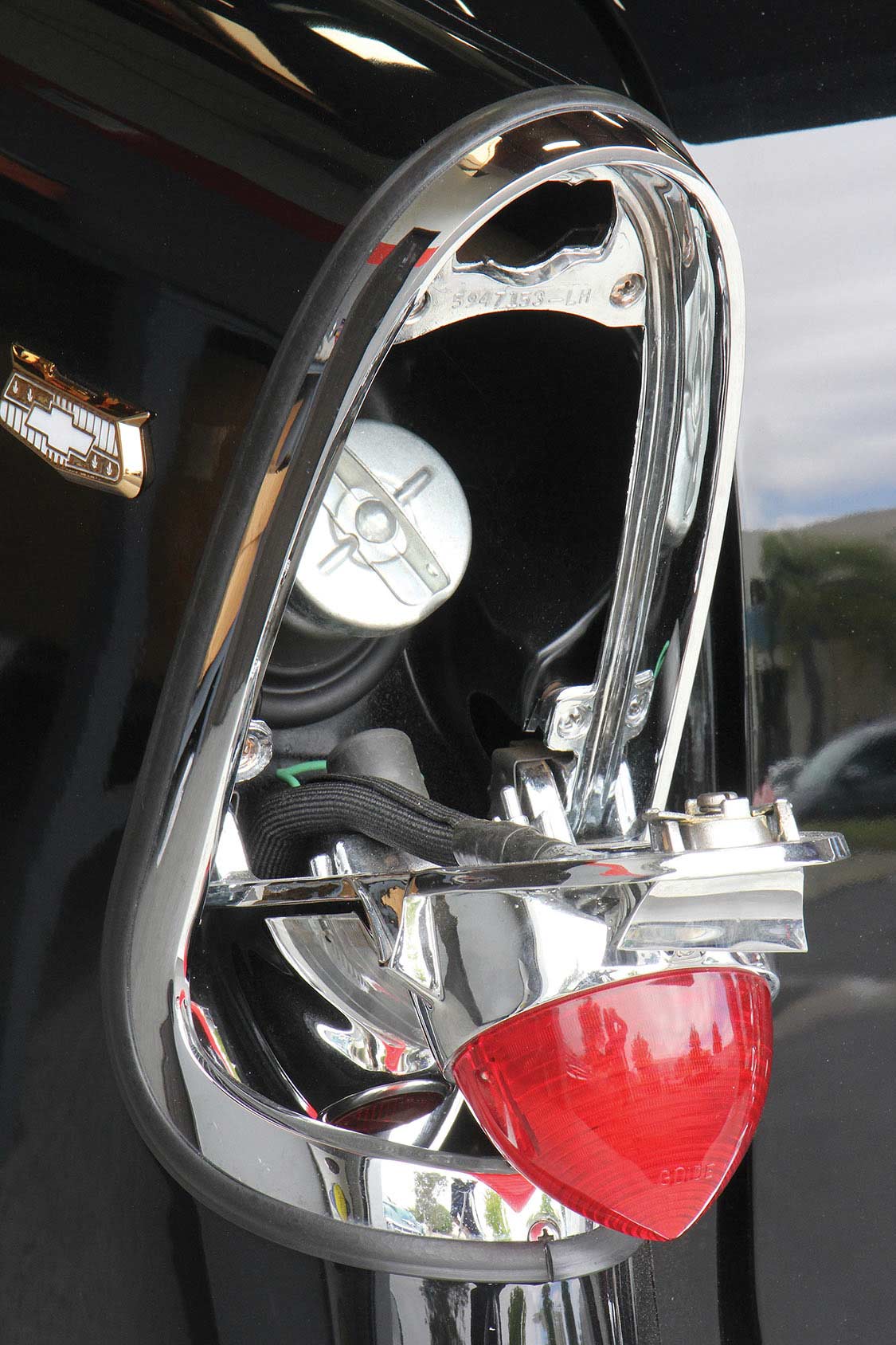
The original gauge cluster, gauges, AM radio, clock, dash speaker, dash grille and knobs were all cleaned and refurbished. A Mooneyes gauge panel was filled with Stewart Warner, oil pressure, water temp and volts, black face gauges were mounted in the center below the dash. The top half of the dash was the only part of the interior that was repainted gloss black. The original steering column and huge factory steering wheel were reconditioned and then repainted.
Opening the glove box, exposed the hidden Alpine CDE-143BT receiver with Bluetooth. A pair of 6-inch molded speakers panels were mounted in the front kick panels, while two 6×9-inch speakers were installed in the back seat package shelf.
John’s ’56 Bel Air four-door is a perfect example of how to think outside of the box. Sometimes going against the grain isn’t a bad idea. Who knows, classic 4-doors could be the next trend. He would like to thank his “Creative Consultant” and close friend, Chris Jonas, for his advice and assistance during the build. Also thanks go to Platinum Black and Cambra Speed Shop.
Editor’s Note: A version of this article first appeared in the March 2017 print issue of the Drive Magazine.
Step one was to rewind the front of the 1999 Suburban back to 1993 pace truck standards with a few upgrades. After a quick call to LMC Truck, the crew had all the necessary conversion parts, including a grille shell, billet insert, lower grille filler, turn signal lamps, side marker lamps, front fender extensions, and the correct front bumper. At some point in its life, Brik Yrd had been converted with a 1993 GMC grille with the correct lower grille filler and fender extensions and a smooth, front work-truck bumper with no strips or guards. This is a simple conversion. All OBS grilles are interchangeable from OBS ’88-’98 with the correct corresponding year’s parts. Follow along as the team brings Steve’s vision to reality.
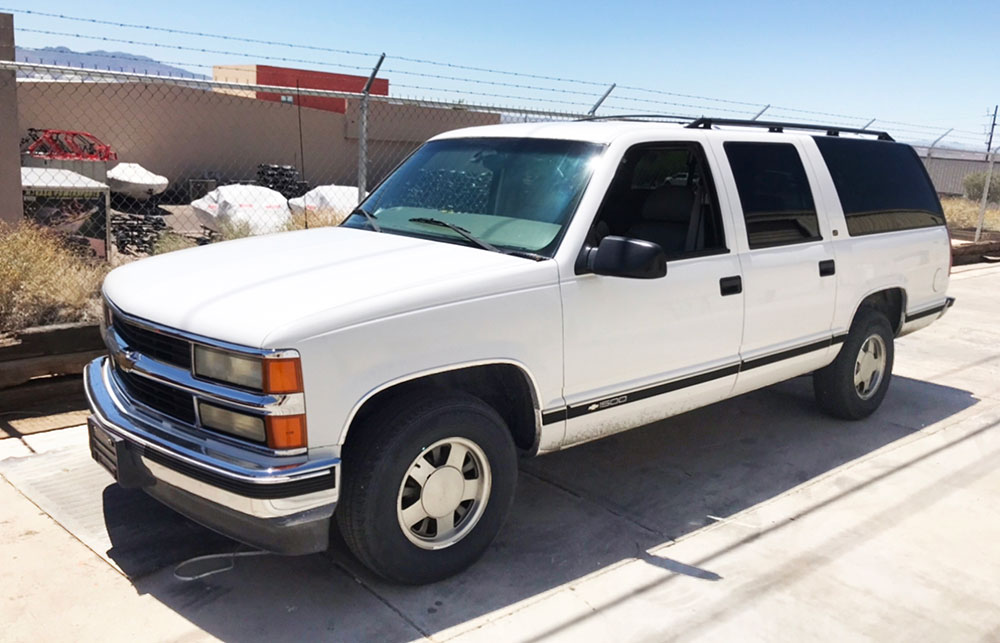
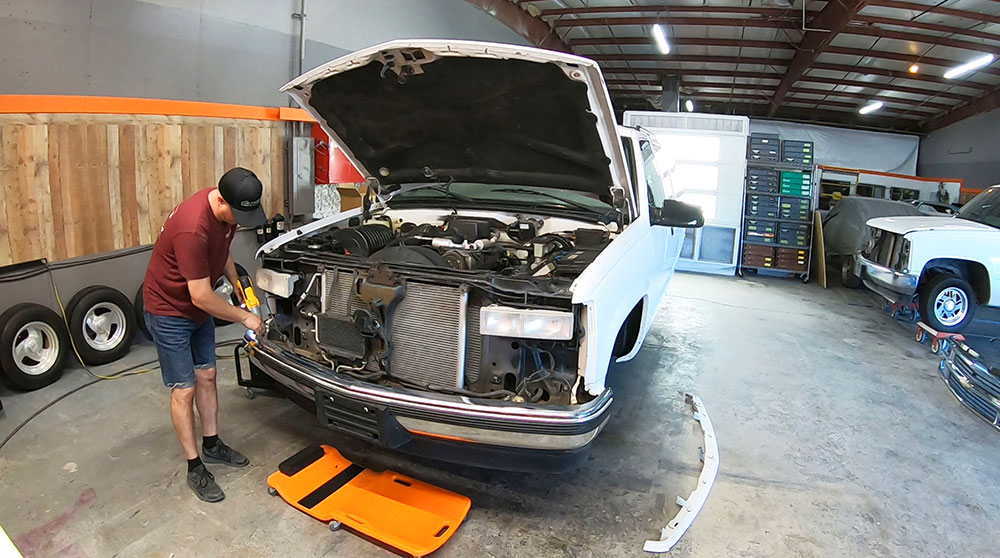
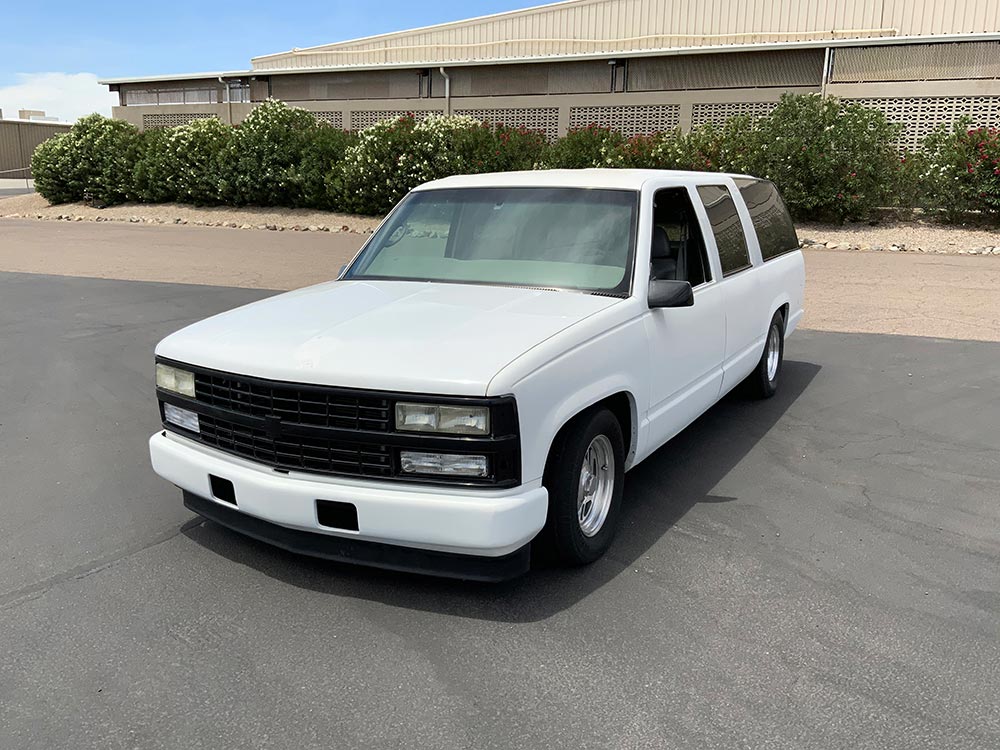
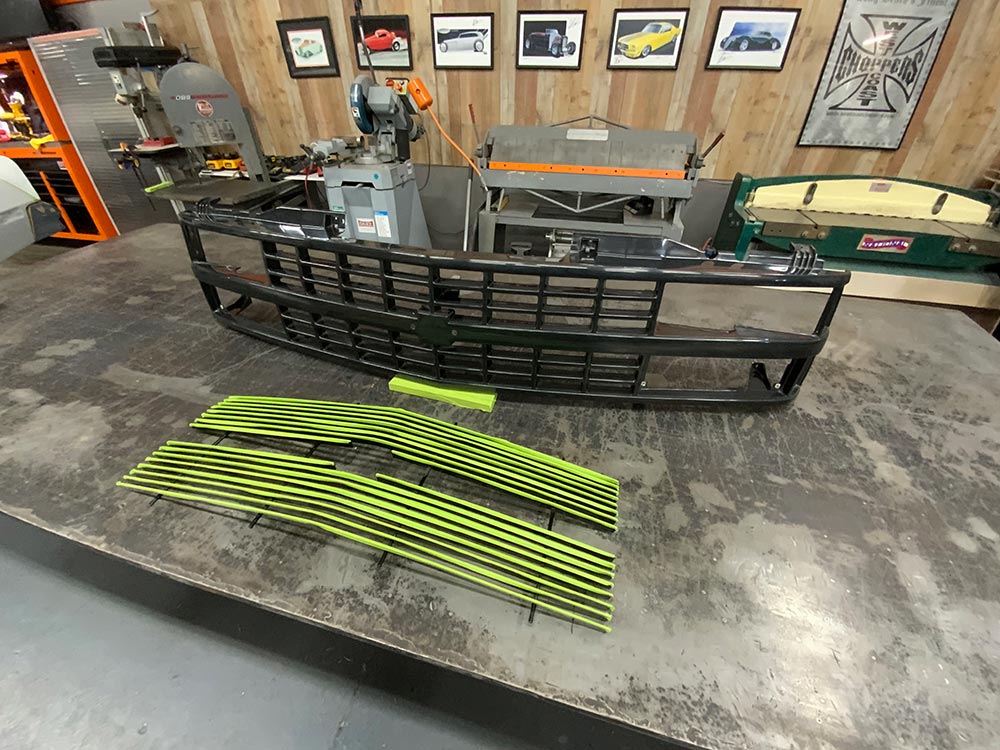
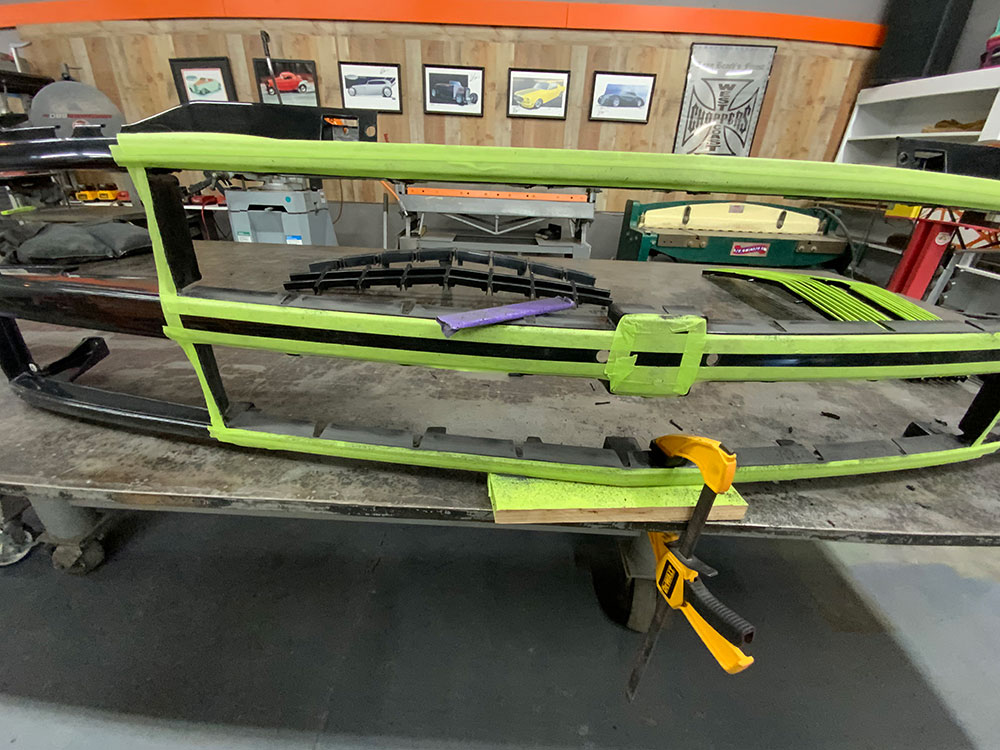
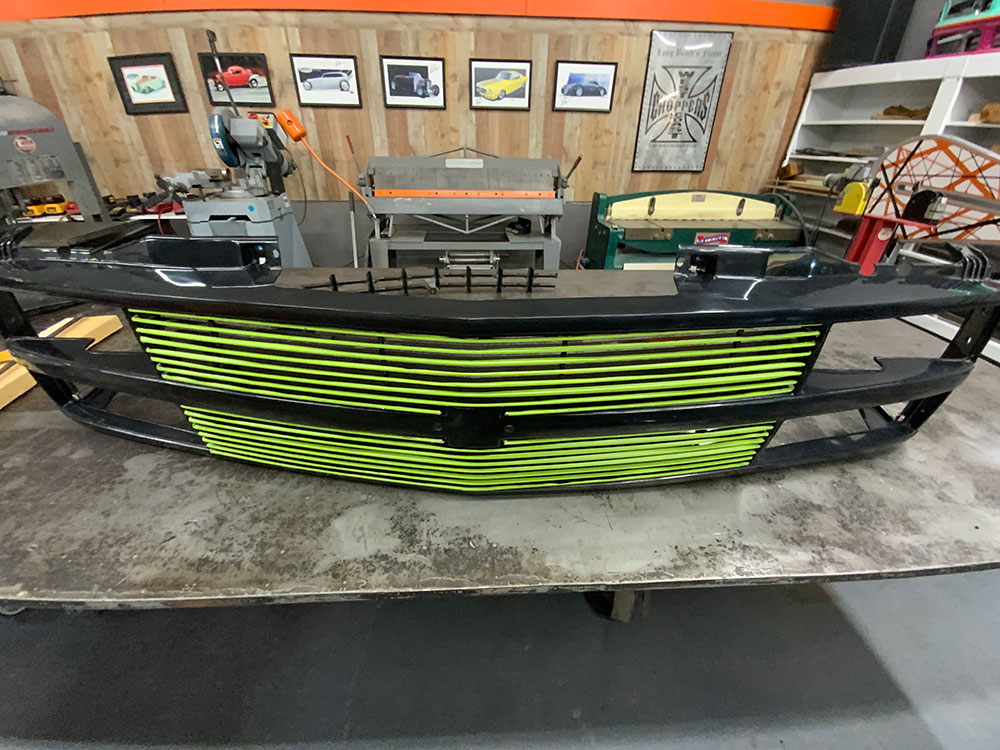
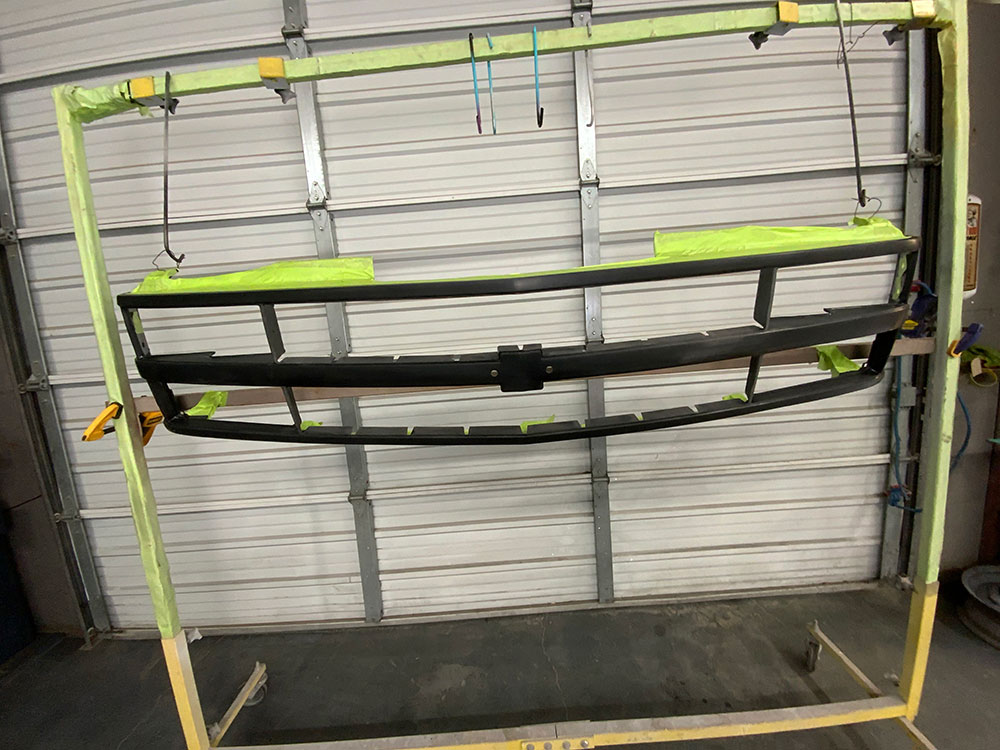
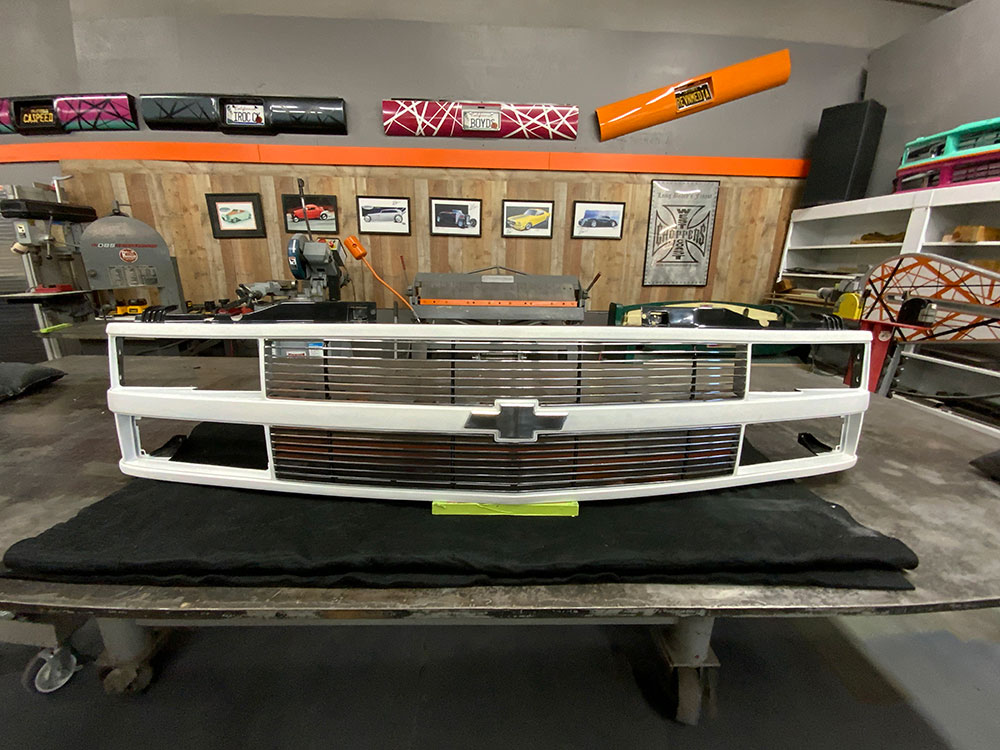
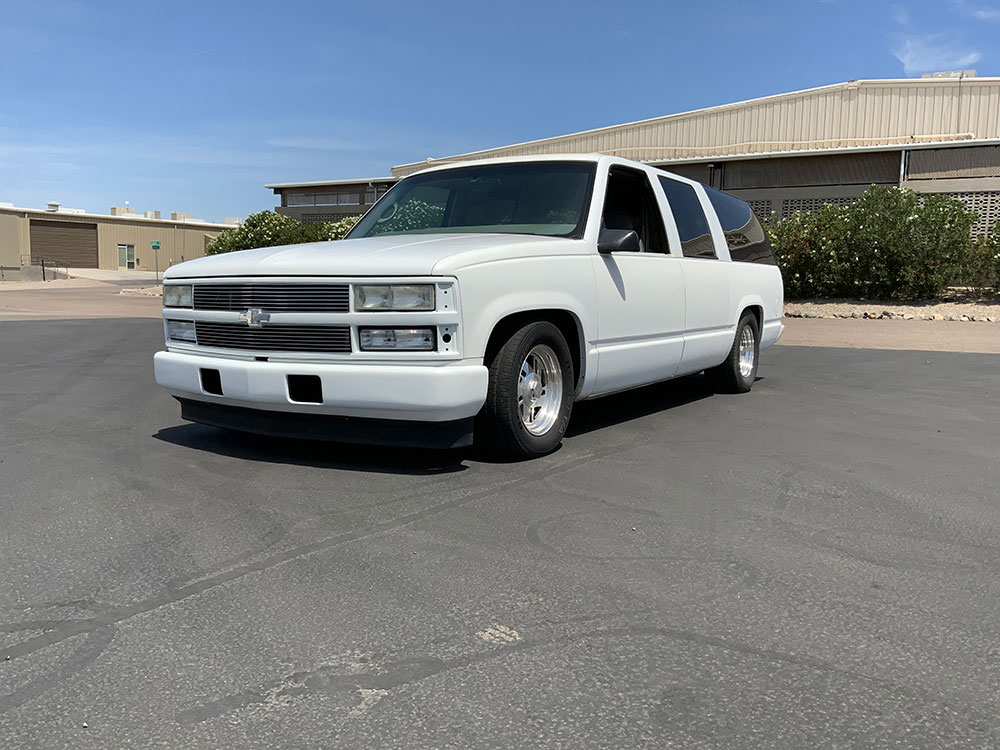

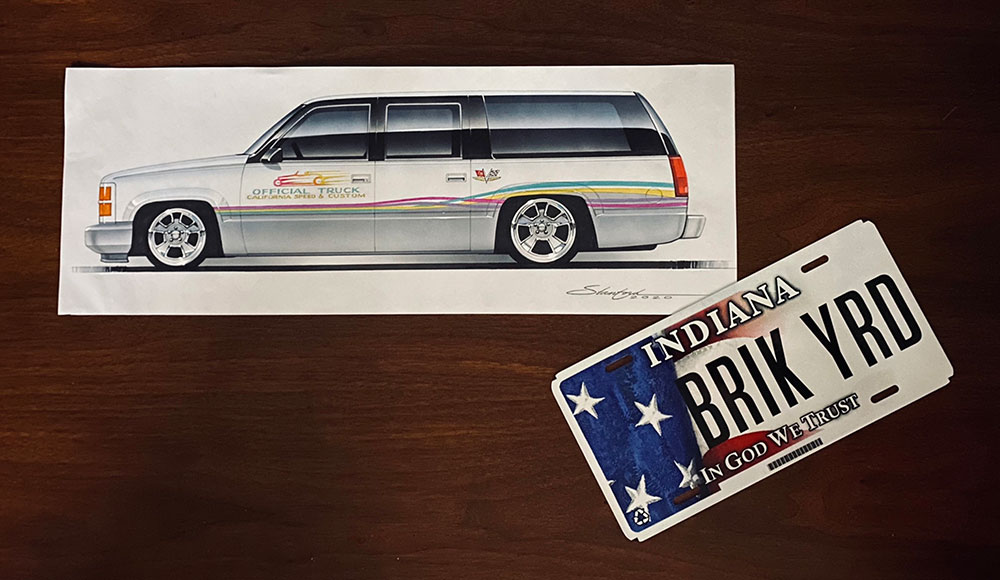
If the CA Senate Transportation Committee approves this project, ICE vehicle owners may soon be eligible for a financial rebate if they switch to an electric vehicle’s powertrain.
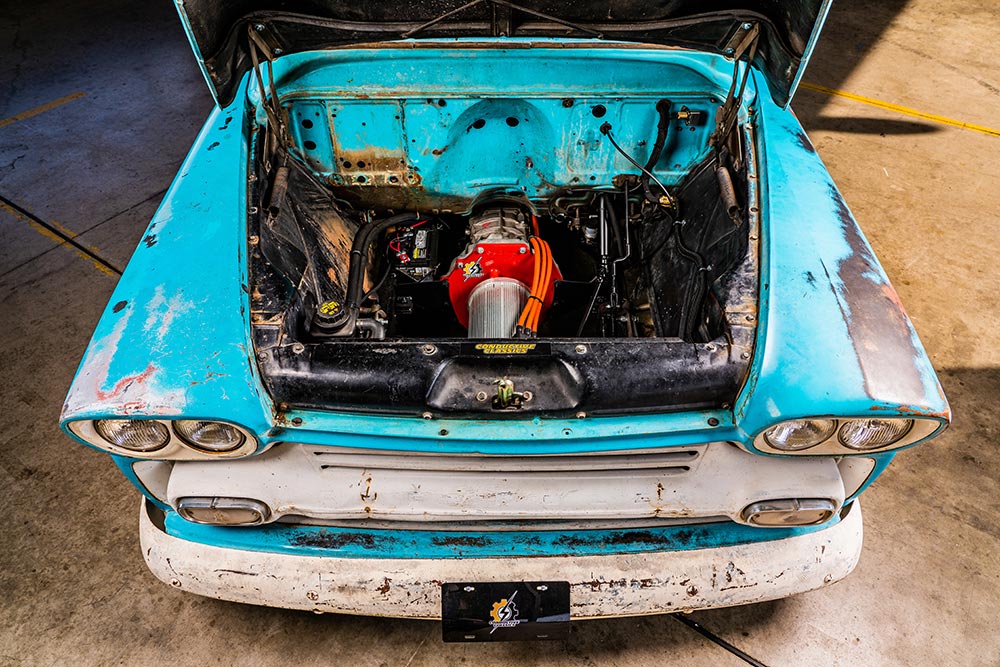
If AB 2350 passes and becomes law, one would soon be able to receive a financial rebate for swapping one’s drivetrain to EV California. This bipartisan assembly measure, which SEMA is also supporting, aims to persuade individuals to switch to electric vehicles by allowing them to perform a conversion build rather than buying an entirely new car.
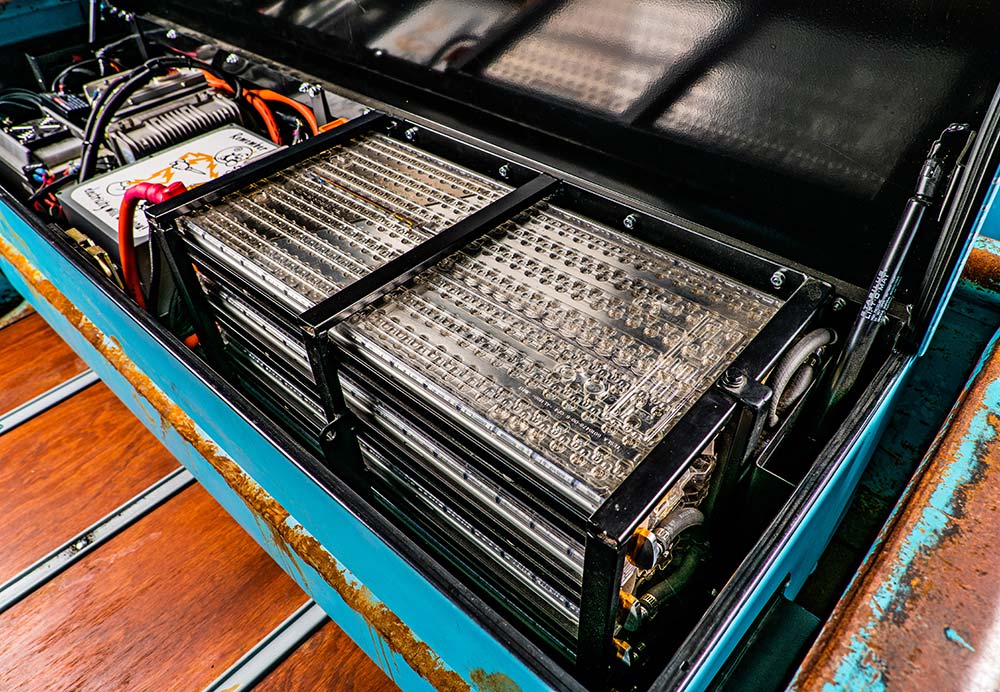
California has sponsored initiatives like the Clean Vehicle Rebate Program and the Clean Cars for All Program for years to encourage owners to purchase EVs. The hitch was that these programmes didn’t apply to conversions; they were solely for brand-new cars.
By converting their internal combustion engine (ICE)-powered vehicles to electric vehicles (EVs), owners may be eligible for a $2,000 state reimbursement under Assembly Bill 2350, the Zero-Emission Aftermarket Conversion Project. According to the bill, the Clean Vehicle Rebate Project will have up to $2,000,000 available each year to give applicants rebates for qualified vehicles that have been converted into zero-emission vehicles.
How many of you wanted a Red Ryder BB gun after “A Christmas Story” appeared on TV when you were a kid? It was one of the most influential movie scenes in the ’80s, and to this day it still plays nonstop during the holiday season.
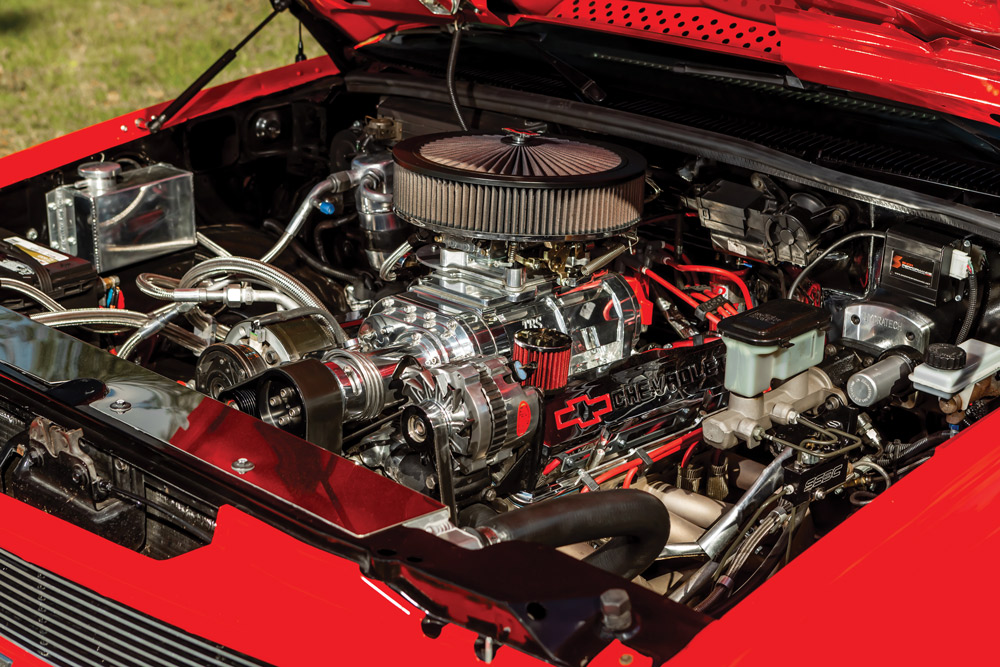
Few things stick around for that long and still hold sentimental value to millions of people around the country. Show anyone in your family a picture of a stock ’88-’98 GMT400 truck, and we promise at least one of them has a great story involving one of them. Either it’s your grandpa who used one as a farm truck his whole life and watched the sunset in it with his wife for the past 30 years, or it’s your mom who met your dad in their parent’s work truck on a Friday night. Everyone has a memory that involves this all-American Bow Tie, and this particular shortbed is no different.
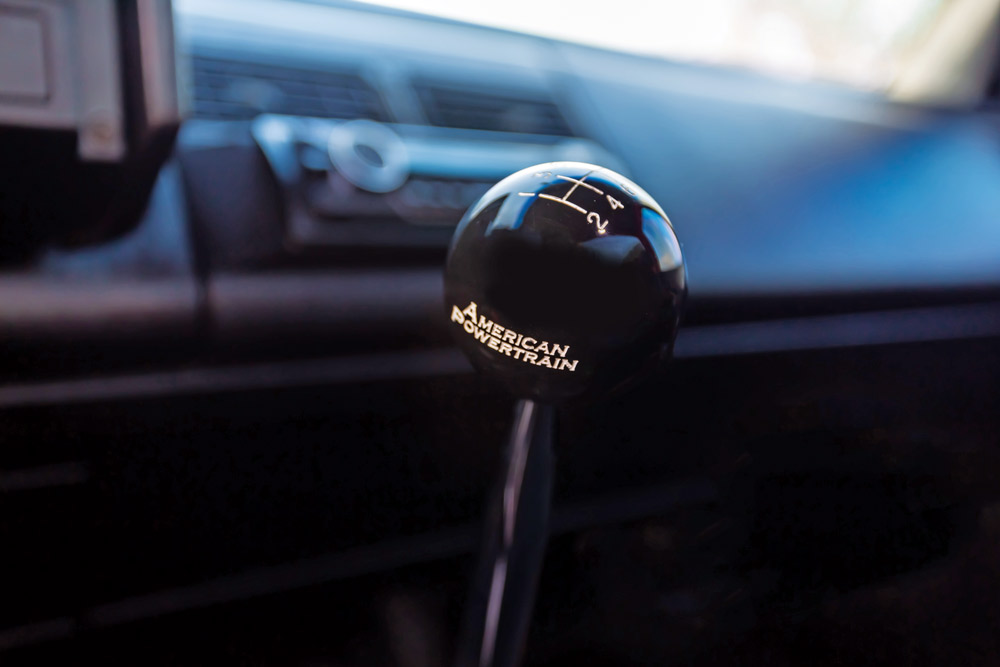
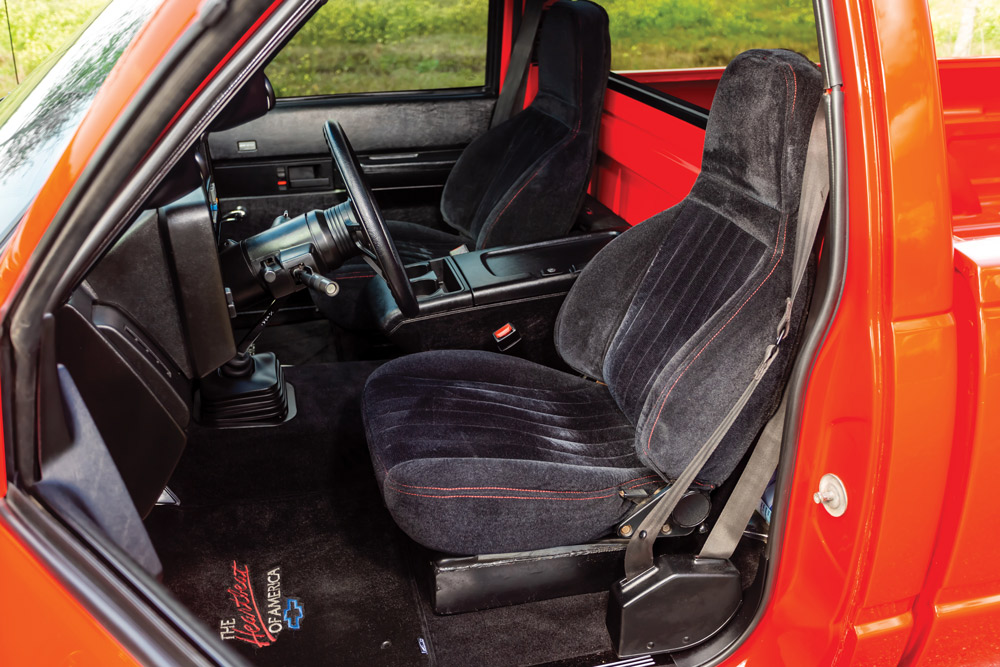
Dylan Eaton from Spring Hill, Florida, grew up with this exact truck—well, a stock daily-driven version of it at least. His dad picked it up from the dealership new in 1989 and drove it until 2008 when he gave it to Dylan. This was the first truck Dylan ever owned, and he wanted to prove he cared about it as much as his dad did. Now after a little over eight years and around $25,000 dollars or more, Dylan is proud to tell the story of this long-time family member. He knew the path he wanted to take when he started customizing. A daily driven, big power, thick tire street machine. Nothing more and nothing less. He wants to jump the truck at any time and have a strong crank. No special fuel and no pre-charging, just a ready and reliable show truck.

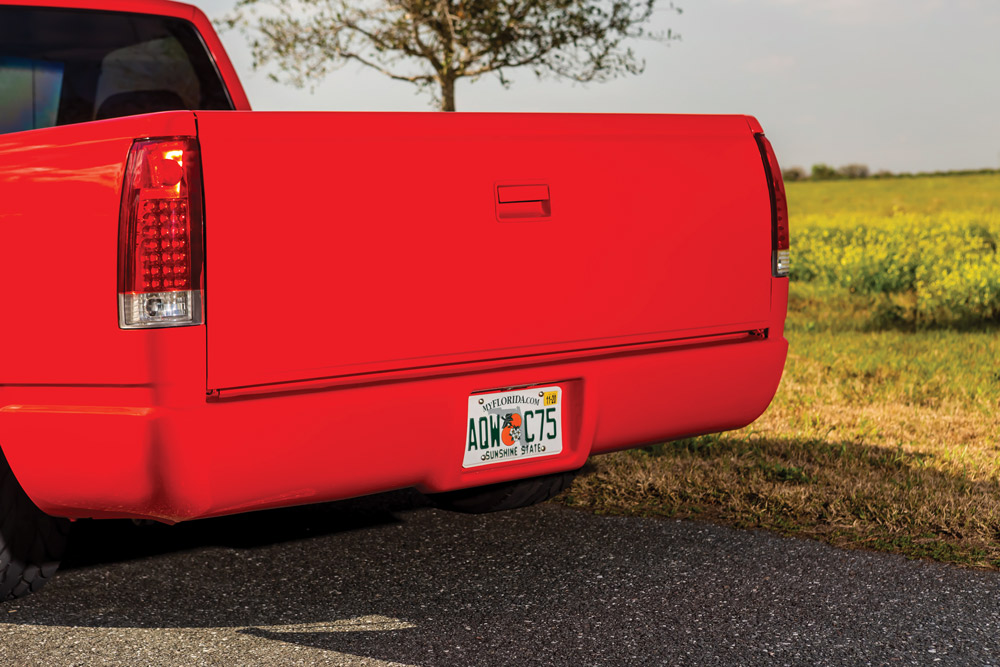
Because it was so well maintained since its time on the showroom floor, the exterior of the truck only needed some fresh paint and a few simple upgrades. A Street Scene front grille with billet inserts was installed, the factory bumpers were shaved and painted, the bed rail stake holes were shaved, and a steel roll pan was welded and smoothed in. Finally, the whole truck was painted Viper Red by Donnie Peake of Peake’s Autobody Inc. To get the stance correct, Dylan and his dad installed a 5-inch front and 7-inch rear suspension drop that included DJM Control Arms, Belltech coil springs, new spindles, a rear flip kit, C-notch for the rear frame rails, and Belltech Street Performer shocks. They also bolted on a 1.375-inch front sway bar with polyurethane bushings and body mounts as well as a Calvert Racing Caltrac bar.
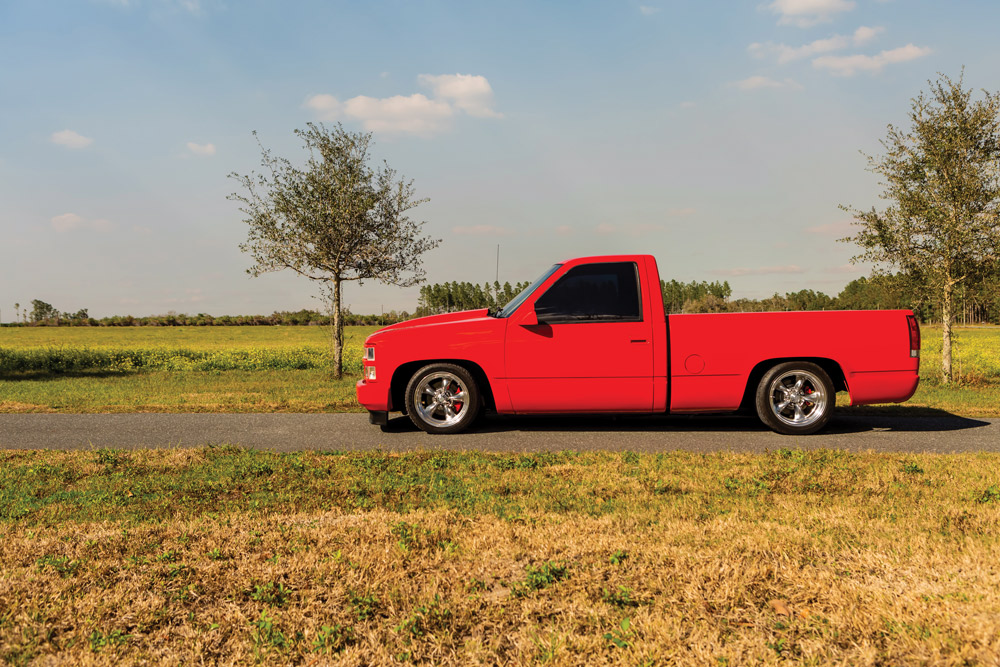
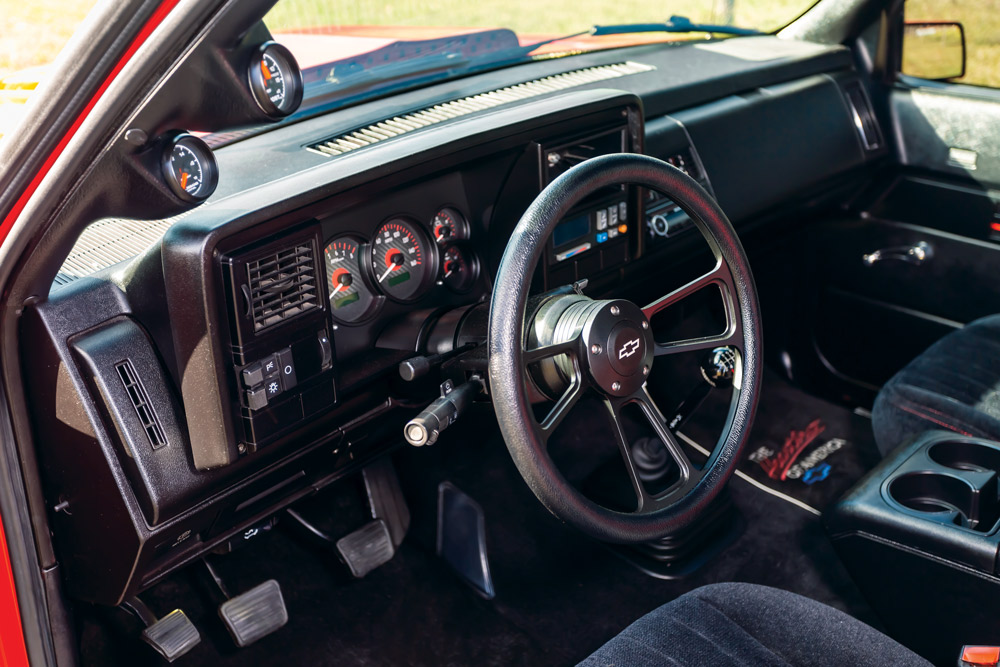

The power plant on this sweet OBS is an ’87 GM roller block SBC 355ci V-8 built by Mark’s Performance and Machine in New Port Richey, Florida. The block was balanced, blueprinted, decked and line honed. It was also bored 0.030 over and has a Pro Meth methanol injection system. Eagle connecting rods, Comp Cams nx276hr camshaft, JE Pistons, Total Seal rings and King bearings complete the internals, and it’s all bolted together with ARP bolts and studs. Under the block is a Morosso oil pan. Topping off the engine build are Air Flow Research Eliminator 180cc heads, a polished 192-intake 16-rib supercharger from The Blower Shop, a Devane “Weekend Warrior” 930cfm carburetor, and Hooker Headers. These bolt up to Hooker Max Flow mufflers and flow out the back of the truck. An MSD ignition keeps the timing in check and an American Powertrain “White Lightning” Tremec 5-speed transmission with hydraulic throwout bearings and a SPEC Type 3 clutch wrap up the drivetrain.
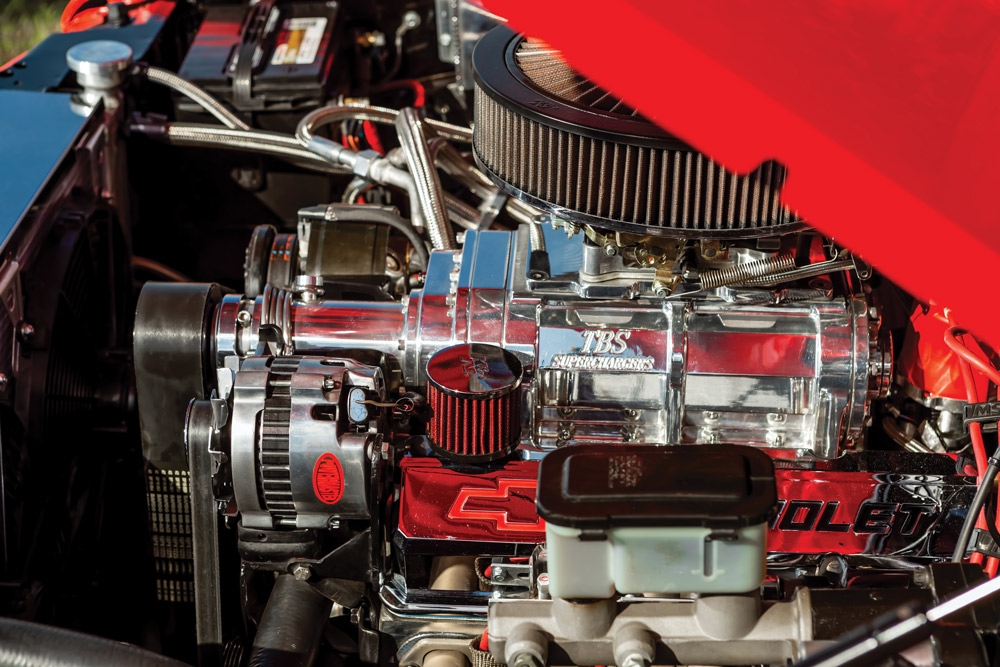
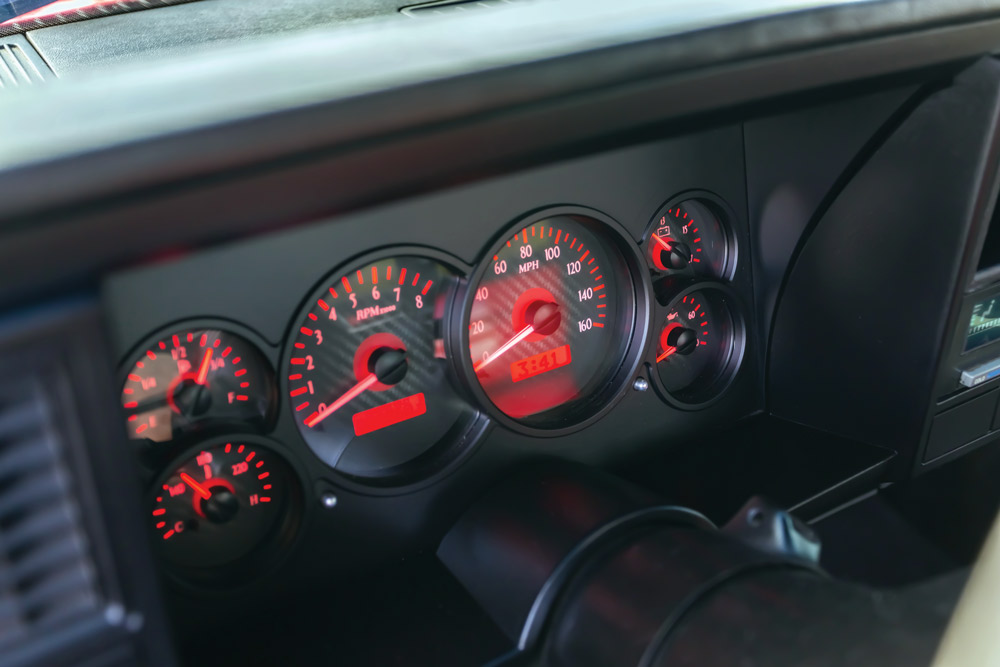
All this power is sent back to the 14-bolt 5-lug 454SS rearend with 3:73 gears. Some 17-inch American Racing Torq Thrust 2 wheels are at each corner with a 17×7 up front and 17×9.5 in the rear. The Michelin Pilot Sport 4s tires give Dylan the traction he needs and the SSBC Big Bite brakes stop him when he steps on the pedal. The SSBC rear disc brake conversion and SSBC adjustable proportioning valve give him all the braking power he needs for this beast of a truck.
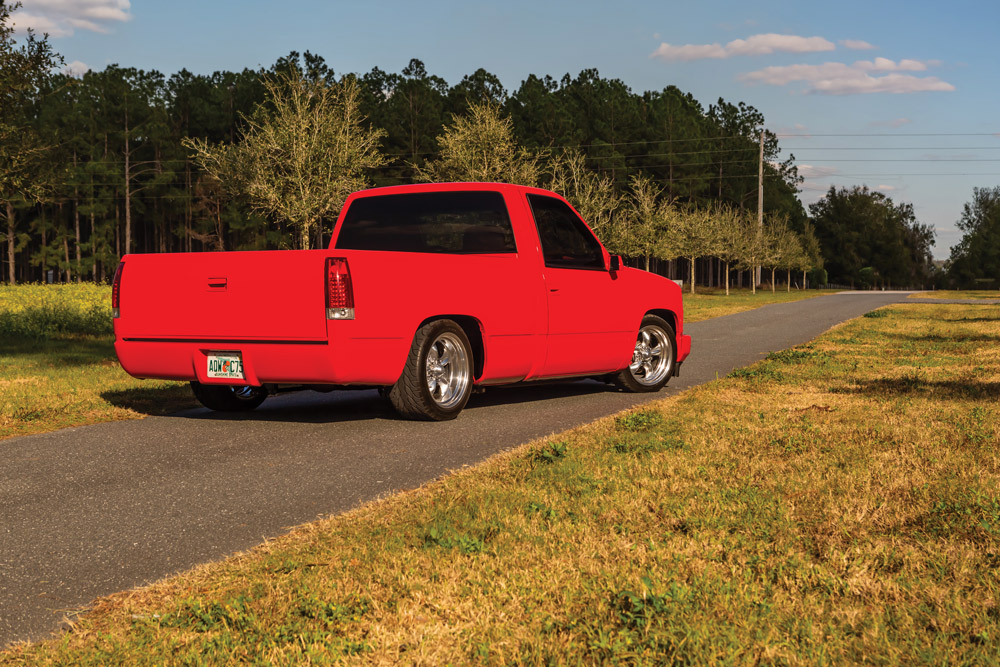
This truck is on every grown kid’s Christmas list, and you don’t have to worry about shooting your own eye out with a truck like this—although you may break a few necks when you drive by.
Truck Specs:
Dylan Eaton
’89 Chevy Cheyenne C1500
Spring Hill, Florida
Chassis/Suspension
Engine/Drivetrain/Performance
Wheels/Tires/Brakes
Body/Paint
Interior
In my opinion, 1988 was the exact year that jump-started the street truck era with the release of the all-new re-designed GM trucks commonly known as the “OBS” (Original Body Style, Old Body Style). This redesign by GM officially made a truck more than just a tool on the farm. It sparked the creation of an entire culture of automotive enthusiasts, and the street truck/sport truck movement was born. The GMT400 is said to have influenced GM designers long after they were no longer produced, and for good reason! We believe to this day they are the best-looking trucks on the road, we may be a little biased though!
Over its more than 10-year span of production, these trucks just got better and better in terms of design, comfort, reliability, power and safety. Although GM made a ton of changes both cosmetically and mechanically to the GMT400 trucks, we’ll hit the high points of the changes made throughout the years. We wanted to break down all the biggest and best changes between the ’88-’94 and ’94-’98 trucks. So let’s dive deep into the timeline of this timeless truck.
OBS refers to Chevy C/K trucks that were manufactured by General Motors between the years of 1988 and 1998. Marketed under the Chevrolet and GMC brands, the C/K series included a wide range of vehicles including a chevy truck and two SUV models. While most commonly associated with pickup trucks, the model line also included medium-duty and heavy trucks. “C” denoted a two-wheel drive; “K” denoted four-wheel drive.
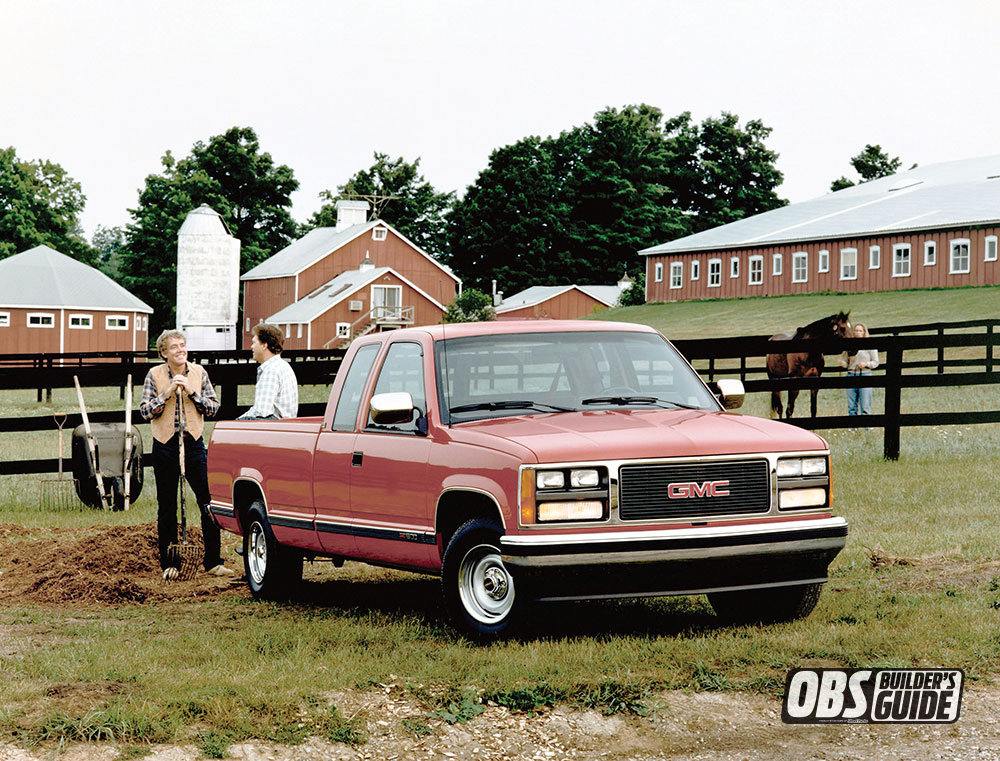 There were eight different versions of the C/K line for 1988: Fleetside Single Cab, Fleetside Extended Cab, Fleetside Crew Cab and Stepside Single Cab models, each in either 2WD or 4WD drive-lines. Three trim levels were available for these trucks including Cheyenne, Scottsdale and Silverado.
There were eight different versions of the C/K line for 1988: Fleetside Single Cab, Fleetside Extended Cab, Fleetside Crew Cab and Stepside Single Cab models, each in either 2WD or 4WD drive-lines. Three trim levels were available for these trucks including Cheyenne, Scottsdale and Silverado.

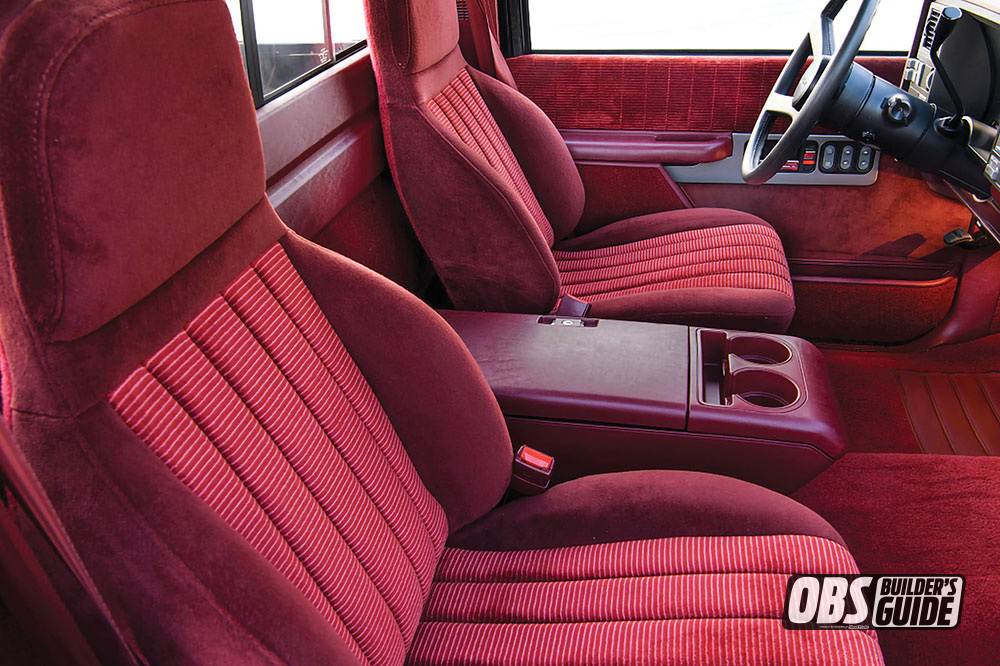
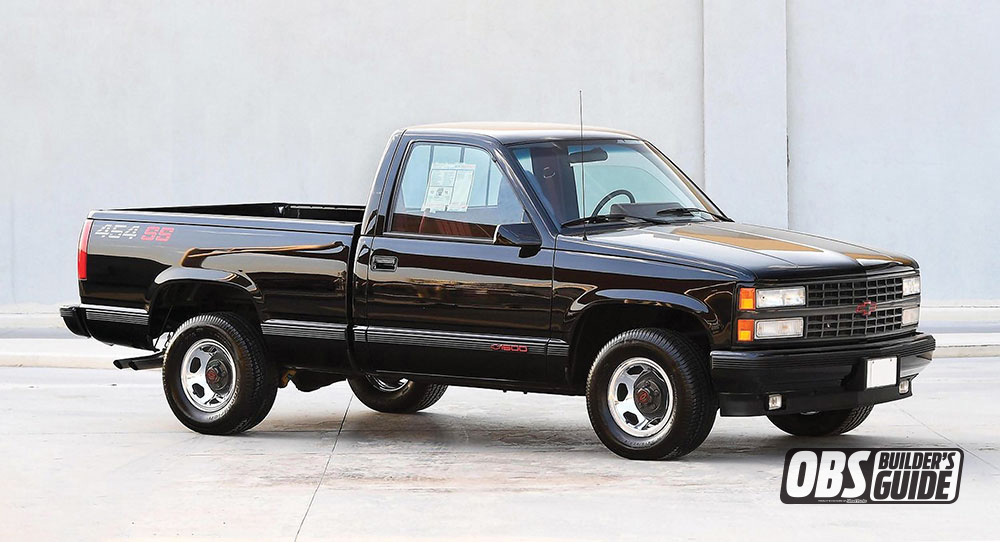
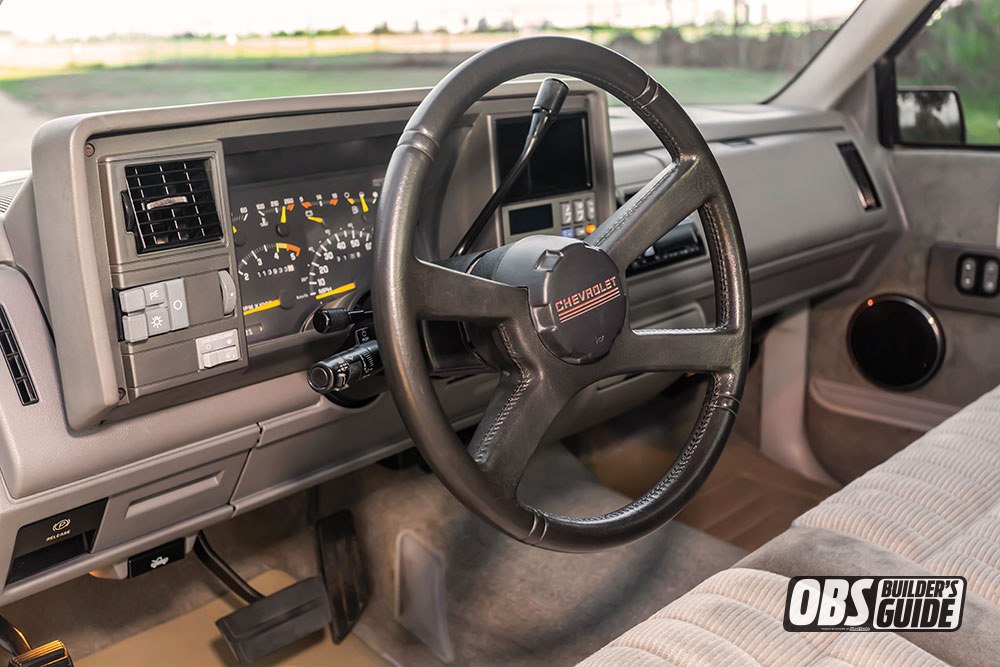
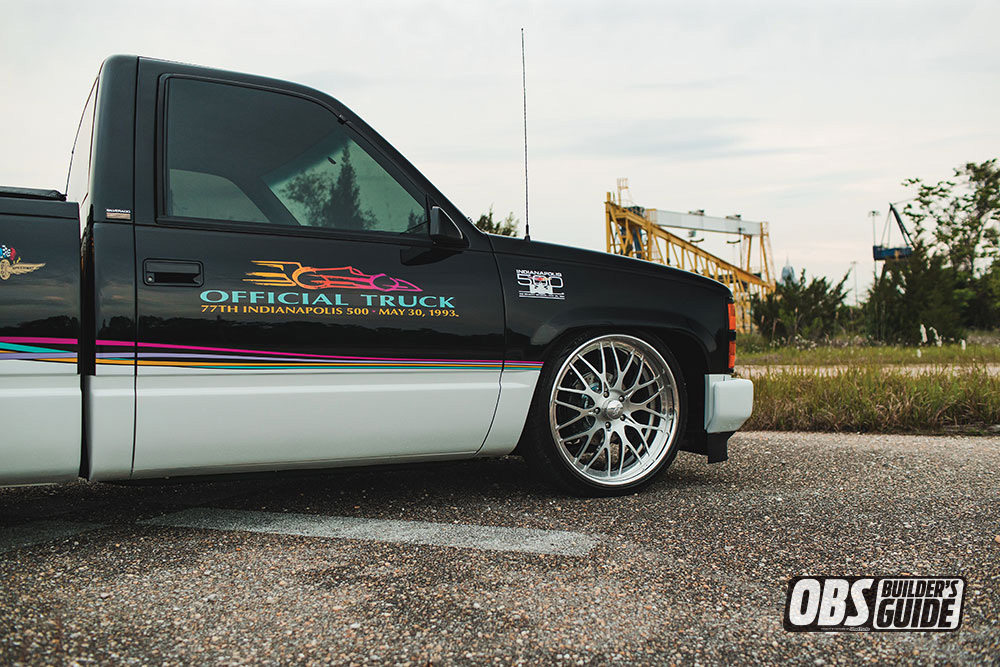
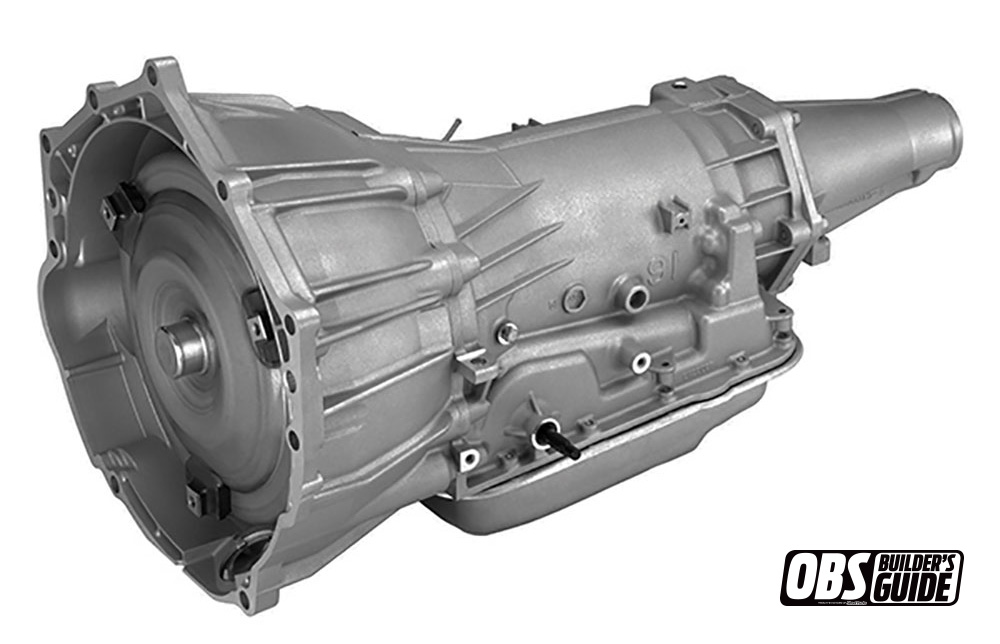
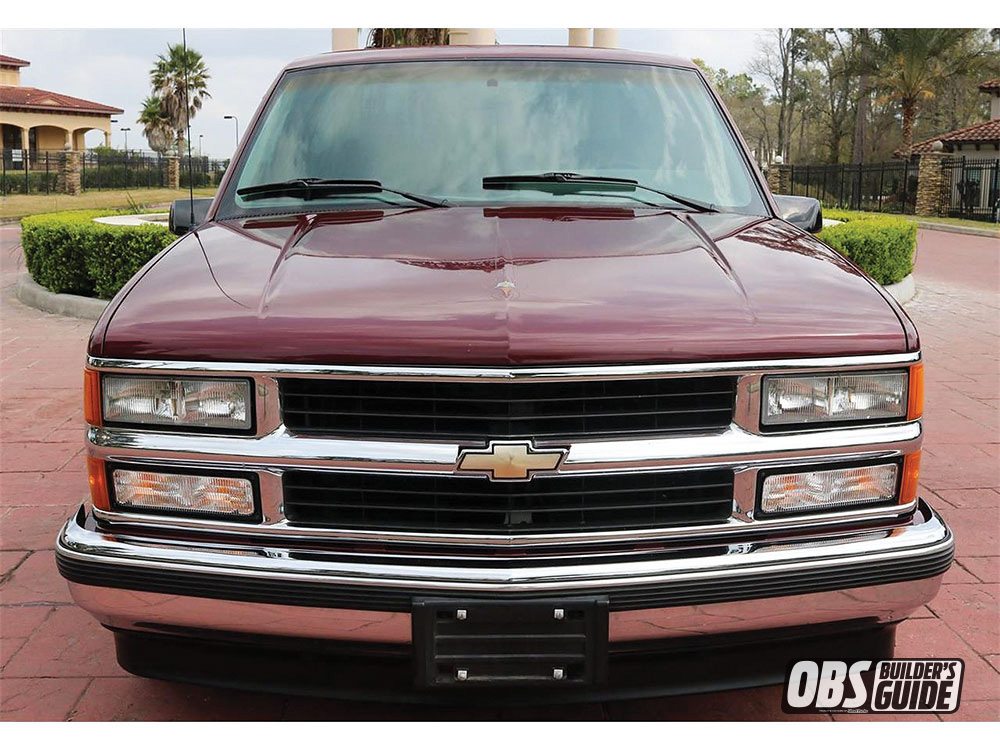
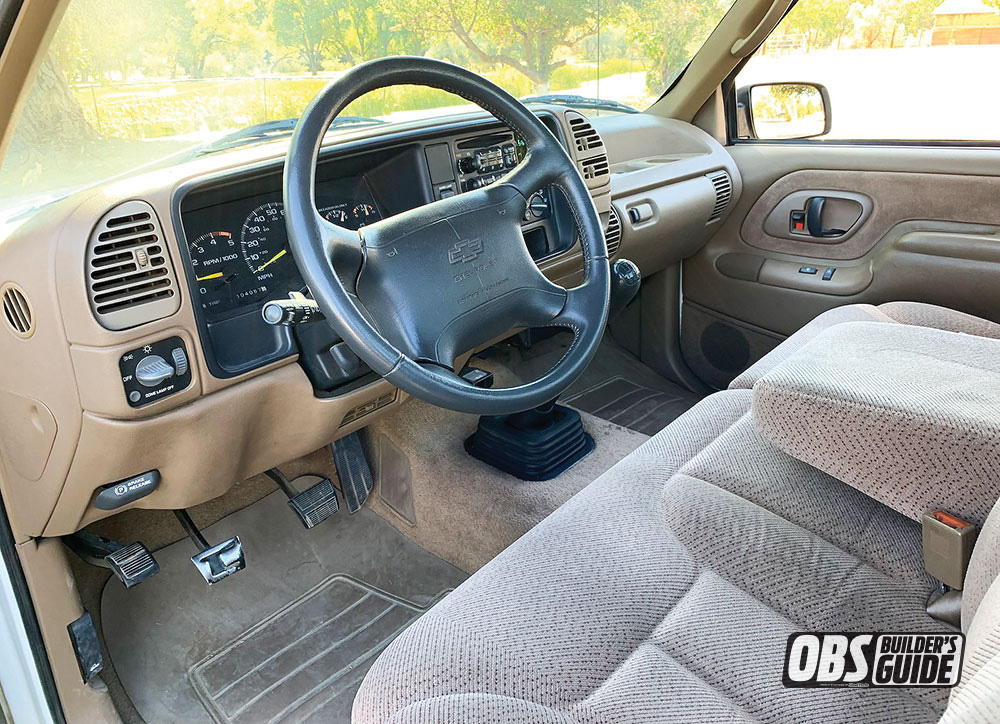
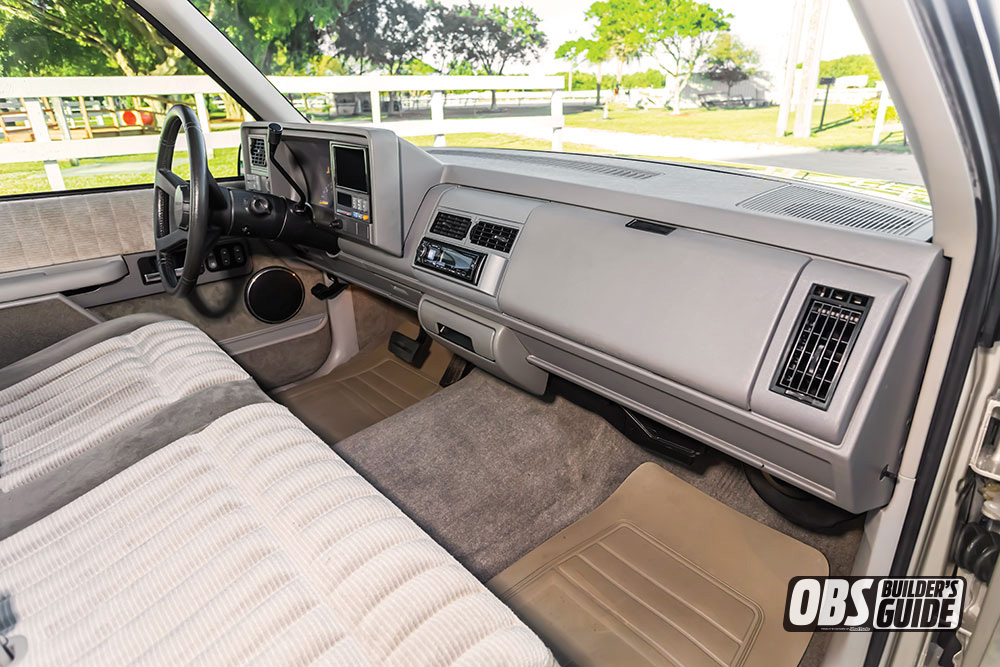
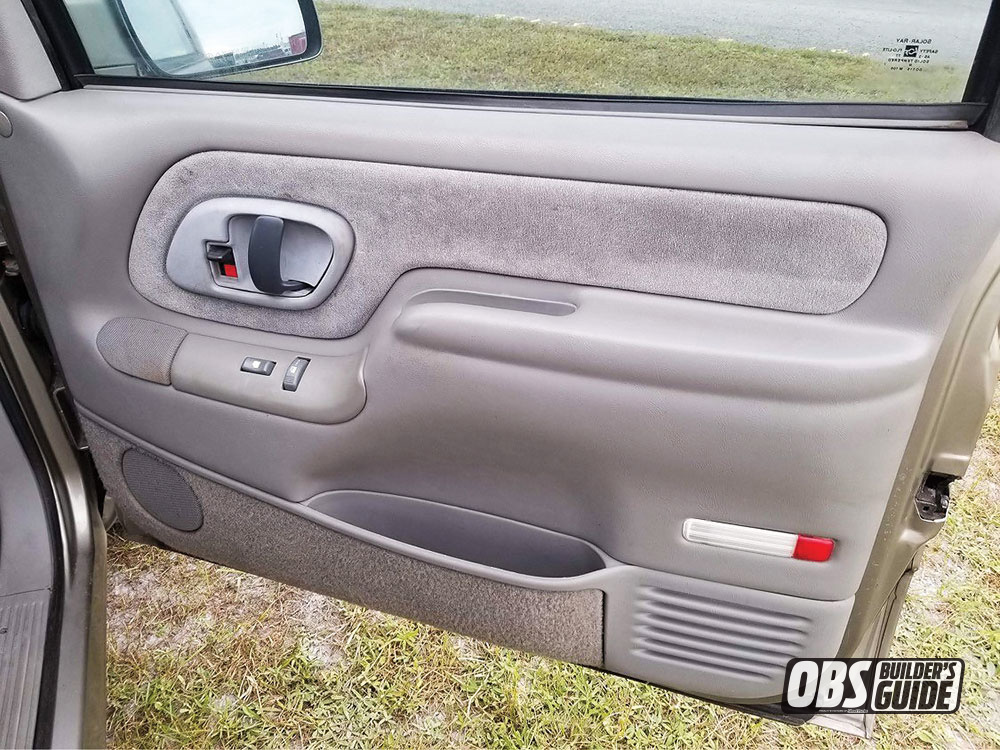
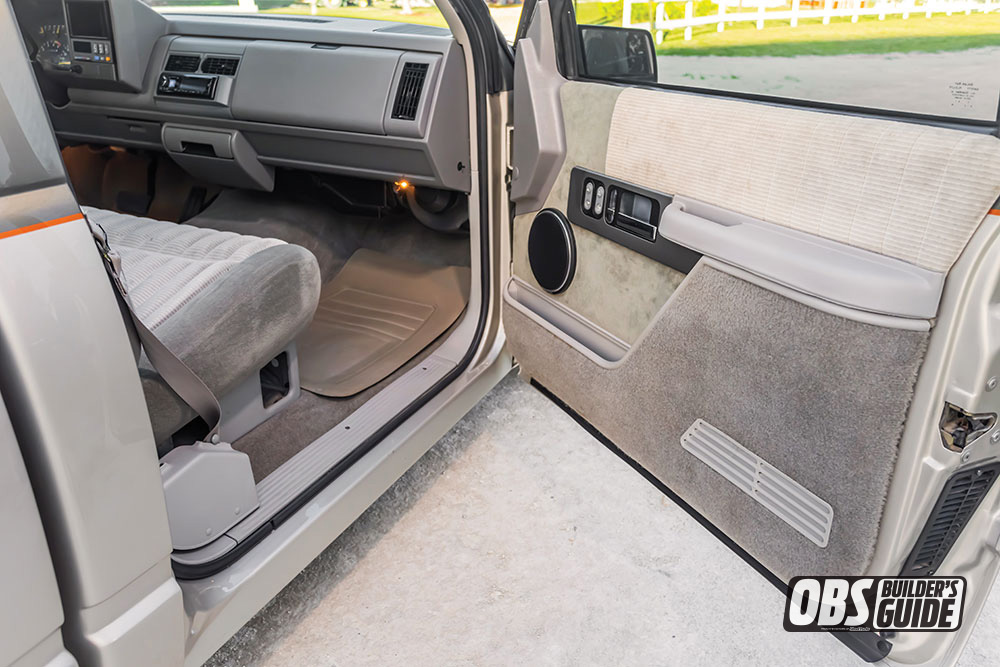
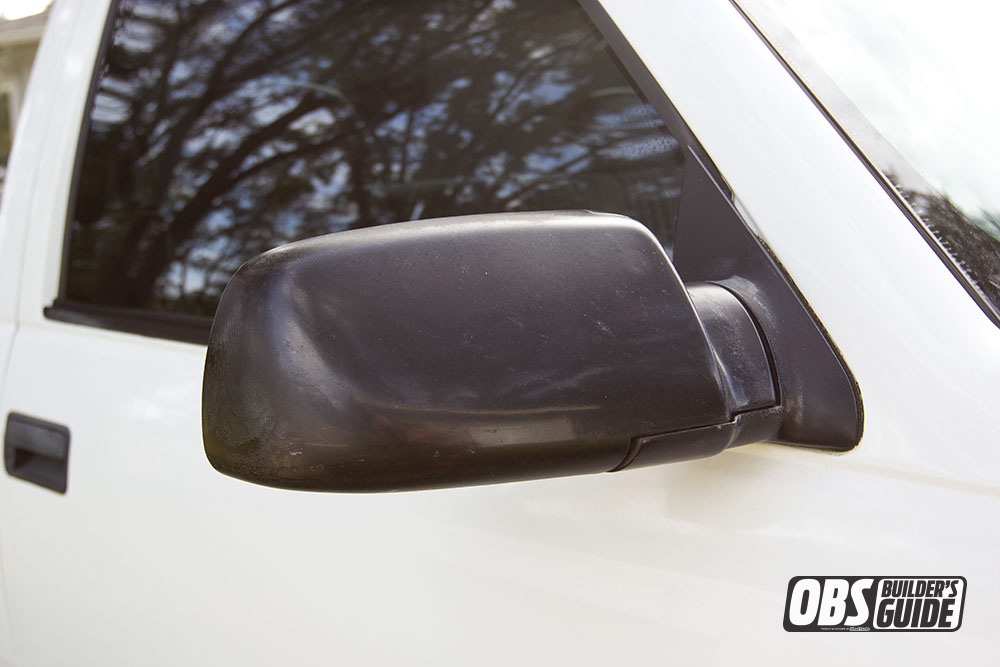
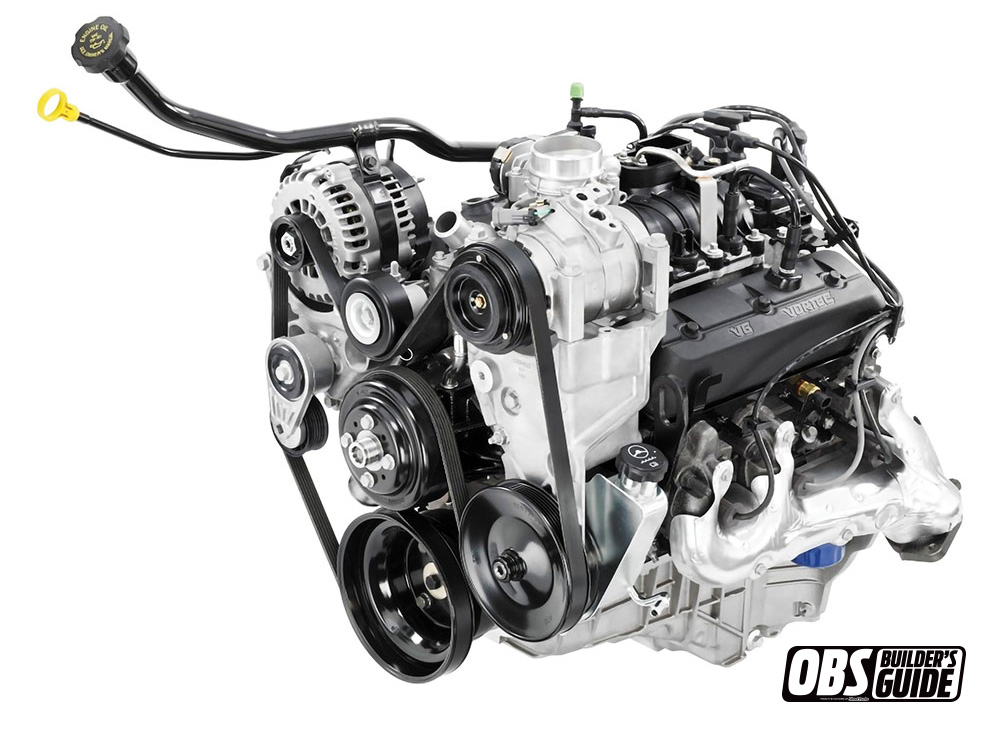
Over its more than 10-year span of production, these trucks just got better and better in terms of design, comfort, reliability, power and safety.
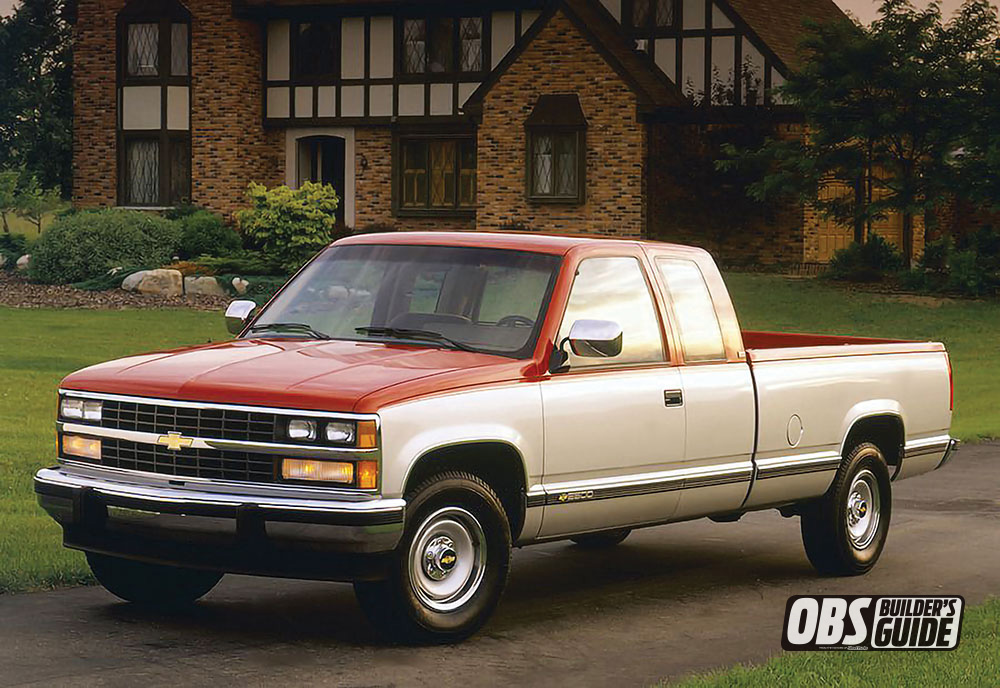
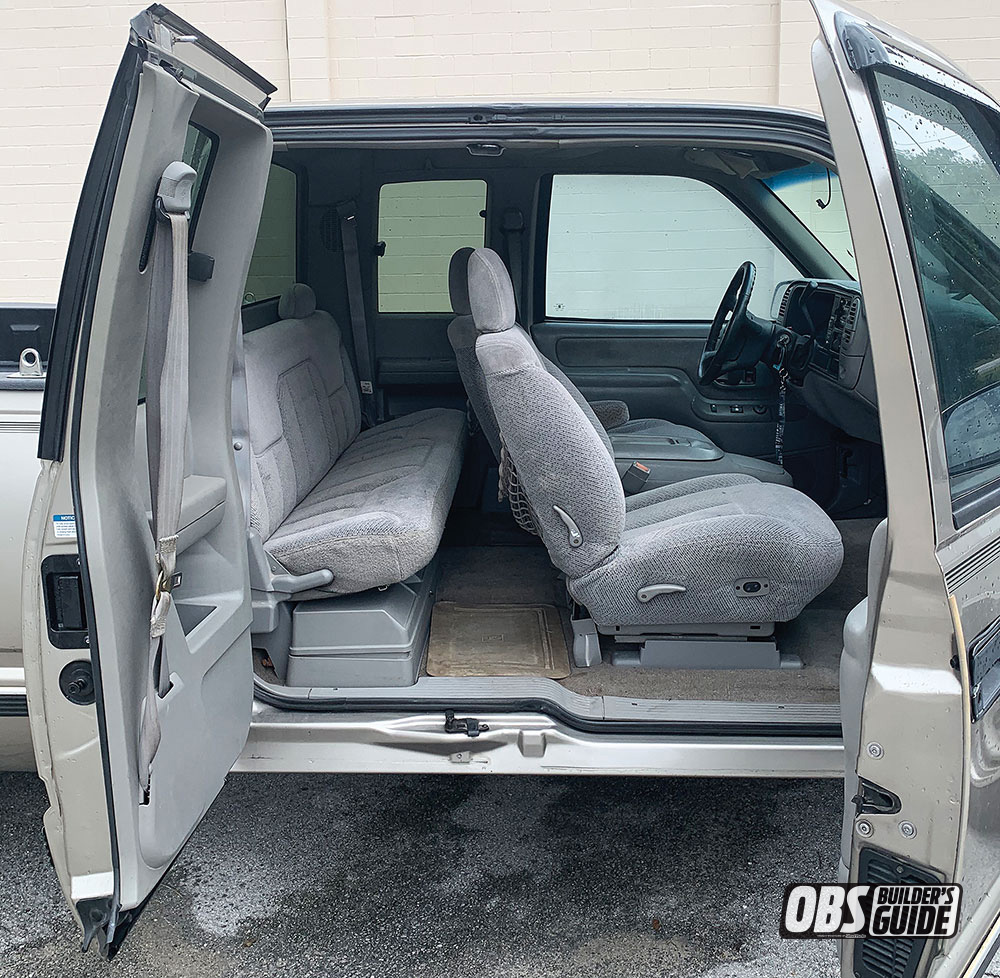
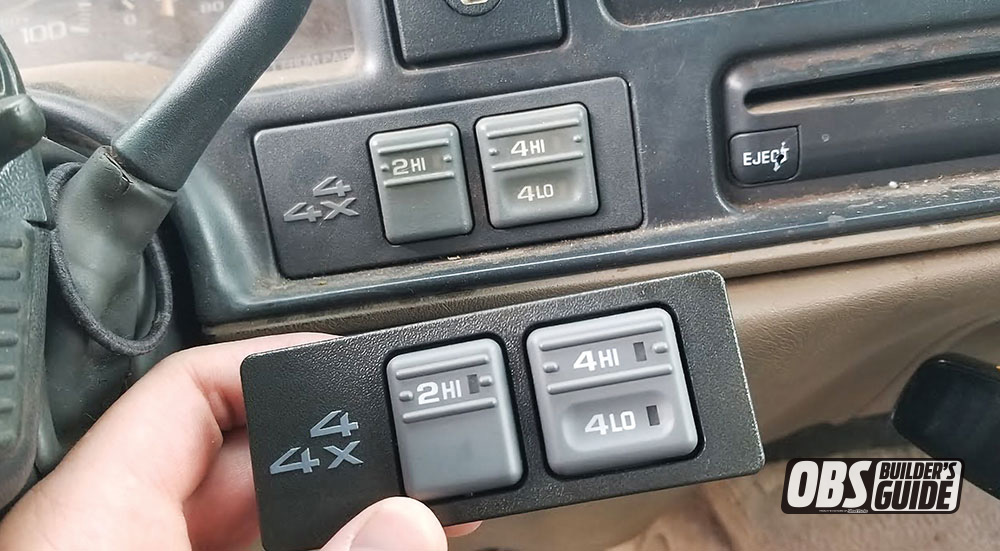
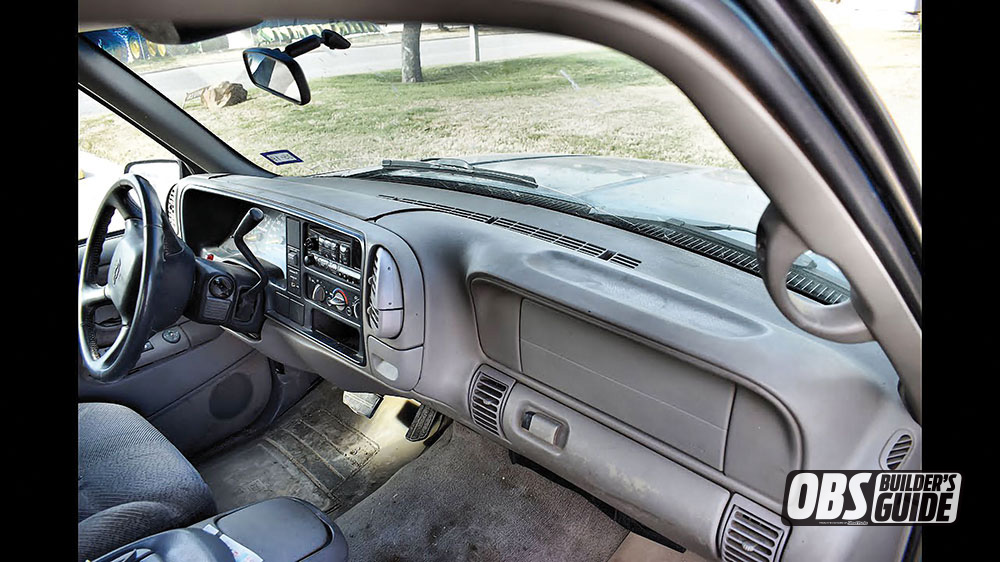
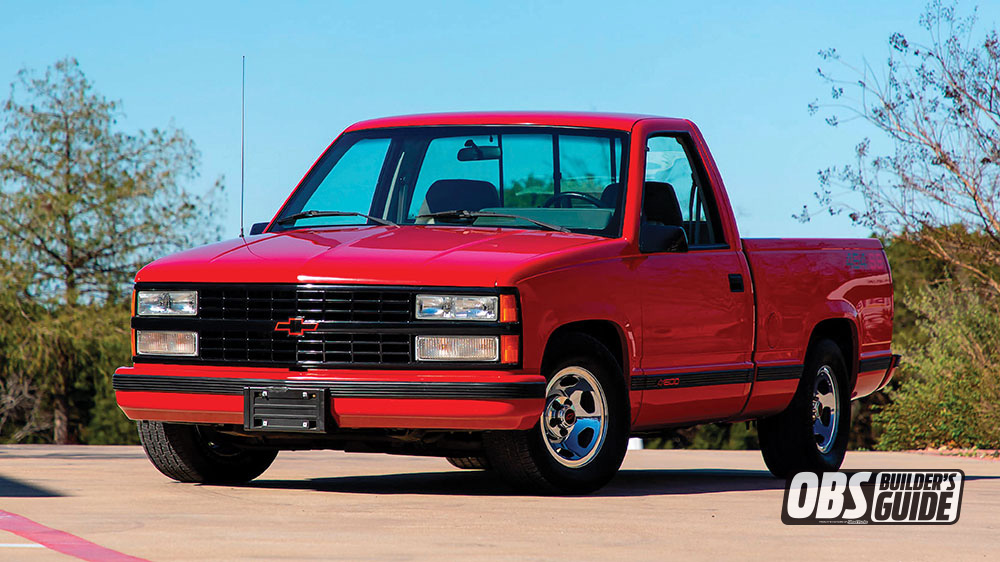
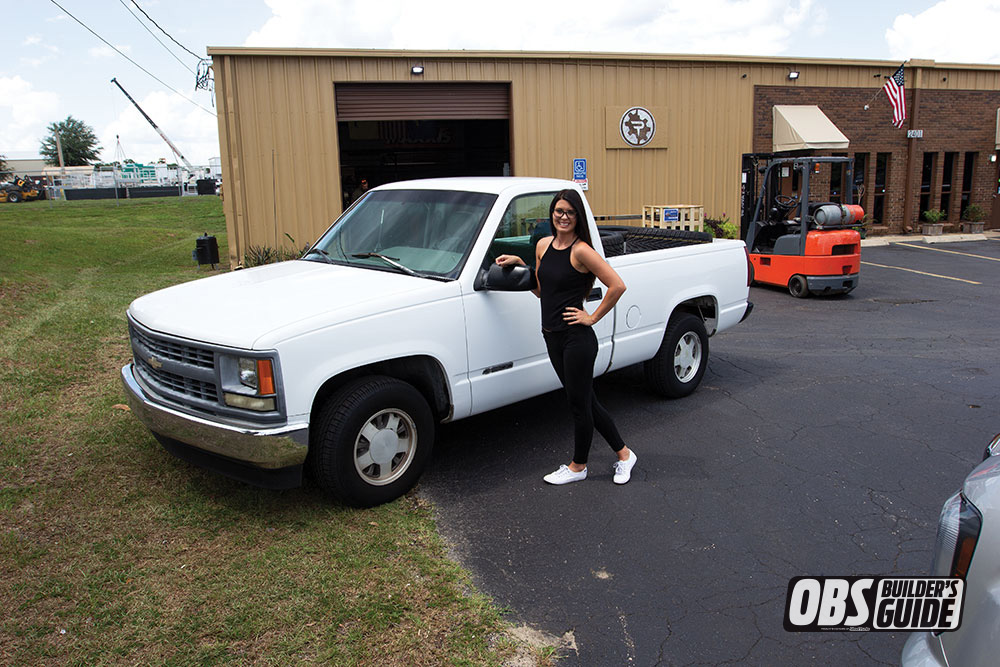 The Work Truck (W/T) was introduced in 1988, which featured a single cab long bed with Cheyenne trim and a new grille with black bumpers. Check out a tech article for this Chevy!
The Work Truck (W/T) was introduced in 1988, which featured a single cab long bed with Cheyenne trim and a new grille with black bumpers. Check out a tech article for this Chevy!
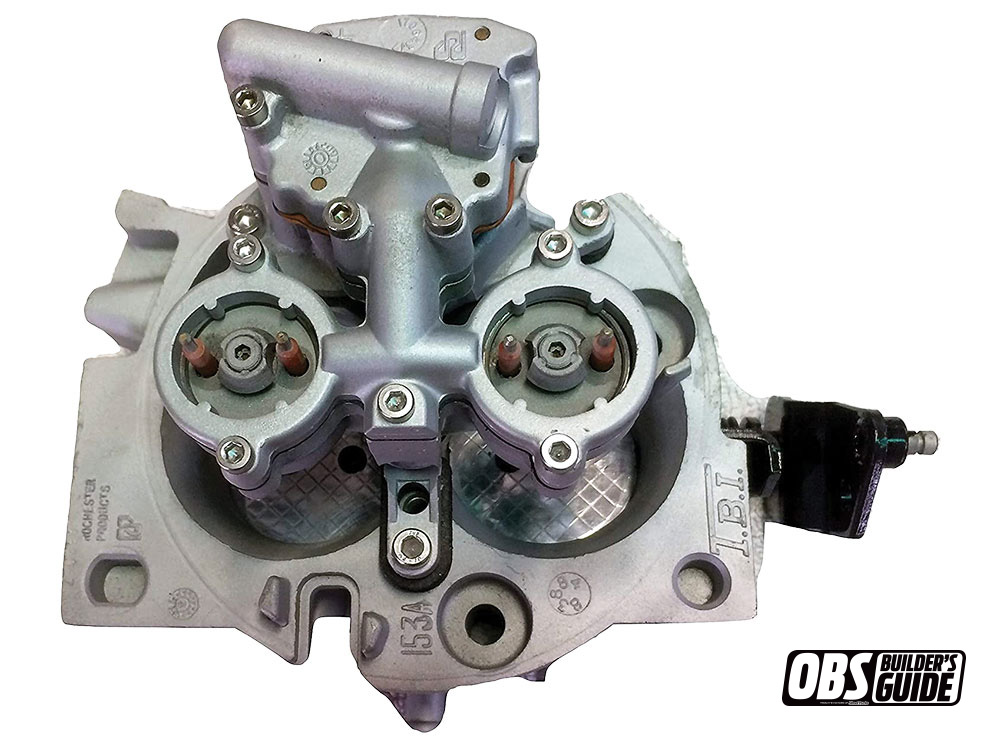 Throttle body(TBI) fuel injection was used on ‘88-’95 gas engines.
Throttle body(TBI) fuel injection was used on ‘88-’95 gas engines.
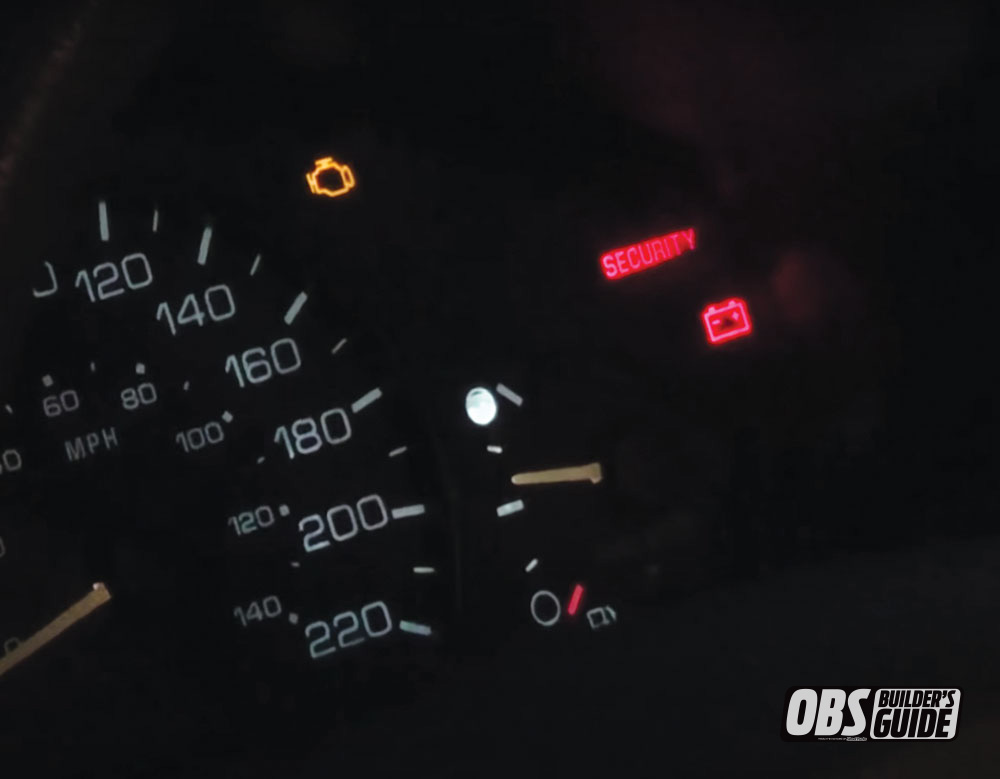 In 1998, to circumvent the rise in auto thefts, GM introduced the Pass Lock II system with a “security” light on the dash to the 88” to 98″ Chevy Trucks.
In 1998, to circumvent the rise in auto thefts, GM introduced the Pass Lock II system with a “security” light on the dash to the 88” to 98″ Chevy Trucks.
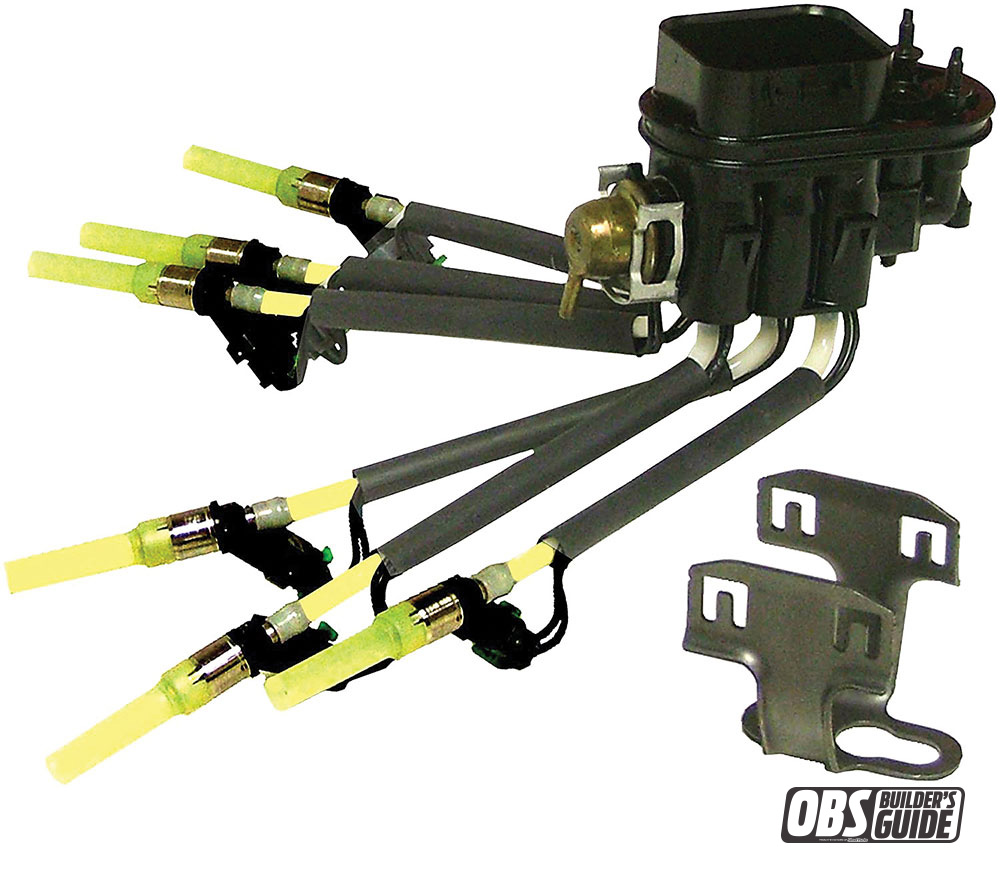 CPI (central point injection) was used on the ‘96-’00 4.3L-V6, 5.0L-V8, 5.7L-V8
CPI (central point injection) was used on the ‘96-’00 4.3L-V6, 5.0L-V8, 5.7L-V8
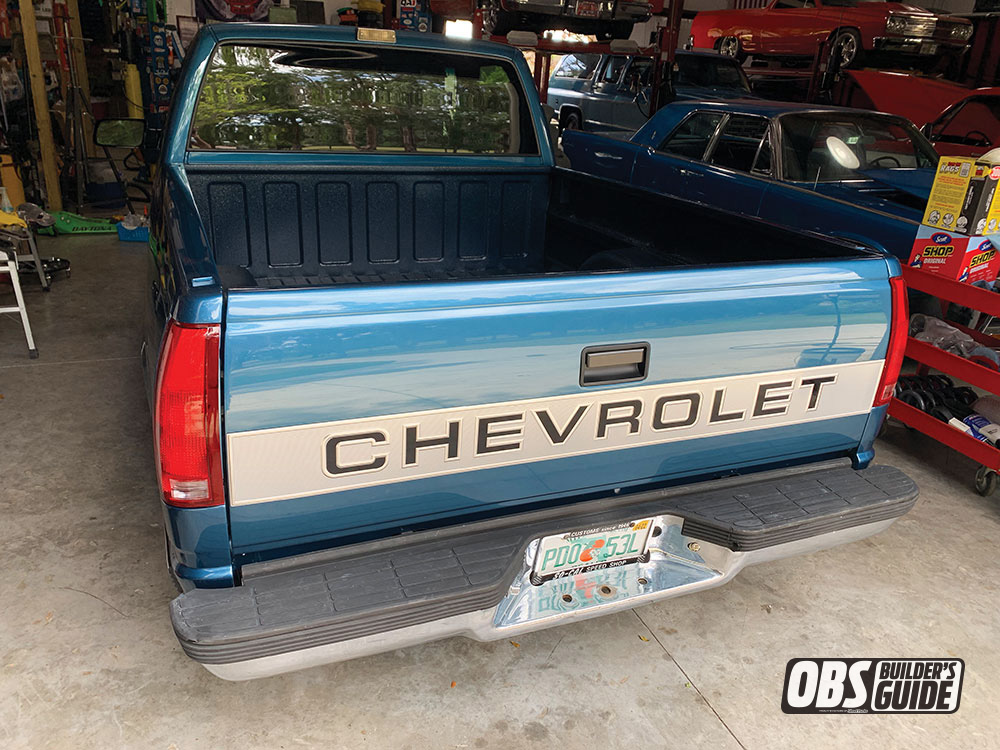 1997 was to be the last year the C/K Silverado would display “CHEVROLET” on the tailgate
1997 was to be the last year the C/K Silverado would display “CHEVROLET” on the tailgate
When you have owned a 1972 C10 truck for more than 40 years, it’s difficult to not have a lot of it. Memories from the first time it graced your driveway, the many times you cruised it on familiar terrain and the many times you turned wrenches on it with Dad to the customizing stages and how it has evolved over the years all seem to enter the psyche every time the key hits the ignition and the air-fuel mix exits the pipes.
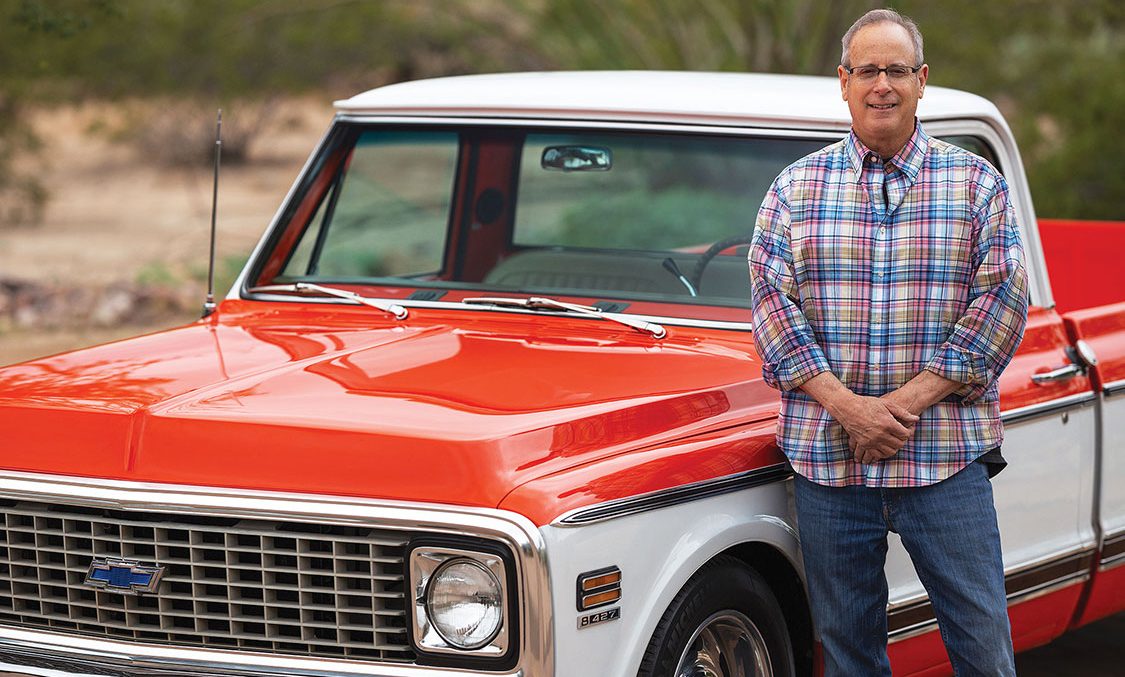
For Charles Mudd of Mesa, Arizona, the bond with his 1972 Chevy C10 longbed couldn’t be stronger. While in the Navy, Charles purchased the truck in 1978 at a local Chevrolet dealership in San Diego where the original owner had just traded it in. The timing was perfect, as Charles as a young man always loved the ’67-’72 body style and at that age gave no mention to a long- versus shortbed. As vehicles shuttle us through time periods in our lives filled with career changes, moves and family life, the C10 did the same for Charles. “His baby,” as it were, no matter what was going on, the truck was a consistent and reliable source of pride, fun and self-fulfillment.
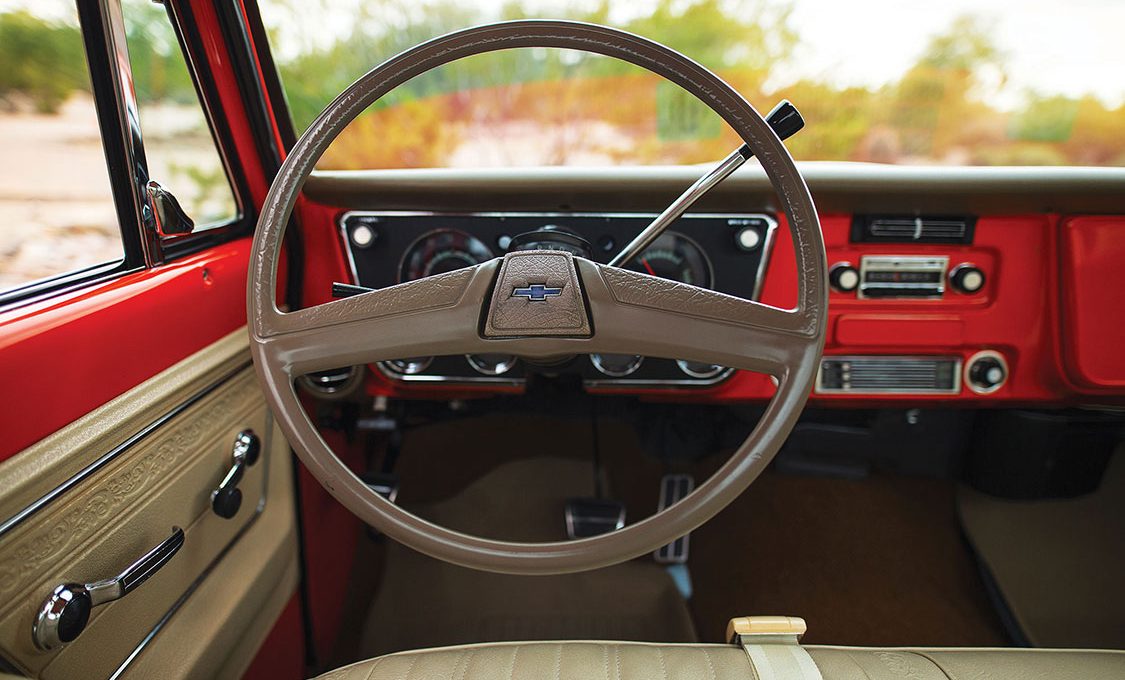
As with most enthusiasts and long-term vehicle ownership, the truck went through “phases” as time would allow. Charles personalized the truck to his taste, never straying too far from what the Chevrolet gods intended when they created this beauty in ’72. An upgraded AM/FM cassette and some aftermarket speakers mounted in the B-pillars were the first modifications. After all, Charles needed rock music for the long coast-to-coast trip back to his duty station in Norfolk, Virginia. Charles had one scheduled stop in his hometown of Tucson, Arizona, and then all the way to the Atlantic coast. Today, as an older enthusiast, Charles still cringes to this day when he thinks about the holes he made in the inside of the cab and dash to accommodate the new sounds. Luckily, a steady hand and a clean installation make that a slightly less regrettable act—hey, it’s what you do when you’re 20 years old: cruise and play music loud.

After getting out of the Navy in the early ’80s, Charles migrated back to Tucson to begin his post-service life. He lived in a townhouse back in ’83, and during his daily morning jog, he kept noticing an unsightly green oxidized ’69 Chevrolet Caprice four-door in the parking lot. He didn’t think much of it until one day, a pair of 427 flags on the front fenders caught his eye. He opened the hood to find a box-stock 68,000-mile 335-horse 427 backed by a Turbo 400. Suddenly the old Caprice was pretty cool and Charles went on the hunt to find the owner. A deal was struck and the Caprice was relieved of its big block and Turbo 400 slush box.
After the 427 was plucked from the undeserving Caprice, Charles’ dad, Mr. Mudd, set up the heads for unleaded fuel, replaced a few seals and dropped the big-block and three-speed combo into its new position of power in the ’72. Years of reliable service followed with minor additions of a Transgo shift kit, Hughes aluminum trans pan and an HEI ignition. Otherwise, the big block runs like a stopwatch and Charles will challenge you to feel it idle. With the correct, stickers, hose clams and a A/C Delco battery, the look under the hood is very factory original, as if GM put the big cubes in there in ’72 when the truck was born. A dual snorkel air cleaner is the only non-stock appearance item.
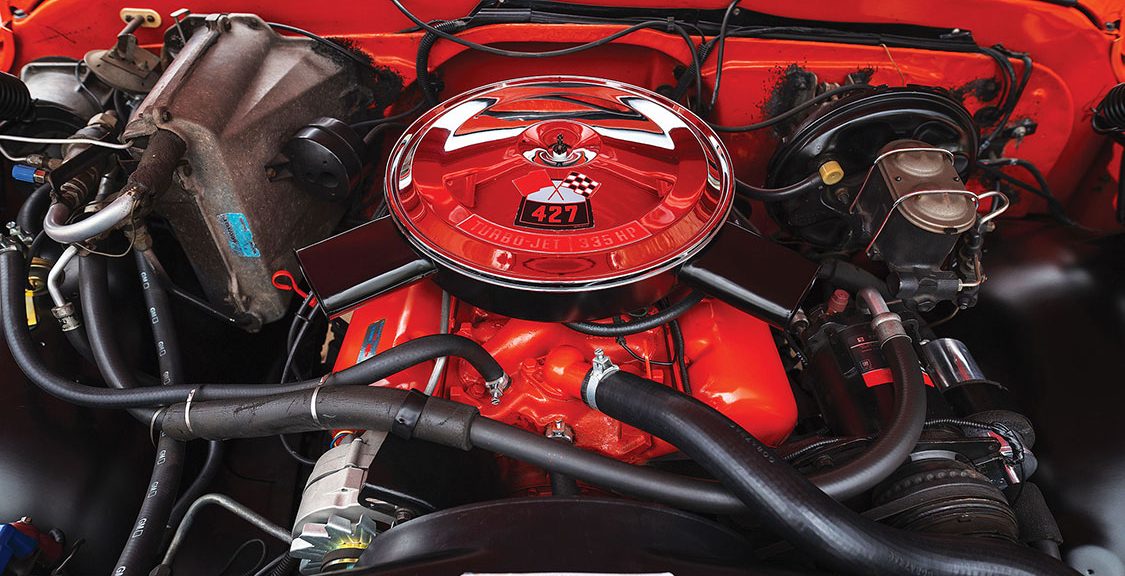
An aluminized exhaust echoes the big blocks bark while a clean exit behind each rear tire emulates the way Chevy did on its SS line of Chevelles. As the owner of an extremely low-mileage Hemi survivor and a really trick ’56 Ford, big window hotrod, he says it’s the ’72 that consistently gets the looks.
After the motor swap in ’83 Charles’ dad rolled the truck into the family carport one morning at 5 a.m. in Tucson and freshened up the factory colors with single stage Hugger Orange and White. That same paint work Dear Old Dad lovingly laid down in ’83 still shines bright on the truck today.
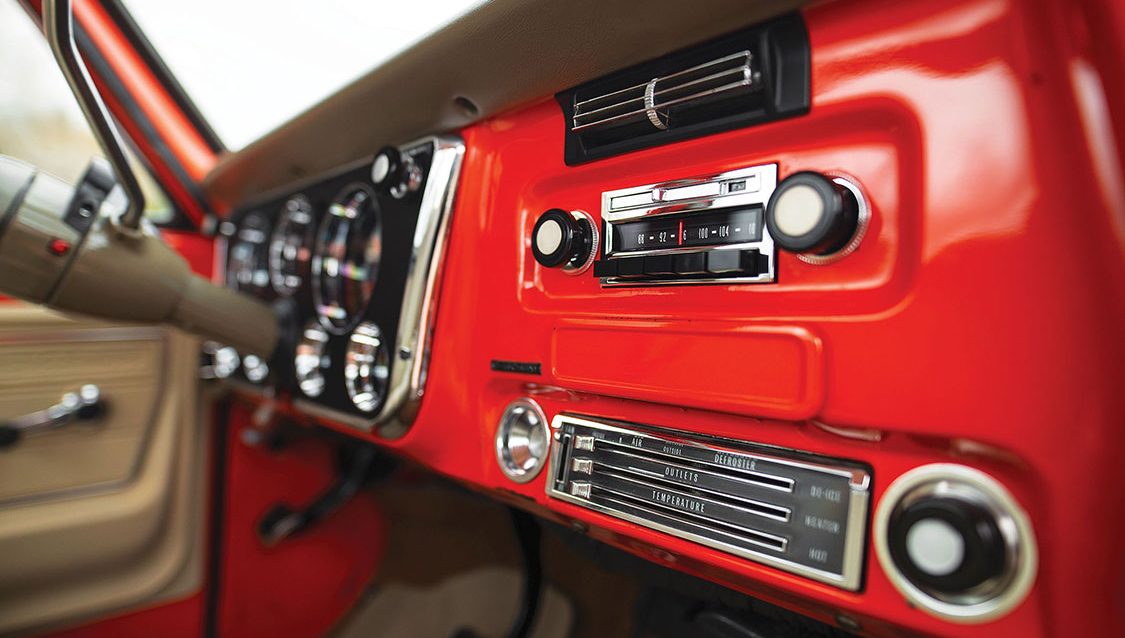
Fast forward to the mid ’90s, and the truck received its next phase of mild customizing in the form a 4/6 suspension drop using parts from Early Classic Enterprises in Fresno, California. Circle Racing Wheels cut the 17-inch Rally’s to emulate a factory Rally wheel, which are shod with Michelin tires. The conservative stance and factory-like wheels and rubber give the truck a nice balance of OEM heritage and aftermarket classic style, making the truck a hit wherever it goes.
Around 2005, Charles delivered the truck to John Sewell at Hi-Speed Customs in Tucson for some mild bodywork. John filled the stake bed holes, mirror holes and removed the auxiliary fuel tank fill door on the driver’s side. On the passenger side resides a rare factory tool box. Following the mild metal mods John re-sprayed the bed so it looks like the mods are factory. The inside of the steel bed floor was painted as well for a clean factory-like appearance.
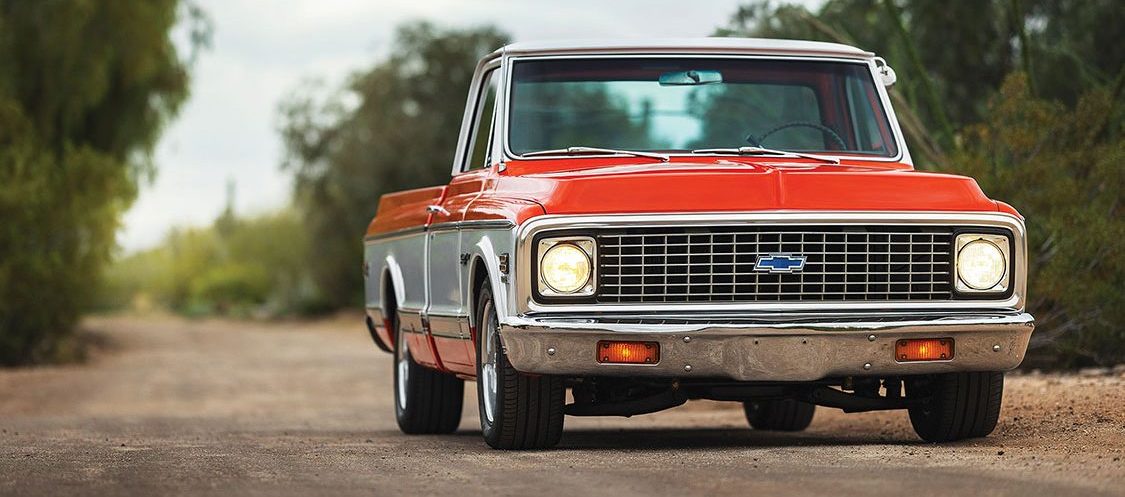
The interior was re-trimmed in a very factory-esque pattern and style with the original door panels and sun visors dyed to match the fresh seat cover. A new radio was installed in the factory hole to emulate the original AM/FM slider bar unit.
Charles Mudd has achieved a well-balanced classic truck in his 1972 Chevy C10. The memories created in his youth driving this truck cross-country and working on it with his dad are priceless. Charles is quick to point out that he enjoys driving the truck every chance he gets as getting behind the wheel connects him to the past, simpler times and all of the great memories on the road. There is just nothing in the world like cool old trucks! Check out other C10’s here!
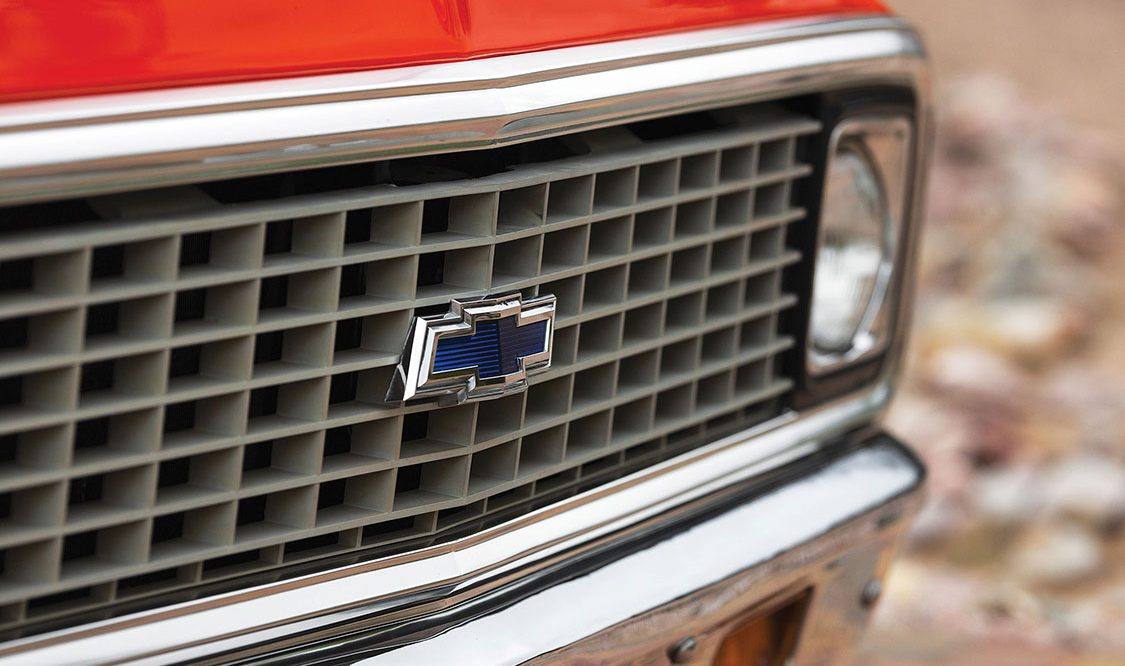
A DRIVER. Every custom truck enthusiast must have one. The driver is the truck that gets mobbed on the daily work commute and usually gets put through the paces on the weekend hauling the “show truck” around. The driver is never left alone for long, however. It always starts out innocent enough with a drop kit or airbag suspension setup, wheels and tires, and maybe some upgraded audio and simple exterior bolt-ons, but that only lasts so long. Pretty soon, the custom truck freak’s desire to take the build further and further takes over, and what was once the driver becomes yet another show truck. So much for self-restraint!
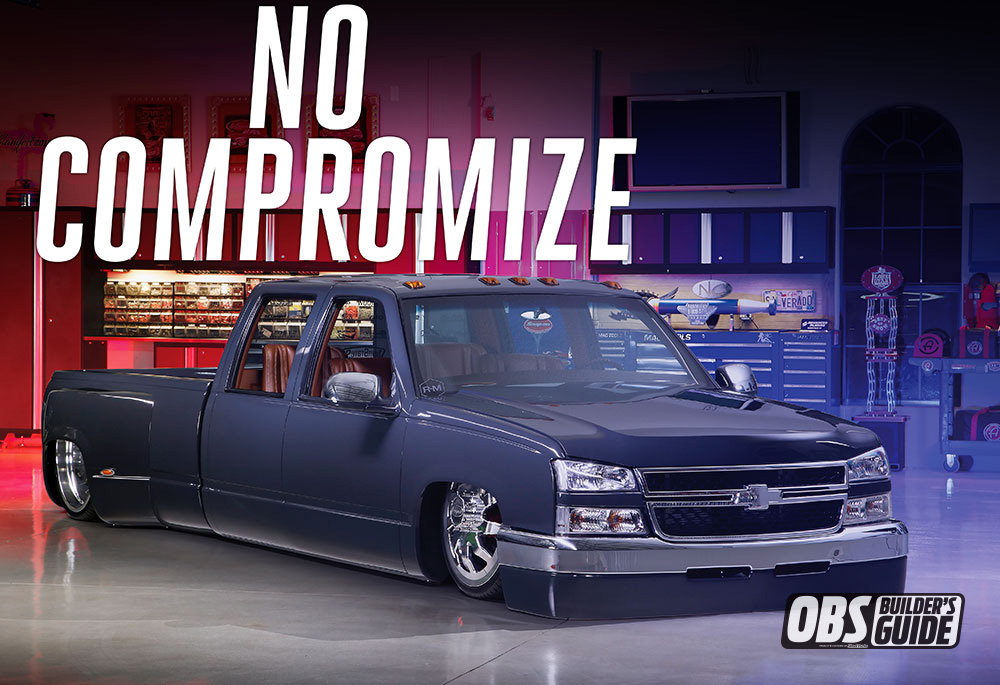
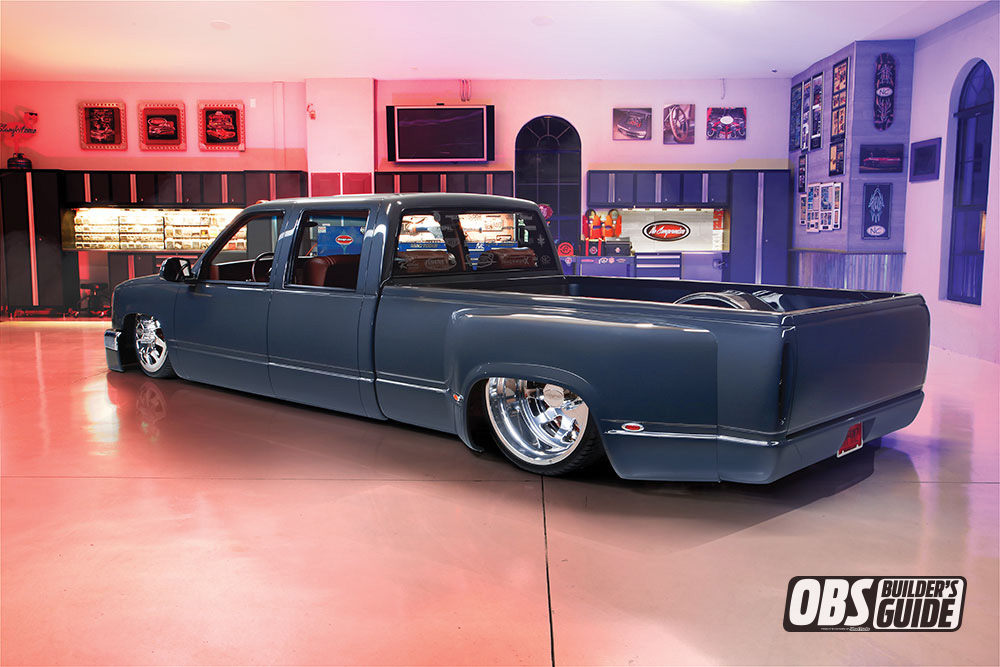 Mike Barcia out of Tampa, Florida, bought a driver back in January 2001 to tow his full custom Isuzu show truck. The driver came to him in the form of a trade where Mike gave up the title to his bagged ’90 C3500 and some cash for the ’96 four-door that would eventually become No Compromize.
Mike Barcia out of Tampa, Florida, bought a driver back in January 2001 to tow his full custom Isuzu show truck. The driver came to him in the form of a trade where Mike gave up the title to his bagged ’90 C3500 and some cash for the ’96 four-door that would eventually become No Compromize.
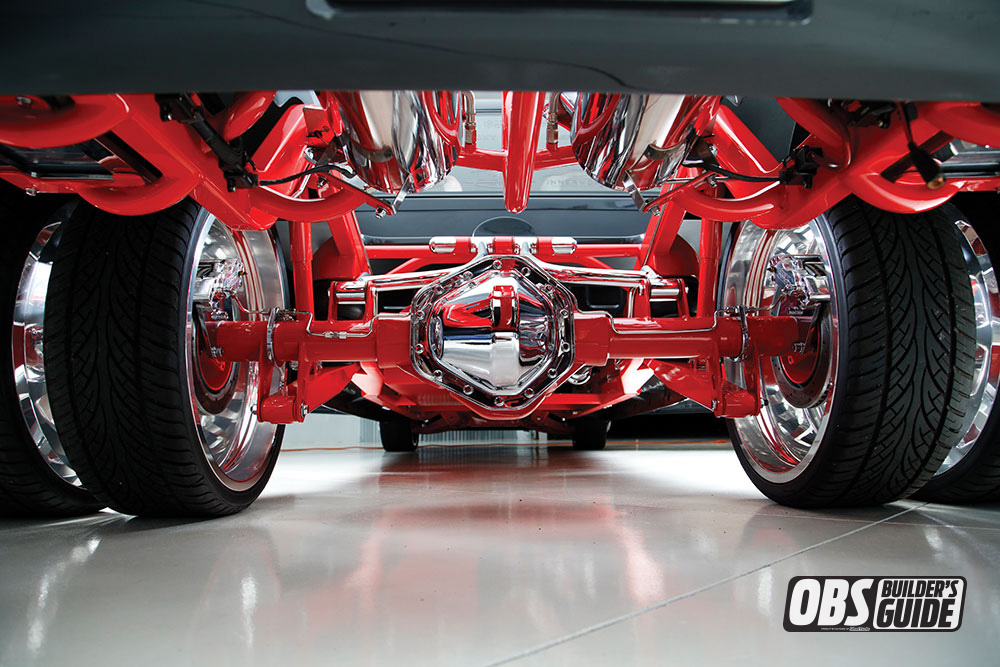 After a weekend of de-grampifying the OBS Crew, Mike set about getting it on the ground. Set up with full air-ride suspension, the truck’s stock black paint eventually gave way to a full color change with a crisp and clean two-tone with traditional flames heating up the beltline coupled with billet interior accents, ear pounding audio and deep detail under the hood. It didn’t take long before the driver became another show truck. So, Mike decided to take the dually off the road and show circuit and build the most radical custom 1-ton on the planet. The Isuzu was sidelined and the dually became the popular girl getting all of the love and attention.
After a weekend of de-grampifying the OBS Crew, Mike set about getting it on the ground. Set up with full air-ride suspension, the truck’s stock black paint eventually gave way to a full color change with a crisp and clean two-tone with traditional flames heating up the beltline coupled with billet interior accents, ear pounding audio and deep detail under the hood. It didn’t take long before the driver became another show truck. So, Mike decided to take the dually off the road and show circuit and build the most radical custom 1-ton on the planet. The Isuzu was sidelined and the dually became the popular girl getting all of the love and attention.
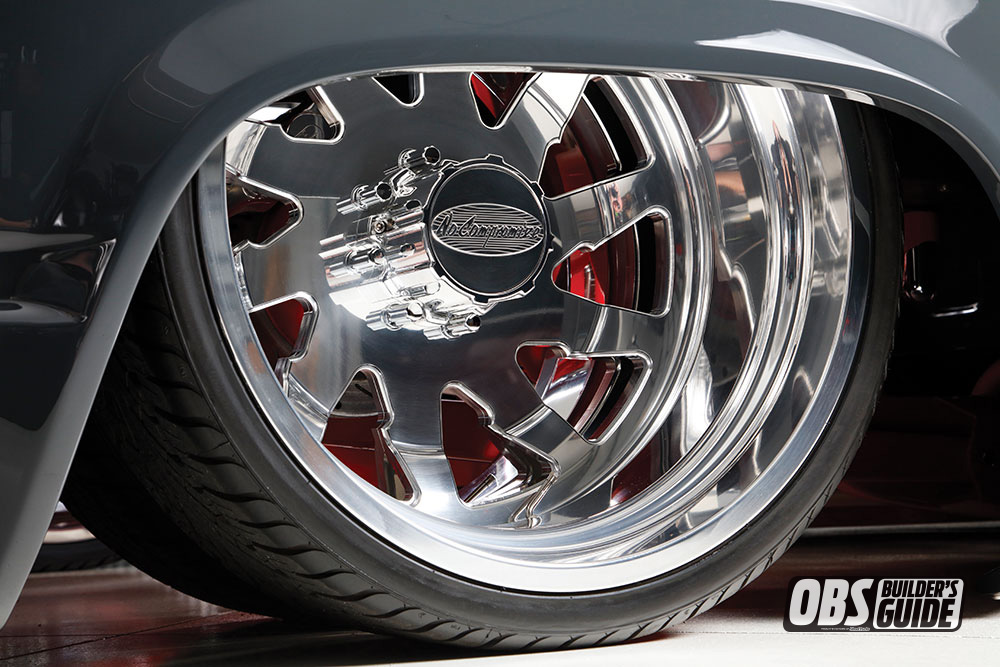 It was February 2003 when Mike and friend and fellow Negative Camber club member Robbie Taylor tore the truck down to perform a traditional 4-inch body drop on it. After the rockers were kissing the Florida asphalt, the truck looked cool but Mike thought, “It’ll just be another bagged and bodied dually with nice paint and a stock frame under it.” So, the decision was made to go for broke and have a full custom chassis built. Also being a fan and regular attendee of ISCA World of Wheels car shows where the best of best show up to compete, Mike knew that if he wanted to play on that level with the truck, then he had to bring his A game.
It was February 2003 when Mike and friend and fellow Negative Camber club member Robbie Taylor tore the truck down to perform a traditional 4-inch body drop on it. After the rockers were kissing the Florida asphalt, the truck looked cool but Mike thought, “It’ll just be another bagged and bodied dually with nice paint and a stock frame under it.” So, the decision was made to go for broke and have a full custom chassis built. Also being a fan and regular attendee of ISCA World of Wheels car shows where the best of best show up to compete, Mike knew that if he wanted to play on that level with the truck, then he had to bring his A game.
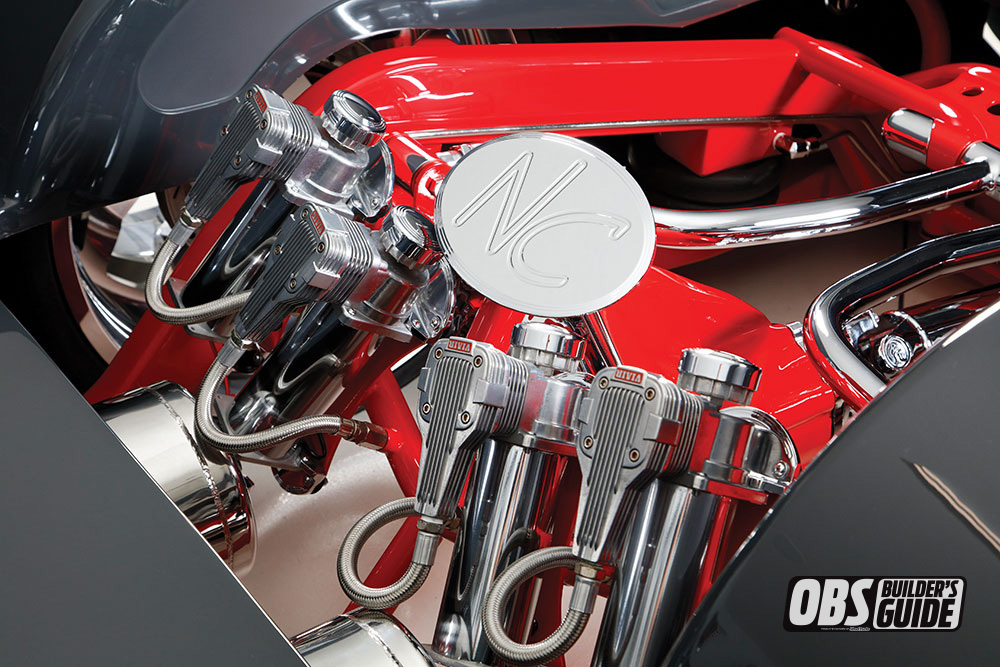 Enter Jimmy Graham of Jimmy’s Rod N Customs in Edgewater, Florida. Jimmy hand built and fabricated a oneoff custom chassis equipped with a custom built four-link rear suspension. The leadingedge underpinnings feature custom front suspension and shock hoops built from scratch. Not only is the chassis of No Compromize a work of fabrication and design art, but the depth of detail is unmatched.
Enter Jimmy Graham of Jimmy’s Rod N Customs in Edgewater, Florida. Jimmy hand built and fabricated a oneoff custom chassis equipped with a custom built four-link rear suspension. The leadingedge underpinnings feature custom front suspension and shock hoops built from scratch. Not only is the chassis of No Compromize a work of fabrication and design art, but the depth of detail is unmatched.
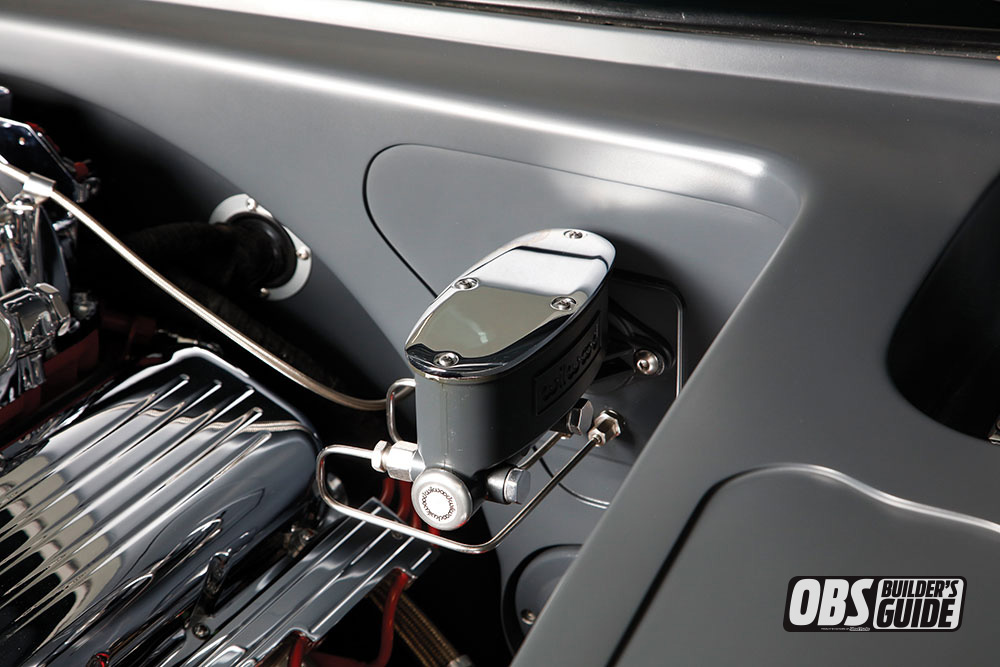 After Jimmy finished fabbing up the ultimate bones and suspension, Mike took special care to grind smooth all unnecessary roughness, such as the factory ridges on top of the rear differential where the axle tubes meet the pumpkin. Mike and Gerald Ashe welded up all of the seams and grinded all the welds baby butt smooth. Friend and fellow NC club member David “Double D” Dekorver bodyworked the frame before Chris Bareswilt covered the chassis and suspension components in Euro Red. The frame and suspension were painted as opposed to powdercoated for a superior finish, and then Mike wet sanded and polished to perfection.
After Jimmy finished fabbing up the ultimate bones and suspension, Mike took special care to grind smooth all unnecessary roughness, such as the factory ridges on top of the rear differential where the axle tubes meet the pumpkin. Mike and Gerald Ashe welded up all of the seams and grinded all the welds baby butt smooth. Friend and fellow NC club member David “Double D” Dekorver bodyworked the frame before Chris Bareswilt covered the chassis and suspension components in Euro Red. The frame and suspension were painted as opposed to powdercoated for a superior finish, and then Mike wet sanded and polished to perfection.
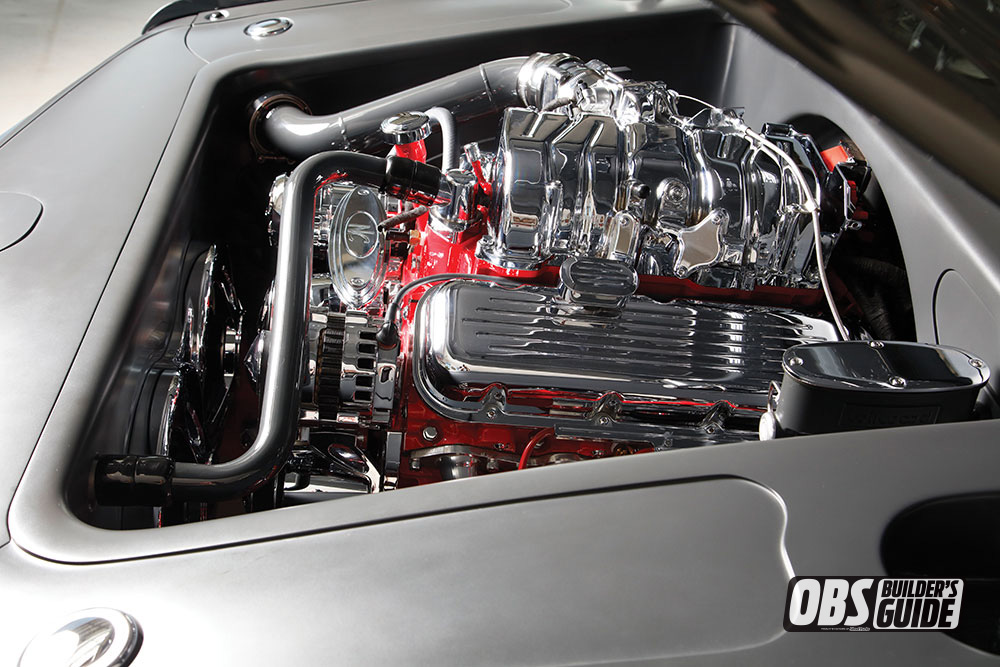 To keep things extra clean and smooth, all of the wiring was run through the frame rails, the air compressors were plumbed into the chassis tubing, and all of the chromed stainless bolts were clocked the same direction for that extra touch of ISCA detail. Polished stainless hard lines handle fluid transfer to the brakes and transmission, while a fully polished 3-inch stainless exhaust system built by Jimmy Graham with one-off billet chrome plated exhaust hangers built by Tom Hingle of Billet & Acrylic Fantasies kick out the octane cocktails. Cruising juice is housed in a custom aluminum fuel cell built by Jeff Davy of Devious Customs. The factory rearend was shortened 9 inches and stuffed with shortened Franklin axles while the first set of 24-inch Raceline Ratchet polished wheels mounted on Toyo rubber. Mike even sanded the side walls down for a smooth no-letter look. For an extra touch, Mike reached out to Kennedy Brown from Fat Dog Designs in Jonesboro, Arkansas, to machine one-off billet floating logo No Compromize center caps.
To keep things extra clean and smooth, all of the wiring was run through the frame rails, the air compressors were plumbed into the chassis tubing, and all of the chromed stainless bolts were clocked the same direction for that extra touch of ISCA detail. Polished stainless hard lines handle fluid transfer to the brakes and transmission, while a fully polished 3-inch stainless exhaust system built by Jimmy Graham with one-off billet chrome plated exhaust hangers built by Tom Hingle of Billet & Acrylic Fantasies kick out the octane cocktails. Cruising juice is housed in a custom aluminum fuel cell built by Jeff Davy of Devious Customs. The factory rearend was shortened 9 inches and stuffed with shortened Franklin axles while the first set of 24-inch Raceline Ratchet polished wheels mounted on Toyo rubber. Mike even sanded the side walls down for a smooth no-letter look. For an extra touch, Mike reached out to Kennedy Brown from Fat Dog Designs in Jonesboro, Arkansas, to machine one-off billet floating logo No Compromize center caps.
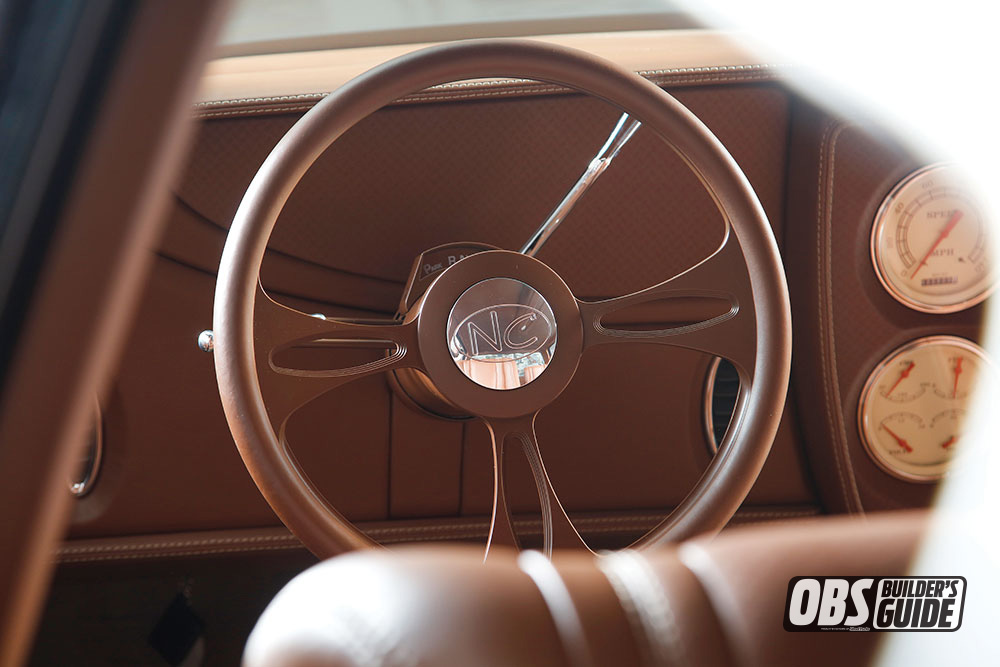 The truck comes to a halt with one-off billet 4-piston calipers and custom slotted and drilled rotors by Aerospace Engineering. Slam Specialties Slam Bags get the meticulously detailed underpinnings on the ground while air management from Accuair sends lift and drop commands from Mike’s itchy trigger fingers. Viair compressors re-supply the tanks.
The truck comes to a halt with one-off billet 4-piston calipers and custom slotted and drilled rotors by Aerospace Engineering. Slam Specialties Slam Bags get the meticulously detailed underpinnings on the ground while air management from Accuair sends lift and drop commands from Mike’s itchy trigger fingers. Viair compressors re-supply the tanks.
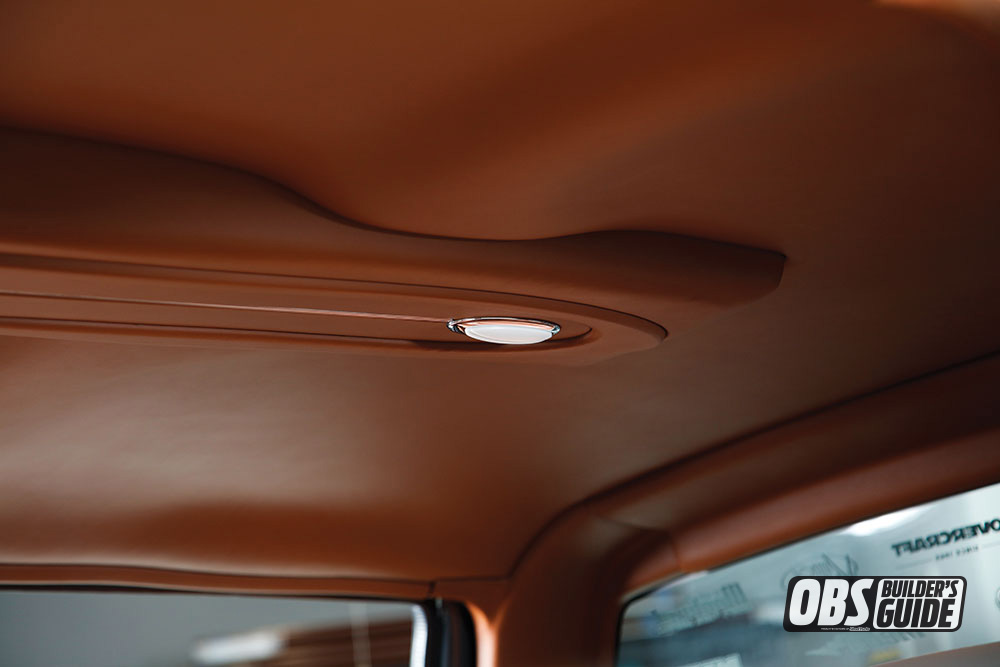 The factory big block, while mechanically stock, has a bit more bite with a March Pulley Set, Edelbrock Headers and 3-inch custom built stainless exhaust. Making the most noise under the hood is the deep detail, including the smoothed block and heads, paint-matched block, and all of the chromed and polished accents. Mike wanted the world’s finest chrome, so he reached out to Steve from Advanced Plating in Tennessee to get that accomplished. Billet Specialties valve covers cap off the valve train in style, while a custom-built radiator from Performance Rod and Customs keeps the BBC’s operating temps in check. A Wilwood master cylinder kicks fluid to the custom machined calipers allowing them to bite down on the slotted and drilled rotors.
The factory big block, while mechanically stock, has a bit more bite with a March Pulley Set, Edelbrock Headers and 3-inch custom built stainless exhaust. Making the most noise under the hood is the deep detail, including the smoothed block and heads, paint-matched block, and all of the chromed and polished accents. Mike wanted the world’s finest chrome, so he reached out to Steve from Advanced Plating in Tennessee to get that accomplished. Billet Specialties valve covers cap off the valve train in style, while a custom-built radiator from Performance Rod and Customs keeps the BBC’s operating temps in check. A Wilwood master cylinder kicks fluid to the custom machined calipers allowing them to bite down on the slotted and drilled rotors.
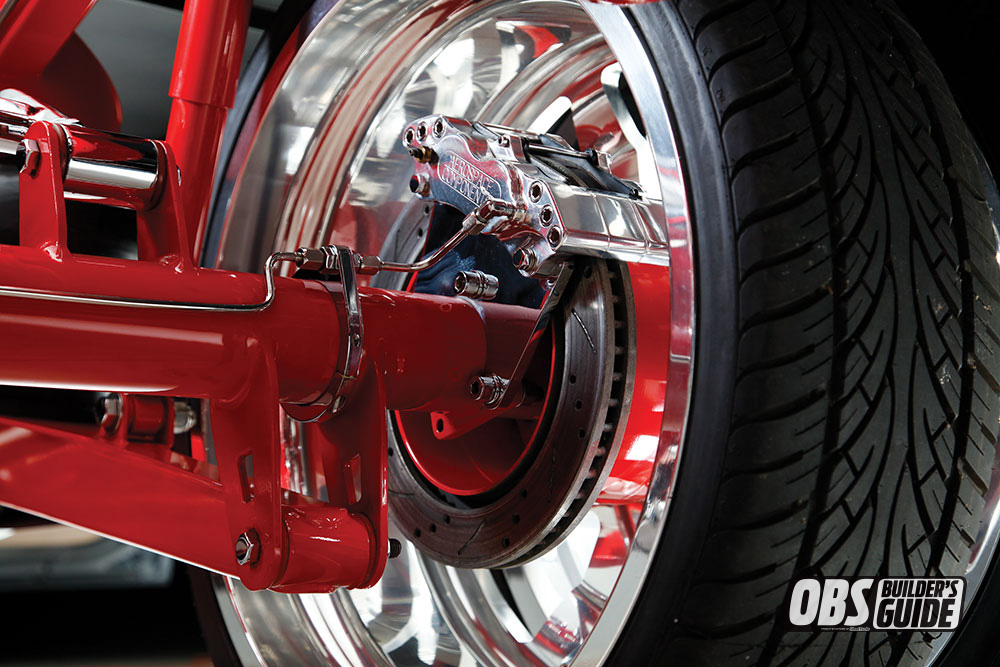 When building a truck of this caliber, getting it this low and expecting it to compete and win on the extremely competitive indoor show circuit, you have to pull out all of the stops. Modifications lead to more modifications to achieve the right fit, the right look, the right form and most importantly the right function! Not only does No Compromize have a detailed to the nines, full-custom chassis, but the envelope was deeply modified as well, demanding a mountain of metal work from the firewall forward.
When building a truck of this caliber, getting it this low and expecting it to compete and win on the extremely competitive indoor show circuit, you have to pull out all of the stops. Modifications lead to more modifications to achieve the right fit, the right look, the right form and most importantly the right function! Not only does No Compromize have a detailed to the nines, full-custom chassis, but the envelope was deeply modified as well, demanding a mountain of metal work from the firewall forward.
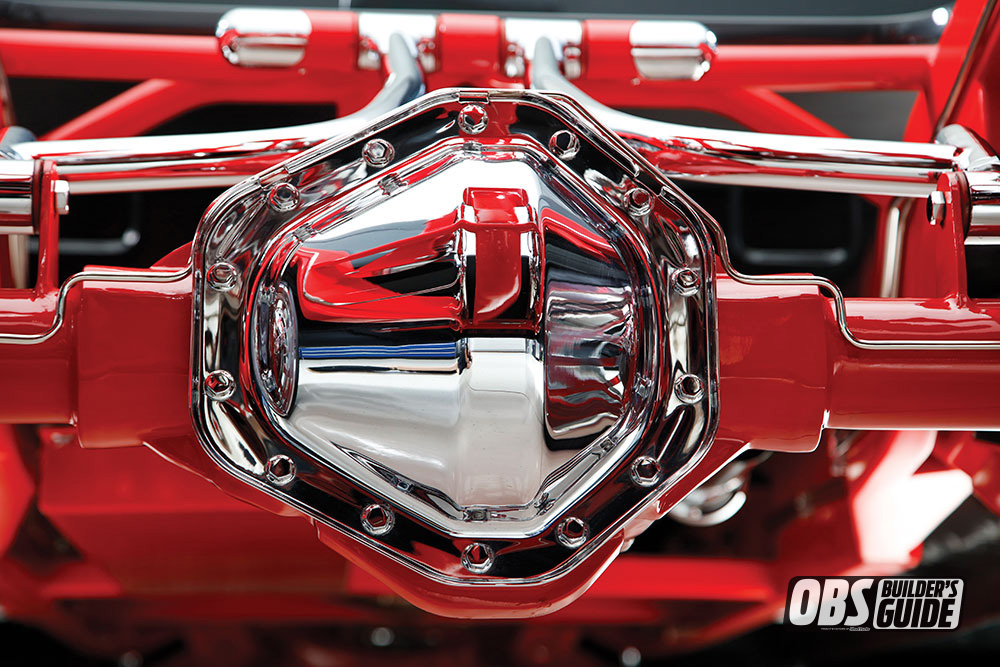 Blending classic CK lines with more modern Silverado styling, Mike opted to go with a ‘06 Chevy cat-eye front end. Sounds simple, right? But this mod combined with Mike’s obsession to go over the top turned into a five-year fabrication adventure just to make it seamless. Jimmy’s Rod ‘N’ Custom knocked it out of the park again with hammer bending all of the edges for a clean, smooth look. The front fenders were sectioned and lengthened in the front to make them flush with the ’06 Silverado bumper. On the backside, the ’06 fender is joined with the ’96 fender, and the wheel opening had to be cut, sectioned and massaged to make the lines flow proportionately. Moving up, the hood was lengthened on the backside by 10 inches and the windshield wiper cowl area was removed. The side curves of the hood were cut off so that when the hood was opened a clean fender line was achieved. The hood top body lines were then rebuilt and moved in 2 inches per side. The bottom side of the hood was hand built with a bead-rolled insert added for a smooth look and to gain clearance between the top of the intake and the base of the hood. The ’06 Silverado bumper top was chromed and the lower half sectioned and extended by Gerald Ashe so the bottom sat flush with the tarmac when the truck is laid out.
Blending classic CK lines with more modern Silverado styling, Mike opted to go with a ‘06 Chevy cat-eye front end. Sounds simple, right? But this mod combined with Mike’s obsession to go over the top turned into a five-year fabrication adventure just to make it seamless. Jimmy’s Rod ‘N’ Custom knocked it out of the park again with hammer bending all of the edges for a clean, smooth look. The front fenders were sectioned and lengthened in the front to make them flush with the ’06 Silverado bumper. On the backside, the ’06 fender is joined with the ’96 fender, and the wheel opening had to be cut, sectioned and massaged to make the lines flow proportionately. Moving up, the hood was lengthened on the backside by 10 inches and the windshield wiper cowl area was removed. The side curves of the hood were cut off so that when the hood was opened a clean fender line was achieved. The hood top body lines were then rebuilt and moved in 2 inches per side. The bottom side of the hood was hand built with a bead-rolled insert added for a smooth look and to gain clearance between the top of the intake and the base of the hood. The ’06 Silverado bumper top was chromed and the lower half sectioned and extended by Gerald Ashe so the bottom sat flush with the tarmac when the truck is laid out.
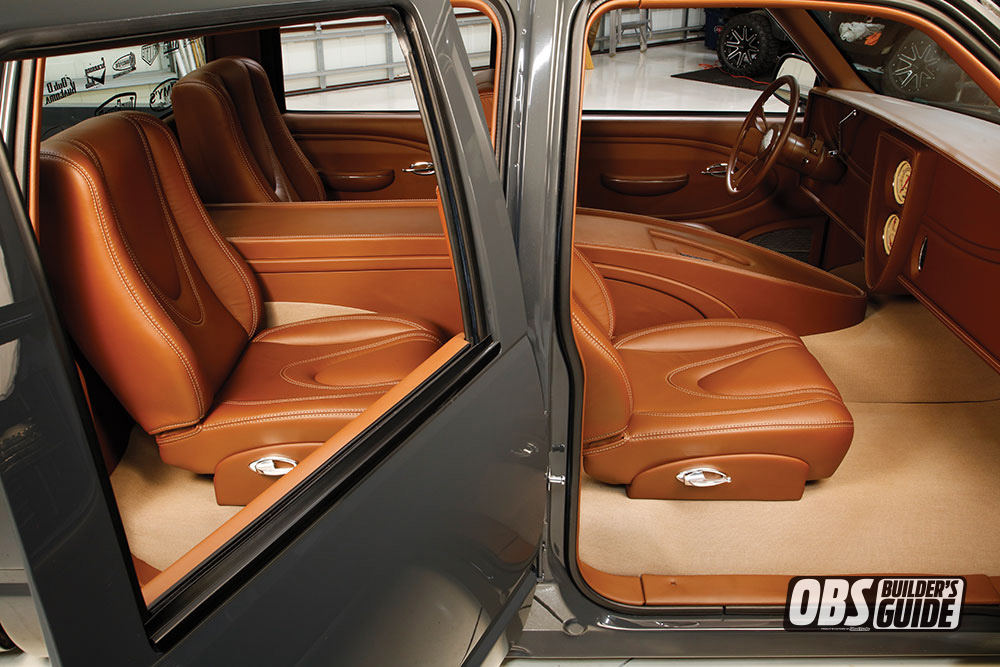 Even before paint was laid down, the engine compartment alone was a work of art in and of itself, with a custom bead-rolled firewall, custom core support and core support bead-rolled sheetmetal cover and bead-rolled fender wells. The radiator and power steering caps were all frenched into the sheetmetal work as well as the hood hinge pockets. To take it one step further, Mike wanted custom billet hood hinges, but he had no clue what he was getting himself into. After commissioning four different machine shops and delaying the build for over a year, Bobby McCurdy finally saved the day. Bobby designed and cut a set of one-off custom billet hood hinges like no other. The truck is basically a highend turn table street rod with a bed on it.
Even before paint was laid down, the engine compartment alone was a work of art in and of itself, with a custom bead-rolled firewall, custom core support and core support bead-rolled sheetmetal cover and bead-rolled fender wells. The radiator and power steering caps were all frenched into the sheetmetal work as well as the hood hinge pockets. To take it one step further, Mike wanted custom billet hood hinges, but he had no clue what he was getting himself into. After commissioning four different machine shops and delaying the build for over a year, Bobby McCurdy finally saved the day. Bobby designed and cut a set of one-off custom billet hood hinges like no other. The truck is basically a highend turn table street rod with a bed on it.
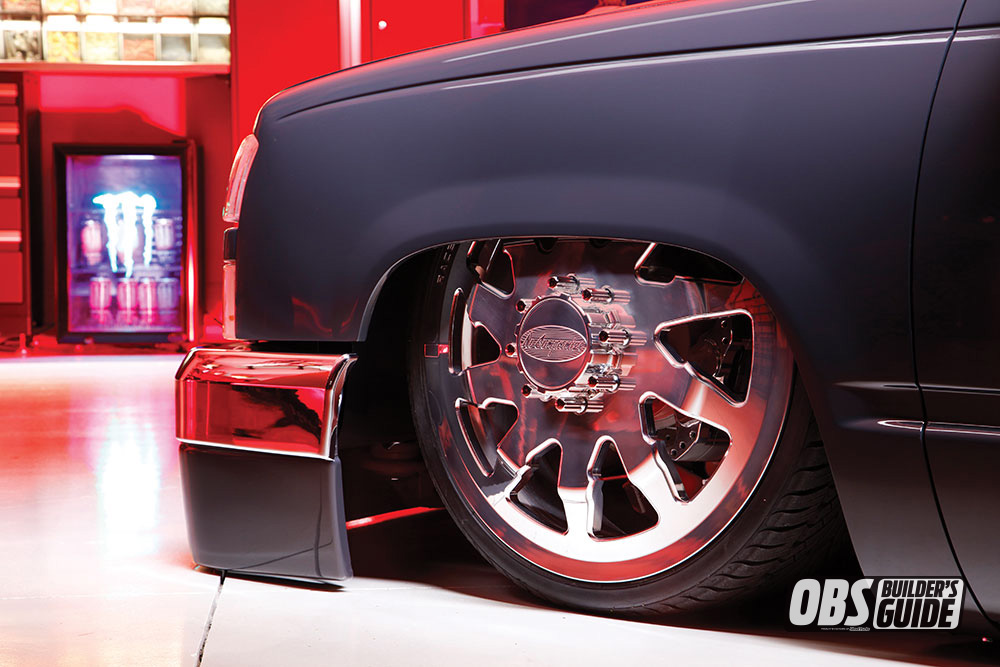 After Jimmy finished the work on the front clip and the engine compartment, it was time to get the cab and bed slick and smooth. Starting with the bed, the fuel door, stake pockets, tailgate handle and taillights were all shaved. A motorcycle style fuel cap was added to the top of the bed rail while one-off custom taillights by Greening Auto were frenched in for stylish stopping. A custom roll pan was built, and the dually fenders were raised 2 inches so the 24-inch Raceline would tuck. Jimmy fabricated new bead-rolled sheetmetal to the front outside bulkhead of the bed, and the factory dually fender marker lights were shaved in favor of custom one off machined replacement. Jimmy kept the tools burning by fabricating a push-button tailgate handle on the inside of the tailgate, rounding all four corners of the inside of the bed, building bead-rolled interior sheetmetal inserts inside the inner bed sides, and building widened bead-rolled inner wheel tubs. It didn’t stop there. The welder kept on blazing with a custom raised and smoothed bed floor panel, both top and bottom, smooth sheetmetal on the inside of the tailgate and bead-rolled billet oval No Compromize insert into the tailgate.
After Jimmy finished the work on the front clip and the engine compartment, it was time to get the cab and bed slick and smooth. Starting with the bed, the fuel door, stake pockets, tailgate handle and taillights were all shaved. A motorcycle style fuel cap was added to the top of the bed rail while one-off custom taillights by Greening Auto were frenched in for stylish stopping. A custom roll pan was built, and the dually fenders were raised 2 inches so the 24-inch Raceline would tuck. Jimmy fabricated new bead-rolled sheetmetal to the front outside bulkhead of the bed, and the factory dually fender marker lights were shaved in favor of custom one off machined replacement. Jimmy kept the tools burning by fabricating a push-button tailgate handle on the inside of the tailgate, rounding all four corners of the inside of the bed, building bead-rolled interior sheetmetal inserts inside the inner bed sides, and building widened bead-rolled inner wheel tubs. It didn’t stop there. The welder kept on blazing with a custom raised and smoothed bed floor panel, both top and bottom, smooth sheetmetal on the inside of the tailgate and bead-rolled billet oval No Compromize insert into the tailgate.
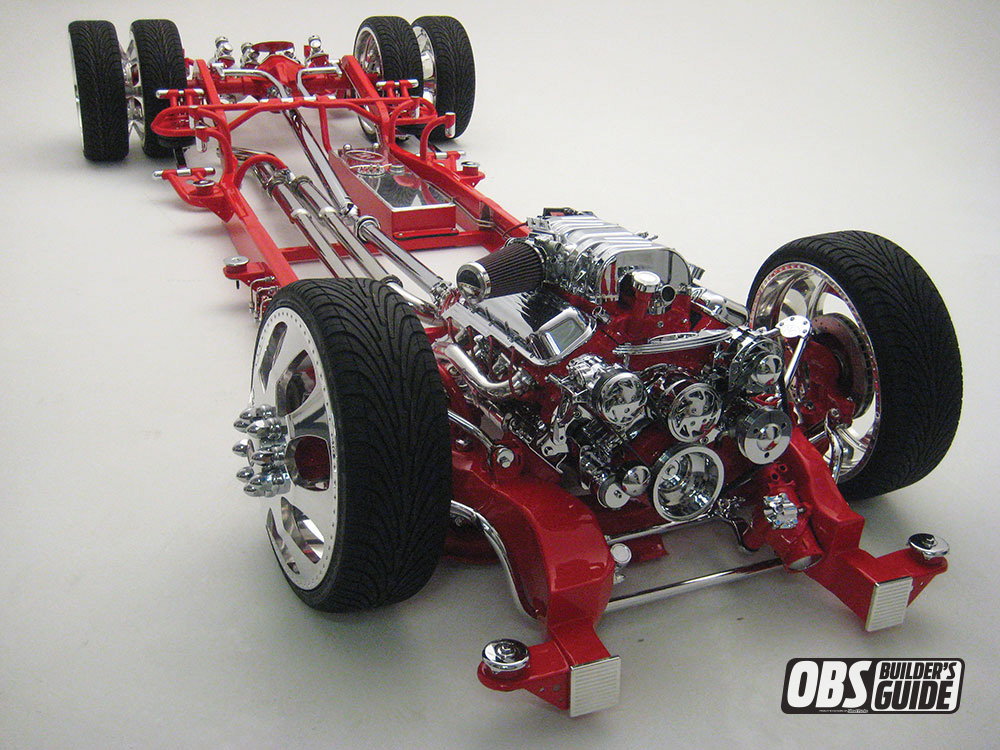 Ever since the truck came off the road and was torn down in ’03, the color of choice for the modified metal was to be red. When it came time for the metal work to be body worked and covered in color, Mike delivered the truck to Justin and Eli Griffin at Twin States Rod Shop in Meridian, Mississippi. Once the truck was arrow straight, smooth and ready for color, it was time for the booth and the ultimate decision on color. Since the chassis was already red and Mike wanted it to stand out, it was decided that the body better be an opposing color. BASF RM products were custom mixed to come up with the custom color nicknamed “SEMA Gray,” and the truck was coated from nose to tail and roof to rocker and the liquid art buried in RM Glamour clear coat.
Ever since the truck came off the road and was torn down in ’03, the color of choice for the modified metal was to be red. When it came time for the metal work to be body worked and covered in color, Mike delivered the truck to Justin and Eli Griffin at Twin States Rod Shop in Meridian, Mississippi. Once the truck was arrow straight, smooth and ready for color, it was time for the booth and the ultimate decision on color. Since the chassis was already red and Mike wanted it to stand out, it was decided that the body better be an opposing color. BASF RM products were custom mixed to come up with the custom color nicknamed “SEMA Gray,” and the truck was coated from nose to tail and roof to rocker and the liquid art buried in RM Glamour clear coat.
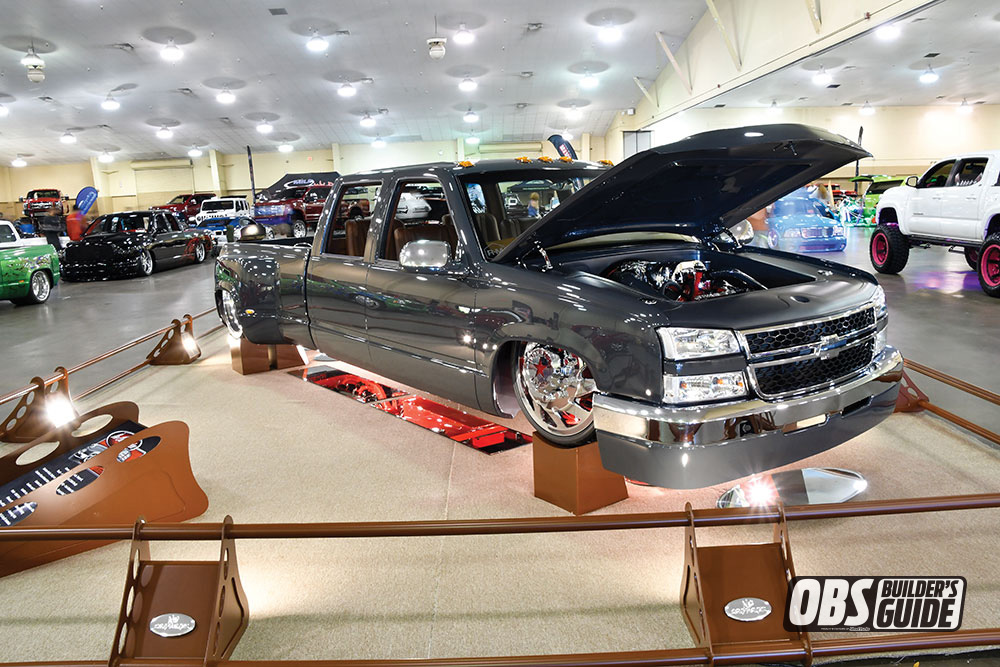 Completion of the metal work, body work and paint led to wiring before the truck was delivered to the upholstery and audio shop for threads and sounds. Justin and Eli Griffin installed a Painless Performance wiring harness to connect all of the electrical dots and a custom motor wire harness from Tempe Speed & Performance to get the bigblock cranking.
Completion of the metal work, body work and paint led to wiring before the truck was delivered to the upholstery and audio shop for threads and sounds. Justin and Eli Griffin installed a Painless Performance wiring harness to connect all of the electrical dots and a custom motor wire harness from Tempe Speed & Performance to get the bigblock cranking.
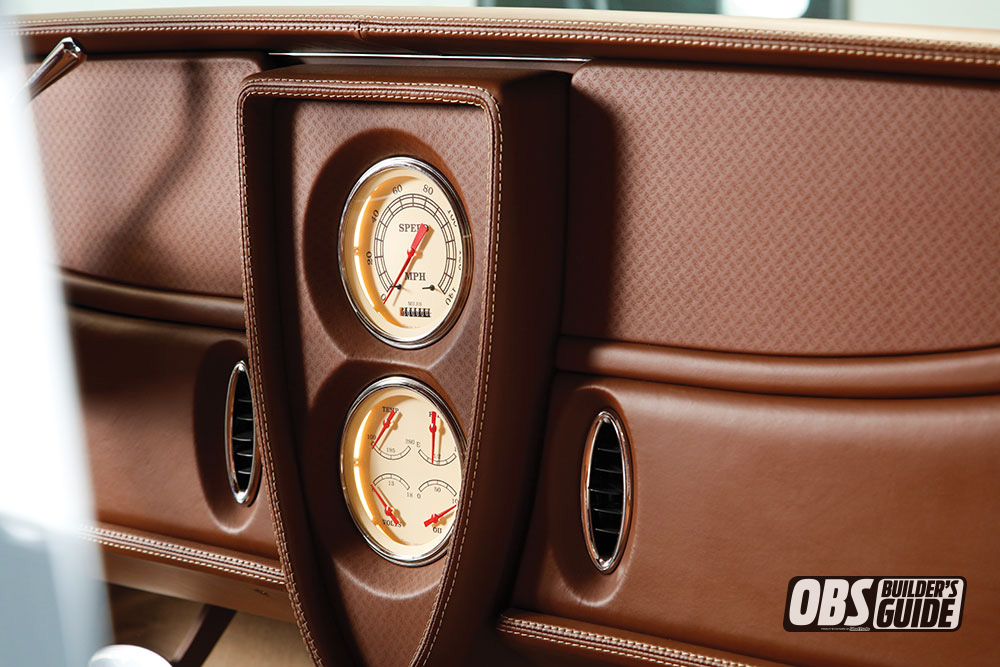 No head turning, jaw dropping and awardwinning custom show truck is complete without a double throw down interior and some tunes to pummel ear drums. Aaron Markwell, Jesse Johannesen and the team of Innerworx in Sarasota, Florida, got down on the cabin of No Compromize with the entire interior inner structure built out of ABS plastic and then cut, shaped, layered and routered out to perfection. Innerworx built the custom dash, door panels, center console, overhead console and the seats. A total of 11 hides of Relicate Napa saddle leather were used to wrap the full custom interior. Mushroom Versaweave textile carpet covers the cab floor. Complementing the supple leather and smooth street rod sculpted styling of the threads is a Flaming River steering column topped by a custom machined 15-inch billet steering wheel. Vintage Air climate control keeps show cruising temps in check while Classic Instruments gauges provide accurate reporting on the big blocks behavioral patterns. Further accenting the cruising chamber are a variety of billet dress-up items from Clayton Machine Works. To finish off the interior, Mike had Jeff Bertrand of J&B Microfinish in Pontiac, Illinois, machine custom billet seat recliner handles to match the door handles, while Tony Pasquini of Automods in Sarasota, Florida, performed the interior leather laser engraving NC logos throughout. Tom Hingle of Billet and Acrylic Fantasies in Vero Beach, Florida, designed and machined more than 100 unique custom billet parts placed carefully and strategically throughout the build to add class and detail at every turn. A keen eye will note the “NC” engraved throughout the billet accents signifying two things—the truck’s name, No Compromize, and Mike’s truck club, Negative Camber.
No head turning, jaw dropping and awardwinning custom show truck is complete without a double throw down interior and some tunes to pummel ear drums. Aaron Markwell, Jesse Johannesen and the team of Innerworx in Sarasota, Florida, got down on the cabin of No Compromize with the entire interior inner structure built out of ABS plastic and then cut, shaped, layered and routered out to perfection. Innerworx built the custom dash, door panels, center console, overhead console and the seats. A total of 11 hides of Relicate Napa saddle leather were used to wrap the full custom interior. Mushroom Versaweave textile carpet covers the cab floor. Complementing the supple leather and smooth street rod sculpted styling of the threads is a Flaming River steering column topped by a custom machined 15-inch billet steering wheel. Vintage Air climate control keeps show cruising temps in check while Classic Instruments gauges provide accurate reporting on the big blocks behavioral patterns. Further accenting the cruising chamber are a variety of billet dress-up items from Clayton Machine Works. To finish off the interior, Mike had Jeff Bertrand of J&B Microfinish in Pontiac, Illinois, machine custom billet seat recliner handles to match the door handles, while Tony Pasquini of Automods in Sarasota, Florida, performed the interior leather laser engraving NC logos throughout. Tom Hingle of Billet and Acrylic Fantasies in Vero Beach, Florida, designed and machined more than 100 unique custom billet parts placed carefully and strategically throughout the build to add class and detail at every turn. A keen eye will note the “NC” engraved throughout the billet accents signifying two things—the truck’s name, No Compromize, and Mike’s truck club, Negative Camber.
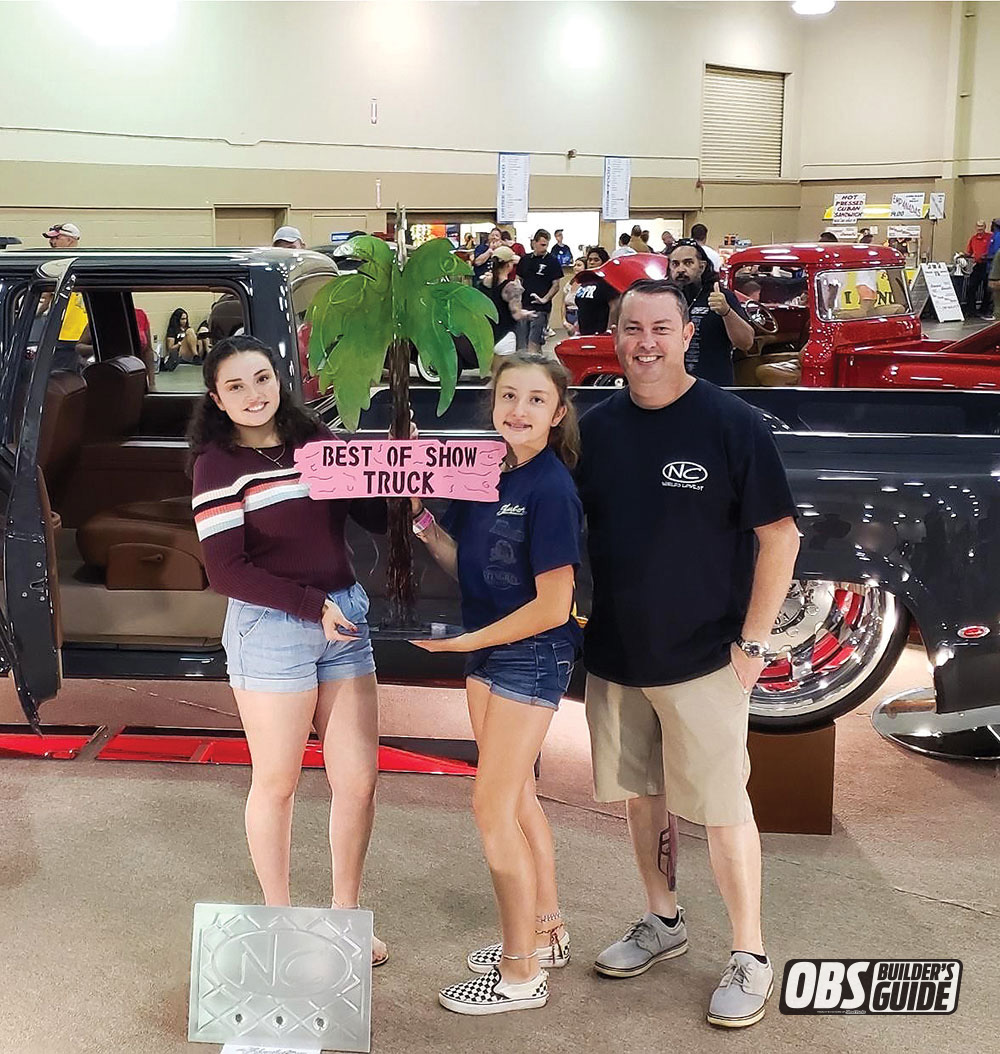 For cruising beats, Mike went with all Sony components featuring three-way speakers up front, two 10-inch subwoofers in the center console and a sixchanel Bluetooth amplifier with DSP sending the signals.
For cruising beats, Mike went with all Sony components featuring three-way speakers up front, two 10-inch subwoofers in the center console and a sixchanel Bluetooth amplifier with DSP sending the signals.
No Compromize was a 15-year journey in the making from the time Mike tore it down until the day it rolled into the SEMA Show in November 2018. His commitment to the level and quality of the build is self-evident in the finished product. Mike is thankful for the help and support of his wife, Heather, and daughters Madison and Brooke Barcia for allowing him to pursue his dream. Mike would also like to extend his deepest appreciation for the hard work and dedication of the build team, including Justin Griffin, Eli Griffin, Gauge Griffin, Jimmy Graham, Aaron Markwell, Jesse Johannesen, Chris Bareswilt, Gerald Ashe, David Dekorver, Robbie Taylor, Efrain Ramos, Tony Pasquini, Cody Holmes, Chris Douglass, Joe Griswold, Alex Madrigal, Kennedy Brown, Bobby McCurdy, Jeff Bertrand, Andre Brown, Chris Rawlins, Matty Barkley, Anthony DeMichael, Chuck Scheer, Bryan Perreault, Danny Terneus and CJ Fayet. Bad ass trucks, family and friends— what it’s all about!
TRUCK SPECS
Mike Barcia
1996 Chevy C3500 Dually
Tampa, Florida
Negative Camber
Chassis/Suspension
Engine/Drivetrain/Performance
Wheels/Tires Brakes
Body /Paint
Interior
Miscellaneous Custom Tricks
One of the most important things you can hold onto are friendships. Friendships help you build character, define who you are and help you along the way through trials and tribulations. Those friendships often influence your hobbies and interests as you learn about new things and cultures. Since their time in middle school, Robert Walden and his friend Kyle Boring have been close. Although they had different lives and interests, they remained very close.
 Kyle got involved in the truck lifestyle and Robert began a career in the pharmacy industry. Oftentimes, Robert would see the trucks Kyle was around and absolutely loved the style and look of them. Kyle was building a 1994 Chevy C1500 and had just added a bodydrop but got distracted by some other projects and set it aside. For about a full year, Robert would ask if he could purchase the Chevy before Kyle finally agreed. Robert had never owned any custom vehicle so Kyle was hesitant at first but figured he would lend a hand.
Kyle got involved in the truck lifestyle and Robert began a career in the pharmacy industry. Oftentimes, Robert would see the trucks Kyle was around and absolutely loved the style and look of them. Kyle was building a 1994 Chevy C1500 and had just added a bodydrop but got distracted by some other projects and set it aside. For about a full year, Robert would ask if he could purchase the Chevy before Kyle finally agreed. Robert had never owned any custom vehicle so Kyle was hesitant at first but figured he would lend a hand.

Robert brought the truck home in pieces—a rolling frame, a cab and lots of other small parts. The frame was painted a bright red, and then tires and wheels with the ’bags were installed. Robert’s friend Wesley Copeland helped add the cab to the frame even though there was no wiring or glass yet. Robert’s brother Joshua has a background in bodywork, so he handled all the body smoothing and shaved the doors, gas tank lid, drip rails, third brake light, tailgate handle and antenna.
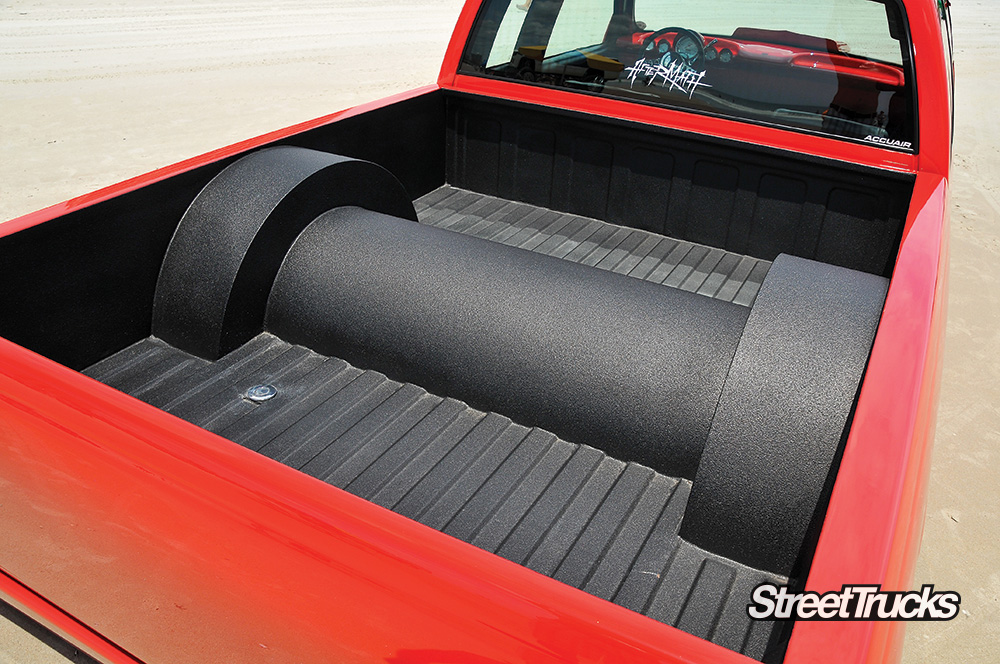 The interior was half done, with Kyle trying to use a ’59 Impala dashboard inside. It wasn’t fitting properly, so Wesley and Joshua stretched it 2 inches on each side, making it fit into place. The body was a light gray primer and the frame was bright red, so Joshua coated the entire 1994 Chevrolet truck in a bright red mix that matched the frame. The next step was making sure the Chevy would be a solid driver, so an LS6 was pulled from a ’04 Silverado and fit into the engine bay. The new intake wouldn’t clear the hood, so he had to use ZO6 injectors and the hood finally closed. Wesley had to install a custom-built wiring harness from Hotwire to match the right length. After that was wired up, Oilmasters in Tifton, Georgia, built a 3-inch exhaust with true dual Black Widow Venom 250 mufflers. Derek Browing tuned the motor and dialed in the horsepower to put out 410 hp.
The interior was half done, with Kyle trying to use a ’59 Impala dashboard inside. It wasn’t fitting properly, so Wesley and Joshua stretched it 2 inches on each side, making it fit into place. The body was a light gray primer and the frame was bright red, so Joshua coated the entire 1994 Chevrolet truck in a bright red mix that matched the frame. The next step was making sure the Chevy would be a solid driver, so an LS6 was pulled from a ’04 Silverado and fit into the engine bay. The new intake wouldn’t clear the hood, so he had to use ZO6 injectors and the hood finally closed. Wesley had to install a custom-built wiring harness from Hotwire to match the right length. After that was wired up, Oilmasters in Tifton, Georgia, built a 3-inch exhaust with true dual Black Widow Venom 250 mufflers. Derek Browing tuned the motor and dialed in the horsepower to put out 410 hp.

Inside the Chevy, Wesley removed seats from a ’90 Chevy Suburban and cut them down. The foam was reshaped and the factory seat slides remained. The seats were stitched up using black and red houndstooth centers. Joshua assisted Robert with getting the black carpet mounted along with the door panels and new poppers for the doors. Robert called in about five friends to get the bed back on the truck and lined up. Kyle and his crew at his business, Boring’s Glass Company, got all the glass installed and road ready. Robert continued to add final touches with a new center console to fill between the seats. Robert added a box behind the seats to house the battery for the Chevy.
 Since his purchase of the rolling chassis, Robert has about 3,000 miles on the Chevy C1500 traveling to shows and events all throughout the country. He owes his dedication and passion to his loyal wife Jessie, who insisted he finish the build no matter how long it took.
Since his purchase of the rolling chassis, Robert has about 3,000 miles on the Chevy C1500 traveling to shows and events all throughout the country. He owes his dedication and passion to his loyal wife Jessie, who insisted he finish the build no matter how long it took.
Robert was able to make Door Dragger a huge success with the helping hands of all his close friends and brother. His lifelong friendship with his middle school buddy Kyle led Robert to purchase and help build his very first truck.



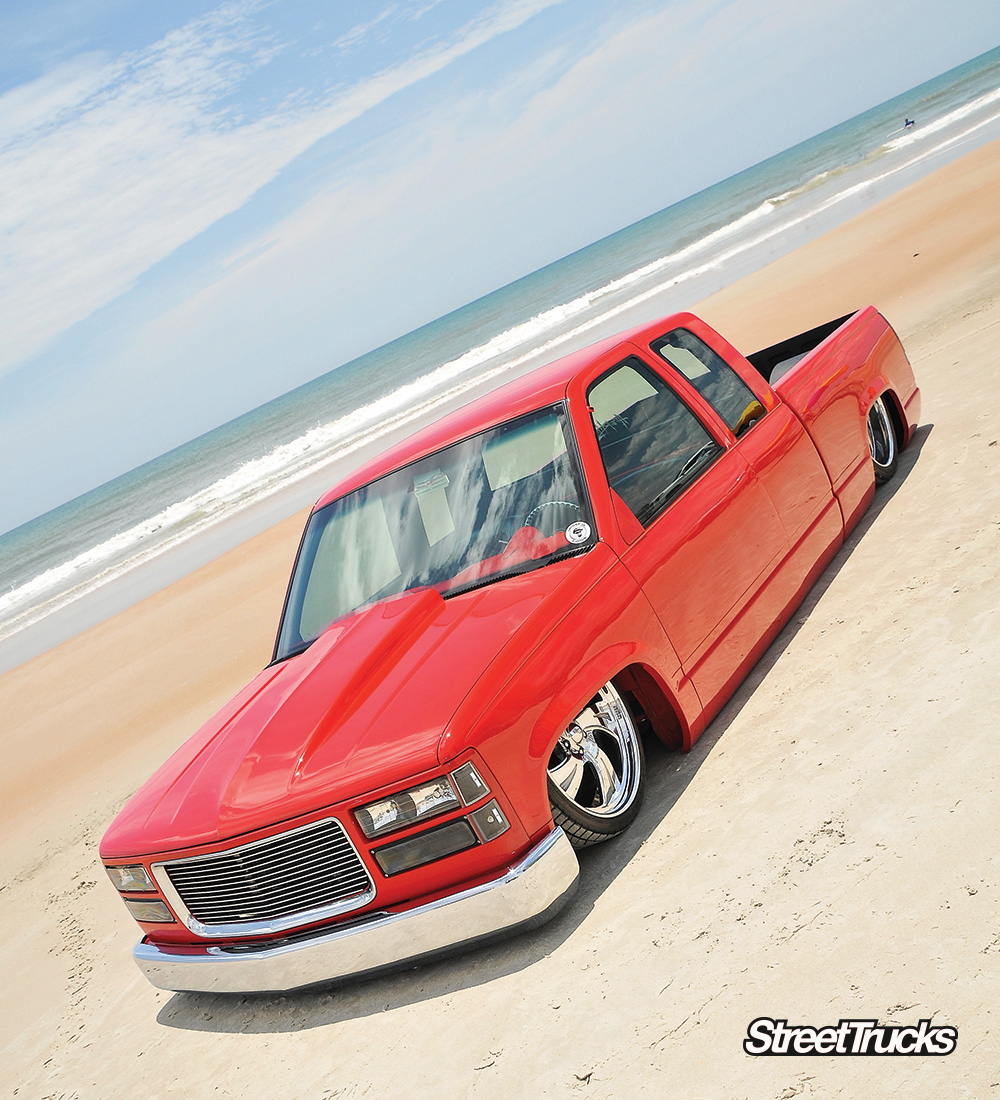
Owner
Robert Walden
1994 Chevrolet C1500
Moultrie, Georgia
Club Affiliation: Aftermath
Chassis
Front Suspension: Michigan Metal Works control arms, Belltech drop spindles, Slam Specialties SS7 bags
Rear Suspension: Ektensive two-link with Panhard bar, box back half frame, Slam Specialties SS7 ’bags, two Viair 400c compressors, two 5-gallon air tanks, Accuair E-Level air management system
Drivetrain
Engine: 6.0 LQ9, upgraded cam, springs, rockers, LS6 intake, Z06 injectors, tuned by Derek Browning of Browning Tuning, 3-inch custom exhaust, true dual Black Widow Venom 250 mufflers
Transmission: 4l60e
Rearend: 9-inch Ford rear end, limited slip, 3:50 gears
Body/Paint
Metal work by Wesley “Stick” Copeland
Paint and bodywork by Joshua Walden
Shaved drip rails, door handles, third brake light and tailgate
Traditional 4.5-inch bodydrop
Custom-mixed red paint
10-gallon custom stainless fuel cell
New clear glass by Boring’s Glass Co. in Moultrie, Georgia
94-98 GMC grille with billet insert
LED headlights and taillights
Sir Michael’s rollpan
Tailgate handle flip kit
Interior
1959 Chevy Impala dashboard swap
Omega Kustom gauges
1990 Suburban seats cut down and reshaped by Thomas at Top Shop in Cairo, Georgia
Custom built door panels and center console
Interior work done by Wesley Copeland
Retro style billet steering wheel black half-wrap
Stereo: Pioneer head unit, Pioneer components, Pioneer shallow mount 12-inch subwoofer, two HiFonics amplifiers
Wheels & Tires
Wheels: 22×9 Intro Radicalli polished
Tires: 255/30R22 and 265/35R22 Pirelli Scorpions
Special Thanks: My wife Jessie, Wesley “Stick” Copeland, Joshua Walden and Kyle Boring
Corvette: if ever there was an American car that immediately conjures up recognition, memories, fantasy, inspiration and aspirations that would be it. By 1966, Corvette had been the halo of the American performance car for 13 years. Despite a slightly rocky start, once the market took hold of that fantastic plastic play toy that debuted in 1953, Zora Arkus Duntov and his engineering team, with the blessing of the designers first led by Harley Earl then later by Bill Mitchell, molded and matured the ’Vette to become a serious piece of magnificent hardware. The two-seater earned a global reputation on the street and the track. By every account Corvettes were purely American with big, wide bodies, gleaming chrome, engines that belted out lots of horsepower and tremendous torque with an exhaust exiting in a seductive, signature note.
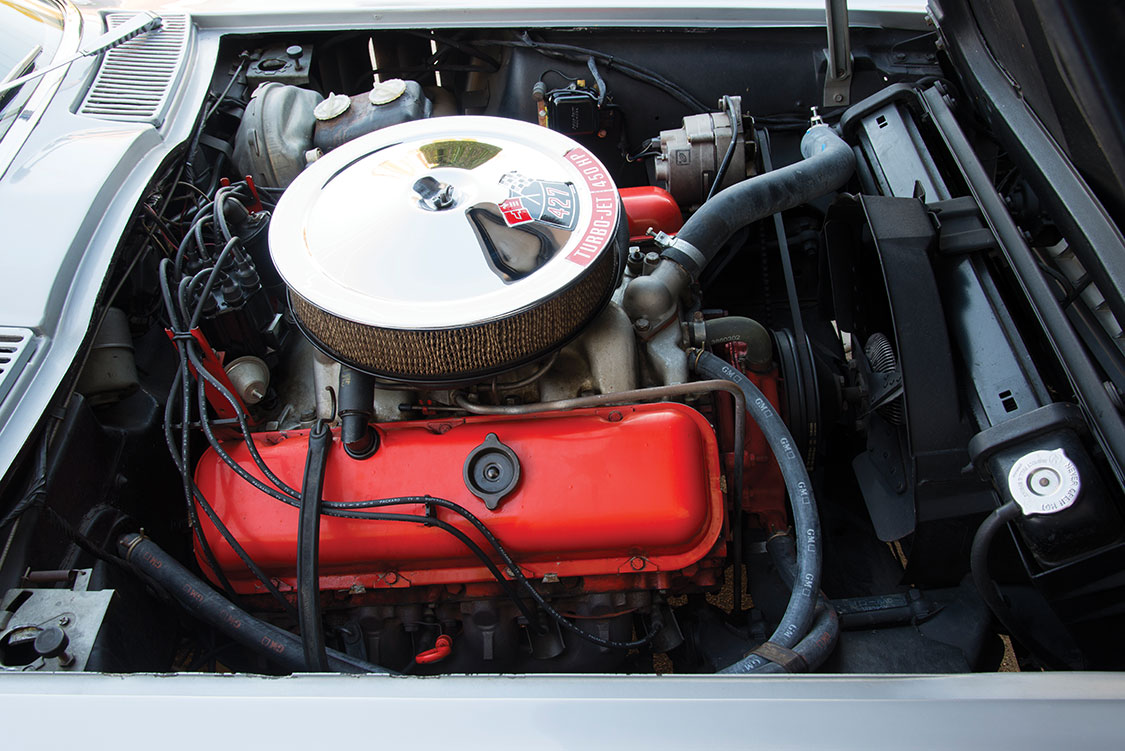
By 1966, the fabulous styling introduced just three model years prior had become fully realized.
You could say that the 13th year of the Corvette was indeed a lucky one. The evolution was akin to a three-two-one countdown, as nearly each model year offered continuous and highly noticeable improvements from the model year that came before it. The 1963 Corvette took the world by storm by offering a sensuous new fastback-styled coupe body, hideaway headlights, and for the first time, independent rear suspension. Two years later, 1965, brought disc brakes to all four wheels, eliminating the four-wheel drums found on the first 12 model years. For 1966, Chevrolet offered the Corvette with serious new engine options. Among these was the ultimate level, 427-ci (7L) lump referred to as a “big-block.”
In America, it seems bigger is always better, and this big-block was no exception. It had an awe-inspiring horsepower rating when the L72 option was ordered. Rated at 450 hp during early 1966 production, the insurance naysayers put so much pressure on the manufacturers that midway through the model year, Chevrolet trimmed the output ratings to 425—on paper—without bothering to change any of the engine internals (11.0:1 compression, solid lifter camshaft, four-bolt main bearing caps). Keep in mind that OEMs were not exactly kowtowing to all of the insurance companies’ edicts, since even the original 450-hp rating was understated.

The buying public heartily responded to the new engines, ordering 19% of the total 1966 Corvette production with the L72 option. An interesting bit of trivia: purists still perceive true sports cars to be open roadster-style cars, since slightly less than ten thousand coupes were sold, while the drop-top body style sold nearly double that number.
The L72 Corvette is a pinnacle car that is on the radar screen for any and all serious enthusiasts. This is the exact reason this Silver Pearl Corvette is deeply entrenched in the Wehage family. It’s a personal, proud and sentimental connection that was owned and cared for by the late family’s patriarch Ken.
This Sting Ray is a numbers-matching rarity, never tampered with or modified in all of these years by any of the three owners in its history. It is a stellar example of a Corvette that is well preserved: the exterior paint and interior are assumed to be original. With 93,000 miles on the odometer, it has been driven spiritedly, but not abused. Originally sold by a Chevrolet dealer in Orange County, it remains within that county today.
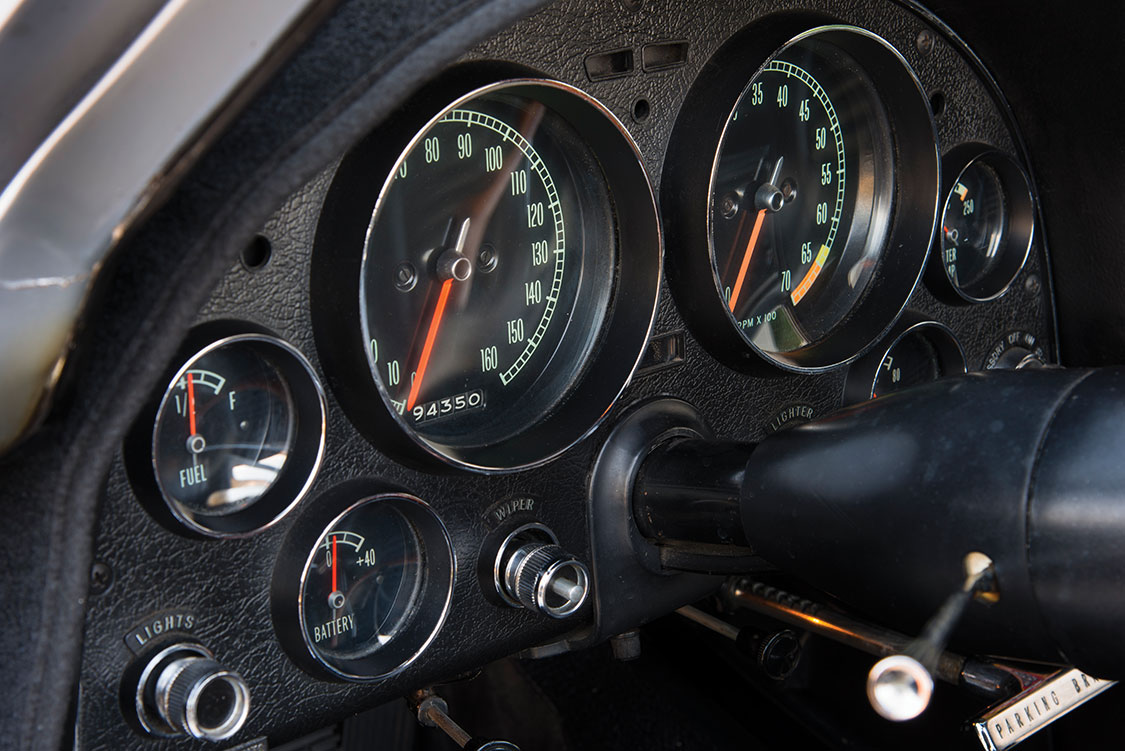
Corvette fanatics and aficionados who lust for the minutiae would delight in learning the option list and narrowing down the exact number of models produced in 1966 with some of the equipment. Here are a few examples to track: 1966 Corvette coupes, 9,958 produced; 427 L72-powered ’Vettes, 5,258 convertibles and coupes built; Silver Pearl Corvettes, 2,967 painted this color; cast aluminum wheels, 1,194 produced with this option. Those who want to do the calculations to cull it down to even more exclusivity for this particular Corvette should also consider the other rare option combinations: teak steering wheel, transistor ignition and the option even rarer than dual side pipes, the factory off-road exhaust system. Then there is the unusual factory radio-delete plate, all the better to prevent any distraction from hearing the engine, one would assume.
Walking around this vehicle provided a discovery with each glance. Once the viewer gets past the aura that makes the C2, the nuances become noticeable. There are so many design nuances, some blatant, many others subtle, that catch the eye and capture the light; angular and curved lines, blended together to cheat the wind and delight the emotions. The color may be Silver Pearl, but it flows over this beautiful body like liquid mercury, quicksilver.
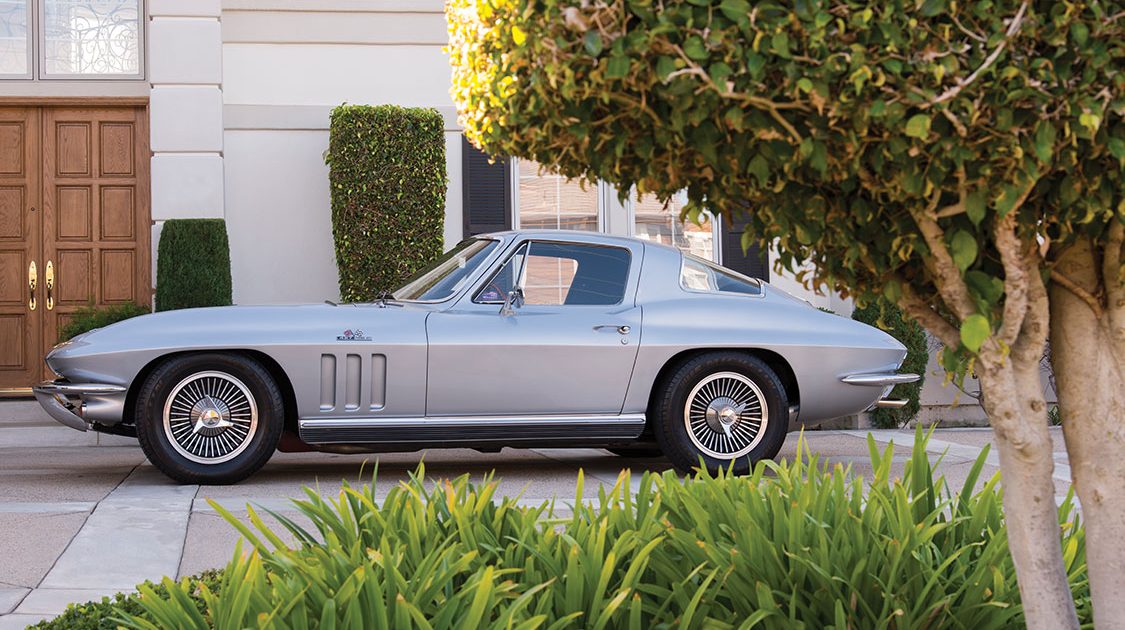
Since “Drive” is an element of our magazine title, driving becomes an important and emphasized component. Preparing to enter the cockpit, one immediately notices that the top of the door panel curves and intrudes into the roofline, much like a limousine door.
The true purpose of this allowance is not for an entrant with a large bouffant hairdo, it’s to allow easier ingress and egress while wearing a helmet, reminding that it was designed to make it easier for racing team driver changes during 12- or 24-hour competitive events. Holding the door wide, one can see the multitude of chromed handles and cranks on the interior door panel. The vent window has its own crank control, as does the main side window. The door pull is a chrome accent, tilted to give the illusion of motion.
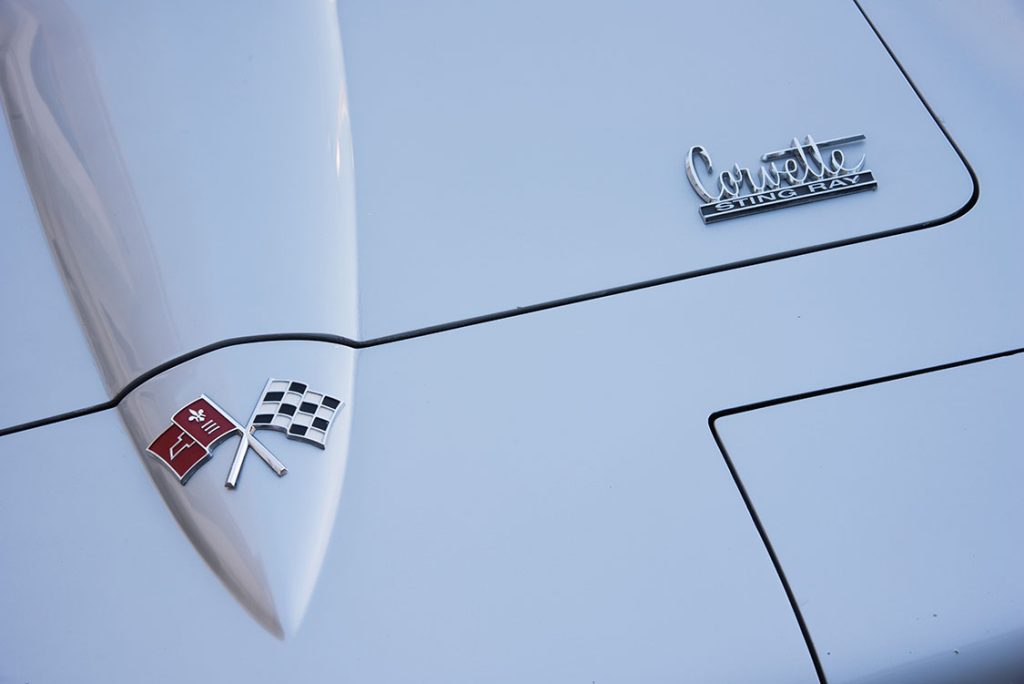
Sliding into the bucket seats, sporty yet stylish in appearance for the era, takes the driver or passenger back in time. They are low-backed and flat, without form-fitting side bolsters. The teak steering wheel is elegant, thin rimmed and large in diameter. Looking through, the two large gauges tell the driver the important measurements of engine revolutions and road speed. The ancillary gauges report engine temperature and oil pressure or indicate electrical charging status. All are easy to read at a glance.
The double humped dashboard with the waterfall-style center section separates the business of driving from the enjoyment of going along for the ride. That vertical blank space, where there is no radio, does not appear to be obnoxious or that something is missing. Just over the dash, one can look out and sight the road or track ahead, framed through the fender peaks that are elevated higher than the sculpted hood. The feeling of the cockpit is purposely intimate, not claustrophobically tight. The enjoyment of the drive is the obvious emphasis of the Corvette. The pilot and passenger are involved, unlike the wide expanse of the GM passenger cars of the same era where the occupants just floated down the road in luxurious living room-sized environments.
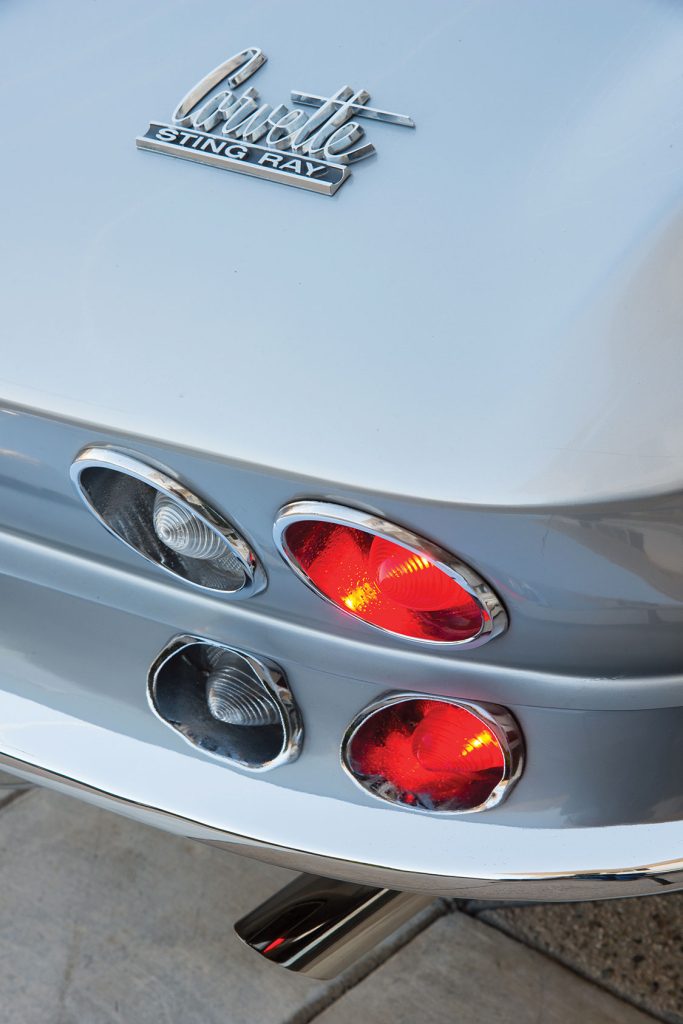
Turning the ignition key immediately sets many mechanical sounds in motion. The 427 engine fires up without protest. It is a big-block, so it is best to let it idle for a time to allow the temperature to reach optimum range. Depressing the clutch does not require too much effort, and the factory shifter, with a lockout reverse feature, is mechanical and firm. Underway and going through gear changes, the big-block engine gains revs smoothly and quickly without protest or hesitation, though the camshaft does like it better in the higher range. The aural experience is very mechanical, yet not so loud as to prevent a conversation between cockpit occupants. Suffice to sum up the street-drive experience as: this Corvette will pull hard when asked.
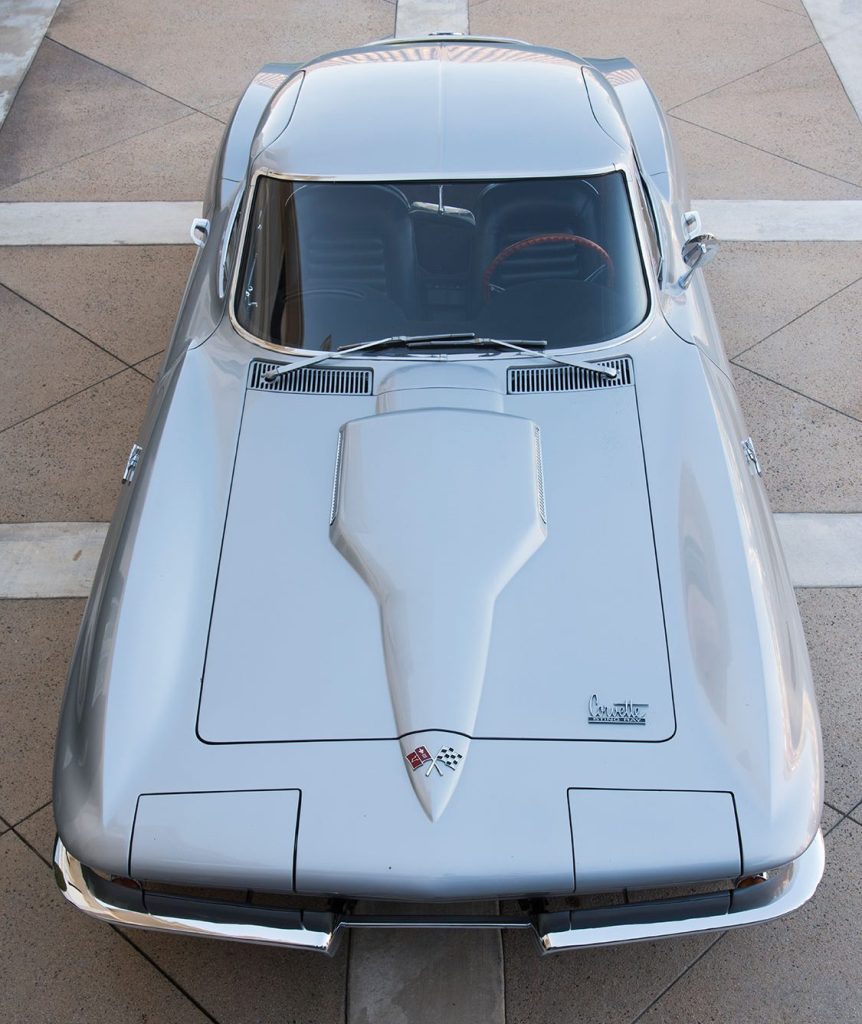
Resting under that sculpted hood, one notices that the 427 doesn’t need to call a lot of attention to itself. The primary chrome is on the top of the air cleaner. The sticker does mention the early year rating 450 hp of the turbo jet. The massive valve covers painted in signature Chevrolet Orange. Color signal that this was factory built for performance, not to show off.
This silver C2 beauty is a rarity, in options and in unmolested condition. All who have an opportunity to see or experience this Corvette should feel fortunate and grateful. Betty and the Wehage children for preserving both the memory and the vehicle as a tribute to its late owner/driver.
Text by Lou Leto
Photos by Guy Spangenberg
It wasn’t long ago when “Made in America” and “handcrafted” actually meant something. At one time, the United States was the premier manufacturer in the world, and if it wasn’t for American workers during World War II, we could have lost the war. Decades later, things that are handcrafted and Made in America are the exception, not the norm.
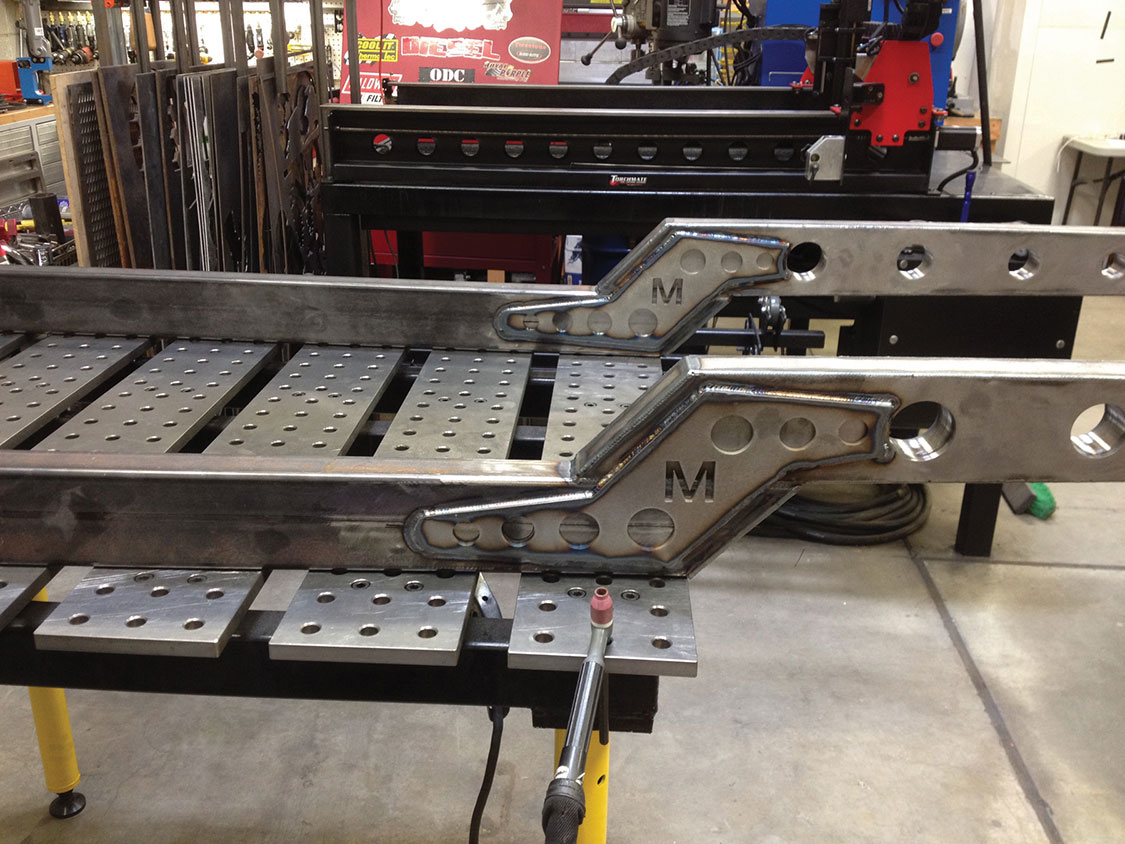
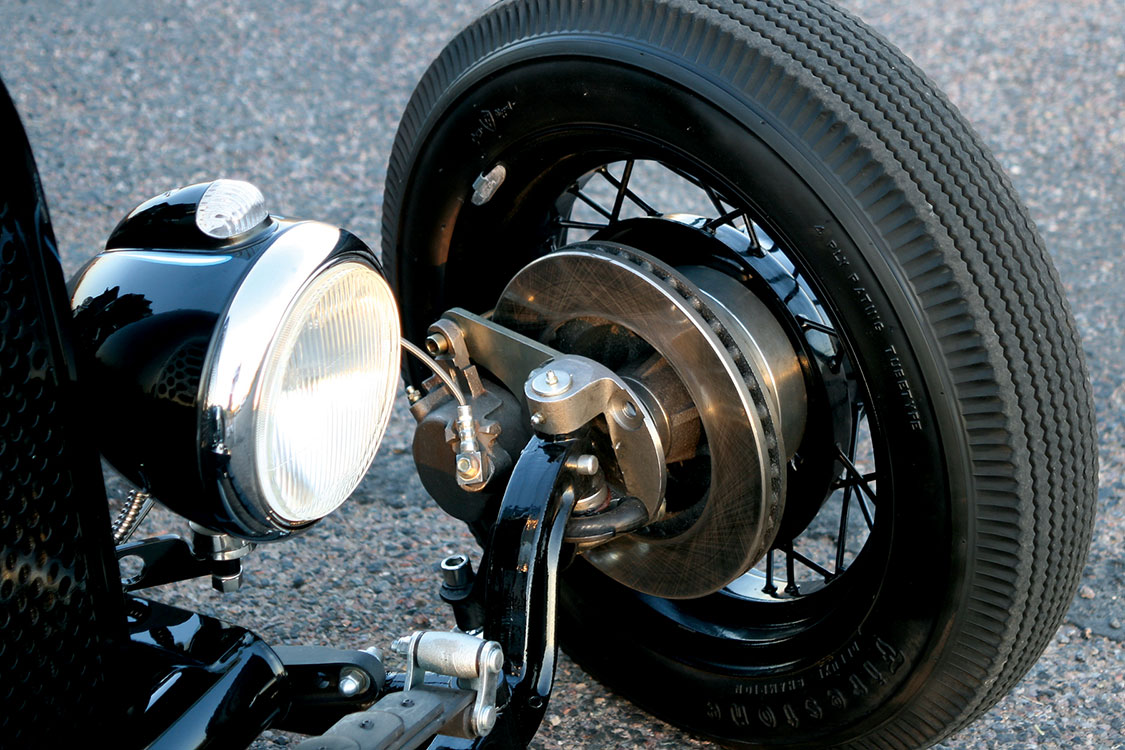


That’s the story behind Brandon Metzger’s wild ’30 Model A rat rod. A metal worker and master fabricator by trade, and owner of Metzfab in Glendale, Arizona, Brandon is one of the few young gun enthusiasts who has adopted America’s work ethic from bygone years. He’s also partial to old-school hot rods. Having built quite a few project vehicles throughout the years, Brandon decided to build one from scratch after getting his hands on an original 1930 Model A body.

The custom trans tunnel also sports some cool pinstriping. Bell Auto also gets credit for the carpet, headliner and door panels.
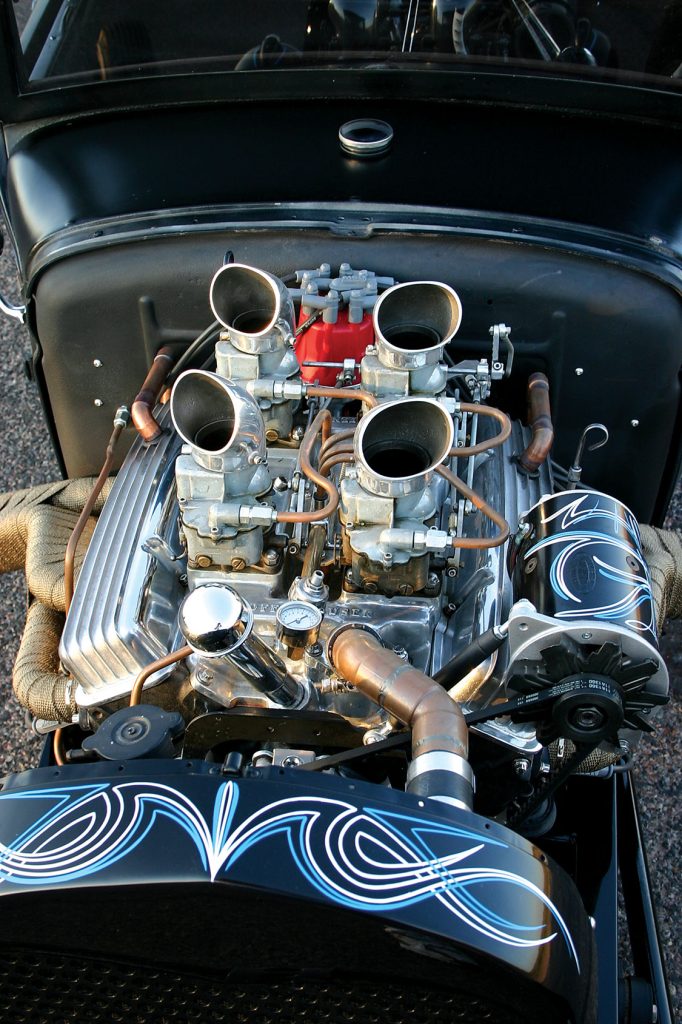
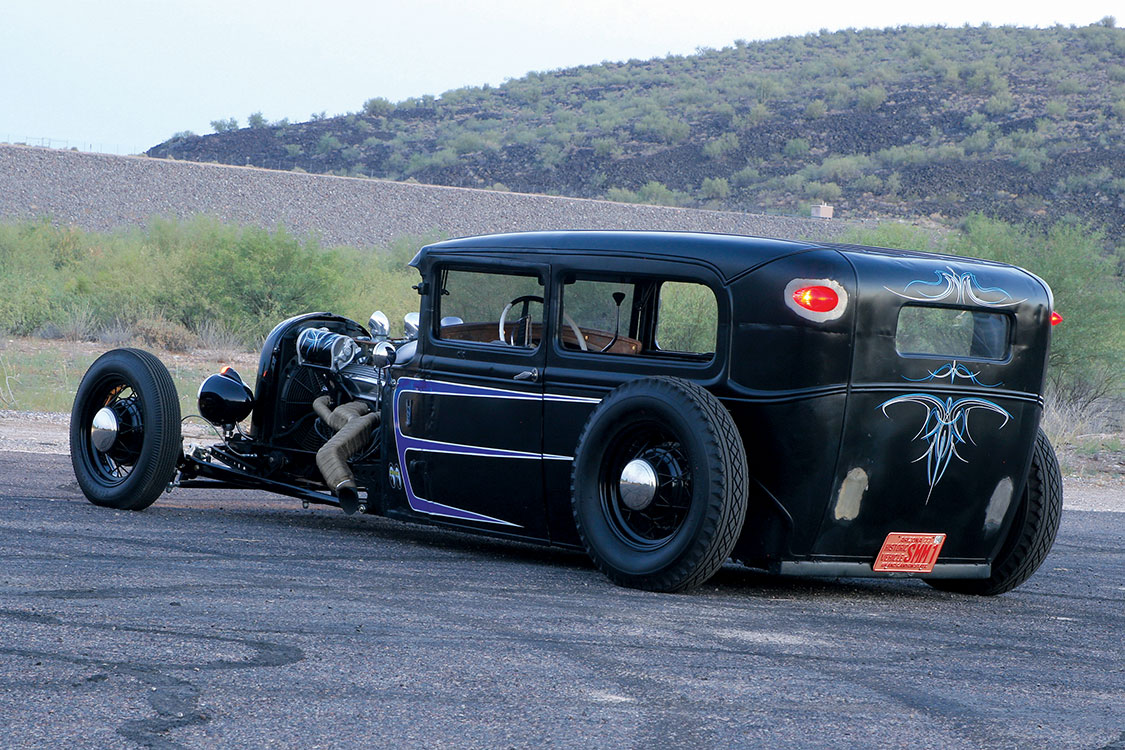
First up was a custom frame crafted from 2×4 steel with clean gussets for strength. More steel work came in the form of a 4-inch roof chop and 4-inch body section. Brandon fabricated the grille at his shop using a 1932 grille shell and frenched in 1950 Caddy bullet-style taillights. The car rides on a custom nitrogen-operated air system out back with fully plumbed copper 3⁄8-inch hard lines and ball valves. Under the frame, a Ford 9-inch is suspended by a Metzfab custom 4-link, complete with panhard bar. Up front, rests an original Ford I-beam with Metzfab custom friction shocks.
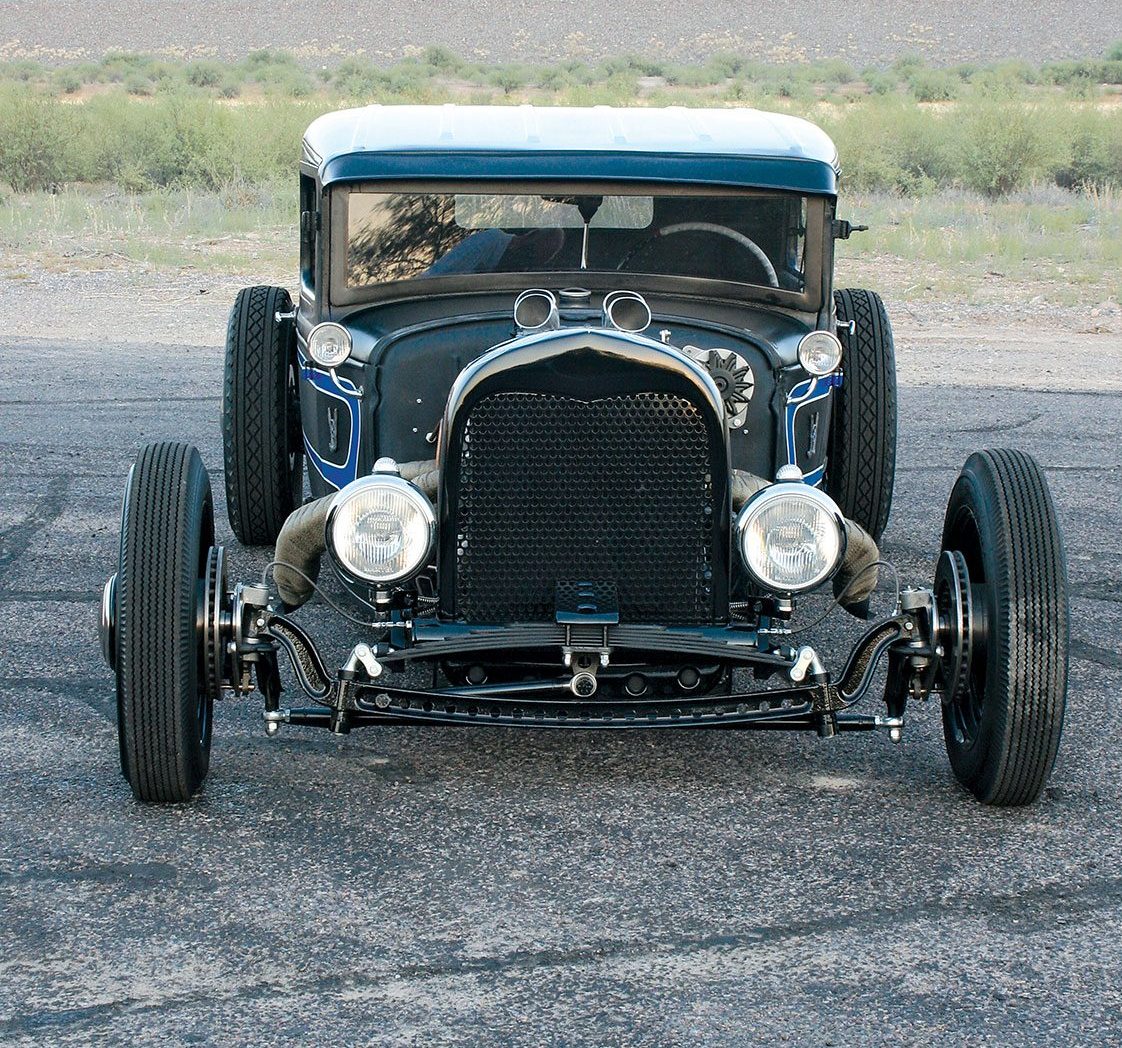
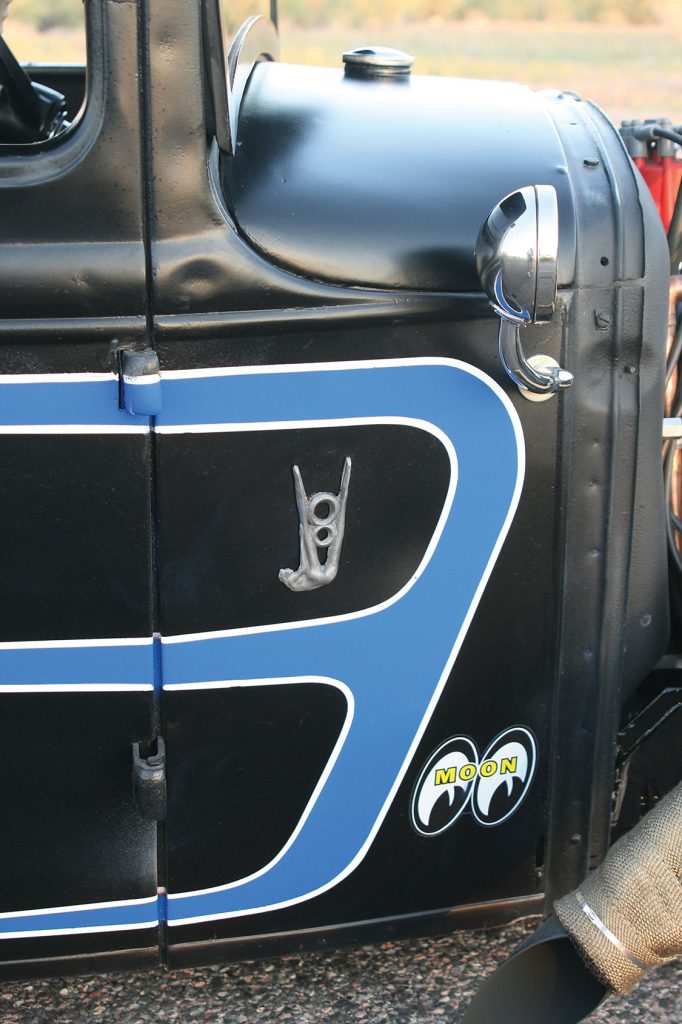
Since simplicity is the name of the game on a rat rod, small-block Chevy and Turbo 350 automatic is the drivetrain of choice. It’s nothing fancy except an Offy intake with Holley 94s and some wild custom headers, complete with heat wrap. As is the case with most rat rods, the parts collection is eclectic: Corvair steering, Vega steering box and plenty of Metzfab custom goodies to make it all work. The car boasts a lot of original stuff too, such as the dash and gauges, fuel tank and cap and original 16-inch Model A wire wheels.
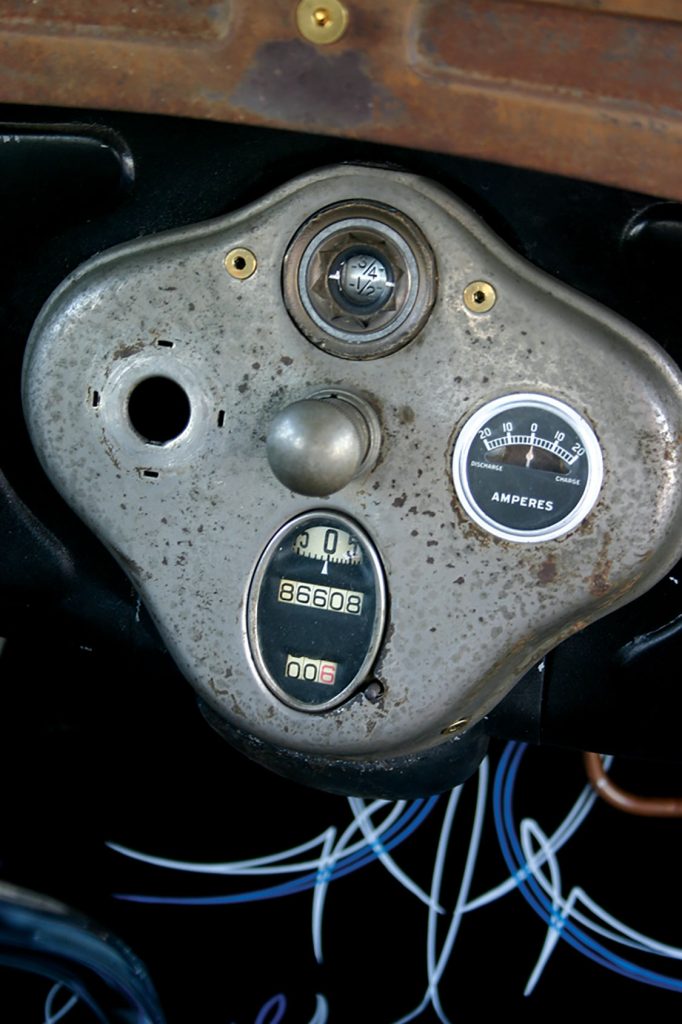
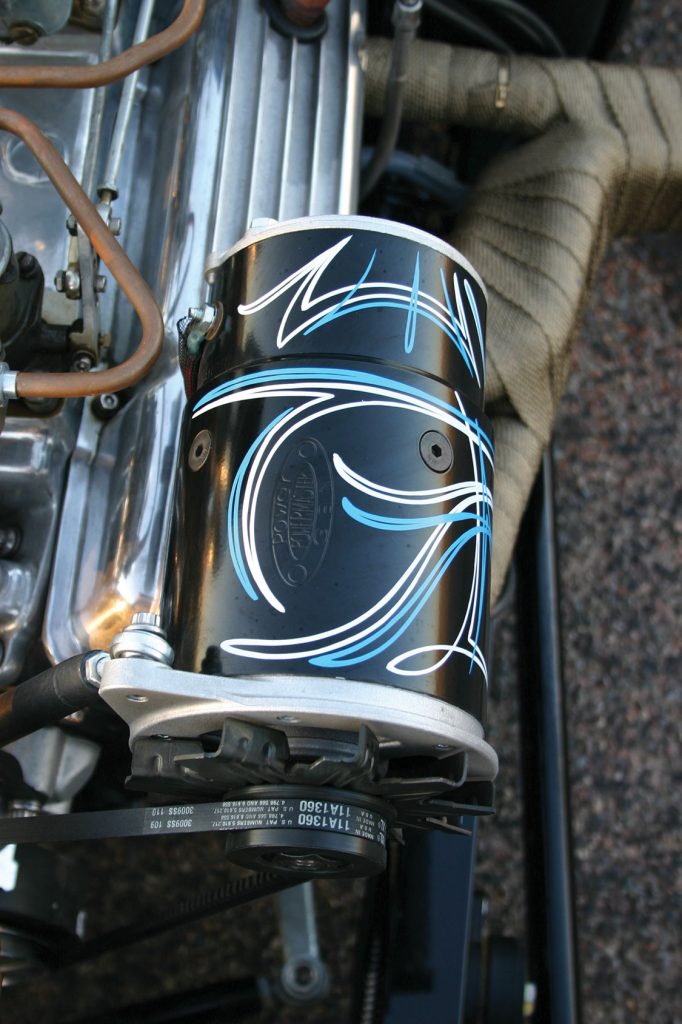
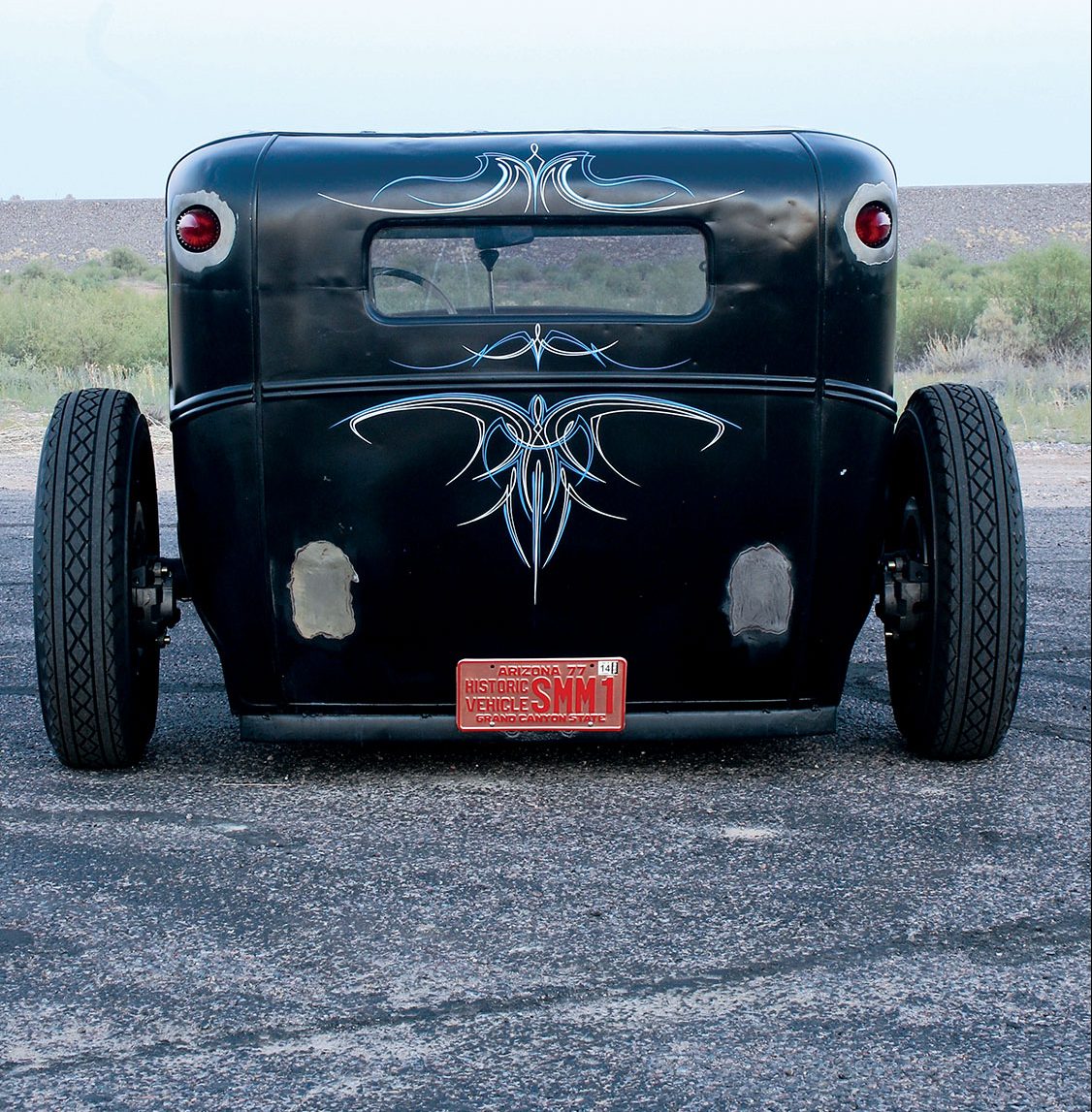
Seeing it all put together like this, we have to say it’s great to see the American work ethic is still alive and well, especially with the younger generation.
Text and Photos by Kevin Wilson
A version of this article first appeared in the August 2014 print issue of Drive Magazine.
It all started when Dino Battilana was 13 years old and working at a local service station. The station had a ’63 Chevy C-10 short-bed service truck that was Dino’s introduction to the classic and distinctive lines of Chevrolet’s early to mid-’60s era workhorses. It was love at first sight. Dino learned to drive behind the wheel of the ’63, and after a few years of hard work pumping petroleum and doing odd jobs around the station, this young Bow Tie addict had saved enough scratch to get his fingers on the keys and the title. The rest, as they say, is history, but we have never met an enthusiast so passionate about Chevrolets, and even more so about this particular body style. In fact if you looked at Dino’s past and present custom vehicle roster, you wouldn’t find anything else on it save for the occasional square body, and a ’70 Nova he will likely be buried in.
As a proud member of the club Chevy Only, it’s no surprise that the garage and driveway at the Battilana household are filled with classic and modern GM iron. In fact, his kids would probably be grounded if they rolled up in anything else. The goal with this truck was to build a mid-’60s C-10 dually and make it look like the good old boys at the GM factory did it.

A friend of Dino’s from his appliance business, Rex, had the truck for about 30 years. He used it to deliver appliances and tow his drag car to the strip on weekends. The truck eventually found another home, and nine years later, while Dino was surfing Craigslist, the truck resurfaced, now sporting a lift and off-road wheels, but it still had the same old utility box in the back. Dino bought the truck over the phone. Then he got to work executing his plan to hammer it over 22-inch semi wheels.
With the help of friend and fabricator Joe Casias, the truck came together in Dino’s backyard shop on nights and weekends. They started with the chassis, adding a Porterbuilt rear notch complete with PB trailing arm cross member. The factory front cross member was sectioned and raised 2 inches and topped off with PB upper and lower “forward arms” and McGaughy’s drop spindles and disc brake package. The factory steering box was raised 2 inches to maintain proper geometry. McGaughy’s brake booster and master cylinder handle plumbing for the upgraded binders, while a 4:10-geared GM rearend gets the six wheels rolling. Goodyear front and semi truck rear air springs get the rockers where they belong, while the fenders swallow up a polished six-pack of 22-inch Alcoa wheels mounted on P255/30R22 Nexens.
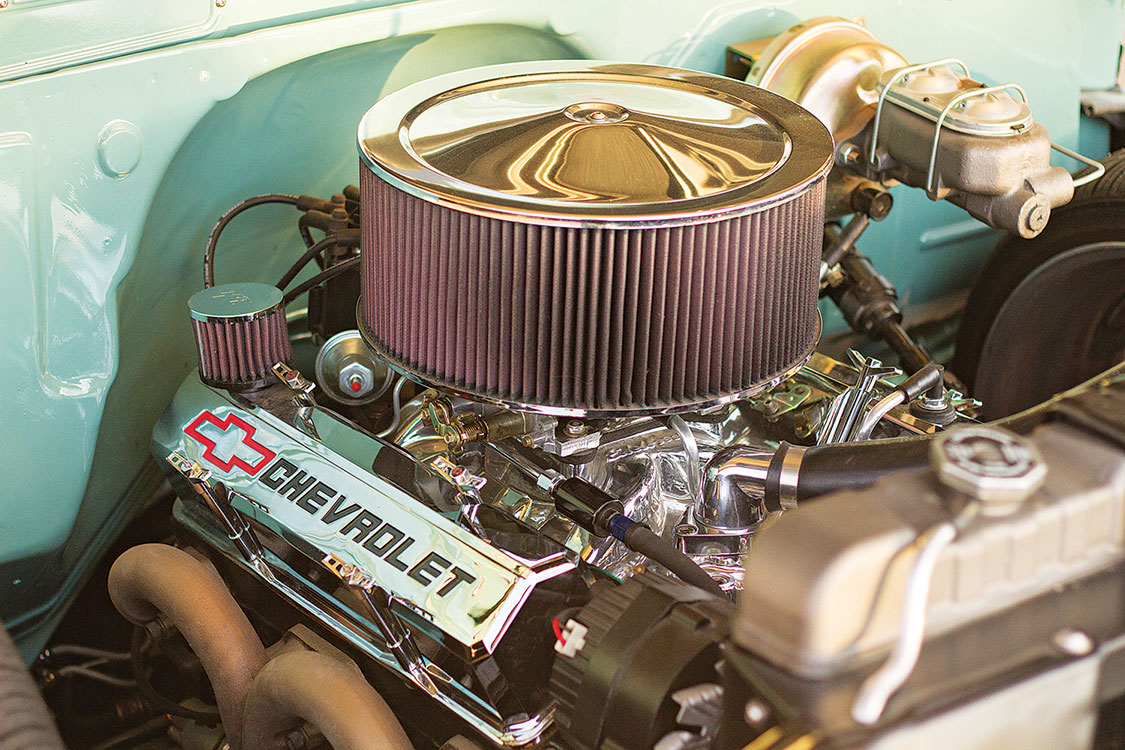
For power Dino chose a Chevy 350 crate engine cooled by SPAL fans and fed by an Edelbrock intake and 600-cfm carburetor. Ram horn exhaust manifolds deliver spent fumes to a 2 ½-inch pipe and a pair of Flowmaster mufflers. A wiring harness from Speedway connects all of the electrical dots, while a Turbo 400 transmission with B&M 2,800 stall speed converter not only makes the dually fun to drive, but also provides the towing ammo for Dino’s ’66 pro-street C-10. Benny’s prepped the transmission for street and highway play and hooked a master shaft driveline to the backside. Octane cocktails feeding the beastly combo are chilled inside a ’73 Suburban fuel tank mounted underneath the raised bed floor.
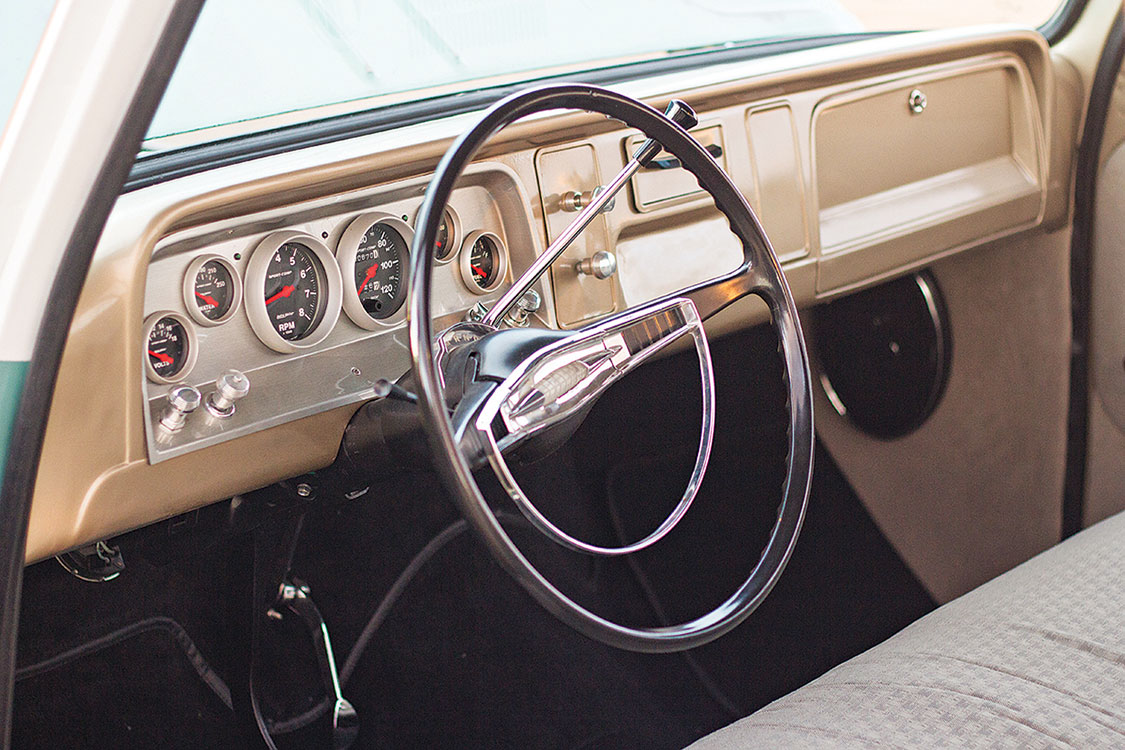
When it came to the body Dino and Joe made a few changes with the goal of maintaining most of the OEM heritage. The alterations they did make were mainly to solve clearance issues, like the custom-built rear bed tubs and raised 1973 C-10 steel bed floor. The original cab was also converted from a small back window to a big back window because, let’s face it, big windows are just cooler. The truck’s rear hips drape over the rear 22s, a custom job that took a lot of time to complete in order to nail the factory-like look. The factory green and white paint were maintained on the truck’s surface complete with 49 years of road rash, battle scars and ultra-cool, sun-bleached patina. Topping off the raw factory attitude are fresh chrome trimmings plated by The Chrome Guys.
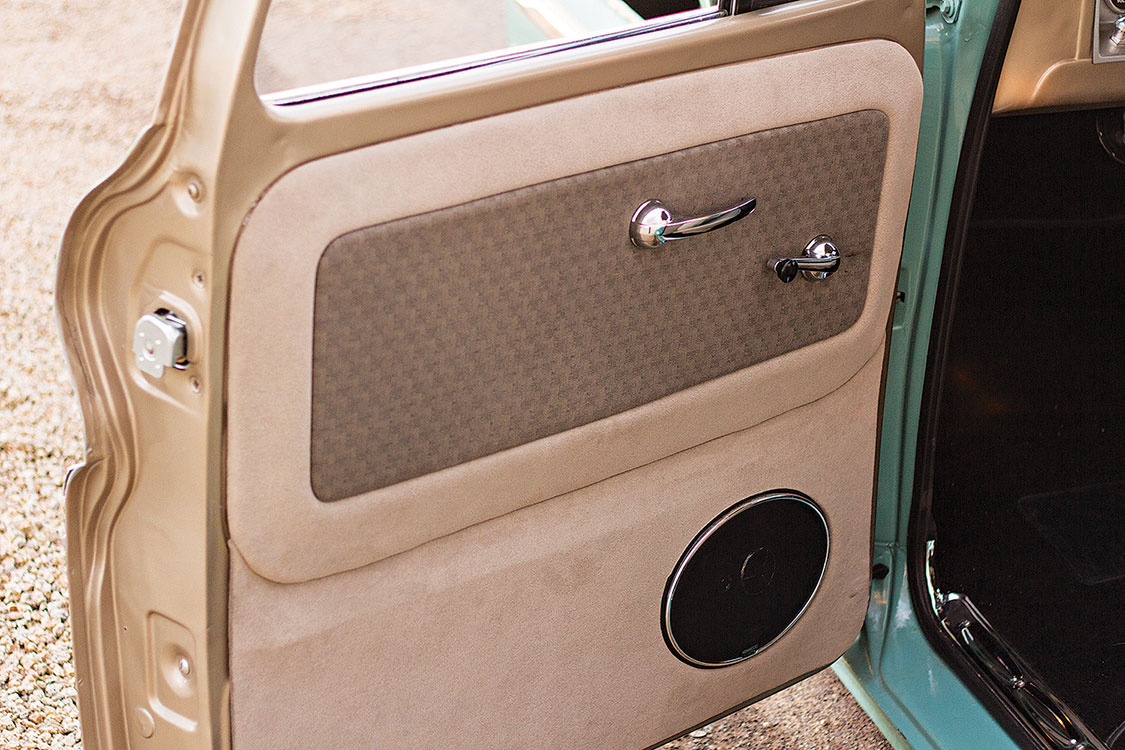
For cruising comfort, a 1998 Chevy truck bench seat was installed and covered in tan suede and cloth by Dominick at Custom Interior Fabrications. Fast lane custom gauges are sunk into the factory panel, and Dino enjoys extended highway cruising behind a factory steering wheel bolted up to a shortened factory column. Lance at Creative Car Stereo installed the iPod head unit backed by four Kenwood 6x9s and four Kenwood 10-inch subwoofers all driven by a Kenwood amp. Two Red Top Optima batteries provide the juice to keep Dino’s dually rolling with the cab rocking.
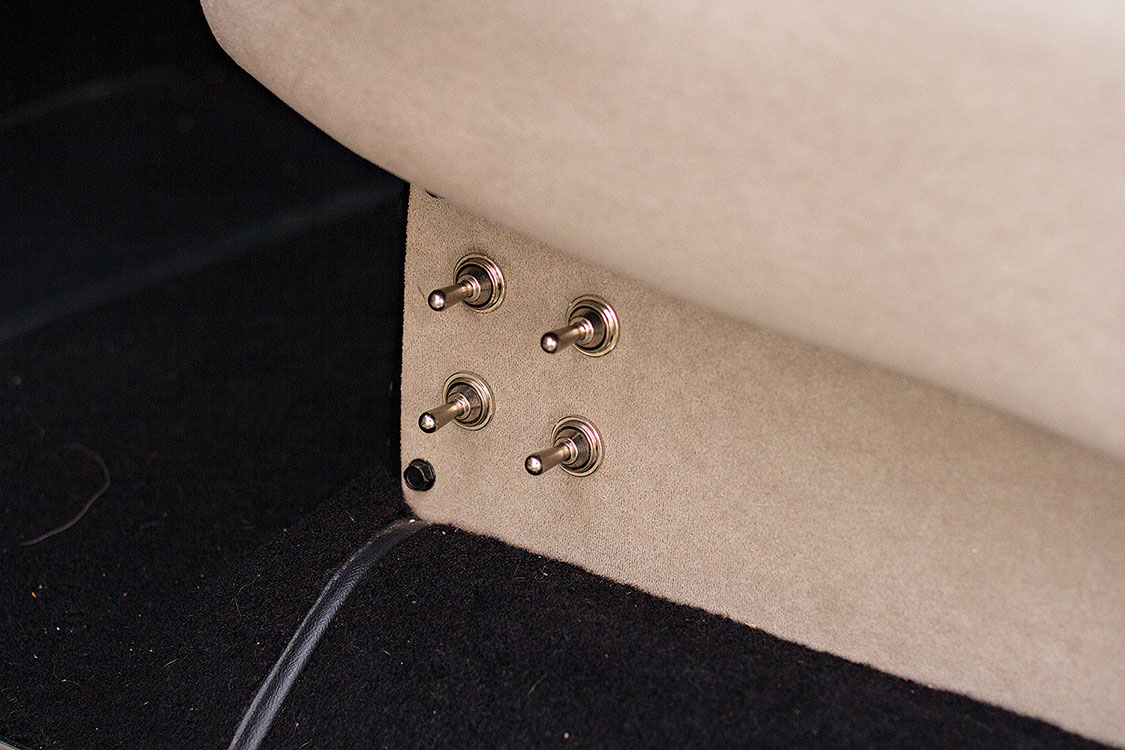
This truck packs a ton of nostalgic punch for Dino and is a rim-tucking example of setting a custom truck goal and stopping at nothing to achieve it. Word on the street is that the dually has already found a new home and that Dino is busy building another truck. Undoubtedly, it’s another 1960-66 Chevy C-10. Why break tradition?
Dino would like to thank Joe Casias, his wife Liz and his children, McGaughy’s Suspension, Seth Switch Suspension, Porterbuilt Suspension, Nate Porter, Moose Muffler Shop, The Chrome Guys, Dominick at Custom Interior Fabrication, Benny’s Transmissions and Lance at Creative Car Stereo.
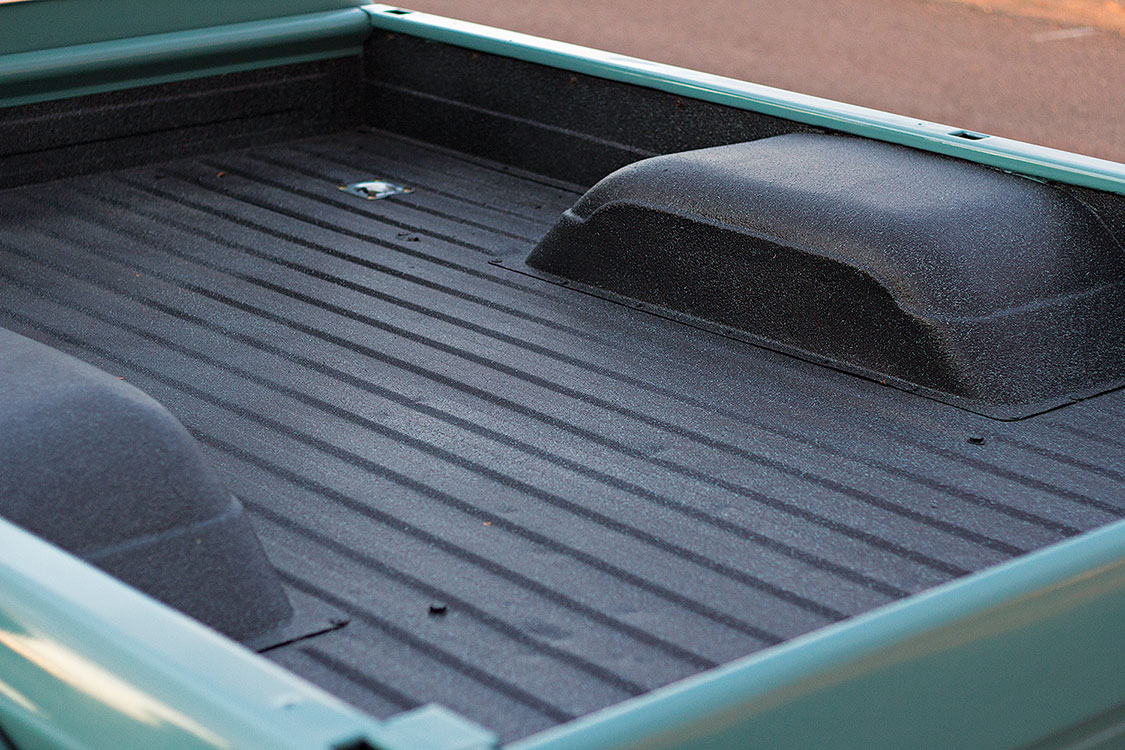
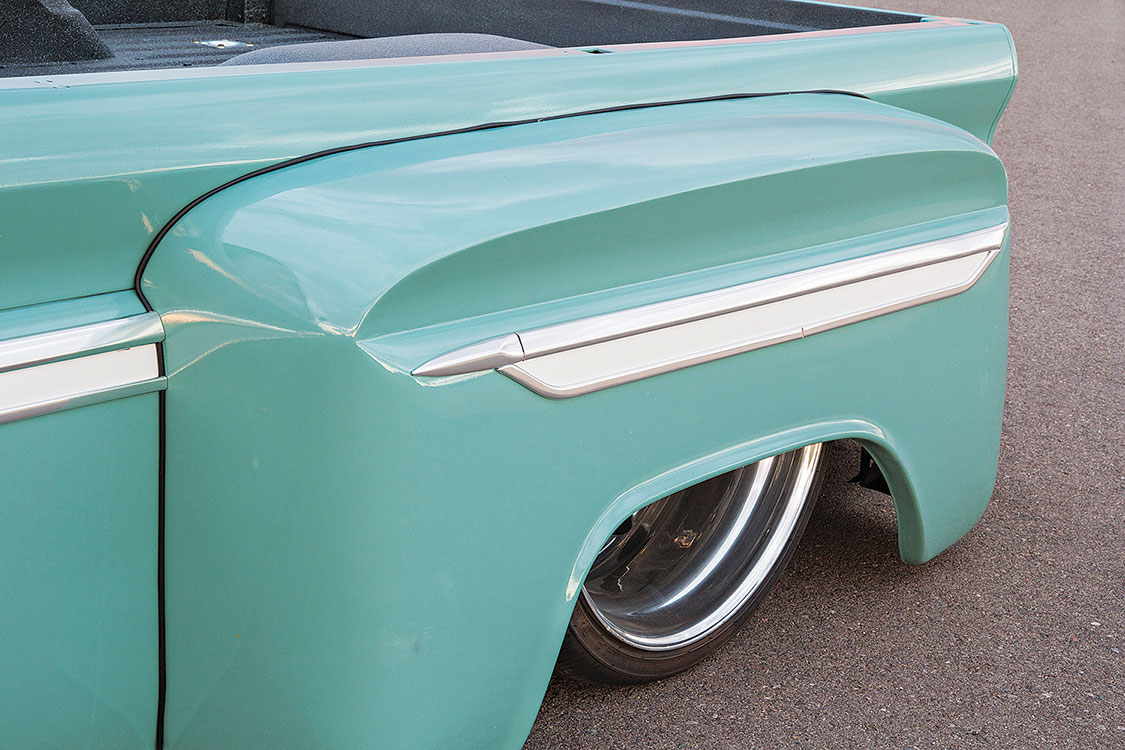
TEXT BY TRAVIS NOACK PHOTOS BY JASON MULLIGAN
A version of this article first appeared in the December 2014 print issue of Drive Magazine.
Before the pandemic, life was easier in so many ways for so many people. One problem we constantly heard was builders had increased customer orders but couldn’t procure the materials needed for manufacturing, which is what we went through while trying to create content for our tech section.
The last time we visited this particular project was over six months ago with the installation of a QA1 coilover suspension. This 1997 Chevy C1500 now handles like a rail car but lacks the power to really test out the engineering. Yes, we could upgrade the factory 305ci engine to gain a few hundred horsepower, but the time, dollars and effort spent doing that would be on par with a complete LS engine swap. So that’s the route we are going on this build, and we really hope you follow along.
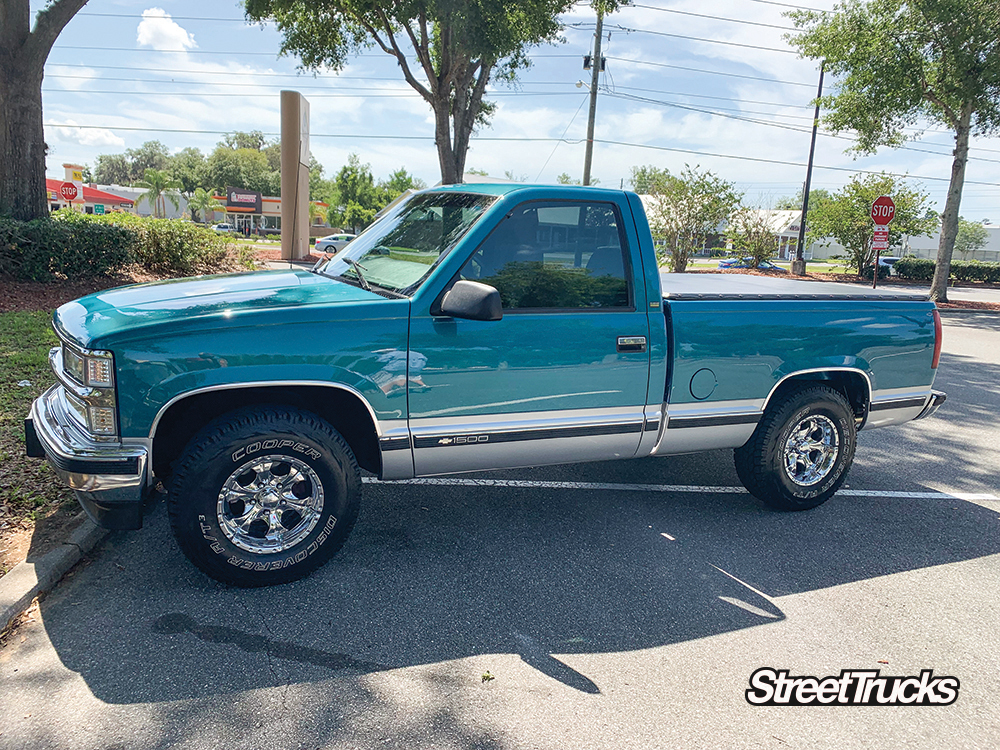
Our block of choice is a 6.0-liter LS engine out of a 2003 Silverado 2500 HD. We are going to completely strip it down and prep it properly for the big power we expect to get with this ProCharger supercharger system. Along the way, we will strengthen the structure with ARP bolts and paint it nicely to match the rest of the truck. This P-1SC-1 supercharger system from ProCharger is self-contained (SC) and the only gear-driven centrifugal superchargers to feature self-lubrication. SC ProChargers also feature the highest step-up ratio, exclusive billet impellers and the industry’s only billet gearcases for superior rigidity, sealing and appearance.
We are sending the harness to Current Performance Wiring for a complete overhaul. Which will make it plug and play with our 6.0-liter LS. The follow OEM wire colors and use OEM connectors to produce the best quality products. They go through a multi-step quality inspection process that’s guaranteed to meet or exceed even the most demanding show car owner’s expectations. We are replacing this original OEM transmission with a Chevrolet 4L80 transmission to handle the additional power and finishing it all off with some Red Line fluids. Keep in tune with this one because the end result will be something you want to see, we promise!
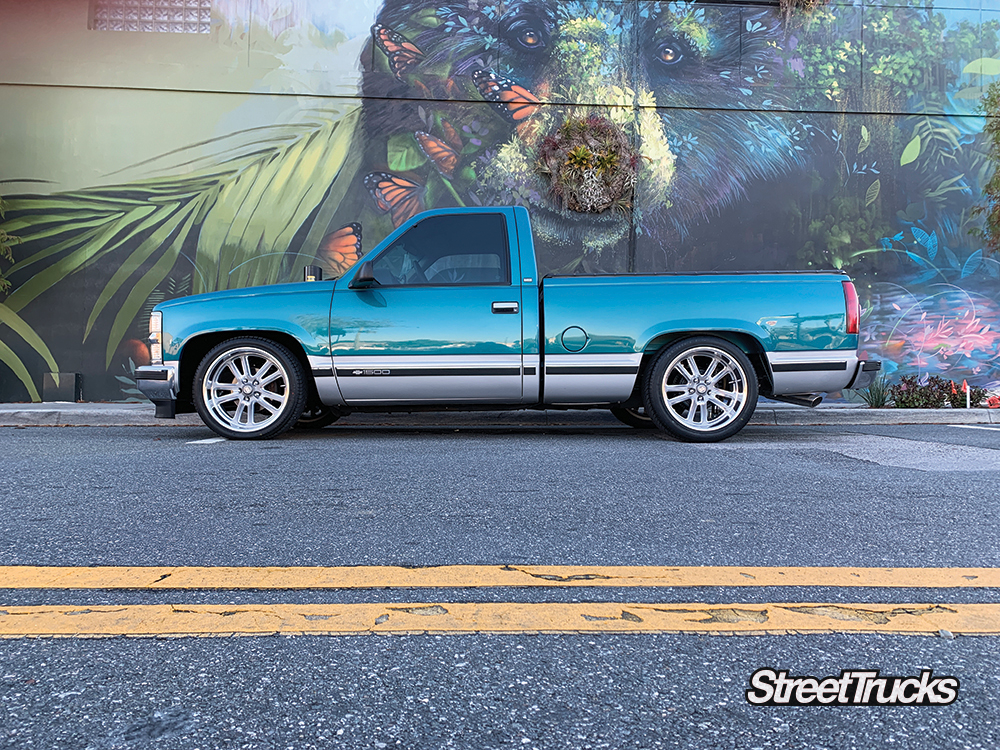
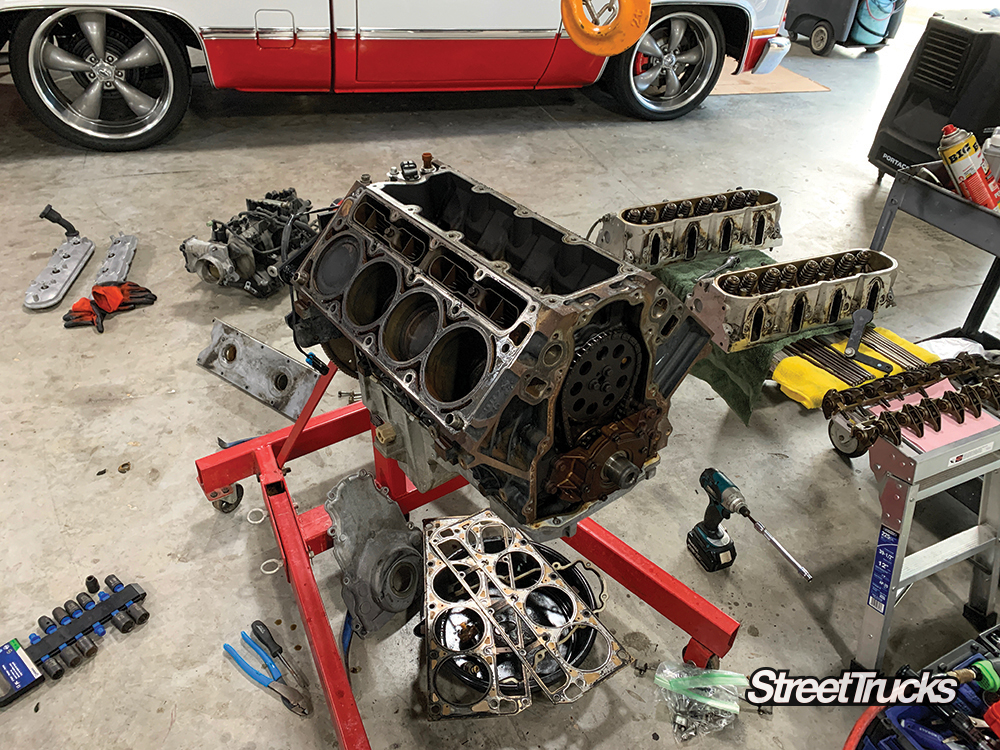
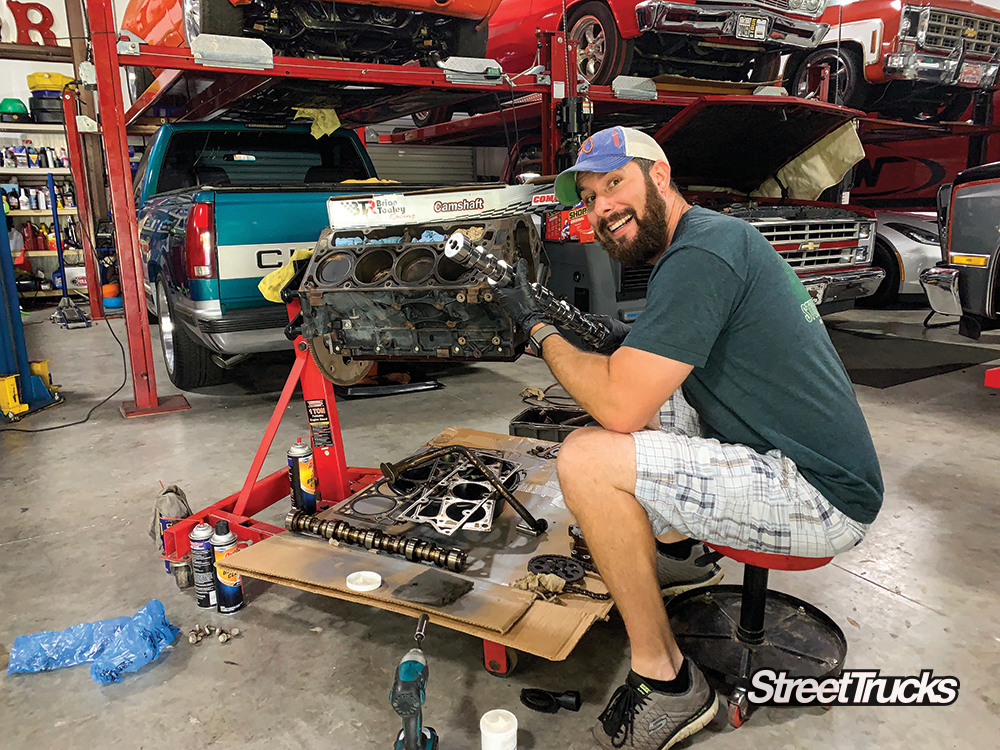
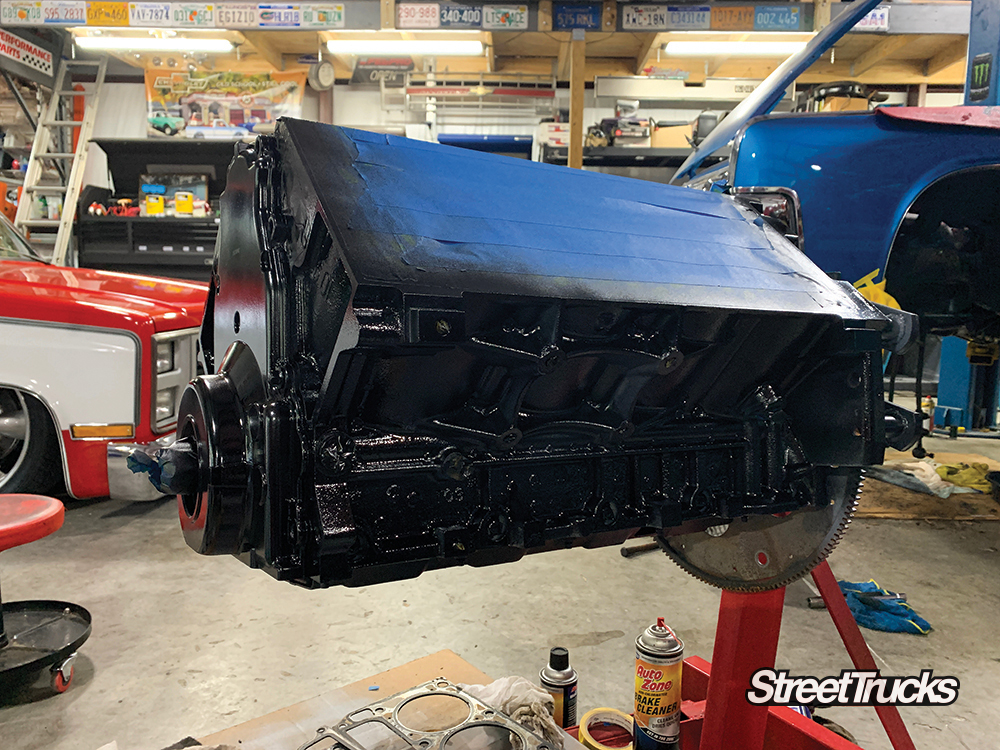
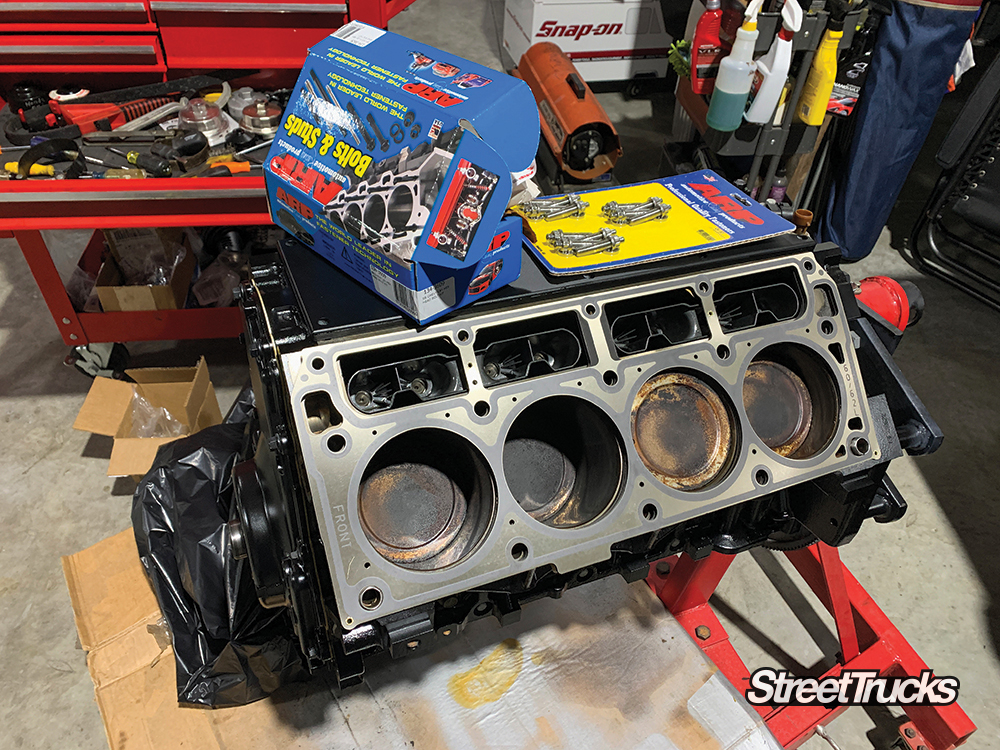
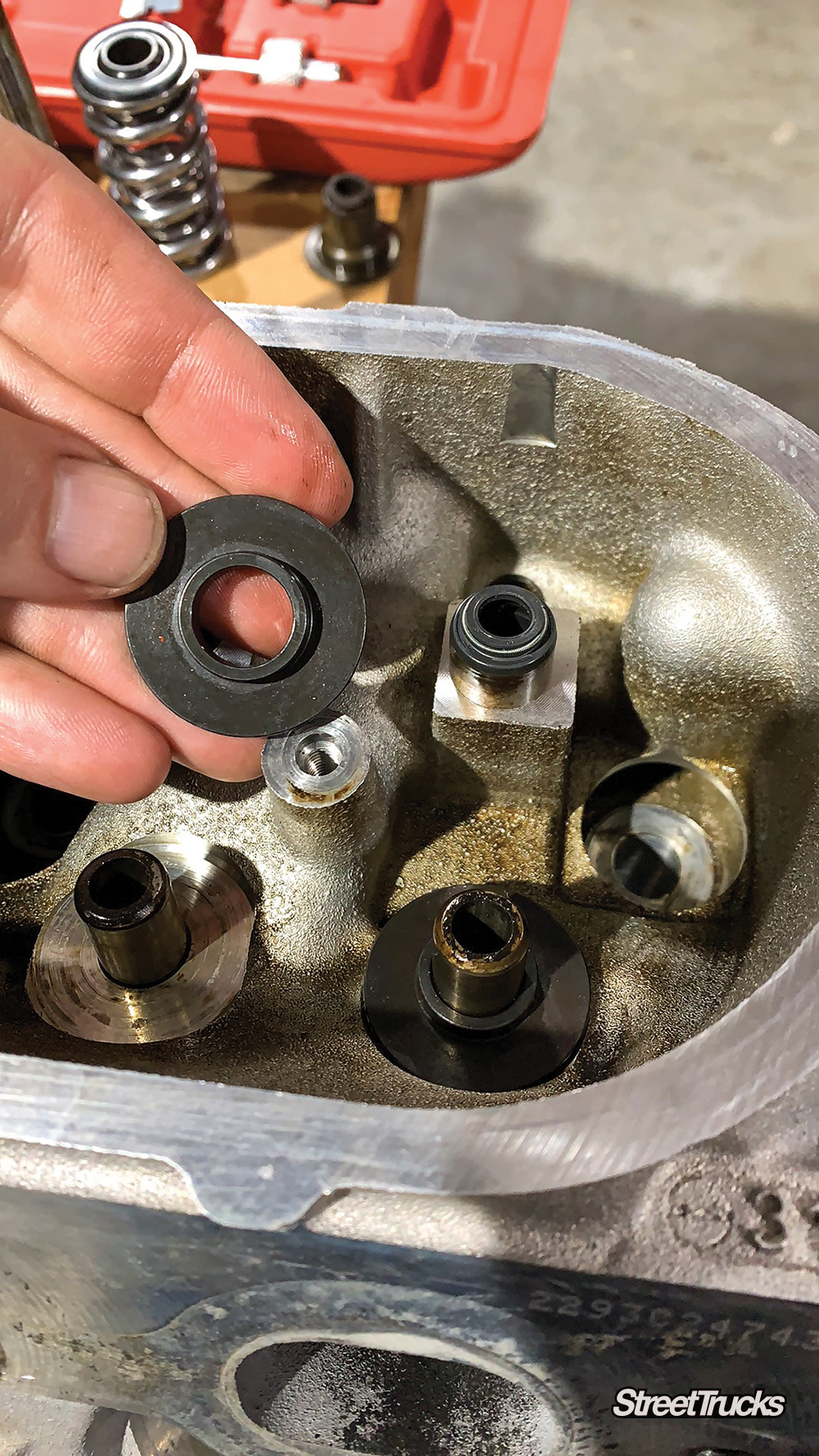
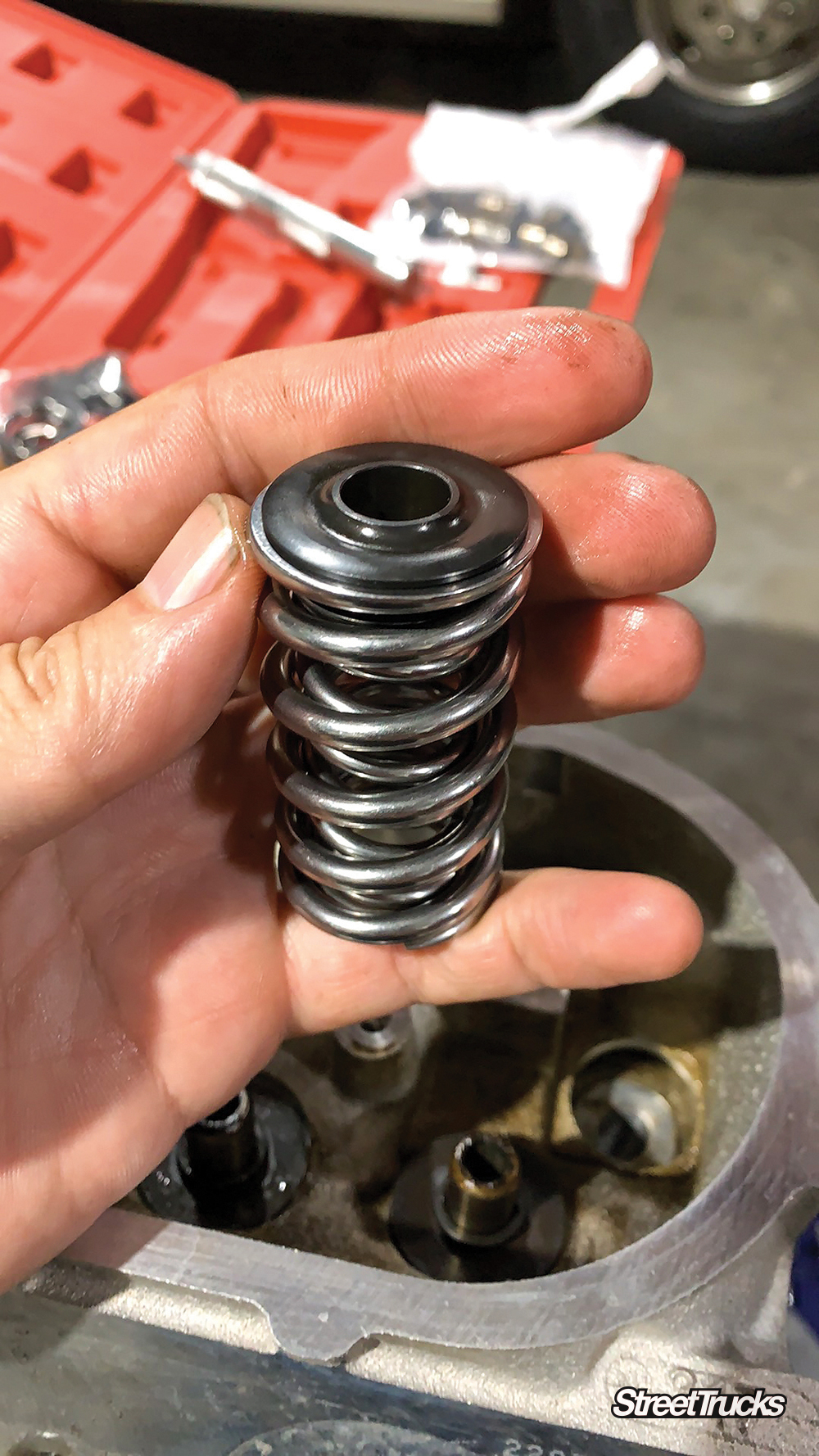
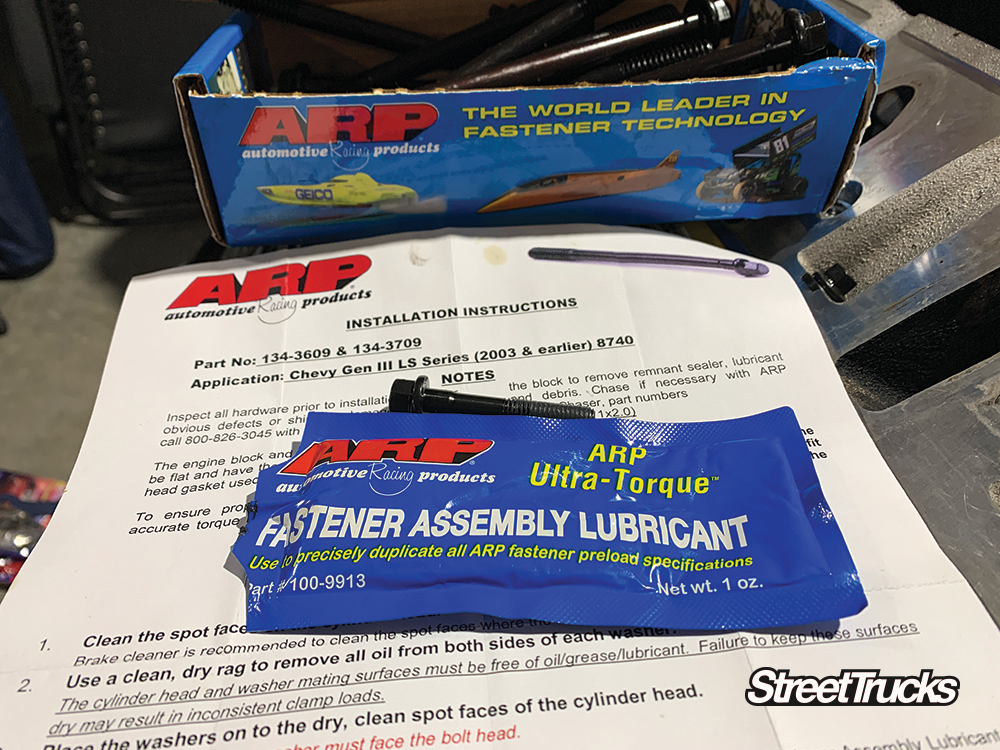
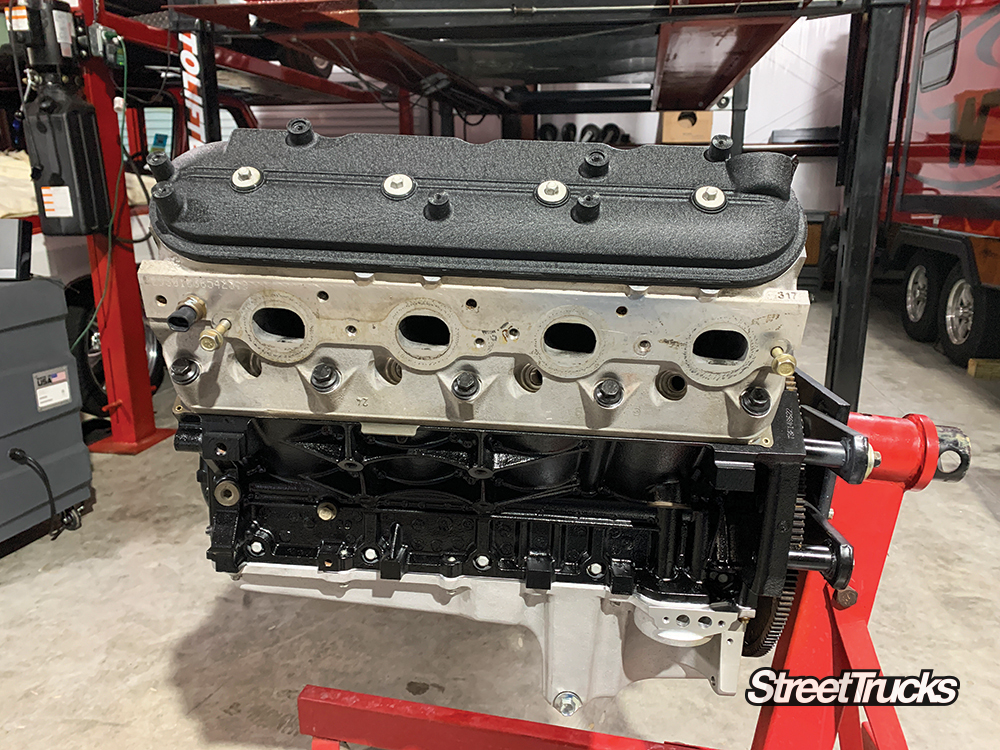
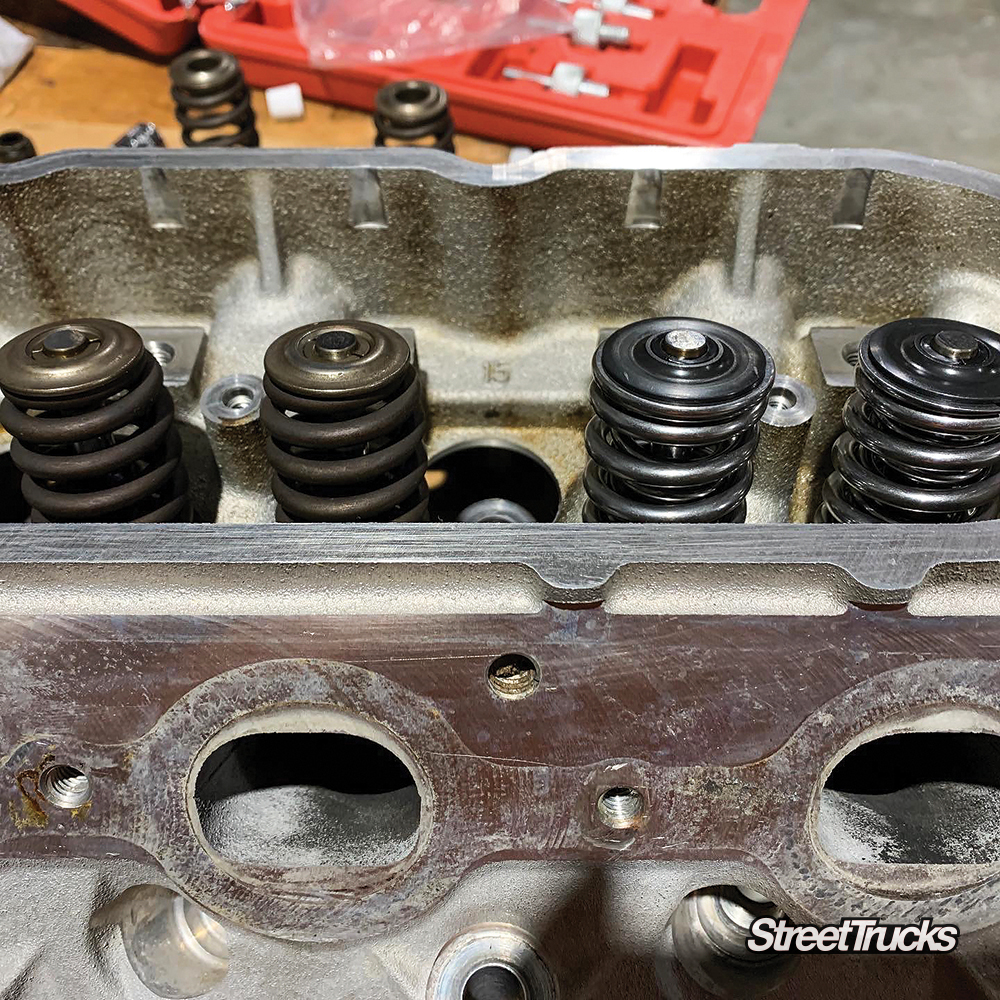
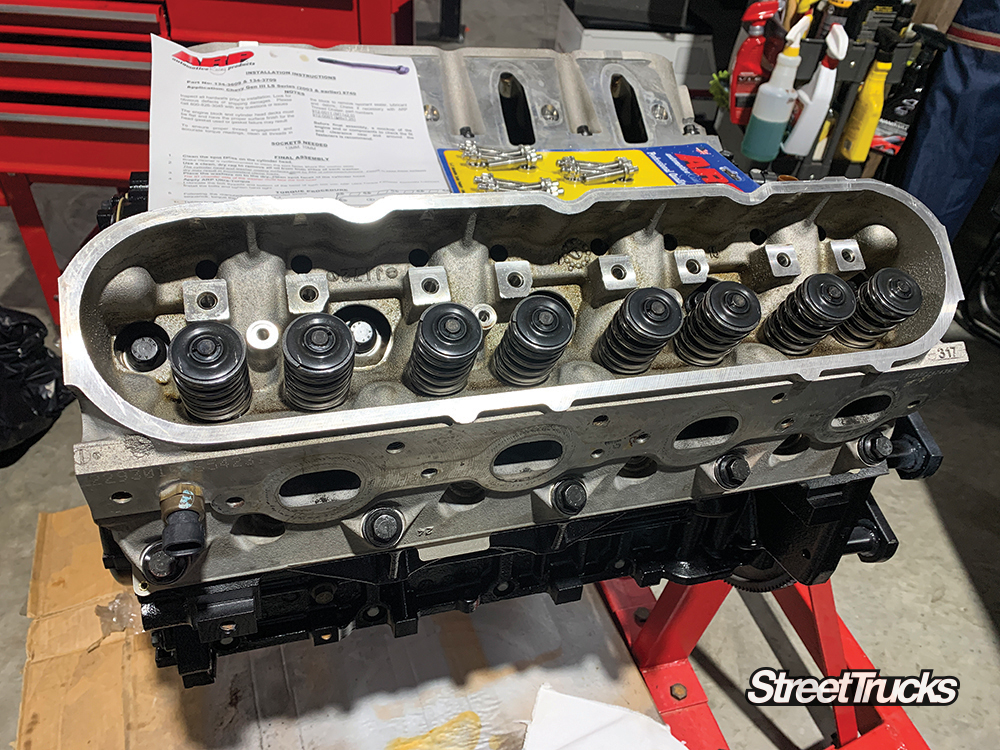
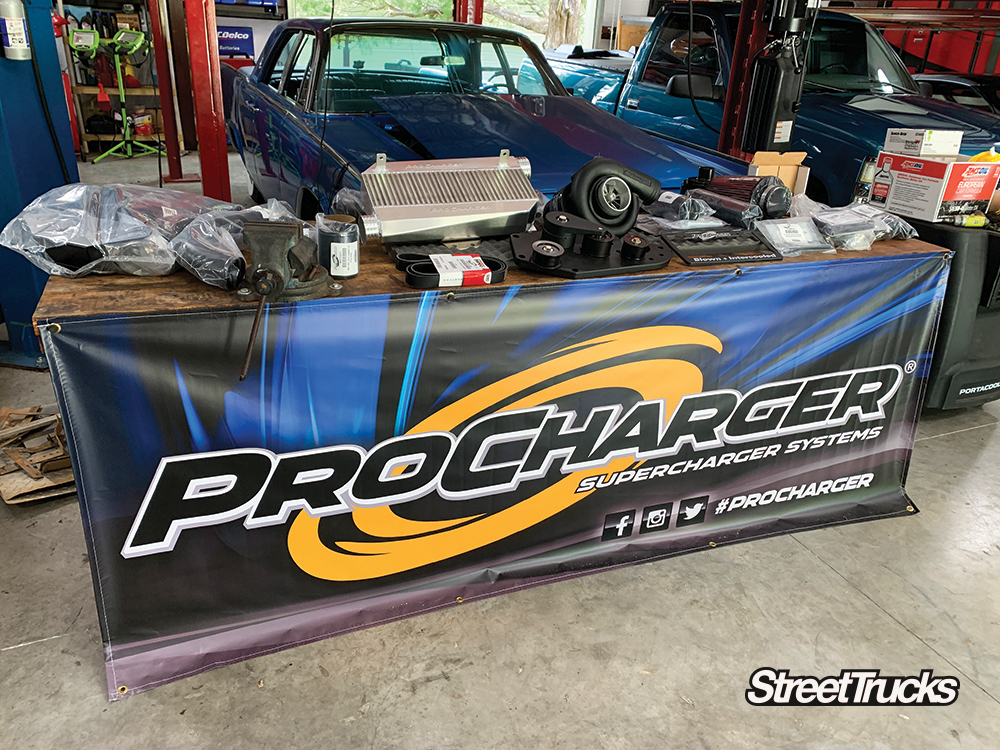

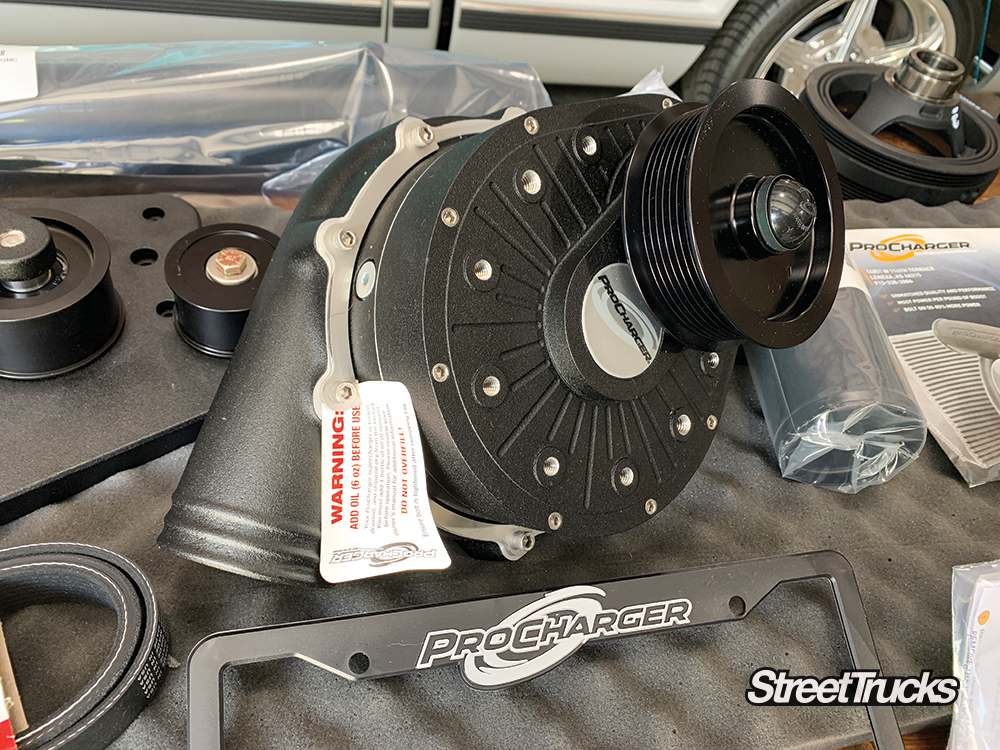
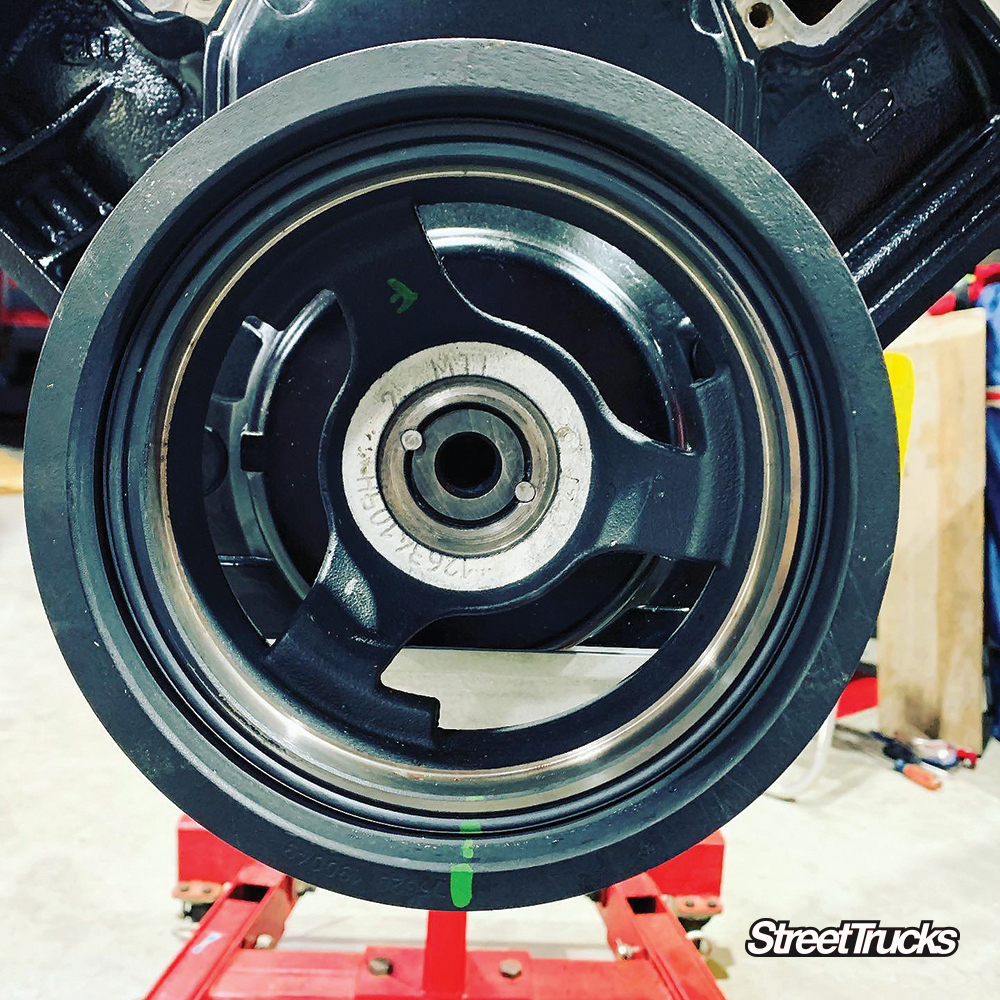
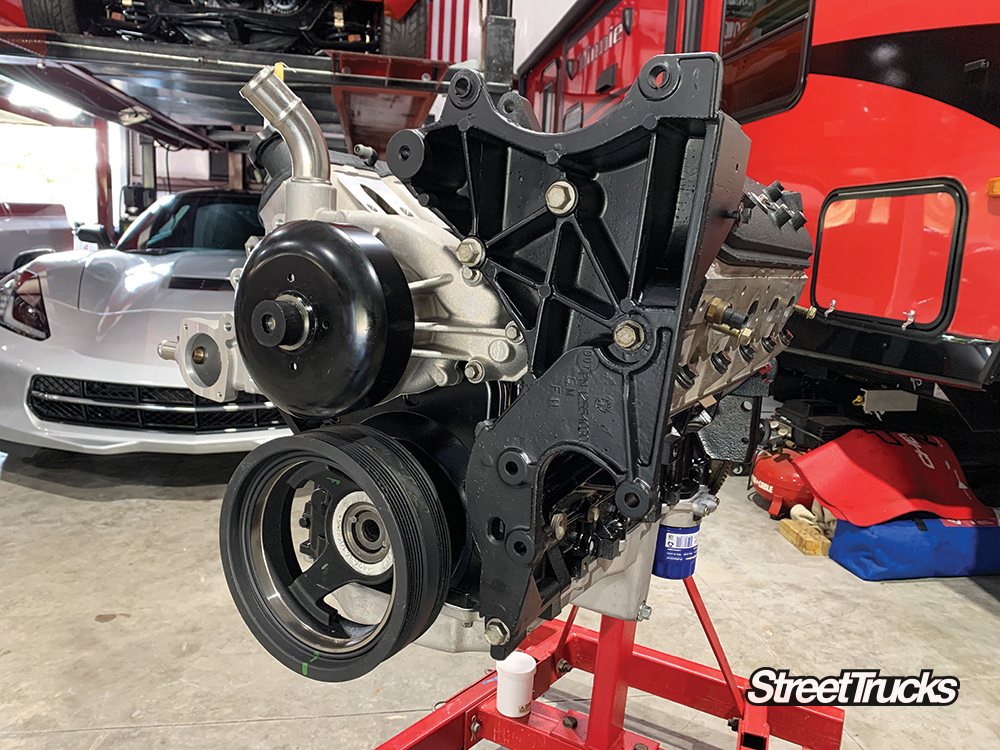
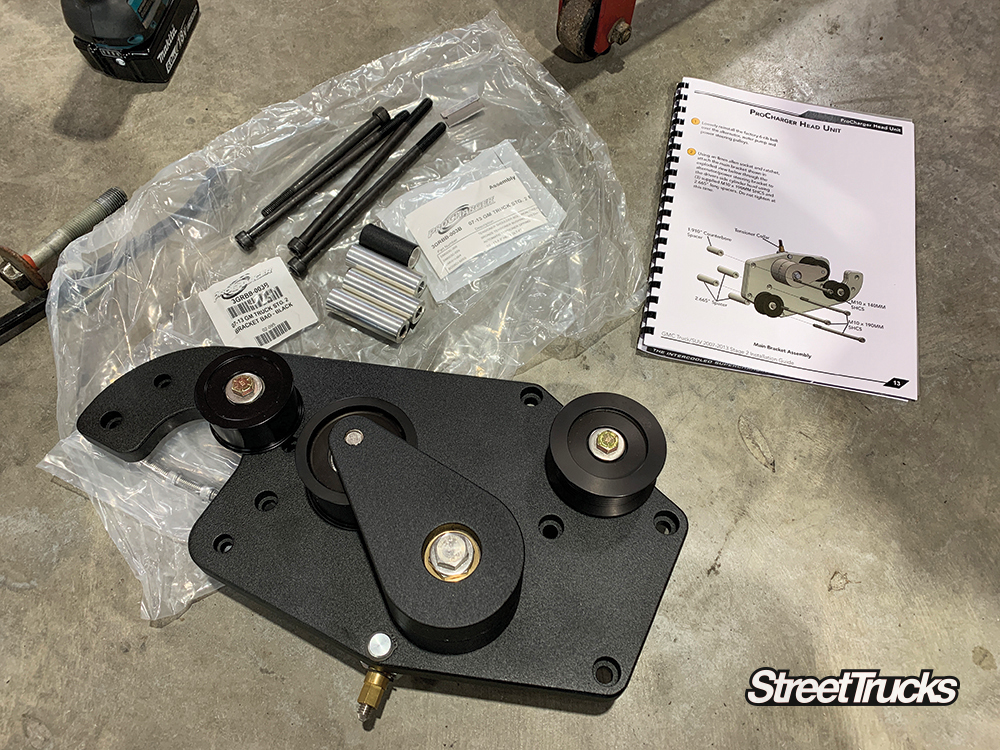
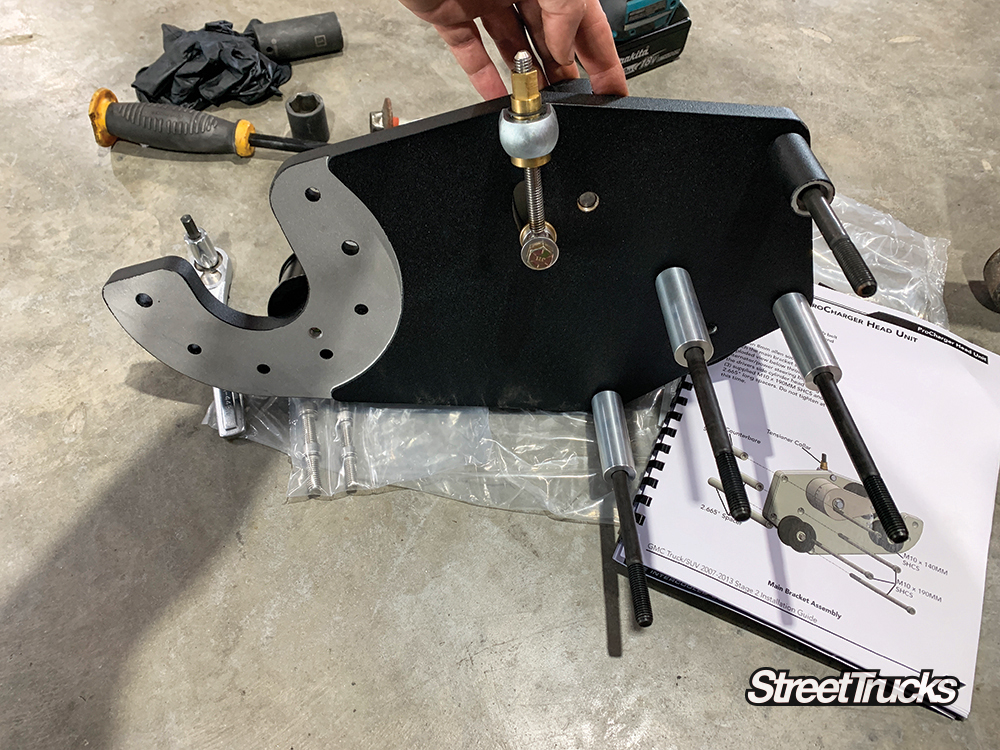

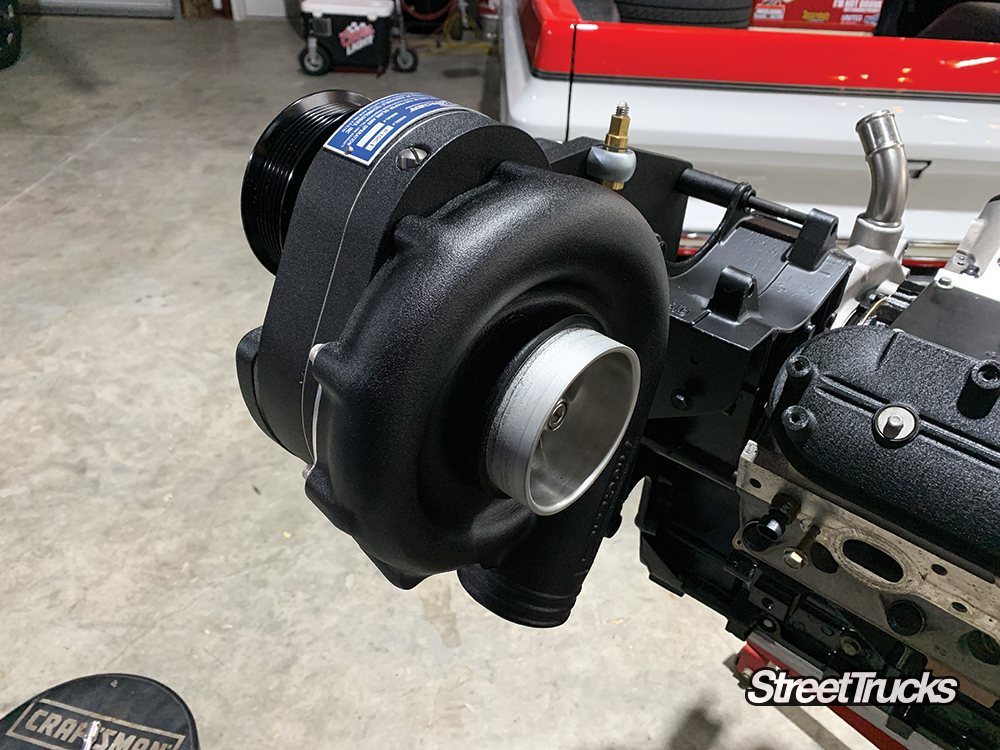
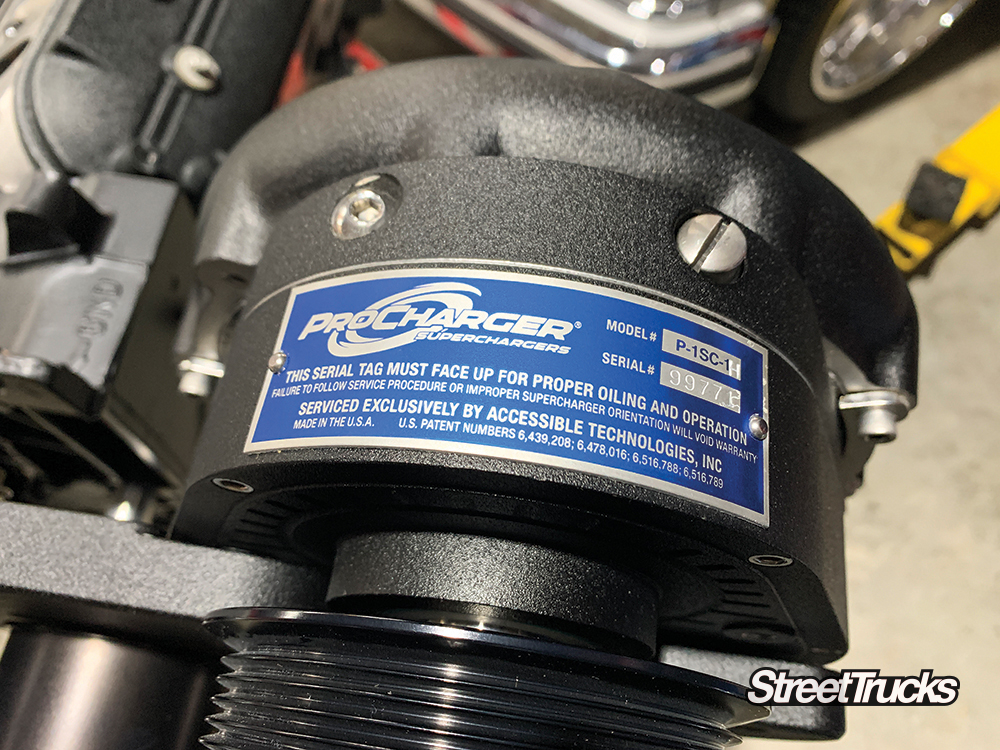
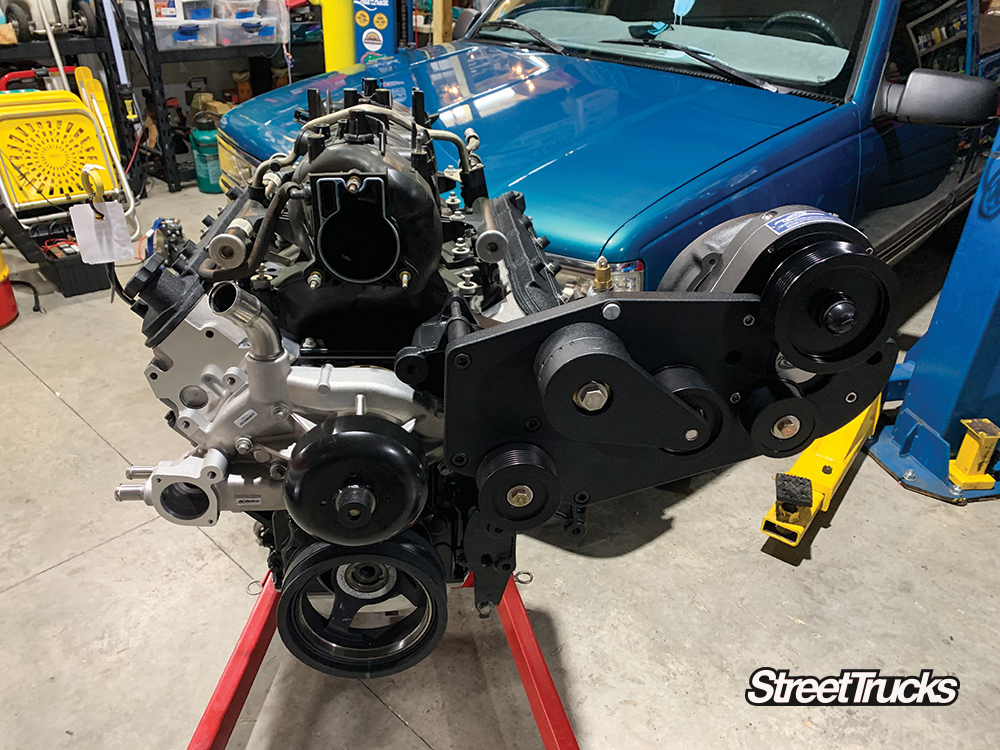
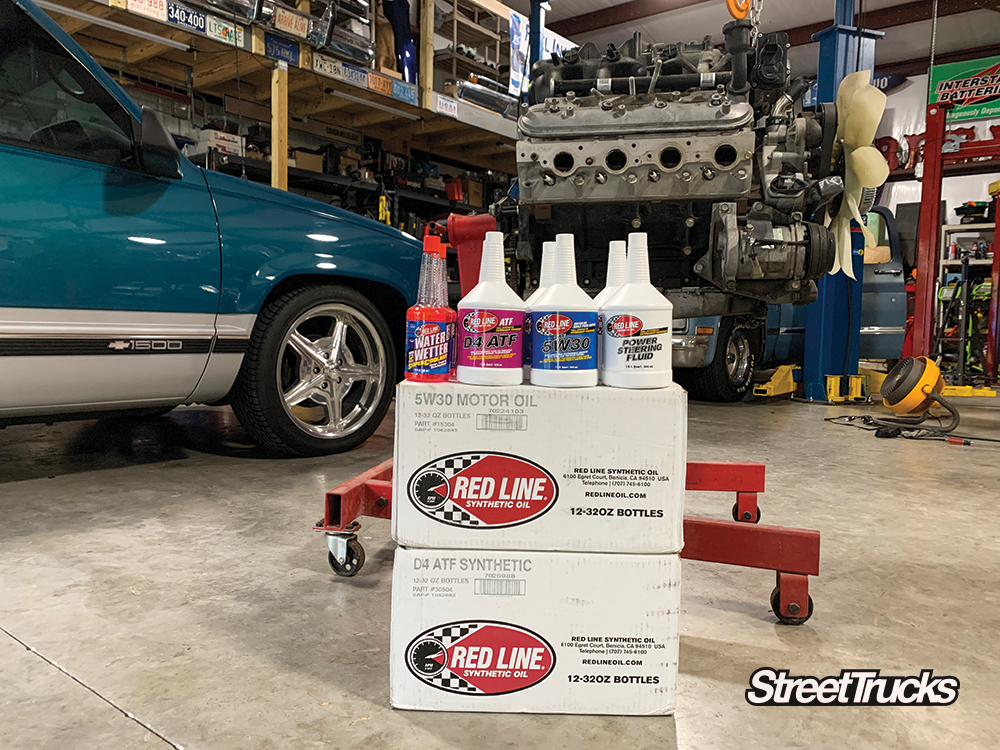
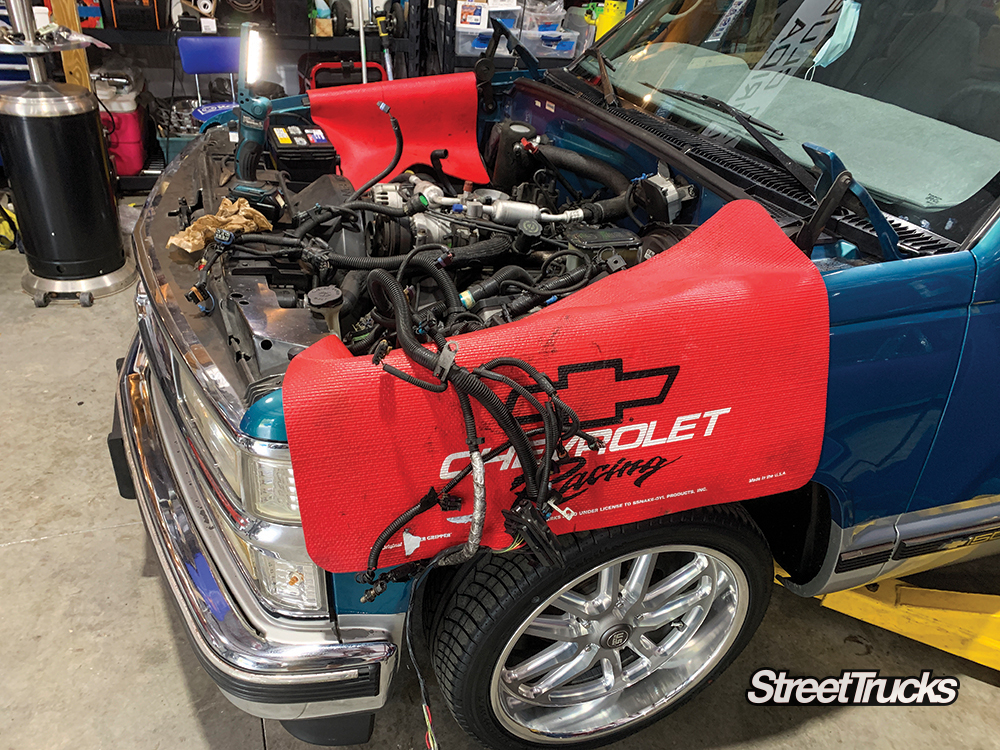
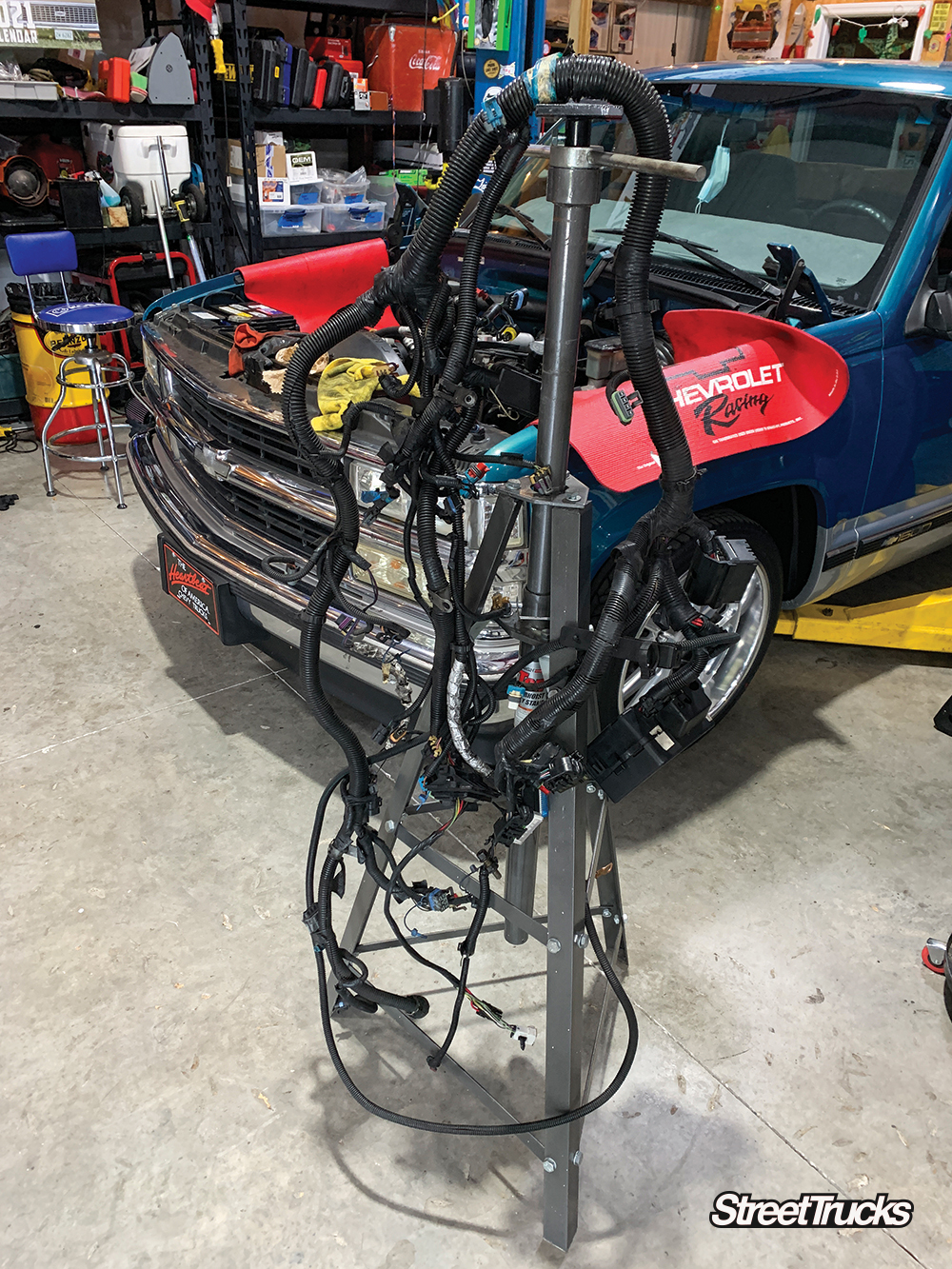
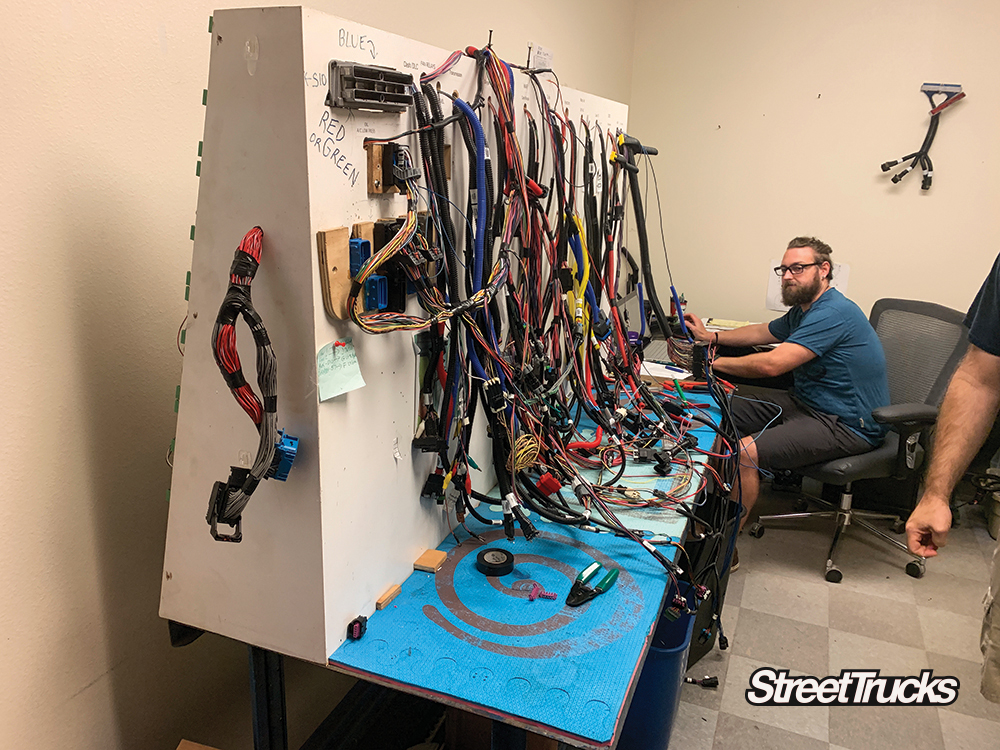
Current Performance Wiring manufactures custom engine & transmission harnesses for:
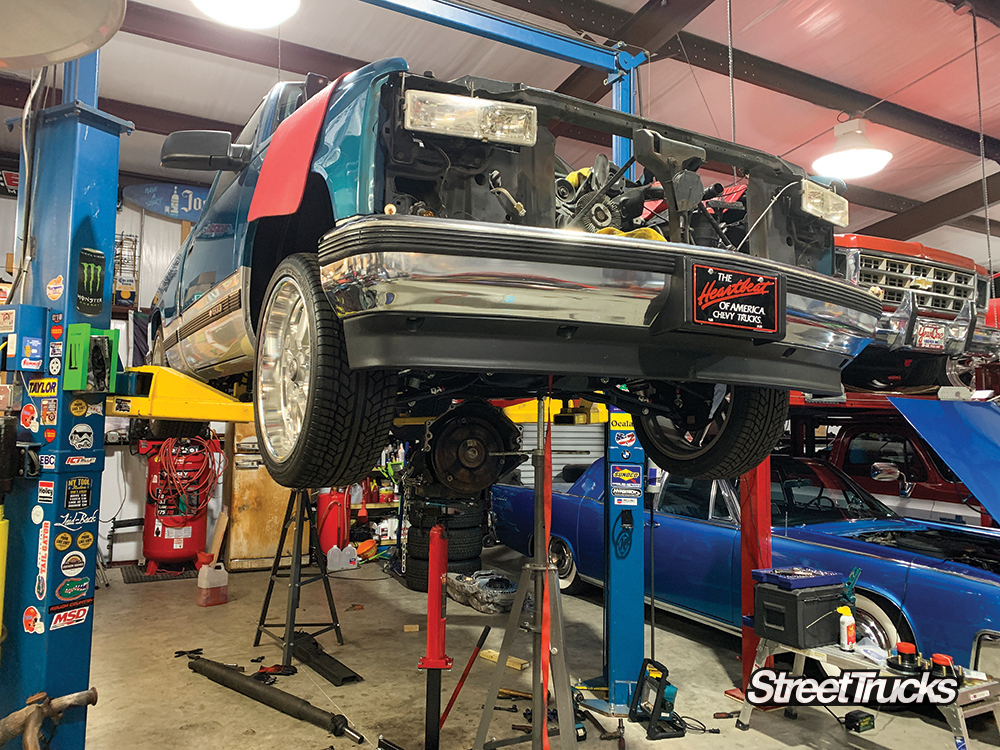
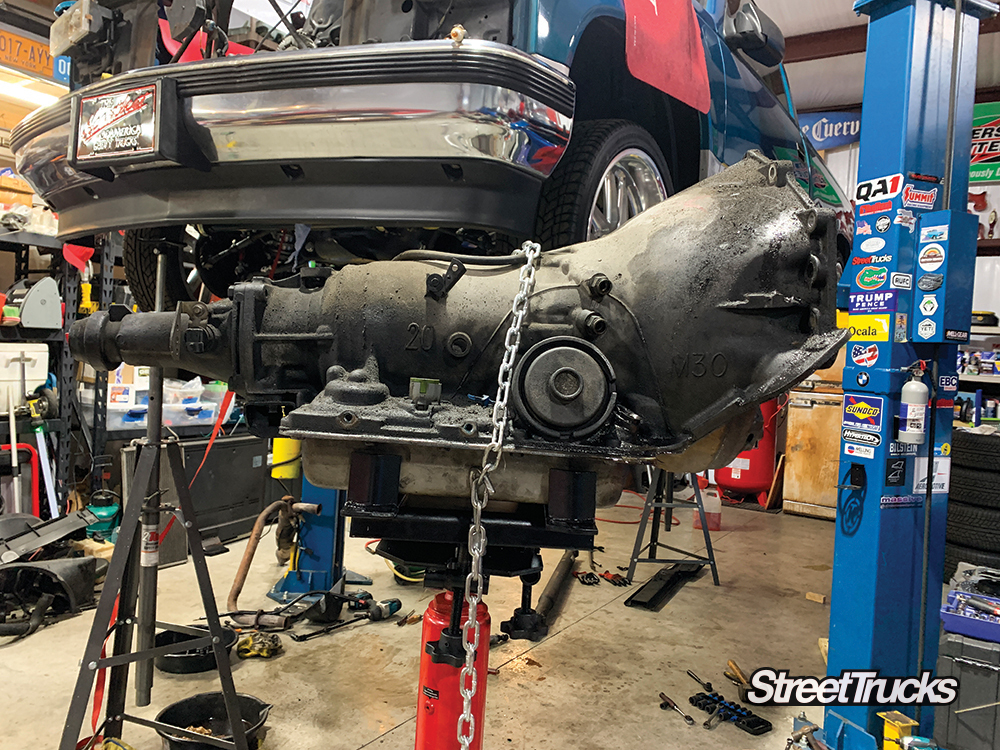
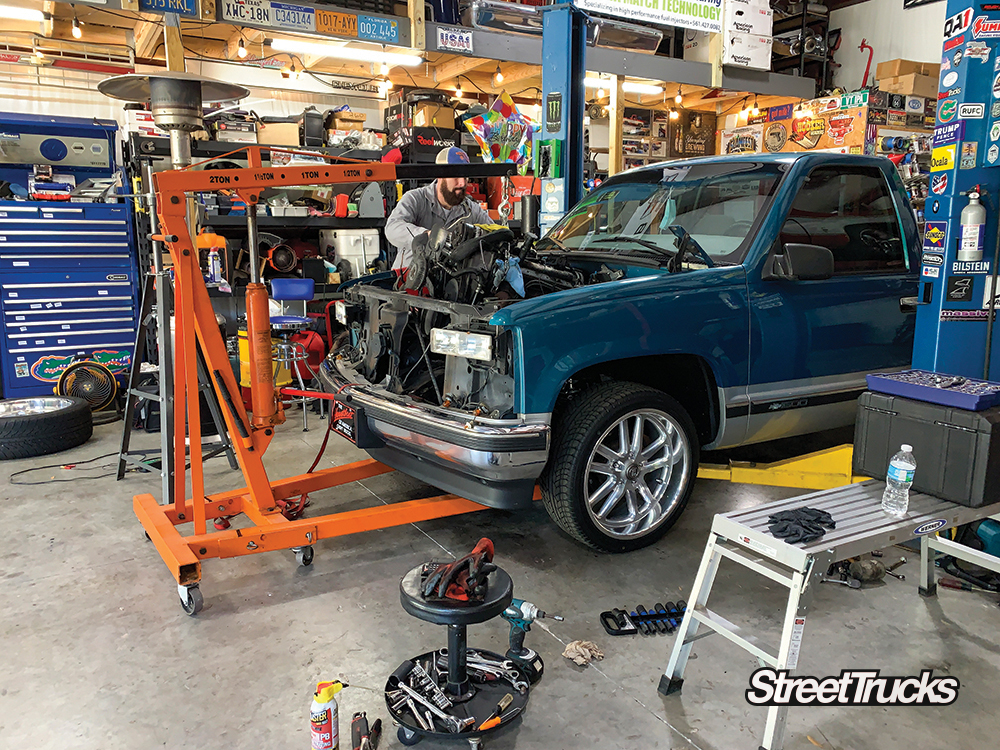
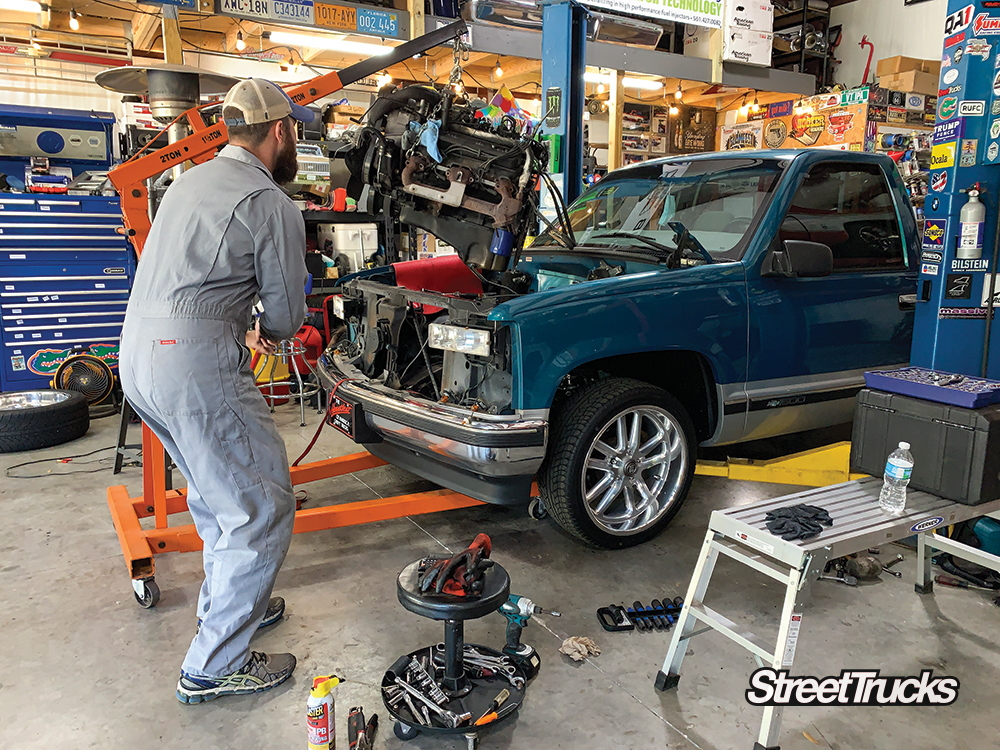
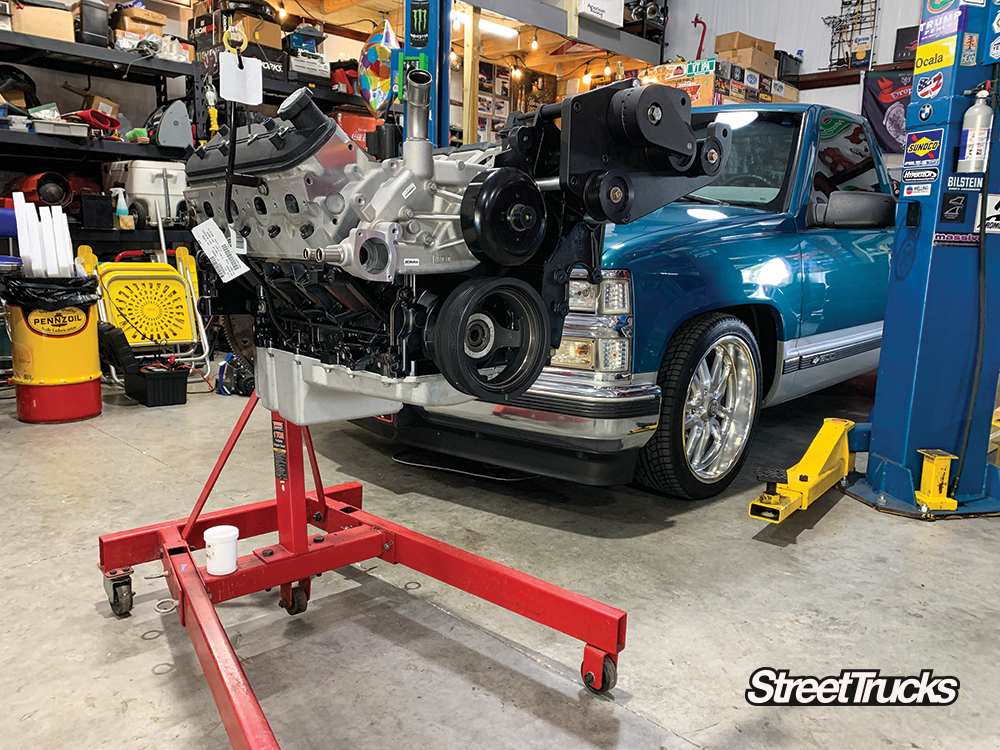
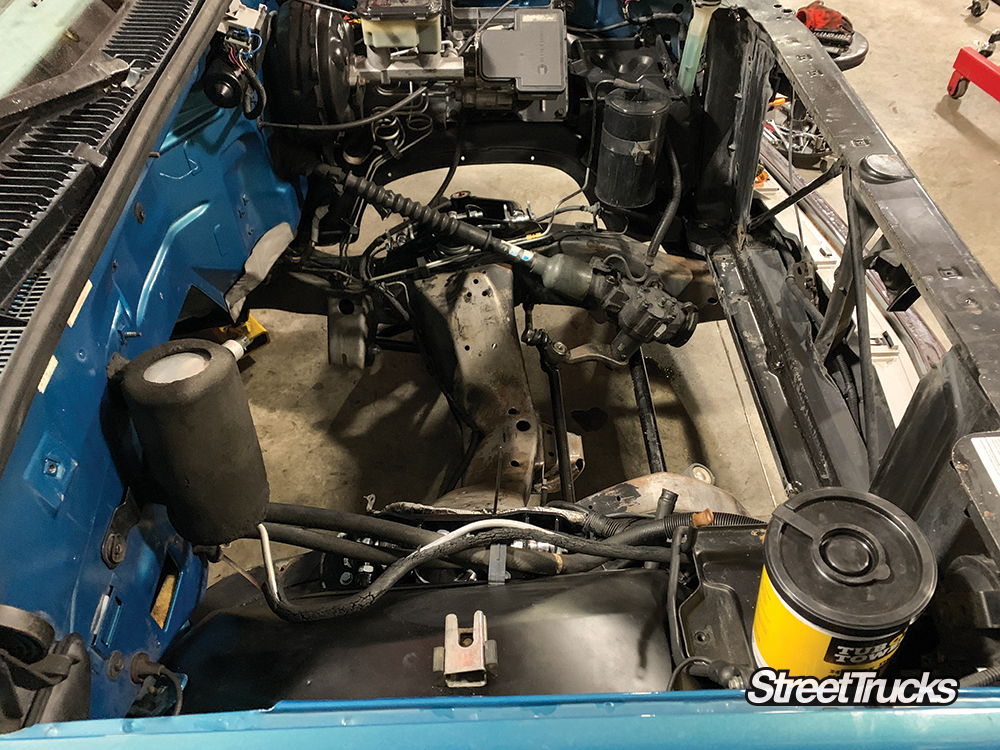
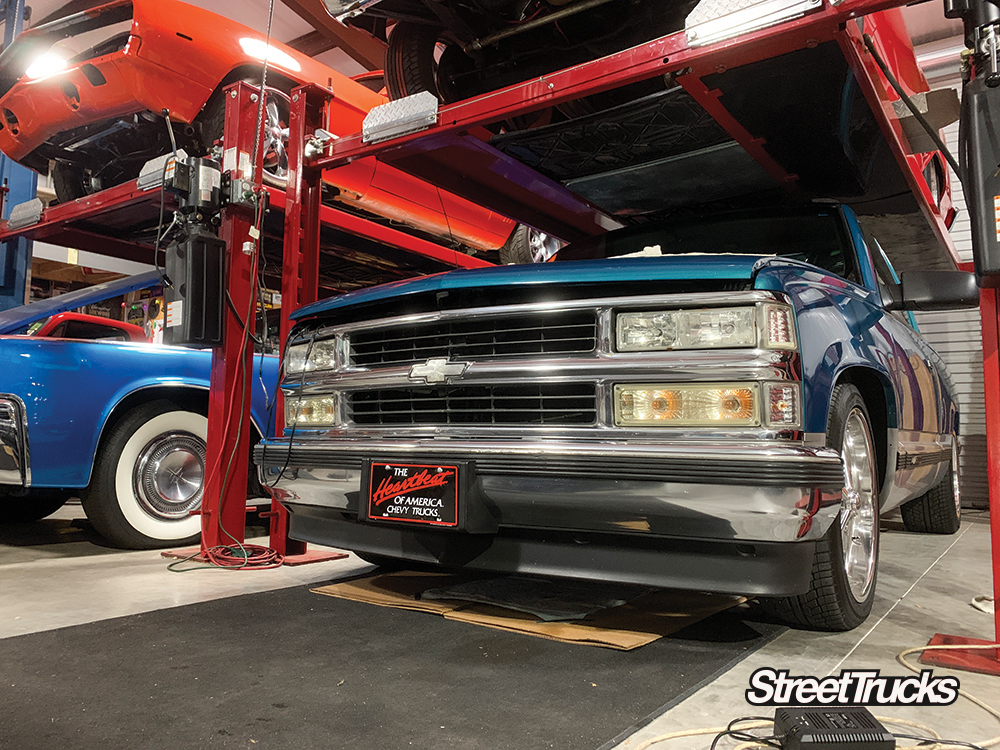
Check Out A Video: https://youtu.be/EPQQWeW8xFI
SourceS
ARP Bolts
800-826-3045
arp-bolts.com
Current Performance Wiring
727-844-7570
www.currentperformance.com
ProCharger Superchargers
913-338-2886
www.procharger.com
Red Line Oil
800-624-7958
www.redlineoil.com
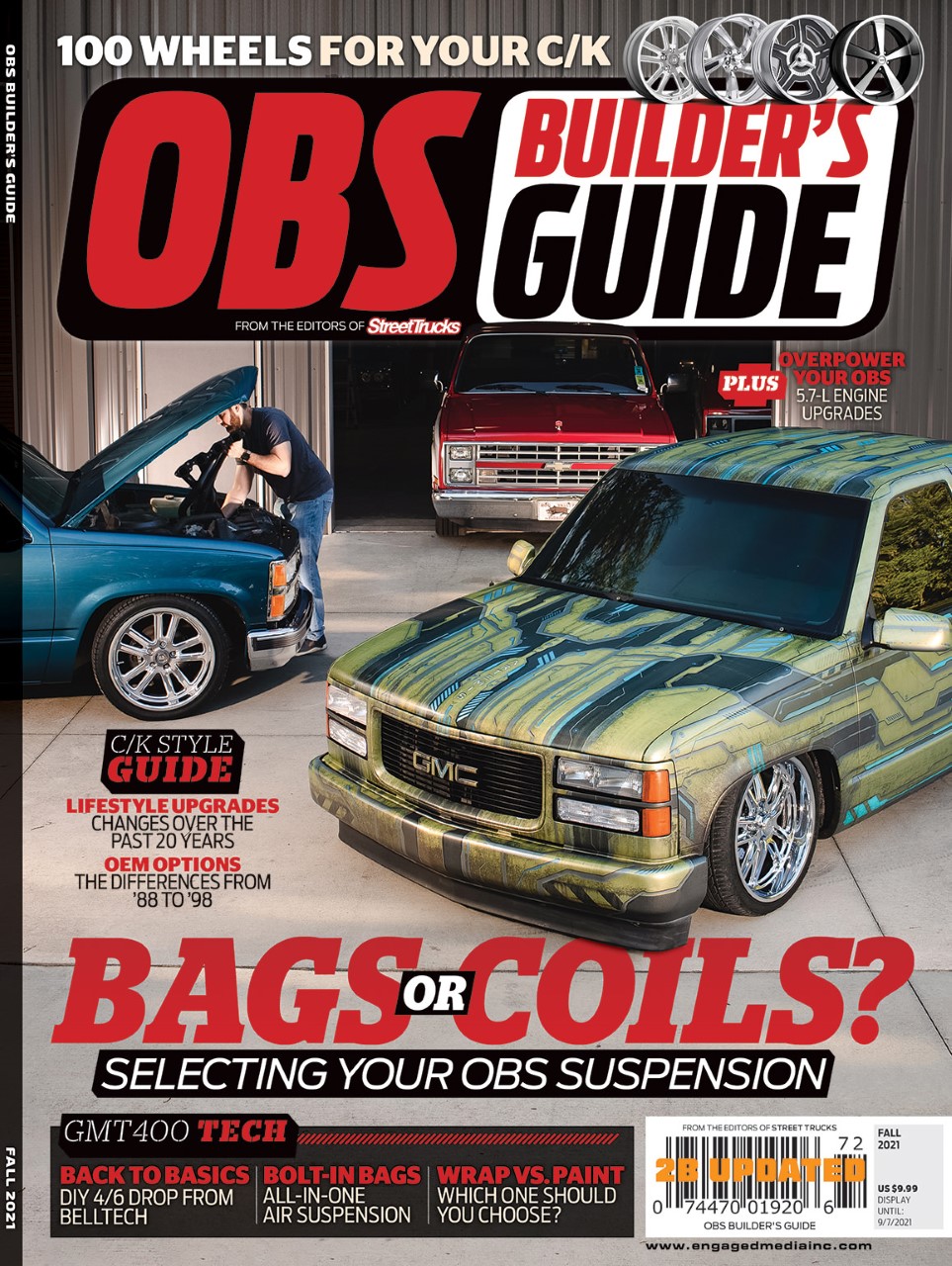
Premier issue number one of OBS Builder’s Guide was so successful, we’re going to do it again! From the editors of Street Trucks Magazine comes the all-composing guide to restoring and customizing one of the most popular body style trucks ever released. Chevrolet’s 88-98 Fullsize trucks and SUVs spawned a massive sub-culture of passionate enthusiasts, artists, and gearheads worldwide. With over 800,000 OBS (Old Body Style) trucks built and sold within the first year of production, it’s easy to see why this is one of America’s most beloved bodies. The OBS Builders Guide is here to document this trend-setting truck and bring you the best how-to tech, feature stories, manufacture spotlights, event coverage, and new product reveals that relate. In this book you will see things like: